
Home » Destinations » Europe » Germany » 5-14 Day Germany Itinerary: A Guide For Planning Your Perfect Germany Trip

5-14 Day Germany Itinerary: A Guide For Planning Your Perfect Germany Trip
Links in this article may earn us a little money if you book/ order stuff. More here .
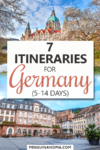
Plan Your Perfect Germany Itinerary with These Detailed Templates!
If you’re looking to plan the perfect trip around Germany, you are in luck! We’re passionate about exploring Germany because it’s a great country – and because Lisa is German!
Jokes aside, we’ve been lucky enough (and have made it a point) to see lots of different parts of the country – from the sea in the north to the mountains in the south. That said, Germany can be a tough country to plan a route or road trip through because there is just so much to see and do!
So, whether you’re looking for the best week in Germany or a Germany itinerary that covers 5 days or 14 days – here’s our master guide with 7 detailed Germany itineraries by train and/or by car! We’ve got cities, attractions, hotels and accommodations, directions, and distances to help you plan the best Germany travel route for you!
We’ve got other great posts to help you plan a visit to Germany:
- Must-Knows + Tips for Travelling to Germany for the First Time
- Helpful German Phrases to Get You By
- Discover 30 Beautiful Places in Germany
- Our Top Hostels in Germany (Stayed at all of them)
Table of Contents
Things to Consider When Travelling in Germany
Before you plan your trip to Germany, there are some things that you should know and keep in mind to make planning easier and to have a successful trip. While you probably know that the currency used in Germany is the Euro, here are some other topics that you should consider as well.
Best Time of Year to Visit Germany
Germany is actually a destination that you can visit year round – but it is important to plan accordingly and go in with the right expectations. If you’re planning a trip during the spring – let’s say from March to May – you could absolutely have beautiful weather… but it may also just rain a lot.
Unfortunately, the weather can be quite difficult to predict. However, as long as you prepare for different possibilities, you can have a great time no matter the weather! Generally you can say that Germany has a moderate climate with cool and rainy winters (more snowy the farther south you get) and warm – but not overly hot – summers.
July and August are usually the warmest months with an average temperature around 20°C. However, there can be days where you have 30°C. Of course, this can vary depending on the exact location you’re travelling to. Often, it is colder by the north coast than it is farther south.
We would honestly recommend that you avoid visiting the country in July if you dislike crowds since this is when the majority of kids are on their summer break from school. As a result, some cities can get quite busy.
Typically, we would recommend travelling in May or June and then from the end of August until the end of September (or even the middle of October). However, there is also a great reason to plan a Germany trip during the winter because of the many beautiful Christmas markets that you could visit at that time of year!
Public Transportation in Germany
Public transportation in Germany is quite good, especially when compared to North America. Yes, sometimes us Germans like to complain about the “Deutsche Bahn” – the German train company – but at the same time we are also super glad that it exists and works well.
If you’re wondering: Yes, all the itineraries mentioned below can absolutely be done if you want to take the train (minus the odd day trip to a castle here and there). If you want to check a train connection and/or buy tickets in advance you can do so on the DB Website . Alternatively, you can also download the DB app to your phone. We both have it and use it regularly.
As an alternative to the train, you can sometimes also use the bus to get from one city/town to another. Since 2013 (before this date it wasn’t allowed), long distance buses have established their presence in more and more cities and are now a popular way to get around for people who are more conscious of their money.
Unfortunately long distance train tickets can sometimes get quite expensive if you don’t book in advance – so the bus can be a good alternative in some cases.
The most popular long distance bus company in Germany is probably Flixbus. We have also used them multiple times to get between cities. If you want to look at the schedule and/or book a ticket, you can do so on their website .
In addition to the trains and long distance buses, the public transport within the cities is also usually pretty good – especially in bigger centres. Many of the cities – or transport associations – have their own transport apps. So, if you know where you are going and plan on using the local buses, trams, metros, etc. then downloading the local transport app would be a great idea!
Car Rental in Germany
If you want to rent a car and plan a Germany road trip, then that is certainly an option as well. Driving in Germany is generally pretty safe and people are not usually as reckless as in some countries in the south of Europe. However, it can get a little crazy in bigger cities like Berlin or Munich – especially if you are not used to driving in bigger centres.
In Germany, you drive on the right side as it is done in the United States, Canada, and many other countries as well. You have probably heard of the “Autobahn” – that’s simply the German name for our highway system. If you follow any of these itineraries, you’ll drive on many different highways.
While it is true that there is no speed limit in some parts of the Autobahn, there are lots of sections where there are actually speed limits in place. You can usually find limits imposed at/around construction zones along the way – so don’t think you can just speed all the time.
And PLEASE don’t drive on the Autobahn like you would on a highway in the United States or Canada – pass on the left and then get back over . If you’re going slower than other cars, there’s no need for you to be in the left (or even in the middle) lane. You can probably tell that this is something that Lisa complains about in Canada frequently, haha.
Since Germany is such a popular destination, there are lots of different rental car agencies to choose from. You can compare prices from different agencies for the duration of your trip with this handy rental car comparison tool . Please make sure to read the fine print so you know whether you need extra insurance, etc.
Also please be aware that many people in Germany drive cars with a stick shift. Rental cars with automatic transmissions exist, but the numbers available are usually lower and these cars might be slightly more expensive.
We’d also recommend that you reserve an automatic car well in advance if you need one – just so you can make sure that one is available for you. It probably wouldn’t be fun learning how to drive a stick shift while on a road trip in a foreign country.
Travel Insurance for Germany
If you’re planning a trip to Germany and you’re not from another EU country, then you should make sure to get travel insurance for the duration of your trip!
While you’ll probably be fine, accidents do happen and it could get really expensive if you’re not covered. That’s why we always travel with insurance.
If you live in another EU country and have health insurance there, you can get the blue health insurance card with which you are covered in other EU countries in emergency cases, as well.
If you don’t have that option – or are from outside of Europe – we recommend that you get private travel insurance.
Germany Itinerary 5 Days
If you only have a few days to travel through Germany, then have a look below at the two 5-day itineraries we have created. For these itineraries, we have assumed that you are not already in the country so they all start and end in bigger cities.
This should help make it easier for you to fly in/out of an airport with good connections if you are coming from overseas.
Depending on your preferences, you can choose between a trip through the northern part of Germany or a trip through the south of the country (mainly Bavaria). If you are interested in bigger cities and/or harbours, then we’d recommend the northern route.
In case you prefer half-timbered houses and beautiful old towns, then you should have a look at the southern route instead. Of course, you can always modify any itinerary to better suit your interests!
Germany Itinerary 5 Days – North
This 5-day Germany itinerary through the northern part of the country can certainly be considered a “sampler-type” of itinerary since you get to see the two biggest cities in the country – but not much more than that.
That’s completely fine though – you can only see so much in five days anyway. If you are interested in bigger cities and don’t have more than a few days, then this itinerary would be great for you!
The total driving time for this itinerary would be about 5 hours 30 minutes with a total distance of approx. 520 km. Of course, this can change depending on the route you are taking and the time of day you are travelling. Commuter traffic could add quite a bit of travel time to your journey.
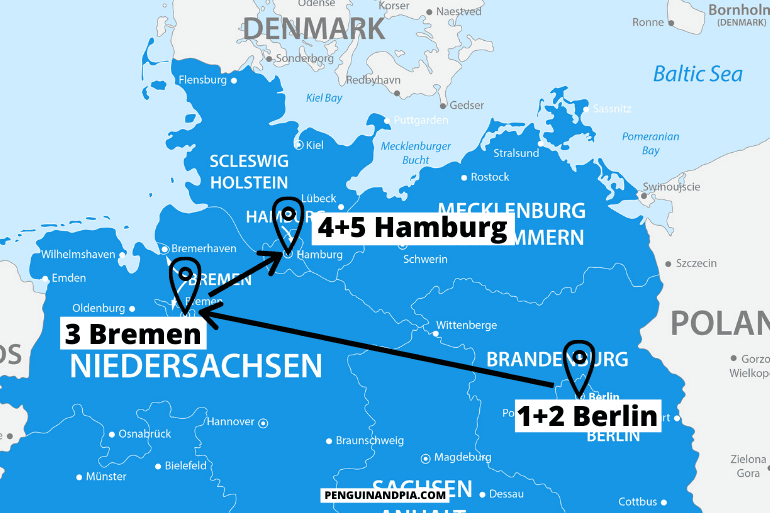
Day 1+2: Berlin Day 3: Bremen Day 4+5: Hamburg
Day 1+2: Berlin
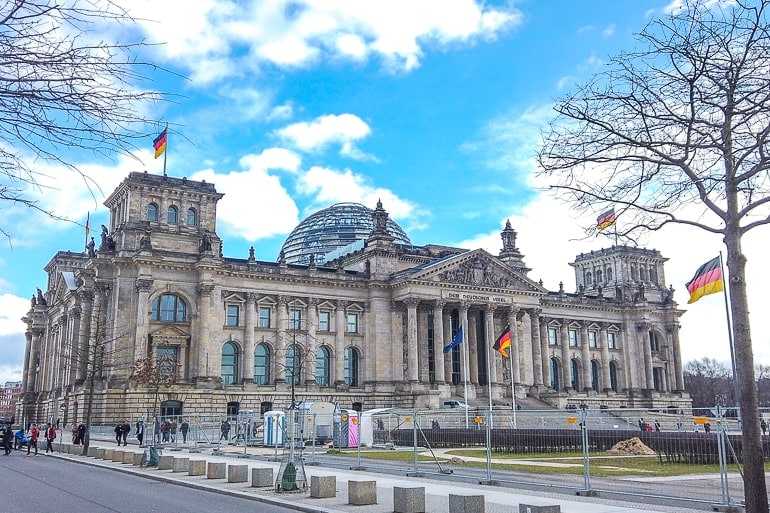
Berlin is a great place to start your adventure since it is the German capital, has multiple airports close by, and has really good train connections.
Since Berlin is such a popular tourist and business city, the car rental industry is well established and there are many different rental agencies to choose from.
— Compare prices from rental car companies in Berlin here
However, since you are only visiting bigger cities on this relatively short itinerary, we believe that a rental car is probably not necessary. Instead, for this trip, it might make more sense to take the train.
Since Berlin is such a big city with lots of things to do, it is worth it to spend (at least) two days in the city. So, remember to book your accommodation in Berlin for two nights .
Accommodation in Berlin : Berlin is a massive sprawling city with loads of different areas to stay and different accommodation options. You can check here for accommodations and hotels in Berlin .
If you are travelling to Berlin with a car, you’ll need a place to park. Check out Park Plaza Wallstreet Berlin Mitte for a stay right in the middle of the city close to Museum Island and other top attractions. It also has a tasty breakfast. Park Plaza has free parking on the street near the hotel (if available) or else it’s for a fee (but a reasonable price considering you’re in the middle).
If you are arriving into Berlin by train, you can check out NH Collection Berlin Mitte am Checkpoint Charlie . Located in the city centre right near the top sight “Checkpoint Charlie”, this popular hotel is in the heart of the action/attractions and is easy to get to via modes of public transit (metro – called the “U” for U-bahn).
If you are searching for a hostel/hotel, check out PLUS Berlin . Located over near the East Side Gallery (the piece of the Berlin wall with the artwork on it), Eric stayed here and really liked it! It’s also very easy to get to using public transit and is close to other areas to go out, etc.
Must-see Attractions in Berlin:
- Brandenburg Gate
- East Side Gallery (Berlin Wall)
We have also written a whole article about classic tourist attractions in Berlin in case you’d like some more inspiration. If you’re looking for some tips on how you could spend a day in Berlin, have a look at our One Day in Berlin Guide .
Day 3: Bremen
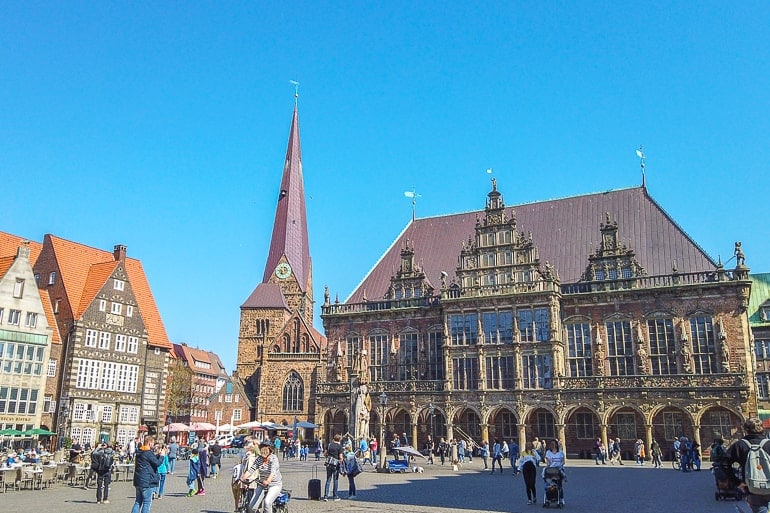
On the third day of your 5 days in Germany, you’ll head for Bremen. We’d recommend that you do the drive/train ride in the morning so you have enough time to explore the city once you get there.
Bremen is a hanseatic city with a nice old town – the market square with the town hall and the cathedral is especially popular. In German-speaking countries, the city is also known for a tale called the “Town Musicians of Bremen” by the Brothers Grimm. You’ll come across the animals of the tale (donkey, dog, cat, and rooster) many times as you stroll through the city.
The drive from Berlin to Bremen will take you approximately 4 hrs 10 min by car , but only around 3 hrs by train . If you take the train, try to book in advance if you can as this will usually save you some money.
Accommodation in Bremen: Bremen is a popular city to explore and it’s also on the larger side so you’ll find plenty of accommodations to suit your needs. There are hotels in the city centre/old town which put you within walking distance of the river and top attractions. You can check here for accommodations and hotels in Bremen .
For a popular choice in the historic middle, you should check out the very popular Radisson Blu Hotel Bremen . Funny story – we know there’s underground parking because we parked there when we visited Bremen by car.
If you want to stay closer to the train station just outside the historic centre (but still very central), check out the Dorint City-Hotel Bremen . This lovely and also very popular hotel is close to the pretty Windmill and flower gardens and has water views just outside the old city walls.
Must-see Attractions in Bremen:
- Marktplatz with Town Hall and Cathedral
- Böttcherstraße
- Schnoorviertel
If you want some more tips for Bremen, have a look at our detailed Things to do in Bremen Guide .
Day 4+5: Hamburg
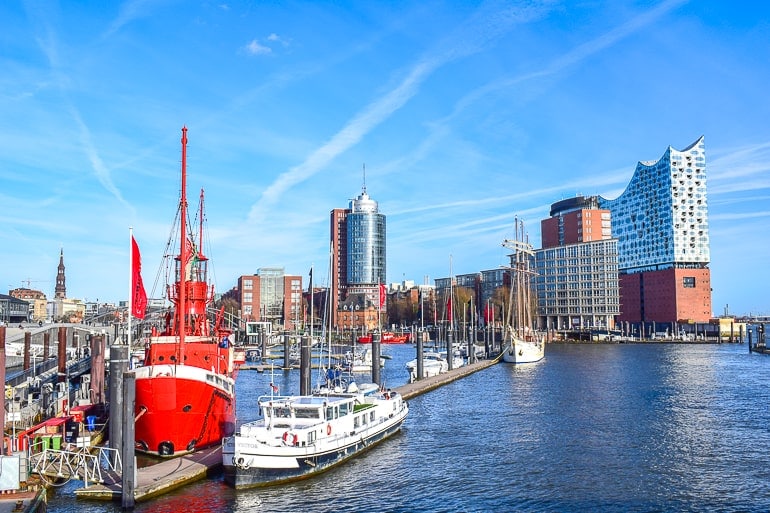
Hamburg is the second-biggest German city and the last stop on this short itinerary. We have been to Hamburg numerous times now and it is actually one of our favourite bigger German cities. You’ll find that the atmosphere of the city is very different than in Berlin. Not necessarily better or worse – just different.
Interesting (and slightly irrelevant) fact: The cities you visit on this itinerary are the three city states that exist in Germany in addition to the 13 area states such as Bavaria, Nordrhine-Westphalia etc.
The drive from Bremen to Hamburg is actually pretty simple and should only take around 1 hour 30 minutes by car and just around 1 hour if you take an ICE (fast train) . The train connection between these two cities is great with trains running pretty frequently. That should make it quite easy to find a train connection that works for your schedule.
Accommodation in Hamburg : Hamburg is popular city with loads of different accommodations and areas to stay in. You can check here for accommodations and hotels in Hamburg .
If you are travelling to Hamburg with a car, you might want to check out the Mövenpick Hotel Hamburg . Located in an old water tower, this unique hotel has a number of cool features with stunning views and parking onsite. It’s very popular – and also close to public transit for getting around!
If you are travelling to Hamburg by train, ARCOTEL Rubin Hamburg is a great hotel option for you to check out. Located in the cool area of St. Georg, you can easily walk to the hotel from the train station. It’s also walkable to other parts of the city centre and other attractions.
If you are looking for a hostel in Hamburg, you might want to check out Generator Hamburg as a reliable and popular hostel stay close to central station and the heart of the city.
If you want more details about accommodations in the city, we have a more detailed guide on where to stay in Hamburg .
Must-see Attractions in Hamburg:
- Speicherstadt
- Elbphilharmonie
- St. Pauli Piers
As one of our first ever articles on Penguin and Pia, we actually wrote a short Hamburg Guide . Have a look if you want some more Hamburg inspiration. Unfortunately it’s not nearly as detailed as our newer article – looks like it’s time for an update!
Germany Itinerary 5 Days – South
If you would like to explore the southern part of Germany instead of the north, then we would recommend the following 5 days Southern Germany itinerary. Compared to the northern itinerary, this trip includes stops in some smaller towns and cities. So, if you are interested in seeing some places of various sizes, beautiful old towns, and maybe a castle, then this might be a good itinerary for you.
The driving distance of this trip is just around 680 kilometres with a total driving time of approx. 7 hours . Depending on your mode of transportation, this can – of course – vary slightly.
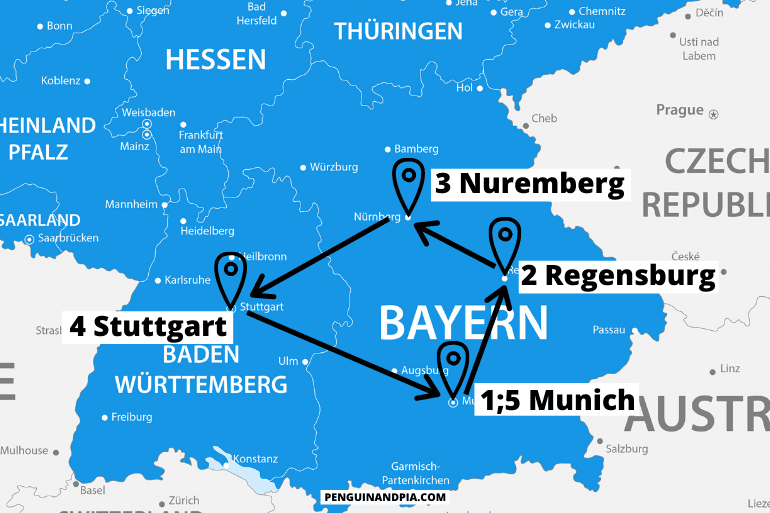
Day 1: Munich Day 2: Regensburg Day 3: Nuremberg Day 4: Stuttgart Day 5: Munich
Day 1: Munich

We are starting (and ending) this itinerary in Munich since it is an easy airport to fly in and out of from other parts of the world. If you are coming from another part of Europe by train, the connections to Munich are also usually pretty good.
Munich is the third-biggest German city and a very popular tourist destination. International travellers often mainly know the city because of the Oktoberfest which happens every year from the middle of September until October.
However, there is so much more to do and see in Munich than just the “Wiesn” (as the Oktoberfest is sometimes called as well). We are always happy to return to Munich because there is just so much to explore.
If you are thinking about renting a car for this itinerary, then you’ll be happy to know that it is quite easy to get a rental car in Munich. You can either pick it up directly at the airport after you land (if you arrive by plane) or in the city centre before you head to the next stop on this journey.
— Compare prices from rental car companies in Munich here
Accommodation in Munich: Munich is very large and popular city so finding a place to stay is no problem. The issue becomes that there are too many places to choose from! That said, you can check here for accommodations and hotels in Munich .
Specifically, we stayed at the very popular H2 Hotel München Olympiapark and we would highly recommend it for the value for money. The hotel has nice, cozy rooms, a super great breakfast buffet, and has a metro station steps from the front entrance to take you to the city centre.
There’s also onsite parking which makes this hotel perfect if you are travelling to Munich by car. The famous Olympic Park and BMW Museum are close by, too!
If you want to stay a little more in the city centre, then check out the Platzl Hotel Superior . This trendy hotel is in the heart of the Old Town just steps from top attractions like Marienplatz and the famous Hofbräuhaus. It’s also easy to get to the central train station either walking or on the metro.
If you are looking for more details on accommodations in this massive city, we wrote a detailed guide on where to stay in Munich .
Must-see Attractions in Munich:
- Marienplatz with New Town Hall
- Olympic Park
- Victuals Market
- English Garden
We also have a great little guide on how to spend one day in Munich if you want more details.
Day 2: Regensburg
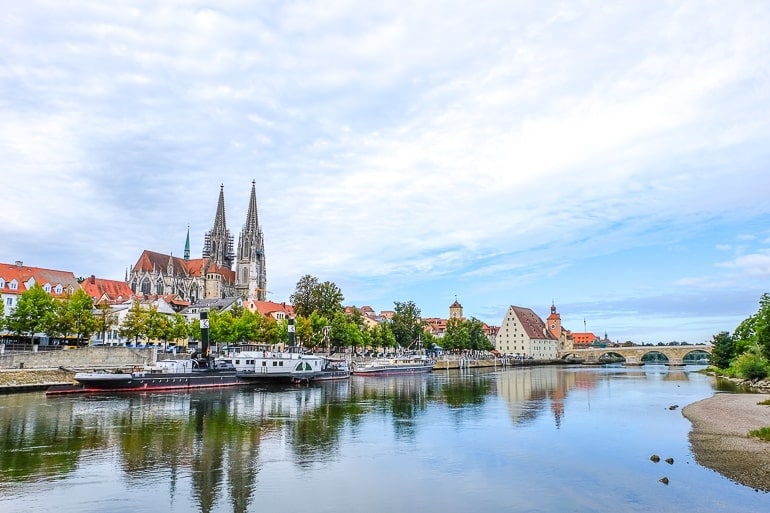
On day two of your trip you’ll be on your way to Regensburg, a small city in Bavaria on the Danube river. Due to its location by the river, Regensburg is a popular stop for people on a river cruise. So don’t be surprised if you see many different tour groups in the Old Town.
We recently spent a couple of days in Regensburg to get to know the city better and enjoyed our time there. One of the highlights is the Old Stone Bridge in the city centre which was built in the 12th century. We actually filmed a small YouTube video in Regensburg – which you can watch here if you are curious about what the city looks like.
The journey from Munich to Regensburg takes approximately 1 hr 20 minutes by car and around 1 hr 30 minutes by train . If you decide to travel by train – and especially if you are travelling with other people – we would recommend that travel with a “Bayernticket” (Bavaria Ticket). This ticket for train travel within the state of Bavaria usually allows you to save some money compared to regular prices.
Accommodation in Regensburg: If you are staying a night in Regensburg, you’ll have a number of great accommodations to choose from. To get started, you can check here for accommodations and hotels in Regensburg .
When we visited the city, we stayed at the Holiday Inn Express – Regensburg and really liked it. It’s a newer hotel and it really shows. The breakfast was excellent and there is even an onsite parking garage if you are travelling with a car. It’s not in the Old Town or near the river – but we did walk there one day and it only took about 15 minutes.
If you are travelling by train and you are on-foot, then check out the Altstadthotel Am Pach . This simple hotel is located right in the heart of the old town so you’re close to everything there is to see and do in Regensburg – including the beautiful Danube River. They also have breakfast included.
Must-see Attractions in Regensburg:
- Old Stone Bridge
- St Peter Cathedral
We are currently still working on our Regensburg Guide – but we’ll link it here once it is published.
Day 3: Nuremberg
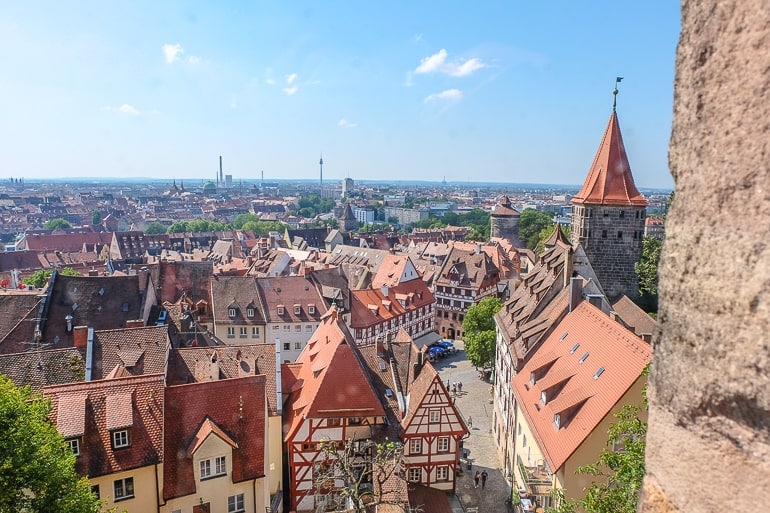
On the third day of this 5 day Southern Germany itinerary you’ll drive – or take the train – from Regensburg to Nuremberg. Nuremberg is a medium sized city in a part of Bavaria called Franconia. If you pay attention, you might notice that the dialect spoken here is quite different from that spoken in Munich and other places farther south.
Lisa actually grew up in this part of Germany so she has been to Nuremberg many, many times. Last year we also went to explore the city together and had a great time. Travellers from abroad mainly know the city for the Nuremberg Trials which took place there after World War II. You can certainly learn alot of history in this German city!
Since Nuremberg is quite close to Regensburg the drive won’t be long – giving you slightly more time to explore the city.
The journey takes approximately 1 hour 10 minutes by car and between 1-2 hours by train depending on which train you take (some stop more often than others). Once again, a regional ticket – such as the Bavaria Ticket – will probably save you some money if you travel with more people.
Accommodation in Nuremberg : Since Nuremberg is a very popular city to visit in Germany, there are many, many places to stay scattered throughout the city centre and around it. You can check here for accommodations and hotels in Nuremberg .
When we visited, we stayed at Five Reasons Hotel and Hostel and we really liked it. Located just inside the medieval city walls, we were really close to the train station and yet also steps from top attractions like the Germanisches Nationalmuseum. The place was bright and great value for the price which we liked a lot.
Close to Five Reasons, we had friends stay at the Sheraton Carlton Nuremberg and they loved it. We actually saw it with our own eyes – it had a pool with views of the city among other perks. There’s also a parking lot right across from the hotel if you’re coming to Nuremberg by car. It’s walking distance to the old centre and the central train station so best of all worlds!
Must-see Attractions in Nuremberg:
- Imperial Castle of Nuremberg (Kaiserburg)
- Documentation Center + Nazi Party Rally Grounds
- Albrecht Dürer’s House
As is the case with Regensburg, we are also still working on our article for Nuremberg. Once it’s live, we’ll link it here.
Day 4: Stuttgart
Stuttgart is the capital of the German state called Baden-Württemberg and the only place on this itinerary that is not located in Bavaria. The city is mainly known for being a “car hub” since both Mercedes-Benz and Porsche have their headquarters there. There are also museums dedicated to both car brands.
Stuttgart is a bit smaller than Munich but there is still a lot to see. In fact, one day won’t be enough to see the whole city – but it’ll allow you to get a good first impression. Next to the car museums, you could visit some of the many green spaces and/or old buildings that the city has to offer.
Driving from Nuremberg to Stuttgart by car will take you approximately 2 hours 15 minutes. If you have the time, you could even take a small detour and stop in Rothenburg ob der Tauber, known for its picturesque Old Town.
By train , the journey from Nuremberg to Stuttgart will take between 2 hrs 10 minutes and 2 hrs 30 minutes – depending on the type of train you are taking. Try to book your ticket in advance if possible as this can save you some money.
Accommodation in Stuttgart: There are many places to stay in Stuttgart – especially in the city centre. You can check here for accommodations and hotels in Stuttgart .
If you’re travelling to Stuttgart with a car, check out the Abalon Hotel ideal . Located very much in the city centre, this popular hotel has an underground parking garage and offers a good breakfast selection.
If you’re travelling to Stuttgart by train, you can check out the Pension am Heusteig . This guesthouse-style accommodation doesn’t have parking but offers a great breakfast and is a doable walk or metro ride from the train station. Funny enough, these two accommodations are very close to one another!
Must-see Attractions in Stuttgart:
- Schlossplatz
- Mercedes-Benz Museum
- Staatsgalerie Stuttgart
Day 5: Munich
On the last day of your trip you’ll make your way back to Munich since it is usually easier to leave Germany through the Munich airport than smaller airports in the surrounding area.
However, if you don’t have to get to an airport – and/or are taking the train home – you could also stay an extra night in Stuttgart if you wanted. Both cities are worth spending an extra few hours in – so you really just have to see what works best for you.
If you decide to get back to Munich, then the journey from Stuttgart to Munich will take approximately 2 hours 20 minutes by car and just slightly less (2 hrs 15 minutes) by train .
Accommodation in Munich : We already went over accommodations in Munich in Day 1 of this itinerary. So, you can head back up for the full details – but we would highly, highly recommend the H2 Hotel München Olympiapark as great value for money with great breakfast, parking, and a metro stop outside the front door.
Don’t forget we also have our detailed guide on where to stay in Munich if you want to have a deeper look at accommodations in the city.
We also have a post on spending one day in Munich if you want more details about the city!
Germany Itinerary 7 Days
If you have slightly more time to explore Germany, we have also created two 7 day Germany itineraries for you. Similar to the 5 day itineraries, we made two different itineraries since it’s pretty much impossible to see the whole country in just a week.
Instead of a northern and southern itinerary, this time we have focused on the western and eastern parts of the country. But please don’t read too much into that description – we use the terms quite loosely. As always, you’re welcome to modify any part of the itinerary to make it better fit your schedule/interests.
Germany Travel Itinerary 7 Days – West
For this itinerary, the total driving time would be around 14 – 15 hours and the distance would be slightly over 1100 km . For these calculations, we included the day trip to Monschau (and back to Cologne) as well as the day trip to Freiburg im Breisgau (and back to Stuttgart), which would be a longer day trip anyway.
So, depending on which day trips you decide to add on to (or remove from) this itinerary, your driving time and distance could be noticeably different than the estimates given above!
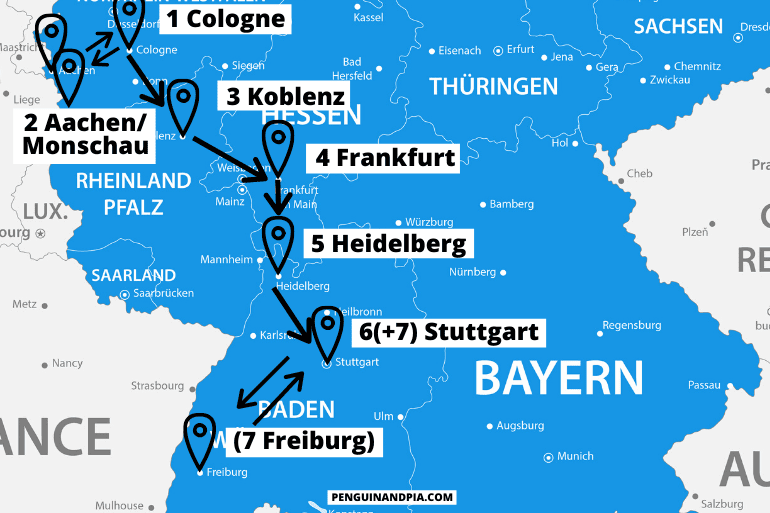
Day 1: Cologne Day 2: Day Trip to Monschau/Aachen Day 3: Koblenz Day 4: Frankfurt Day 5: Heidelberg Day 6: Stuttgart Day 7: Stuttgart / Day Trip to Freiburg im Breisgau
Day 1: Cologne
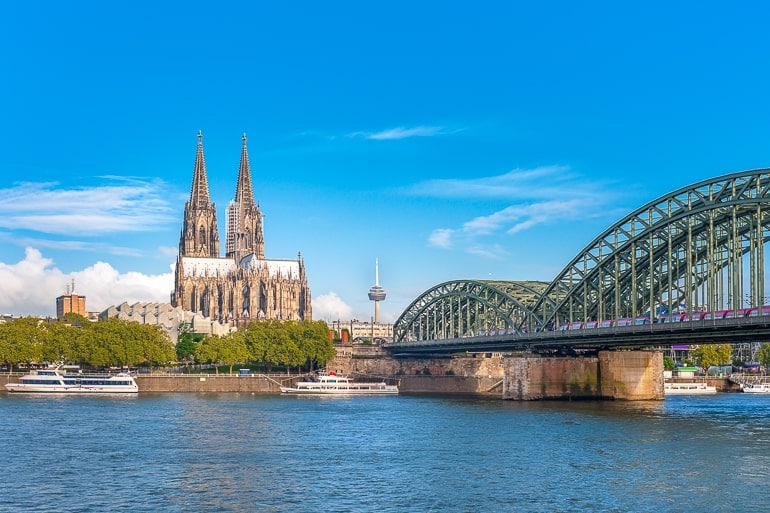
As we have already explained above, we like to start these itineraries in bigger cities to make it easier for people from overseas to get to Germany and start their adventure without hassle. Cologne is Germany’s fourth-biggest city (by population) and has two pretty good airports (Airport “Köln Bonn” and Airport “Düsseldorf”) close by for those coming from far away.
If you want to rent a car for this itinerary, it should be pretty easy to get one in Cologne since it’s quite an international city with lots of visitors.
— Compare prices from rental car companies in Cologne here
Cologne is a pretty spread-out city so you won’t be able to see the whole city in a day or two. However, the highlight of the city is certainly the Cologne Cathedral which is located right next to the central station and the Rhine River.
Make sure to plan some time to visit this impressive building – we always spend much longer in there than we originally plan. It’s free to enter so it can get very crowded depending on the day and time you’re visiting.
Accommodation in Cologne : Cologne is a very big city with multiple areas to stay in. As such, there are lots of accommodation options across the city. Wherever you book, remember to book your accommodation for two nights since you will go on a day trip and then return to Cologne on the second day. You can check here for accommodations and hotels in Cologne .
We have stayed in the Lindner Hotel City Plaza and loved it. The floors all have themes (we got Cologne Zoo with animals), the breakfast buffet is absolutely fantastic, and it’s a short walk to the Cathedral along one main street. There’s also parking available at/near the hotel for those with a car.
If you want to stay more in the heart of the city centre, check out something like the CityClass Hotel Residence am Dom . It’s popular, centrally located with shops and restaurants around, and only a short walk to the train station.
If you are looking for a hostel in Cologne, Eric once stayed at Cologne Downtown Hostel and it was honestly excellent. There’s a grocery store right below it and it’s located in the city centre. It also has a large balcony to enjoy the sunshine from!
Must-see Attractions in Cologne:
- Cologne Cathedral
- Cologne Chocolate Museum
Day 2: Day Trip to Monschau/Aachen
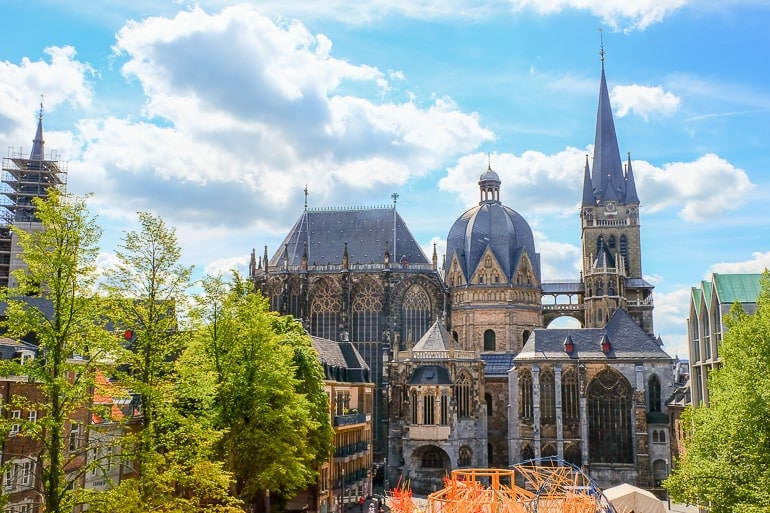
On the second day of this Germany itinerary, you have a few different option: you can either spend another day in Cologne if you feel like you haven’t seen enough of the city yet or take a day trip to Monschau or Aachen. Both of these are two places not too far from Cologne.
Monschau is a popular day trip in the area mainly because of its picturesque buildings in the old town. In fact, you probably have already seen photos of it on social media. To get to Monschau from Cologne, you can either drive or take a combination of trains and buses.
Getting to Monschau takes around 1 hr 40 minutes by car and approx. 2 hours by public transport . To visit Monschau by public transport, you can take the regional train from Cologne to Aachen-Rothe Erde and then take Bus #66 from there to Monschau.
Must-see Attractions in Monschau:
- Monschau Castle
If you want to go on a day trip but don’t want to venture that far, then Aachen would be another great option. This city is actually Germany’s most western city very close to the borders of The Netherlands and Belgium.
We’ve lived close to Aachen for a while and have written a whole guide full of things to do in Aachen that you should read if you want more information. In our opinion, one day is the perfect amount of time to explore the city since it doesn’t have that many attractions and the old town in the city centre is quite compact (but still very pretty).
Getting from Cologne to Aachen is also very easy. It takes approx. 1 hr 20 minutes by car and just around 50 minutes by regional train . You should look into getting a “Schönes Tag Ticket NRW” for the day if you’re travelling with more people as this can save you some money.
Must-see Attractions in Aachen:
- Aachen Cathedral
- Elisenbrunnen
Day 3: Koblenz
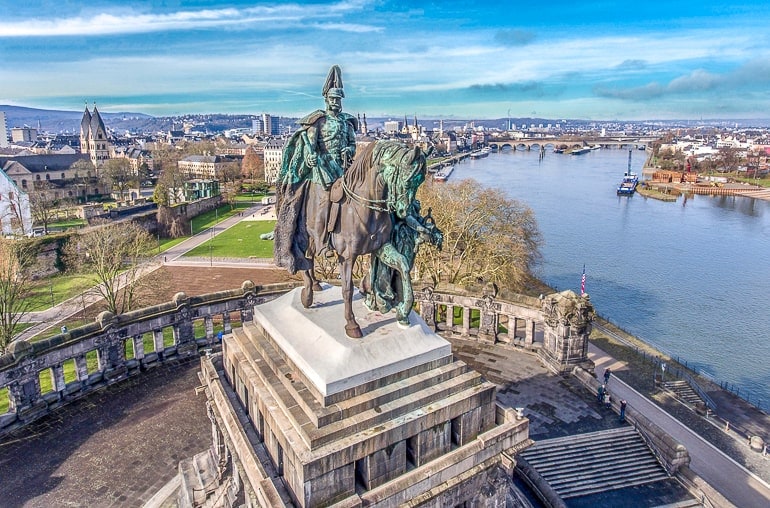
From Cologne, your journey continues to Koblenz – another city on the Rhine River. Koblenz is a smaller German city with a population of slightly over 110,000 inhabitants.
There are quite a few castles and nice hikes in the area which are easy to reach from Koblenz – just in case you decide that you don’t want to spend the day in the city. Depending on the time of year, you could also look into booking a boat tour on the Rhine river. This way, you get a unique perspective of the beautiful region.
Getting from Cologne to Koblenz is pretty easy and will take approximately 1 hour 30 minutes by car and between 50 minutes and 1 hr 10 minutes by train . We really like this train journey since the tracks follow the river for a majority of the trip. As a result, you get some really nice views – and might even spot some of the beautiful castles in the area!
Accommodation in Koblenz: Koblenz is certainly not a huge city – but you’ll still find a good number of places to stay for a night or two. You can check here for accommodations and hotels in Koblenz .
For a hotel right in the city centre, check out the Sander Hotel . This lovely hotel is super popular and close to shops and the rivers. If you are arriving to Koblenz by car, there is onsite parking at the hotel. However, since the city is smaller you can also easily reach the hotel by walking from the central train station.
Must-see Attractions in Koblenz:
- Deutsches Eck
- Ehrenbreitstein Fortress
- Koblenz Cable Car
Day 4: Frankfurt
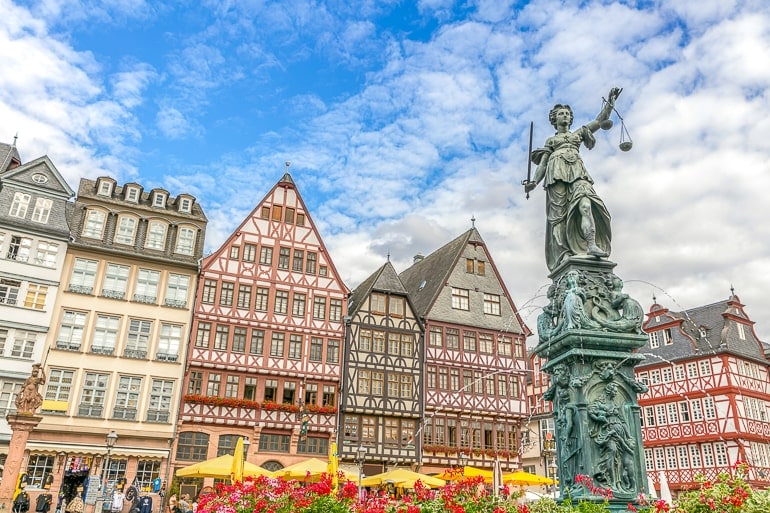
The next stop on your itinerary is Frankfurt, arguably one of the country’s most popular transport hubs due to the busy Frankfurt airport. Frankfurt is an interesting city that divided people: some people really enjoy it while other people don’t like it at all. To be fair, we haven’t spent enough time in the city to really solidify our opinion.
Either way, we do believe that Frankfurt is a stop that you shouldn’t miss if you are trying to get to know different areas of Germany. Known as the financial hub of Germany, this city with its many skyscrapers can feel quite a bit more modern than other German cities. However, the city also has a beautiful, historical market square that you should visit.
The journey from Koblenz to Frankfurt is another easy one – and if you are taking the train (we would recommend that!), you’ll once again follow the Rhine River for big parts of the journey and be rewarded with some great views.
The train ride will probably be between 1 hr 25 minutes and 2 hrs 12 minutes long – depending on the connection you choose. By car , the trip will take around 1 hr 30 minutes . Of course, this can vary depending on traffic.
Accommodation in Frankfurt : There are loads of places to stay in Frankfurt given its popularity and size. You can check here for accommodations and hotels in Frankfurt .
A great option in Frankfurt is the Motel One Frankfurt-Römer . Located very much in the heart of the city centre close to the old town and river, this cool hotel has underground parking if you are arriving to Frankfurt by/with a car. It also serves up a great breakfast!
If you are arriving by train to Frankfurt, you should check out Fleming’s Express Hotel Frankfurt . Located literally right beside the central station (which is in the city centre), this upscale hotel is very popular because it’s very affordable and also has a great breakfast.
Must-see Attractions in Frankfurt:
- Palmengarten
Day 5: Heidelberg
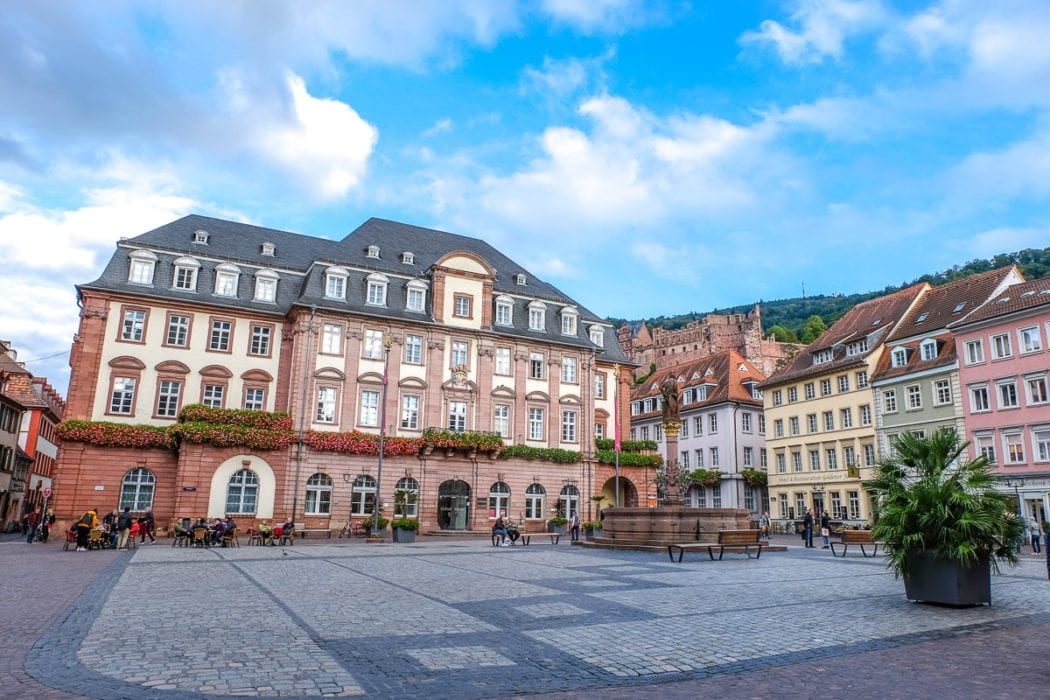
After your day in Frankfurt, you’re heading to Heidelberg which is actually one of our favourite German cities. The highlight of the city is certainly the castle on top of the hill which is visible from many different parts of the city.
Heidelberg is smaller than Frankfurt so you can see quite a bit in just 24 hours. The Old Town is beautiful and lots of attractions are located there. Our highlight was probably the tower climb of the Church of the Holy Spirit. From up there, you get a beautiful view of the Old Town. A very close second was the cable car ride up to the Königstuhl which was lots of fun – even in the rain.
Getting from Frankfurt to Heidelberg won’t take too long. The journey will be approximately one hour by car and between 45 minutes and 1 hr 30 minutes by train – depending on which type of train you are taking.
Accommodation in Heidelberg: If you’re heading for Heidelberg (good choice), there are lots of great places to stay. You can check here for hotels and accommodations in Heidelberg .
We stayed a little outside the old town – but close to the train station – at NinetyNine Heidelberg City . This hotel was really, really great. The beds were comfy and the decor has animals everywhere – you have to see it to understand!
There’s onsite parking (paid) and street parking (free, but not guaranteed) if you are travelling with a car. There’s also a tram stop right outside the hotel to get directly into the city centre in minutes.
If you are looking to stay in the historic old town, then check out colourful hotels like Hotel Holländer Hof which overlooks the river or Hotel Zum Ritter St.Georg which is literally overlooking the main Marktplatz.
Must-see Attractions in Heidelberg:
- Heidelberg Palace
- Church of the Holy Spirit (mainly tower climb)
If you want to learn some more about Heidelberg and what there is to do, you can read our detailed Heidelberg Guide here .
Day 6: Stuttgart
The next day you will drive to Stuttgart, a city that we’ve already mentioned in one of our Germany itineraries for 5 days. As we have already mentioned, you’ll probably really enjoy Stuttgart if you are interested in cars.
Even if you aren’t, there is still lots for you to explore. Did you know that wine also plays a huge role in Stuttgart and the surrounding region? If this is something that interests you and you’re there in the summer (specifically around the end of August), then you should stop by the “Stuttgarter Weindorf” (“wine village”) – but obviously, please don’t drink and drive.
As for getting from Heidelberg to Stuttgart, the journey will take you approximately 1 hr 20 minutes by car and between 40 minutes and 1 hr 30 minutes by train . As mentioned before, the time differs depending on the type of train you are choosing.
Accommodation in Stuttgart: Stuttgart has many places to stay so you can check here for accommodations and hotels in Stuttgart .
Be sure to see the Abalon Hotel ideal if you have a car. This hotel has underground parking available and a tasty breakfast. It’s also in the city centre which makes sightseeing easy.
Those coming to Stuttgart by train should look at the Pension am Heusteig . It’s a guesthouse that is located not too far from the first hotel here and it’s a doable walk or metro ride from the central station.
Day 7: Stuttgart / Day Trip to Freiburg im Breisgau
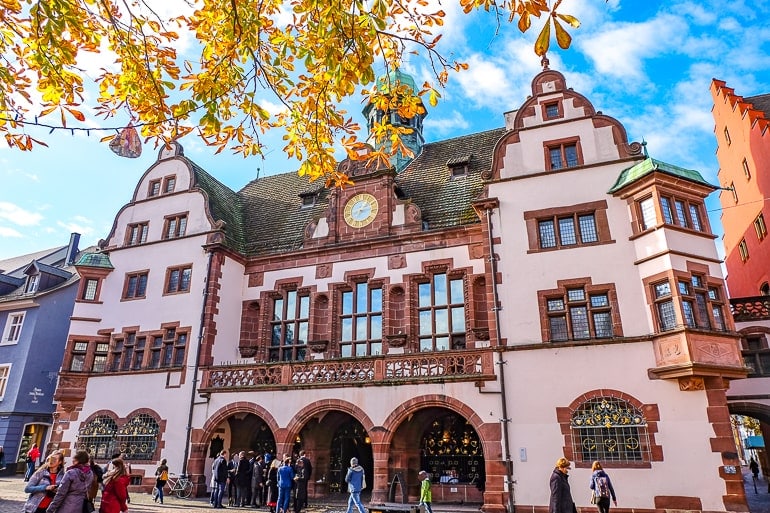
For this itinerary, you can decide how you would like to spend your last day. You could either spend another day to explore more of Stuttgart (and maybe relax for a bit) or you could head farther south and spend a day in Freiburg im Breisgau. We really enjoyed spending time in this small city in the south of Germany during our visit.
We are currently still in the process of writing our Freiburg guide, but we’ll link it here once it’s done. However, a good way to start your exploration of the city is by wandering the old town.
In Freiburg, you’ll find that many of the cobblestoney streets have small water-filled runnels – called Bächle – running alongside it. Sometimes they even have small yellow ducks in them!
The journey from Stuttgart to Freiburg im Breisgau is slightly longer than most other parts of this itinerary. It takes approximately 2 hrs 30 minutes by car and around 2 hours by train . Since this train journey will probably include at least one ICE (the fast train), we’d recommend that you book your train tickets early if you can to save some money.
Must-see Attractions in Freiburg:
- Freiburger Münster (Cathedral)
- Schlossberg + Tower
- New + Old Town Hall
Germany Travel Itinerary 7 Days – East
If the other week-long Germany itinerary doesn’t interest you and/or you really want to visit the German capital Berlin, then you might prefer this eastern route instead.
The driving time would be just slightly over 10 hours and would be approximately 900 km driving distance – including the day trip to Potsdam (which would honestly be easier with public transport, though)!
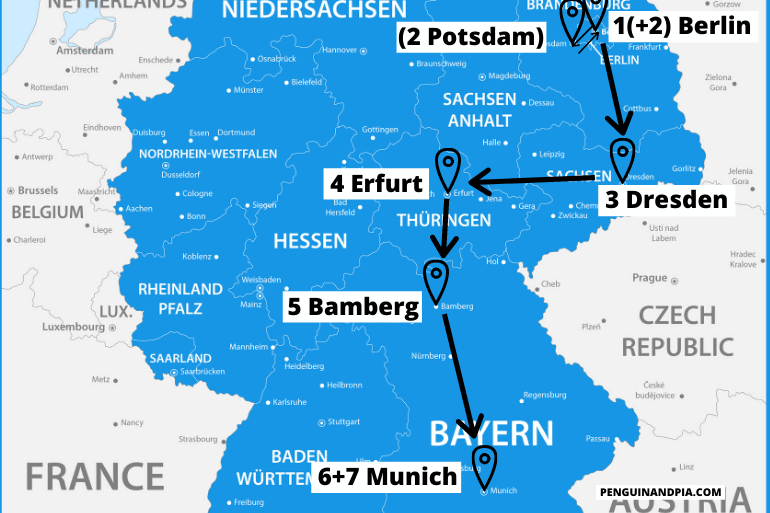
Day 1: Berlin Day 2: Berlin / Day Trip to Potsdam Day 3: Dresden Day 4: Erfurt Day 5: Bamberg Day 6+7: Munich
Day 1: Berlin
Once again, this itinerary begins in Berlin since it is one of the big cities that is easier to get to for people coming from overseas. Similar to the five day itinerary that started in Berlin, you’ll stay two nights in the German capital. There is just too much to see to spend only one day – and even in two days you wouldn’t be able to explore everything.
In case you’ve already been to Berlin on a different trip and/or aren’t a huge fan of big cities, we also give you the option of a day trip to Potsdam (a city close by) on the second day. More on that below.
Accommodation in Berlin : Finding a place to stay in Berlin can be tough because there are just so many options. You can check here for accommodations and hotels in Berlin .
If you have a car, check out Park Plaza Wallstreet Berlin Mitte . Located right in the middle of the city close to Museum Island, this hotel has a great breakfast and free parking on the street behind the hotel. Otherwise, parking is paid but for a decent price for the city centre.
Those without a car travelling by train should see the NH Collection Berlin Mitte am Checkpoint Charlie . If you want a hotel close to a top attraction that is easy to get to with public transport, this is definitely one of them!
Across the city, PLUS Berlin is a really good hostel/hotel that Eric stayed at a few years ago. It’s a big place but it was a great stay over by the East Side Gallery (part of the Berlin Wall with the graffiti on it).
As already mentioned above, if you want to read some more about Berlin, check out our articles on Things to do in Berlin and How to spend one day in Berlin .
Day 2: Berlin / Day Trip to Potsdam
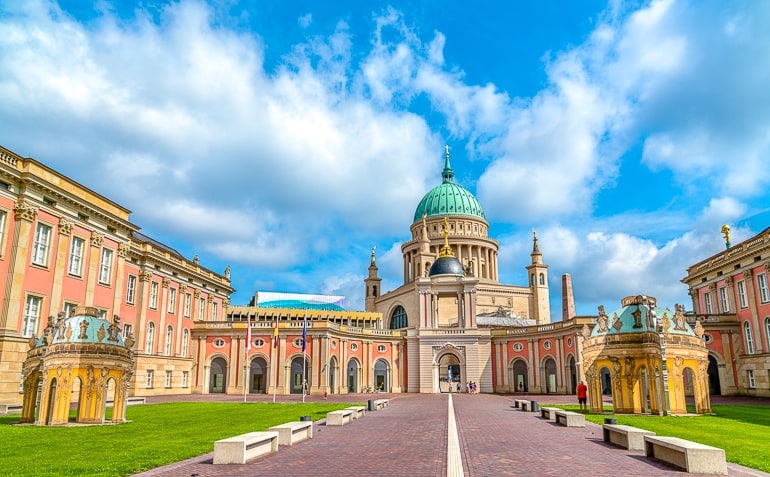
On your second day, you can choose between spending another day in Berlin to see more of the German capital or going on a day trip to Potsdam – which is a smaller city not far from Berlin.
Potsdam is actually the capital city of the German state called Brandenburg. It’s most popular attraction is probably Sanssouci Palace with the beautiful Sanssouci Park surrounding it.
During our visit, we also enjoyed walking through the Dutch Quarter with its small shops and cafes. Since the city isn’t too big, one day gives you a chance to get a good impression and check out some of the more popular sights.
It is also very easy to get to Potsdam from Berlin. If you decide to drive , it’ll take you approx. 40 minutes , but it could be longer – traffic depending. We would honestly recommend that you do this day trip by taking public transport. This way, you don’t have to worry about traffic and/or finding a parking spot.
For trains, you can take the S-Train #7 (S7) from Berlin Central Station (as well as other train stations) straight to Potsdam Central Station. The journey will take around 35 minutes with trains running very frequently throughout the day.
Must-see Attractions in Potsdam:
- Sanssouci Palace
- Dutch Quarter
- Cecilienhof
Day 3: Dresden
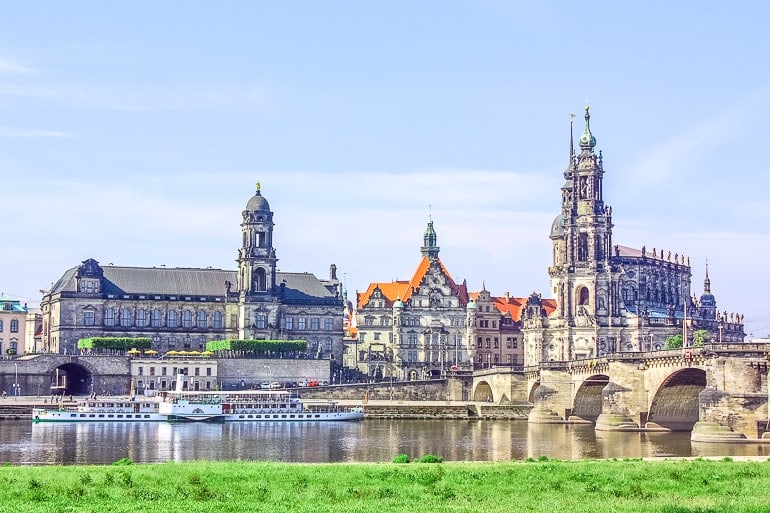
The third day of this Germany itinerary will take you from Berlin to Dresden which is a German city close to the Czech border. To be honest, we haven’t spend that much time in Dresden yet – and it’s certainly on our list of places to visit this year.
One of the city’s main attractions – the Zwinger – is known across the country and a sight that you shouldn’t miss during your visit. It’s a beautiful palace built in a baroque style.
Fun fact: When Lisa was a kid, she didn’t actually know that the “Zwinger” was a palace. Since that word can also mean “dog kennel” in German, she was always confused as to why people would want to visit it during their time in Dresden!
As for getting from Berlin to Dresden, the drive will take you around 2 hrs 10 minutes by car and around 2 – 3 hours by train. Once again, this depends on which connection you choose.
Accommodation in Dresden: There are a number of accommodations in the compact “Innere Altstadt” close to the River Elbe for you to choose from. You can check here for accommodations and hotels in Dresden .
For a great hotel option right in the old town, look no further than the Star Inn Hotel Premium Dresden im Haus Altmarkt . You’re a short walk to the train station, the river, and all the best old sights in Dresden if you stay here and arrive by train. If you come to Dresden by car, the hotel has discounted underground parking available.
Another option right in the old town (and even closer to the river) is Aparthotel am Schloss . Since this is an apartment-style hotel, it’s a great option if you are looking for more of a base to relax in a “home away from home”. It’s a very popular choice, too – and also has onsite parking.
Must-see Attractions in Dresden:
- Frauenkirche
Day 4: Erfurt
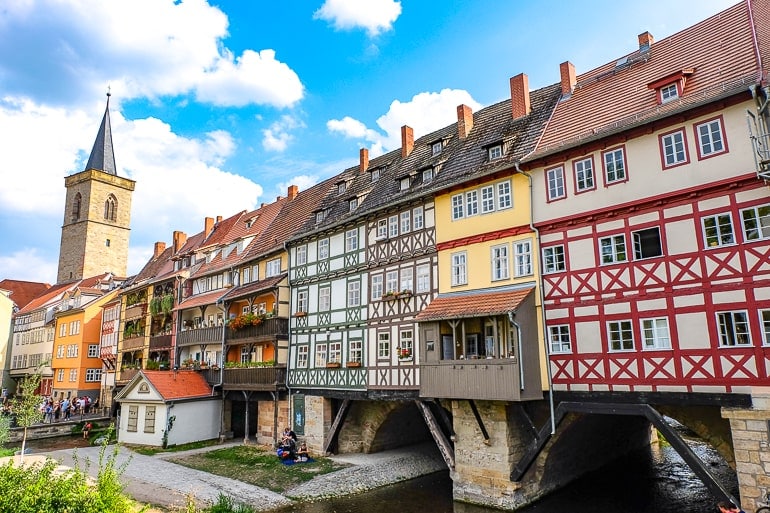
Erfurt is a popular city to visit in the middle of Germany – and it’s also the capital city of the German state Thuringia. We’ve spent some time in Erfurt a few months ago and instantly fell in love with the city. Its size is perfect (in our opinion) – giving you enough things to do without feeling overwhelming.
Maybe you’ve seen photos of one of the city’s most popular attractions, the Krämerbrücke. This bridge is not only pretty to look at and photograph, it’s also unique in the sense that there are buildings on the bridge and when you’re walking on it, you can’t actually see the water running below.
Visiting the bridge and climbing the tower of the Ägidienkirche, a church at one end of the bridge, is something we’d certainly recommend during your time in the city. We actually filmed a short video of our time exploring Erfurt. If you are interested in seeing what parts of the city look like, then you can find our video here .
Getting to Erfurt from Dresden won’t take you too long. It will take approx. 2 hours 20 minutes by car and between 2 and slightly over 3 hours by train .
Accommodation in Erfurt: Since Erfurt isn’t a huge city, there aren’t a ton of accommodations – but certainly more than enough to find one that works for your style and budget. You can check here for hotels and accommodations in Erfurt .
We stayed at Gästehaus in der Gotthardtstraße and really liked our stay. It’s located in a quiet neighbourhood just north of the city centre – a short walk to the Krämerbrücke. The host was lovely, the room was cozy, and there was secure onsite parking for those driving to Erfurt.
If you want to stay RIGHT in the city centre then you should check out Hotel Krämerbrücke Erfurt which is right beside the famous bridge. This might be a good place to stay if you are travelling to Erfurt by train and you’re on-foot.
Must-see Attractions in Erfurt:
- Krämerbrücke
- Erfurt Cathedral
- Citadel Petersberg
For more details, have a look at our Things to do in Erfurt article .
Day 5: Bamberg

Bamberg is a small city – or larger town – in the German state called Bavaria. It’s actually located in a region called Franconia, which is noticeably different from the Bavaria that you might know in the area surrounding Munich, etc.
We’ve been to Bamberg multiple times over the years (it’s also close to the part of Germany where Lisa grew up) and are always happy to come back. Bamberg is known for its cute, historic old town which is actually a declared UNESCO World Heritage Site.
One of the most popular buildings the city has to offer is the Old Town Hall (shown above) which is built on an artificial island. The story behind it is quite interesting.
The drive from Erfurt to Bamberg is doable and will take approx. 2 hrs by car and around 3 hrs by train . On the way, you’ll drive through quite a few tunnels since you’ll drive through an area known as “Thuringian Forest”.
Accommodation in Bamberg: Bamberg is a small place to visit so there aren’t a ton of options but still enough to find what you’re looking for. You can check here for accommodations and hotels in Bamberg .
Anywhere you stay is basically in or close to the old town/city centre. For a place to stay with parking (for those arriving by car), check out Welcome Hotel Residenzschloss Bamberg . It’s located right on the river.
You might also want to see Palais Schrottenberg to stay right in the middle of the Old Town! For reference, the train station is a short walk to the north of the river – not far from these places in the centre.
Must-see Attractions in Bamberg:
- Bamberg Cathedral
- Old Town Hall
- Alte Hofhaltung
If you want some more information about Bamberg, please read our detailed Bamberg, Germany Guide .
Day 6+7: Munich
From Bamberg, your journey will continue to Munich which will be the last stop on this 7 day eastern itinerary. Not only is this the third biggest city of the country, it is also one of the most internationally known destinations in Germany.
Whenever we come back to Munich, we always enjoy our time there. For some reason, the atmosphere always feels more laid back than in other big German cities and the people are usually quite friendly. We might also be a little bit biased, though, since Lisa grew up in this part of the country and is more used to the mentality, dialect etc. than in other parts of Germany.
For this itinerary, you’ll spend two days in Munich since there is quite a lot to see. Next to the obvious attractions like the Marienplatz with the New Town Hall and the Frauenkirche close by, there are also lots of museums and other things that you can explore.
If you’ve already been to Munich before and/or decide that one day in the city is enough for you, you could also opt for a day trip on one of these days. We’ve just recently written a whole Day Trips from Munich Guide , which you can browse through to get some inspiration!
Driving from Bamberg to Munich will take about 2 hrs 20 minutes by car and between 2 and 3 hrs by train . If you decide to only take regional trains instead of the ICE (fast train), you should look into getting the Bayernticket. This can save you some money, especially when you’re travelling with more people.
Accommodation in Munich: Since Munich is so large and popular to visit, there is definitely no shortage of places to stay! You can check here for accommodations and hotels in Munich .
That said, we loved our stay at H2 Hotel München Olympiapark . Located up by the famous Olympic Park, we’d highly recommend it since it was amazing value for money. The breakfast was huge and delicious and there’s a metro station outside the lobby door that takes you into the heart of the old town in minutes. There’s also parking if you are arriving by car.
For a hotel that is a little more central, you should see the Platzl Hotel Superior this hotel is really popular – and for good reason. It’s located around the corner from attractions like Marienplatz and the famous beer hall, Hofbräuhaus.
For more help looking into accommodations and neighbourhoods in Munich, check out our where to stay in Munich guide .
(Check out our guide to one day in Munich if you want more details on things to do and see.)
Germany Itinerary 10 Days
Although we have tried to create short itineraries that allow you to see more than just the standard cities, it is no doubt easier to see more of Germany if you are able to travel for longer than one week. To give you a couple different options that you could look at (and then potentially modify), we have created two 10-day Germany itineraries.
Once again, we believe that ten days would not be enough time to see the whole country – and even if you managed to do that it would be too stressful (in our opinion). Both of the following itineraries give you a good mix of bigger and smaller cities as well as a few interesting day trips. So, have a look and see which one you like better!
Germany Itinerary 10 Days – North
If you’re interested in seeing more of the northern part of Germany and experiencing the mentality and way of life of people in the flatter part of the country, closer to the sea, then have a look at the following 10-day itinerary!
The total driving time would be slightly less than 17 hours with a distance of approx. 1470 kilometres. For these calculations, we have included the day trips to Schloss Drachenburg, Lübeck, and Flensburg. So, if you decide to skip any of these, your driving time and distance would obviously be slightly lower.
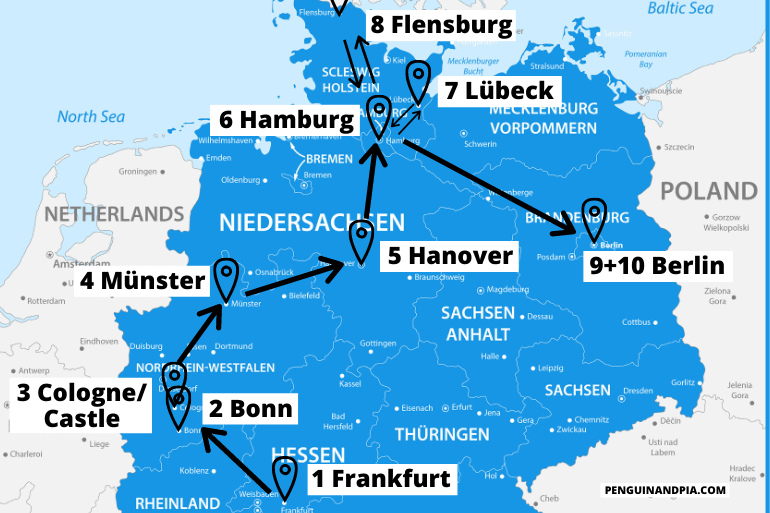
Day 1: Frankfurt Day 2: Bonn Day 3: Day Trip to Schloss Drachenburg / Cologne Day 4: Münster Day 5: Hanover Day 6: Hamburg Day 7: Day Trip to Lübeck Day 8: Day Trip to Flensburg Day 9+10: Berlin
Day 1: Frankfurt
Similar to some of the other itineraries mentioned in this article, we start this 10-day itinerary in Frankfurt. By now you should probably already know why – Frankfurt has the biggest airport of the country which should make it easier for people coming from overseas to get to Germany and start their adventure.
Furthermore, Frankfurt is quite centrally located so it is easy to get to many different cities from here. So even if you decide against following our itineraries step-by-step, Frankfurt would be a good starting point!
— Compare prices from rental car companies in Frankfurt here
Accommodation in Frankfurt : You’ll find plenty of places to stay in Frankfurt. You can check here for accommodations and hotels in Frankfurt .
One really popular hotel in Frankfurt is the Motel One Frankfurt-Römer . This Motel One is near the river and walking distance to lots of things in the city centre. If you are coming to Frankfurt with a car, Motel One has underground parking which can make life easy! They also have a nice breakfast.
A hotel option closer to the train station is Fleming’s Express Hotel Frankfurt . This hotel is just to the north of the main station which makes it a great option if you are arriving by train and have no car. It’s popular because it has a great breakfast and is good value for money.
Day 2: Bonn
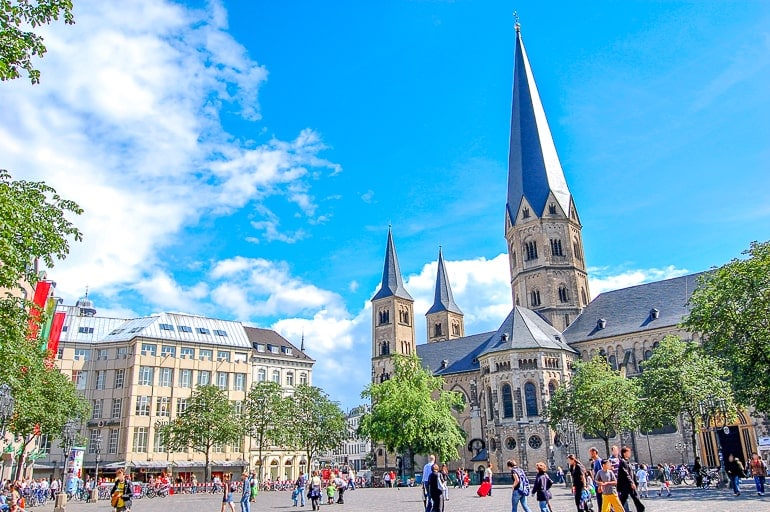
On the second day, you’ll head from Frankfurt to Bonn. As you might know, Bonn used to be the capital of the Federal Republic of Germany during the time that Germany was split into two countries. Later, the capital was relocated from Bonn to Berlin.
If you are interested in learning more about the history of Germany during your time in the country, then Bonn would be a good city to do that in. For example, you could visit the so-called “Haus der Geschichte” which is a museum about the history of the Federal Republic of Germany.
It won’t be difficult to get from Frankfurt to Bonn since the two cities are not too far apart. The journey will take approximately 1 hr 50 minutes by car and between 1 hr 20 minutes and 2 hrs if you take the train . Once again, we’d recommend that you book your train ticket in advance if possible.
Accommodation in Bonn: There are a number of accommodation options in Bonn which you can choose from – many are right in the city centre/old town. You can check here for accommodations and hotels in Bonn .
Keep in mind to book your accommodation for two nights for this itinerary. (You could also spend the following night in Cologne if you day tripped to there, though).
For a great hotel in the heart of the old town, check out BrauHotel Bonn . You can easily walk here from the central train station but they also have a and parking garage close by if you arrive by car. There’s also a craft beer bar on the ground floor!
Another option is the Hilton Bonn . This hotel offers you amazing views of the Rhine River. It’s a bit north of the city centre but still very much close to it. There is parking but it can be expensive so keep that in mind when you book.
Must-see Attractions in Bonn:
- Bonn Minster
- House of the History of the Federal Republic of Germany (Haus der Geschichte)
Day 3: Day Trip to Schloss Drachenburg / Cologne
On day three of this itinerary, you can choose to stay in Bonn, or go on one of two day trips: to Schloss Drachenburg (a castle not far from Bonn) or to Cologne which is also close by.
Schloss Drachenburg is actually a private villa/mansion that was built to look like a castle in the 19th century. Today, it is a popular attraction in the area.
From Bonn, you can either drive to Königswinter by car (and then leave your car at the car park) or take public transport to the Königswinter/Clemens-August-Straße station. You can find more information about that and opening hours etc. on the offical website .
If you are not a huge fan of castles, then you might opt for a day trip to Cologne instead. In this case, you might even decide to change your base and spend the night in Cologne instead of returning to Bonn at the end of the day. That is definitely an option that you can choose since there are lots of accommodation options in Cologne as well.
Getting to Cologne from Bonn will take you around 40 minutes by car (this can obviously depend on traffic) and only approx. 25 minutes by train . Just a quick warning: Trains can get very full if you are travelling during rush hour traffic – so try to avoid that if you don’t like being surrounded by lots of people in a small space.
Day 4: Münster
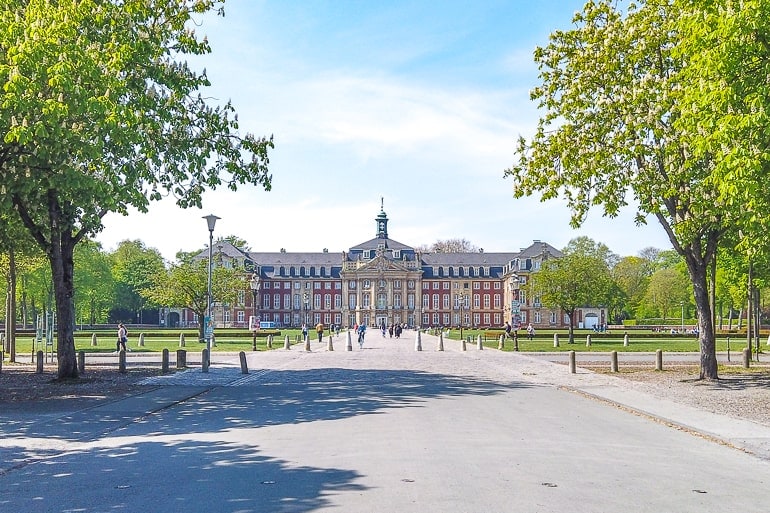
The next day you’ll head from Bonn – or Cologne – to Münster. Since Bonn and Cologne are so close, the journey wouldn’t really differ much from either city.
Münster is a smaller German city that we really enjoy. To be honest, it sometimes reminds Lisa of Copenhagen – mainly because of the many bikes that you can see all around the city. The University of Münster plays a big role in the city and the vibe – depending on which part of the city you are in – is noticeably younger.
One of the highlights of the city – for locals and visitors alike – is the lake Aasee which is located quite centrally. When the weather is nice, there are always people sitting on the grass enjoying the sun and maybe even out on the water (depending on the time of year). You can rent a small paddle boat to explore the lake from a unique perspective.
The journey from Bonn to Münster should take you slightly less than 2 hrs by car and between 2 hrs and slightly more than 3 hrs by train . If you want to save some money and are travelling with other people, then you should look into getting an “NRW Schönes Tag Ticket”. With this ticket, you wouldn’t be allowed to travel on ICE’s (the fast train), but the connections using only regional trains wouldn’t be much longer.
Accommodation in Münster: Münster might feel small but it’s actually pretty spread out and offers accommodations for all styles and budgets. You can check here for accommodations and hotels in Münster .
If you want a popular hotel option right in the centre, the H4 Hotel Münster is a short walk to the heart of the historic centre. It also has onsite parking for those travelling to Münster by car – but you can easily walk there from the train station in the south of the city centre.
Must-see Attractions in Münster:
- Münster Prinzipalmarkt
- Historic Town Hall
- Münster Cathedral
For a more detailed guide, have a look at our Things to do in Münster, Germany article .
Day 5: Hanover
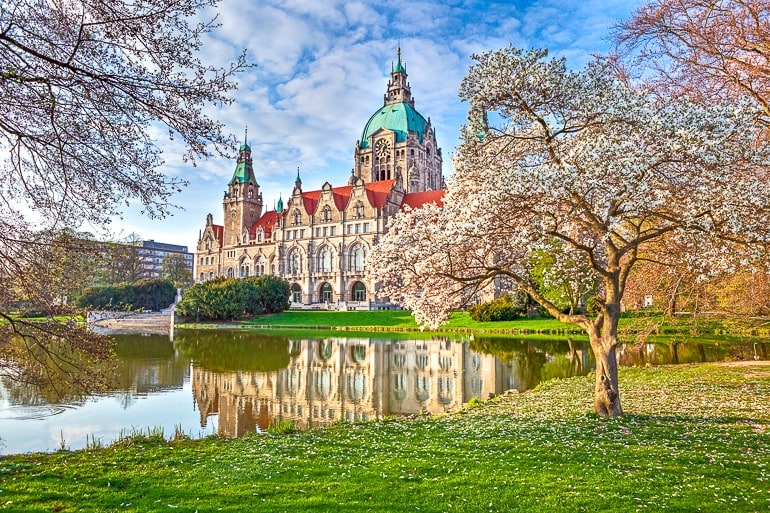
The following day you are travelling from Münster to Hanover. In German “Hannover” is actually written with two “n”, so don’t be surprised if you see it being written slightly differently.
Hanover is the biggest city and the capital of the German state called Lower Saxony. Compared to some other cities on this itinerary it is a less popular tourist destination. To be fair, even we haven’t spent that much time in Hanover yet. Hopefully we’ll be able to change that soon. However, that’s not to say that Hanover is not worth a visit.
Not only can you explore some beautiful gardens and interesting museums in the city, but it is also located pretty much halfway between Münster and Hamburg. That makes it a great stop to break up the journey and spent another day in a city that allows you to explore without too many other (international) tourists around.
By car , the journey from Münster to Hanover will take you around 2 hrs . If you choose to travel by train instead, it will take you approximately the same amount of time .
Accommodation in Hanover: Hanover is a larger city but the accommodation are still relatively packed together in and around the historic city centre. You can check here for accommodations and hotels in Hanover .
For a stay right in the city centre, check out the Hotel Loccumer Hof . This popular hotel is a very short walk from the central station which is perfect if you are arriving to Hanover by train. That said, they also have parking onsite so this hotel works well if you arrive by car!
For another hotel option, check out the Arthotel ANA Prestige am neuen Rathaus . This boutique hotel is directly across from the beautiful New Town Hall in the south end of the city centre by the greenspace and water! They also have a really nice breakfast and parking available.
Must-see Attractions in Hanover:
- New Town Hall
- Marktkirche
- Herrenhausen Gardens
Day 6: Hamburg
On day six of this 10-day itinerary you’re on your way to Hamburg. If you’ve read the details of any of the shorter itineraries in this article, you’ll know that we really like Hamburg.
The city offers modern areas, such as “HafenCity”, mixed with historic (e.g. “Speicherstadt”) and alternative areas (“Sternschanze”) . This makes exploring the city all the more interesting – there is truly something for everyone. During your time in the city, we’d also recommend that you climb the tower of the St. Michael’s Church. From up there, you get a beautiful view of most parts of the city.
The journey from Hanover to Hamburg won’t be long. Depending on the route you are taking (Highway A7 or A1), it’ll take between 1 hr 30 minutes and 2 hrs by car . If you opt for the train , you can expect the journey to take between 1 hr 15 minutes and 1 hr 30 minutes . This depends on the connection you choose.
Accommodation in Hamburg : Hamburg has many, many places to stay. You can check here for accommodations and hotels in Hamburg .
The Mövenpick Hotel Hamburg might be a good option if you have a car while you travel around Germany. This cool hotel is inside an old water tower which gives guests stunning views of the city around. There’s also parking onsite and it’s close to a transit stop for getting around the city.
Located not too far from the central train station, ARCOTEL Rubin Hamburg makes for a good hotel option if you don’t have a car. It’s located in St. Georg which is a lively area within walking distance of the city centre.
Those that need hostel for their stay in Hamburg might be happy with Generator Hamburg . It’s a popular hostel in the city and is close to the train station for easy getting around. If you’re unsure about where to stay, you can always check out our detailed guide on where to stay in Hamburg .
Once again, if you’d like to read our (very) short Hamburg guide, you can find our Things to do in Hamburg article here .
Day 7: Day Trip to Lübeck
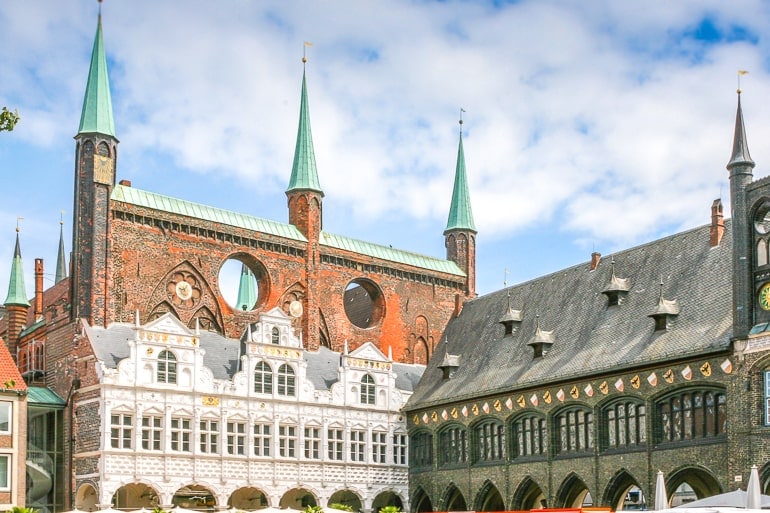
For the next couple of days, we decided to include some day trips from Hamburg. This allows you to stay in one accommodation for longer than just one night and gives you the option to see some more of Hamburg as well. If you don’t want to visit any other cities and want to spend more time in Hamburg instead, then feel free to skip one or both of the day trips mentioned.
Lübeck is the closer one of the two day trips mentioned from Hamburg. Within Germany the city is mainly known for its delicious “Lübecker Marzipan” (Lübeck Marzipan) – but of course there is much more to the city than just that. One of the highlights is the Holsentor, a red-brick city gate dating back to the 15th century.
The journey from Hamburg to Lübeck will take you slightly over 1 hr by car and just around 45 minutes by train . In our opinion, that’s great for a day trip since it gives you lots of time to actually see the city instead of spending a lot of time in the car/on the train.
Must-see Attractions in Lübeck:
- Marienkirche
- Heilig-Geist-Hospital
Day 8: Day Trip to Flensburg
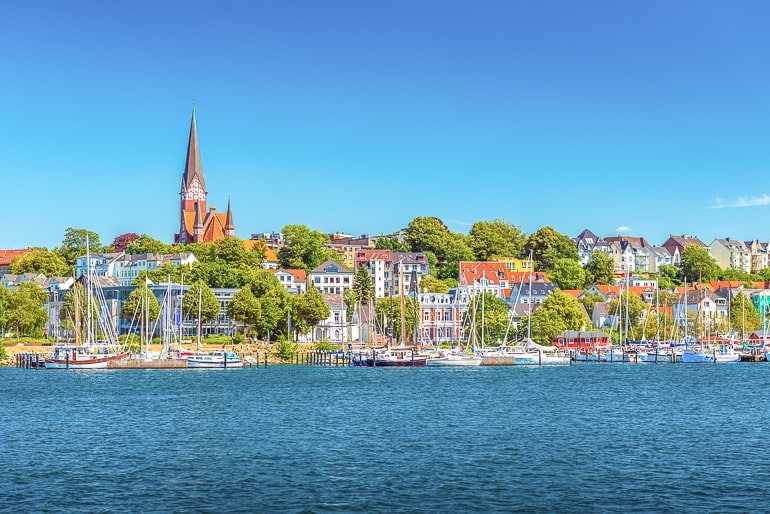
For the following day, we have another day trip option for you. The journey to Flensburg is slightly longer than to Lübeck – but it would be worth it. Flensburg is a smaller German city in the north of Germany, very close to the Danish border.
Since it is located close to the water, shipping plays an important role in the city to this day. If you’re interested in learning more about that, then the Maritime Museum would be a good place for you to visit.
Another thing we would recommend is a walk along the Rote Straße. Here you’ll find different “Hinterhöfe” (similar to backyards) with cute cafes and small shops.
Getting to Flensburg from Hamburg should take slightly less than 2 hrs by car and the same amount of time by train . As already mentioned, it would be a longer journey than to Lübeck, but if you want to experience a smaller, maritime city, the trip would be worth it!
Must-see Attractions in Flensburg:
- Historischer Hafen (Historic Harbour)
- Flensburger Schifffahrtmuseum (Maritime museum)
- Museumsberg Flensburg
Day 9+10: Berlin
On the second to last day of this itinerary, you’ll head from Hamburg to Berlin where your journey ends. This allows you to spend two days in the German capital. Since there is so much to do in Berlin, we’d recommend that you do some research beforehand to narrow down which attractions you’d like to visit.
If you’ve never been to Berlin before classics like the Brandeburg Gate and the Reichstag would be a good place to start. We’ve written a few different articles about Berlin – one about classic attractions (link below). Maybe these will be a good starting point to gather some more information!
The drive from Hamburg to Berlin will be one of the longest mentioned as part of this itinerary – so you should keep that in mind. It’ll take approximately 3 hrs 20 minutes by car (with traffic it could be longer), but just 1 hr 50 minutes by train .
It’s a popular train route since it connects the two biggest German cities so trains run frequently throughout the day. Once again, we’d recommend to book your train ticket in advance to get one of the discount tickets and save some money.
Accommodation in Berlin : As the capital city, there are lots of accommodation options for Berlin. You can check here for accommodations and hotels in Berlin .
Those travelling to Berlin with a car should look into the Park Plaza Wallstreet Berlin Mitte for a hotel in the city centre with free street parking available. There’s always paid parking for a reasonable fee if those are full and you’ll be close to top attractions.
The NH Collection Berlin Mitte am Checkpoint Charlie is a popular hotel option for those coming to Berlin by train since it’s close to attractions in the city centre and you can get there very easily with the metro.
Finally, if you need a hostel/hotel, check out PLUS Berlin . This is where Eric stayed a few years back and really enjoyed it. You’ll be close to the East Side Gallery – the part of the Berlin wall with the artwork on it. It’s also easy to get in and out of the city centre from here.
Also feel free to have a look at our guide on Berlin Attractions and tips for a day in Berlin .
Germany Itinerary 10 Days – South
This 10 day Germany itinerary begins and ends in Frankfurt – so it’s pretty much a small loop through the southern part of the country. If you want to be closer to the mountains (for part of the trip at least) instead of the sea, then this itinerary might be better suited for you than the other 10 day version.
For this itinerary, the total driving time would be slightly over 17 hours with a total distance of approx. 1330 kilometres. This includes the day trips to Neuschwanstein Castle, Garmisch-Partenkirchen, and Tübingen. So depending on if/how you modify the itinerary, these estimates could differ.
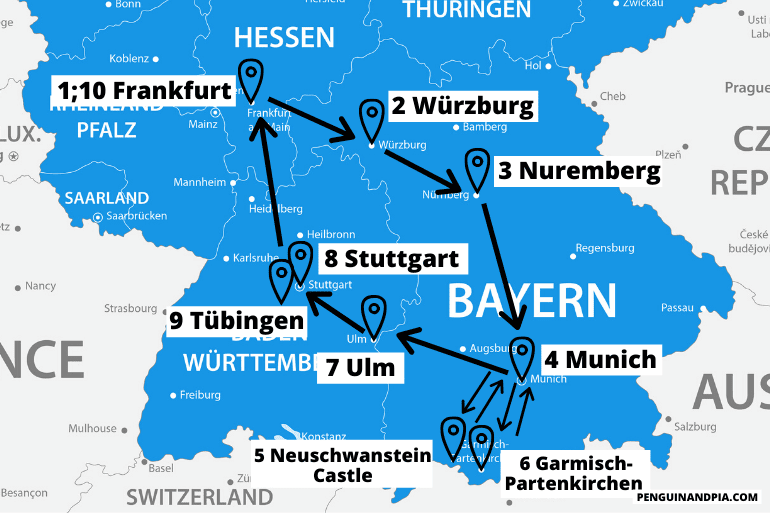
Day 1: Frankfurt Day 2: Würzburg Day 3: Nuremberg Day 4: Munich Day 5: Day Trip to Neuschwanstein Castle Day 6: Day Trip to Garmisch-Partenkirchen Day 7: Ulm Day 8: Stuttgart Day 9: Day Trip to Tübingen Day 10: Frankfurt
Similar to the northern version of this itinerary for 10 days, you begin your adventure in Frankfurt. During your day in the city, you shouldn’t forget to visit the Römerberg with the beautiful half-timbered houses. If you want to get a nice few of the city from above, then you should look into visiting the Main Tower as well.
Frankfurt is also a great place to pick up your rental car – if you decide to complete this itinerary by car instead of using public transport. You can either pick up a car at the airport or at different spots in the city centre. This obviously also depends on the rental company you choose.
Accommodation in Frankfurt: Frankfurt is full of accommodation options – from the city centre to the airport. You can check here for accommodations and hotels in Frankfurt .
For a hotel in the heart of the city, check out the Motel One Frankfurt-Römer . Complete with underground parking, good breakfast, and a top location in the centre and close to the river, this hotel is a decent option if you are travelling around with a car.
For those not travelling with a car (and taking the trains around Germany), check out Fleming’s Express Hotel Frankfurt . This nice looking hotel is really popular for its breakfast, price, and the fact that it’s steps from the central train station.
Day 2: Würzburg
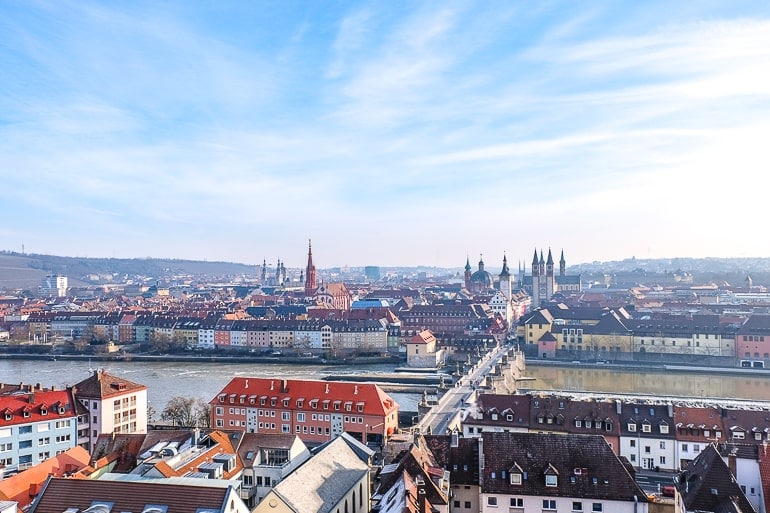
On day two of this itinerary, you’ll be on your way to Würzburg, a small German city that we’re always happy to return to. Similar to Stuttgart, Würzburg is located in a region that is known for its wine.
As such, it comes as no surprise that a highlight in Würzburg is to drink a glass of (white) wine on the Old Bridge across the Main river. We’ve done that multiple times and would especially recommend it during the evening when it gets dark.
Another thing you shouldn’t miss in Würzburg is the short walk up the hill to Marienberg Fortress. Up there you can not only explore the old fortress, but you also get a beautiful view of the old town and other parts of the city.
We actually wrote a whole guide about Würzburg (link below) where we not only talk about things to do but also mention some great cafes and restaurants!
The drive from Frankfurt to Würzburg will be a short one. It should only take you around 1 h 20 minutes by car and between 1 h 07 minutes and 1 hr 50 minutes by train depending on the type of train you’re taking (ICE vs. regional train).
Accommodation in Würzburg: Würzburg isn’t a huge city so you’ll find a number of places to stay packed together in the city centre and a number of other hotels and guesthouses around. You can check here for accommodations and hotels in Würzburg .
On a recent trip, we stayed at the Best Western Hotel Würzburg-Süd . It’s a little south of the city centre but the tram stop is right outside the hotel so you’re into the historic city centre in minutes. There is also an onsite parking lot if you’re arriving to Würzburg by car. We booked this one last minute but we would stay again.
If you want to stay a little more central, then you can check out Hotel Strauss . With a location close to the river, the train station, and the city centre – it’s a great option fo those arriving by train.
We also once stayed at Hostel Babelfish for a budget accommodation and it was honestly not too bad, either. It’s right across from the train station for easy access in and out of the city.
Must-see Attractions in Würzburg:
- Marienberg Fortress
- Würzburg Residence
If you want more tips for visiting Würzburg, have a look at our detailed Things to do in Würzburg Guide (+ insider tips) .
The next day you’ll be on your way to Nuremberg, which is another city in Bavaria that we really like. In German, Nuremberg is actually written/called “Nürnberg” – just an FYI, so you’re not confused when you see this written somewhere.
As we have already mentioned in the description of one of the shorter itineraries, there is a lot of history to be found in the city. Not only can you explore an old castle in the middle of the city, you can also learn a lot about Germany’s dark history if you’re interested.
Getting from Würzburg to Nuremberg will take approx. 1 hr 20 minutes by car and between 53 minutes (ICE) and 1 hr 13 minutes (regional) by train . If you’re travelling with more people and decide to just take a regional train, look into getting a “Bayernticket” as that could save you some money.
Accommodation in Nuremberg : Nuremberg is a larger and well-travelled city in Germany so you will have no problem finding a place to stay! You can check here for accommodations and hotels in Nuremberg .
We ended up staying in the very popular Five Reasons Hotel and Hostel and we enjoyed our stay. The room was bright with new furnishings. It’s also located just inside the old city walls so we were close to the metro, a short walk to central train station, and also close to the heart of the old town!
Very nearby was the Sheraton Carlton Nuremberg – we had friends stay there. They really liked this hotel which had a swimming pool with city views and other great perks. If you are arriving to Nuremberg by car, there’s a parking lot across the street from the hotel as well as street parking around. The train station is very close as well so it’s a great location overall.
- Documentation Center Nazi Party Rally Grounds
Day 4: Munich
On day four of this Germany trip, you’ll be on your way to Munich. As you might know Munich is the capital of the German state called Bavaria and there are lots of things to do in this city.
That’s why you’ll spend three nights in Munich. This way you can explore the city in more detail if you want or go on a couple of day trips from Munich to see other popular attractions as well. It’s really up to you.
The journey from Nuremberg to Munich won’t be overly long and it’s a route Lisa has driven many times. It’ll take you around 2 hrs by car (of course traffic depending) and between 1-3 hrs by train.
Since this is a popular train route, there are lots of different connections of varying length – some are quick and others are slower trains with more stops. Since that’s the case, we’d recommend that you plan in advance and try to catch a better connection to avoid an unnecessarily long train ride!
Accommodation in Munich: Since Munich is such a popular and large city, there are plenty of accommodation options for you to choose from. You can check here for accommodations and hotels in Munich . Just remember to book your accommodation for three nights if you are following this itinerary!
We stayed at the H2 Hotel München Olympiapark which is a very popular hotel because of the price and the value. It was a prefect stay. The breakfast was amazing, they had parking, and the location was great – only a quick metro to the heart of the city centre. You also have the Olympic Park and BMW Museum as top attractions nearby!
If you’re itching to stay right in the heart of the action in Munich, check out the Platzl Hotel Superior . This is a hotel around the corner from Marienplatz in the old town with the famous beer hall Hofbräuhaus just steps away. The central train station is also walkable from here.
Of course, you can learn all about the best areas to stay in more detail with our Munich accommodation and neighbourhood guide .
Learn more about Munich with our one day in Munich post!
Day 5: Day Trip to Neuschwanstein Castle
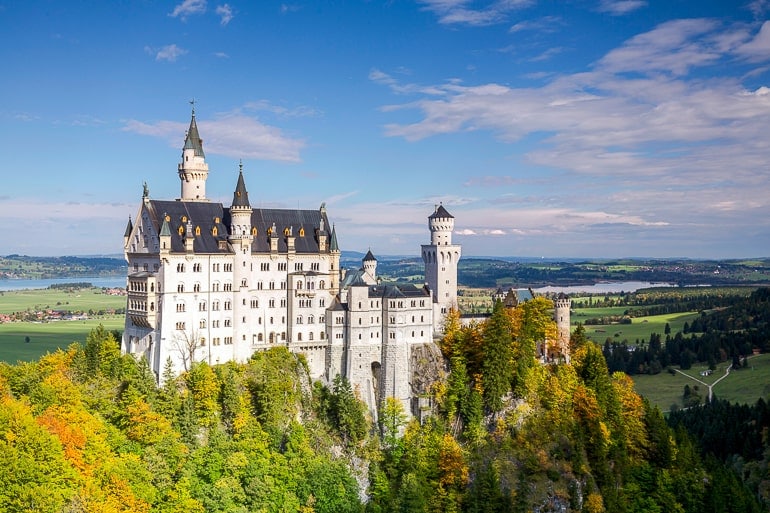
Neuschwanstein Castle probably doesn’t need a lot of introduction – it is arguably one of the most popular day trips from Munich. If you want to see this fairy-tale castle with your own eyes, then this day trip might be for you.
However, it is such a popular attraction that depending on the time of year it can get incredibly crowded. So if you are planning this itinerary for the middle of summer, we’d honestly recommend that you think twice about whether you really want to do this day trip. A second day in Munich wouldn’t be so bad either, would it?
If you are set on visiting Neuschwanstein Castle, then have a look at our Day Trips from Munich Guide . In that article – under the Neuschwanstein Castle section – we talk about all the different ways you can get to the castle.
In case you don’t want to stress too much about logistics and are not travelling with a rental car, you could always look into a day tour that brings you to Neuschwanstein Castle and then back to Munich. Here are some examples:
- Neuschwanstein and Linderhof Palace – A very popular tour to check out two castles in one day!
- Just Neuschwanstein Castle – Grab your live guide and check out the classic castle you came to see!
- Neuschwanstein Castle and Füssen – Explore the surrounding area on this day trip + see that great castle!
Day 6: Day Trip to Garmisch-Partenkirchen
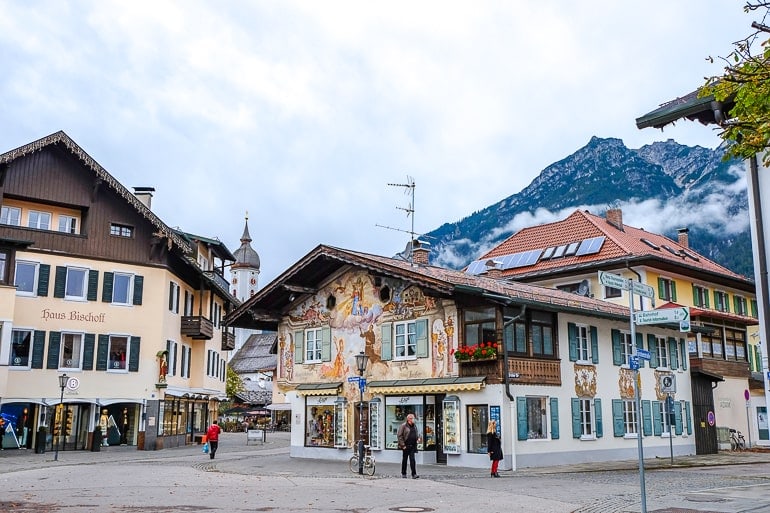
Another popular day trip from Munich – and the one we would recommend for Day 6 of this itinerary – is a trip to Garmisch-Partenkirchen in the south of Bavaria, close to the Austrian border.
We have been to Garmisch-Partenkirchen recently and really enjoyed our day there. However, that was during the shoulder season, so we can’t really say much about how busy it gets in the summer or during the ski-season.
There are a few good reasons for visiting Garmisch-Partenkirchen. The obvious one is that the town is super close to the mountains and it is very easy to reach the “Zugspitze” (Germany’s highest mountain) from here.
Of course, you don’t have to go that high up – there are also lots of other mountains and great hiking trails in the area if you’re looking for a day in nature.
Other reasons why people come to Garmisch-Partenkirchen is to visit the Partnach Gorge which is quite beautiful and/or the old town where you can admire the decorative paintings found on many houses.
It’s actually quite easy to get from Munich to Garmisch-Partenkirchen. By car , it should take you around 1 hr 10 minutes and by train the journey would be approx. 1 hr 22 minutes . It’s actually a nice drive/train ride since you’ll get some great views of the mountains as you get closer to your destination.
Must-see Attractions in/close to Garmisch-Partenkirchen:
- Partnach Gorge
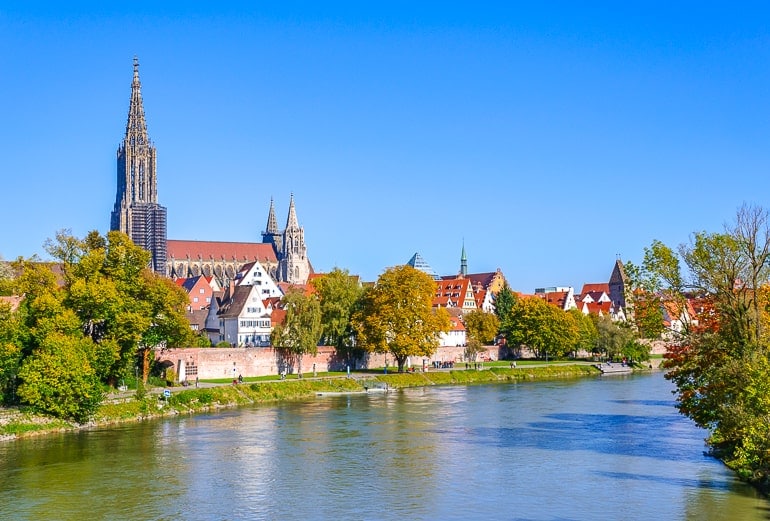
The following day you’ll travel from Munich to Ulm, a small city in the German state of Baden-Württemberg. It is actually located right by the border with Bavaria – “Neu Ulm” in fact is a city on the Bavarian side. When you’re there, it sometimes feels like it is just one bigger city. For you as a visitor, this doesn’t really matter – just an interesting side note.
Ulm is mainly known for having the church with the tallest steeple in the world – so that is something you shouldn’t miss during your visit. Other than that, we’d also recommend that you check out the Fishermen’s Quarter where you can find some beautiful, half-timbered houses.
Getting from Munich to Ulm won’t take you long. The journey will take approx. 1 hr 40 minutes by car and between 1 hr 19 minutes and 2 hrs by train. Once again, this depends on which type of train connection you choose (ICE vs. regional trains).
Accommodation in Ulm: It’s best to stay in the centre of Ulm since it’s not huge and the attractions can mostly be found there. You can check here for accommodations and hotels in Ulm .
For a boutique hotel option right in the city centre, check out Boutique 005 Ulm City . This hotel is super walkable to the train station if you are arriving by train but also offers an option for parking. It’s location makes it really close to all the top attractions in the city.
For a stay closer to the river, you can check out the Hotel am Rathaus – Hotel Reblaus . With onsite parking available and a really good breakfast, this more “authentic” hotel is an experience not to be missed in Ulm.
Must-see Attractions in Ulm:
- Ulmer Münster
- Fishermen’s Quarter
Day 8: Stuttgart
From Ulm, you’ll head to Stuttgart on the next day. Stuttgart is a city that we have mentioned a few times in this article already. If you’ve read some of the other itineraries, you’ll know that Stuttgart is known for both cars and wine.
Of course, there’s more to see in the city than that. If you’re interested in architecture, you might enjoy visiting the New Palace at the “Schlossplatz” and if you’re into art, the Staatsgalerie (an art museum) might be for you.
Getting to Stuttgart from Ulm will only take slightly over 1 hr by car and approx. the same amount of time by train . There are slower trains – called RB instead of RE which stands for “Regional Express” – that take longer than that. However, if you plan ahead, you shouldn’t have a problem catching an RE or ICE Train since they run frequently throughout the day.
Accommodation in Stuttgart: Since there are a number of places to stay in, you can check here for accommodations and hotels in Stuttgart .
Those with a car can check out the Abalon Hotel ideal because it has an underground parking garage while those travelling to Stuttgart by train can check out the Pension am Heusteig since it’s easy to get to walking or with the metro.
Day 9: Day Trip to Tübingen
On day 9 of this itinerary, you have the choice between either spending a second day in Stuttgart or taking a day trip to Tübingen, a university town not far away.
Tübingen is a popular day trip from Stuttgart and is mainly known across the country for its old university. In fact, some of Lisa’s friends have studied there. When in town, you shouldn’t forget to visit the market square with its 15th century town hall. Another popular attractions is the Hohentübingen Castle on the hill which nowadays is home to a museum.
It won’t take you long at all to get to Tübingen from Stuttgart. That makes it great for a (half-)day trip. The journey should only take around 42 minutes by car and between 43 minutes and 1 hr 30 minutes by public transport – depending on the connection you choose.
Must-see Attractions in Tübingen:
- Hohentübingen Castle
- Market Square with Town Hall
- Hölderlinturm
Day 10: Frankfurt
On the last day, you’ll make your way back to Frankfurt. This is where your itinerary ends since it will hopefully be easy for you to get back home from here.
The journey from Stuttgart back to Frankfurt will probably be the longest one for this trip – but it’s still easily doable. It should take you approx. 2 hrs 25 minutes by car and between 1 hr 17 minutes and 3 hrs 30 minutes by train. Once again, this is dependent on the connection you choose (ICE vs. regional trains).
Accommodation in Frankfurt: Since you’re back in Frankfurt, we already went over accommodations in Day 1 of this same itinerary. That said, you can check here for accommodations and hotels in Frankfurt and specifically check out the Motel One Frankfurt-Römer for a central hotel with parking.
Germany Itinerary 14 Days
This Germany itinerary is the longest one that we have for you – for now. If anyone is interested in a 21 day version, please let us know!
The distance you’d cover with this 14 day itinerary would be around 1960 kilometres . The driving time would be approx. 22.5 hours – but of course, this varies depending on traffic and the exact route you decide to take.
As you’ll see below, sometimes the driving time between two cities is longer than 3 hours. So, while this itinerary is totally doable in two weeks – if you wanted to slow down the pace a bit, you could just as easily spend more time in some of the cities and complete the itinerary in more days.
Since you have probably already read about most of these places in some of the itineraries above, we’ll try to keep the descriptions short and not get too repetitive.
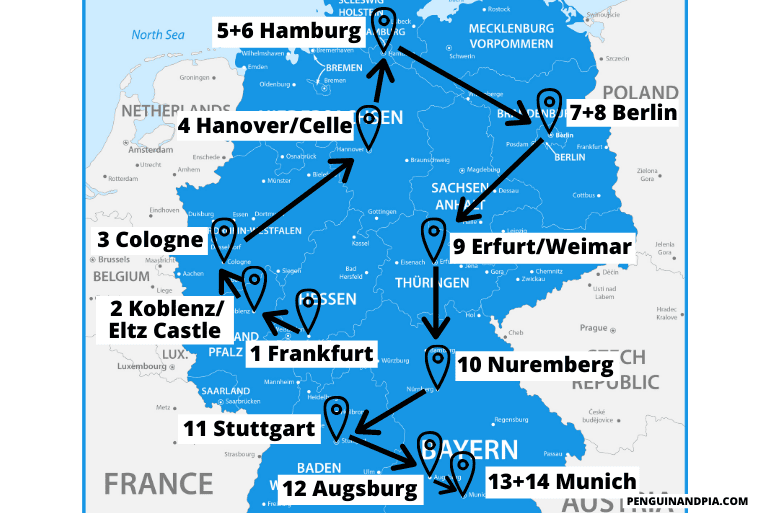
Our version here is written as an “incomplete route” from Frankfurt to Munich. However, as with most of our itineraries, you are welcome to reverse the direction if that works better for you and/or start and end in the same city. So, to see a big part of the country, your 14 day Germany itinerary could look something like this:
Day 1: Frankfurt Day 2: Koblenz / Eltz Castle Day 3: Cologne Day 4: Hanover or Celle Day 5+6: Hamburg Day 7+8: Berlin Day 9: Erfurt or Weimar Day 10: Nuremberg Day 11: Stuttgart Day 12: Augsburg Day 13+14: Munich
Once again we begin this itinerary in Frankfurt since it is an easy city to get to. As we have mentioned before, there are a few things to see in the city so you can start exploring on day one!
Frankfurt is also a great city to pick up a rental car. Since many international (business) travellers fly into Frankfurt, there should be many cars available with automatic transmissions. In smaller German towns you’ll find that this is not always the case.
Accommodation in Frankfurt: If you are making a stop in Frankfurt, you can check here for accommodations and hotels in Frankfurt .
As for accommodation options, the Motel One Frankfurt-Römer has parking available and is located in the city centre close to the Main River. That’s important if you have a car with you but it’s also walkable to the train station, so you know.
Another great hotel option that is even closer to the train station is Fleming’s Express Hotel Frankfurt . This hotel is known for its prime location to the north of the station, its tasty breakfast, nice decor, and fair price. This is definitely a popular place you should at least look into if you are travelling by train around Germany.
Day 2: Koblenz / Eltz Castle
On day two of this itinerary, you’ll be on your way to Koblenz, a small German city on the Rhine river. You can either explore the city or use it as a base to visit one of the many castles close by.
Our suggestion would be a visit to Eltz Castle which is a beautiful medieval castle surrounded by a forest. Please keep in mind that the castle is not open year round. You can check opening hours here .
You could also visit Eltz Castle as a day trip from Frankfurt but then you’d have to return to Frankfurt at the end of the day. This wouldn’t make much sense unless you want to spend some more time in Frankfurt anyway, as Cologne (your next destination) is closer to Koblenz and Eltz Castle than Frankfurt.
The drive from Frankfurt to Koblenz should take around 1 hr 30 minutes by car . If you want to take the train , the journey would take between 1 hr 30 minutes and 2 hrs 15 minutes . From Koblenz, it is only about a 30 minute drive to Eltz Castle.
Accommodation in Koblenz: Since Koblenz isn’t that large, you should have no problem finding and choosing an accommodation that works for you. You can check here for accommodations and hotels in Koblenz .
If you want a popular option right in the heart of the city centre, you should see the Sander Hotel . This hotel is located within walking distance to the rivers as well as restaurants and shops in the centre. If you travel by car to Koblenz, they have onsite parking which is handy. That said, you can also easily walk from the hotel to the train station in minutes.
Day 3: Cologne
The next stop on your 14 day Germany itinerary is Cologne, a city we have mentioned already in some of the previous itineraries. As you might know, the highlight of the city is the Cologne cathedral which is quite an impressive sight. As the city is located on the Rhine river, a boat tour might also be a great activity depending on the time of year you are visiting.
Getting to Cologne from Koblenz takes around 1 hr 15 minutes by car and between 50 minutes and 1 hr 15 minutes by train . The train tracks follow the Rhine river for part of the journey which allows for some beautiful views!
Accommodation in Cologne : There are lots of great places to stay in Cologne. You can check here for accommodations and hotels in Cologne .
We recently stayed at the Lindner Hotel City Plaza which was great value for money. The breakfast buffet is incredible and it’s an easy, short walk into the city centre near the Cathedral. It also has parking available for those with a car.
If you want to stay a little closer to the river and the Old Town, check out the CityClass Hotel Residence am Dom . With many things around to keep you busy – like attractions, food, and/or drinks – you’re just a short walk to the central train station if you stay here.
For those looking for a hostel, Cologne Downtown Hostel was a great stay for Eric a number of years ago. It’s really popular, in a great location, and has a nice rooftop balcony to enjoy.
Day 4: Hanover or Celle
Day 4 of this itinerary will take you to either Hanover or Celle depending on your preference. Celle is a noticeably smaller city/town than Hanover and the two places are only a few minutes apart.
Getting from Cologne to Hanover will take approximately 3 hrs 10 minutes by car and between 2 hrs 40 minutes and 3 hrs 5 minutes by train .
Accommodation in Hanover: Since Hanover is a well-travelled city for people moving around Germany, there are a number of accommodation options in and around the city centre. You can check here for accommodations and hotels in Hanover .
To stay very close to the central train station in the city centre, you should see the Hotel Loccumer Hof . The location makes it great if you are travelling by train and on foot. They also have onsite parking if you are arriving to Hanover with a car!
To the south of this hotel, the Arthotel ANA Prestige am neuen Rathaus is an option right across from the New Town Hall. This hotel has a beautiful, light style and is also close to the water/parks. Complete with breakfast and onsite parking, you can’t go wrong here!
If you want to spend a night in a smaller German city instead, then Celle is a good option as it is not far from Hanover. That will make it easy to reach the next stop on your itinerary without too much of a detour. The journey from Cologne to Celle would be slightly longer and take around 3 hrs 30 minutes by car and 3 hrs 19 minutes by train .
Accommodation in Celle: Celle isn’t that big at all – so there are only a handful of places to stay. That said, there are still some great options. You can check here for accommodations and hotels in Celle .
Of note, check out Hotel Borchers . This hotel – one of only a handful located in the heart of “city centre” is a top pick with a tasty breakfast and an underground car park. You can also walk there from the Celle train station which is located not too far across town.
Must-see Attractions in Celle:
- Celle Castle
- Bomann Museum
- French Garden
Day 5+6: Hamburg
An itinerary across a large part of the country wouldn’t really feel complete without including Hamburg. Since there is quite a bit to see in this hanseatic city, you’ll spend two nights in the city to give you more time to explore.
Getting from Hanover to Hamburg will take you approx. 1 hr 45 minutes by car and between 1 hr 15 minutes and 2 hrs 30 minutes by train . As mentioned before, this varies depending on the type of train connection you choose.
The journey from Celle to Hamburg will be approximately 15 minutes shorter at 1 hr 30 minutes by car . If you opt for the train, you can expect travel times between 1 hr 10 minutes and 2 hrs .
Accommodation in Hamburg : Since Hamburg is a well-travelled city, it makes sense that there are loads of places and areas to stay in. You can check here for accommodations and hotels in Hamburg .
The Mövenpick Hotel Hamburg might work for those with a car since they have onsite parking. This old water tower is a different hotel than you might be used to but it’s a great experience overall.
Something closer to the central station to get to on foot would be the ARCOTEL Rubin Hamburg which is located in St. Georg. This is an area with shops and restaurants and is very much part of the city centre.
Those looking for a budget accommodation can check out Generator Hamburg which is a popular hostel close to the train station. If you’re ever unsure or want more advice, we have a detailed guide on where to stay in Hamburg .
Day 7+8: Berlin
Of course, we couldn’t forget to include a stop in the capital of the country when planning a longer trip through Germany. Since there is so much to do and see in Berlin you will spend two nights there.
This will also give you some more time to recover from all the driving you have done so far on this journey. Getting from Hamburg to Berlin takes approximately 3 hrs 20 minutes by car (obviously traffic depending) and just about 1 hr 50 minutes by train .
Accommodation in Berlin : There are lots of hotel options in Berlin. You can check here for accommodations and hotels in Berlin .
The Park Plaza Wallstreet Berlin Mitte is a good option in the city centre for those coming to Berlin with a car while the NH Collection Berlin Mitte am Checkpoint Charlie is located right at the attraction “Checkpoint Charlie” in the city centre.
A great option for a hostel/hotel where Eric stayed a few years back is PLUS Berlin . You can find it near the famous East Side Gallery which is a very popular attraction to check out.
As mentioned a few times now, we also have more articles on t hings to see in Berlin and a one day Berlin itinerary .
Day 9: Erfurt or Weimar
For the following day you have the choice between Erfurt or Weimar as your next destination. Both are small cities in the state of Thuringia with Weimar being smaller than Erfurt. If you know anything about Martin Luther, an important figure in the Protestant reformation, then you might have heard of one or both of these places before.
If you’re looking for a place with a beautiful old town and some nice churches as well as buildings for you to explore, then we’d really recommend Erfurt. We had a great time during the days we spent there. The city also has some really nice, cozy cafes if that is something that you care about.
Getting to Erfurt from Berlin will take a while – but it is a great stop on the way to the south of Germany. You can expect the journey to take approx. 3 hrs 40 minutes by car and just around 1 hr 50 minutes by ICE (fast train) .
Accommodation in Erfurt: With Erfurt being a smaller city with a smaller central area to explore, finding a place to stay isn’t too difficult. You can check here for hotels and accommodations in Erfurt .
When we visited Erfurt, we booked the Gästehaus in der Gotthardtstraße . This was a simple guesthouse with a nice host and cozy rooms located just a short walk north of the Krämerbrücke. There’s also a small parking lot onsite if you’re coming to Erfurt with a car.
For a stay that is more central, check out Hotel Krämerbrücke Erfurt . It’s located basically right beside the Krämerbrücke making it a great option if you are travelling by train and you’re on foot.
Once again, if you want to learn some more about Erfurt before you visit the city, check out our detailed Erfurt Guide here .
If you instead preferred to learn some more about the well-known German writers Goethe and Schiller – or about Germany’s dark past – then you should plan to visit Weimar instead.
Two of the highlights there are Goethe’s and Schiller’s House – now turned into museums. Close to Weimar there’s also the Buchenwald Memorial which was a former Nazi concentration camp. This was the first KZ-Memorial Lisa ever visited. It was a somber experience, but also an important one in regards to understanding more about Germany’s past.
The journey from Berlin to Weimar will be slightly shorter than to Erfurt – at least by car. It’ll take approx. 3 hrs 15 minutes by car and around 2 hrs 20 minutes by train .
Accommodation in Weimar : There are a handful of places to stay in Weimar since it’s a smaller city – but you still have good options. You can check here for accommodations in Weimar .
In particular, check out Amalienhof Hotel und Apartment . This classic and very popular hotel is just south of the heart of the city centre. It features parking onsite and an excellent breakfast. It’s also not too far to walk to the train station if you are arriving on foot.
Must-see Attractions in/close to Weimar:
- Buchenwald Memorial
- Goethe’s House
- Schiller’s House
Day 10: Nuremberg
On day 10 of your itinerary, you’ll drive – or take the train – from Erfurt/Weimar to Nuremberg. This Franconian city has also been mentioned in some of the shorter itineraries.
The journey from Erfurt to Nuremberg will take approx. 2 hrs 40 minutes by car in a southern direction. The drive from Weimar to Nuremberg will just be a couple minutes longer.
If you decide to take the train, the journey would take between 1.5 hrs and 2 hrs from Weimar and between 1 hr 10 minutes and 1 hr 30 minutes from Erfurt .
Accommodation in Nuremberg : Nuremberg is a city with loads of history and attractions so it’s very popular. As such, you will find hotels and accommodations all over the city – from the old town to the surrounding areas. You can check here for accommodations and hotels in Nuremberg .
We booked a stay at Five Reasons Hotel and Hostel and we would recommend it. You can find the place inside the massive old city walls so the location was great – walkable to the central train station and also to go find top attractions.
On the same trip, friends of our stayed at the Sheraton Carlton Nuremberg . It was close to where we stayed and they really enjoyed it. There’s this great pool on an upper floor with city views as well as a parking lot across the street if you travel to Nuremberg by car. The train station is close as is the old town by walking so it’s great option overall, too.
Day 11: Stuttgart
The following day you will be on your way from Nuremberg to Stuttgart – once again, a city we have mentioned multiple times now during this article. From Nuremberg, it’ll take you around 2 hrs 15 minutes by car and between 2 hrs 10 minutes and 2 hrs 30 minutes by train to get to Stuttgart.
As we’ve mentioned before, if you are driving and have the time, you could take a small detour and stop in Rothenburg ob der Tauber for a stroll through its beautiful old town. We’ll leave that up to you!
Accommodation in Stuttgart: You can check here for accommodations and hotels in Stuttgart .
The Abalon Hotel ideal has parking for those with a car while the Pension am Heusteig is a guesthouse close by but is easy to get to by the metro system if you arrive by train to central station and you are walking.
Day 12: Augsburg
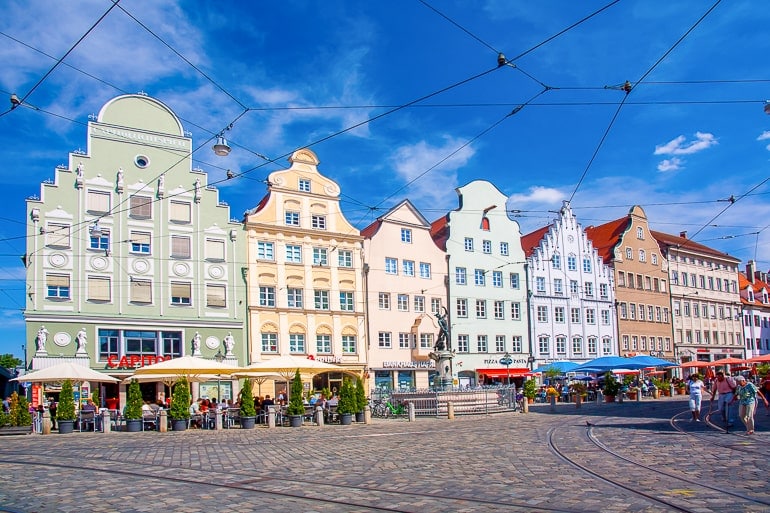
On day 12 you’ll be on your way from Stuttgart to Augsburg, a small city in Bavaria and one of Germany’s oldest cities. Around Germany, most people have heard of Augsburg because of its “Fuggerei” – a historic social housing complex where rent has increased very slowly over the centuries. It’s certainly worth a visit!
It’ll take you around 2 hrs by car to get from Stuttgart to Augsburg. If you opt for the train , then you can expect the journey to take approx. 1 hr 40 minutes .
Accommodation in Augsburg: In Augsburg, you will find a number of places to stay around the city centre. You can check here for accommodations and hotels in Augsburg .
For a reliable stay, check out Hotel Augusta . This popular hotel – located right in the city centre – features breakfast and has parking available if you are travelling to Augsburg by car.
The nice thing about Augsburg is that because it’s a smaller city, you can easily walk to the hotel from the train station if you are arriving by train.
You might also check out City Hotel Ost am Kö which is another hotel in the heart of the centre walkable to the station. It also has breakfast and parking garage right nearby.
Must-see Attractions in Augsburg:
- Augsburg Cathedral
- Perlach Tower
Day 13+14: Munich
On your second to last day of this itinerary you will drive from Augsburg to Munich. That’s the last stop on your two week Germany adventure. In Munich, there is more than enough to see to spend two days in the city.
Munich also has an airport with good international connections in case you’re coming from overseas and need to take a plane to get back home. If that’s not the case, we’d encourage you to see whether the train would be an alternative to get you back home as well.
The journey from Augsburg to Munich should take just less than 1 hr by car and between 30 and 48 minutes by train. So it’s certainly one of the shortest transitions mentioned in this article.
Accommodation in Munich: If you’re exploring Munich while in Germany, there is no shortage of places to stay and areas to check out. You can check here for accommodations and hotels in Munich . For this itinerary, remember to book your Munich accommodation for two nights.
We really liked our stay at the H2 Hotel München Olympiapark . From the really good breakfast, nice rooms, and excellent location with metro access nearby – you cannot beat the price for Munich. There’s also parking available if you’re travelling with a car to Munich.
For a spot right in the heart of Munich’s charming old town, check out the Platzl Hotel Superior . This is a trendy hotel that puts you super close to all the action at busy Marienplatz and is steps from Hofbräuhaus, the beer hall made famous decades ago. You can also catch the metro or walk to the central train station from here.
If you are looking for more details on accommodations in this city, we wrote a detailed guide on where to stay in Munich .
To learn more about the city – as we have mentioned before – check out our post on Munich in a day if you want more details about the city!
And there you have it – one massive Germany guide with more than one Germany itinerary to suit your travel needs! Whether you’re looking for a short 5 day or a wild 14 day itinerary – we’re sure you’ll have a great time exploring Germany. We’re actually really happy to have created this post – Lisa especially. It’s always fun to help others explore your home country!
As always, Happy Germany Itinerary Waddlin’, – L&E
- Compare flights on Skyscanner
- Check for Hotel Deals or Book A Hostel
- Get A Rental Car (depending on the destination)
- Research plug types and possibly get a travel adapter
- Go over our packing list
Pin it for later!
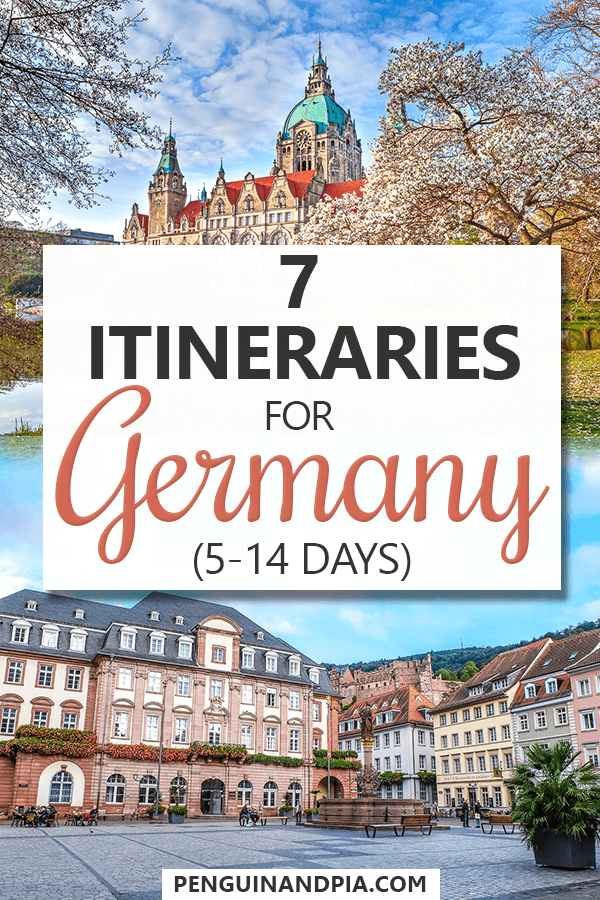
As an Amazon Associate we earn from qualifying purchases.
Destinations
Privacy policy
Disclaimer & Affiliate Disclosure
Terms of use
© 2024 Creativlier Media Inc.

The home of Bach, Beethoven, and Oktoberfest, visit this amazing country, rich in culture, history, nature, and great beer!
With its long, rich history, natural beauty, and modern, trendy vibe, it is no wonder that Germany is a popular tourist destination in Central Europe. The country boasts centuries of culture, religion, and history alongside an epic urban revival with contemporary attractions, hipster art, and a notable music scene. Surrounded by the Alps in the south and the North Sea along its top border, Germany offers a diverse landscape, from agricultural plains to mountainous regions, in every part of the country.
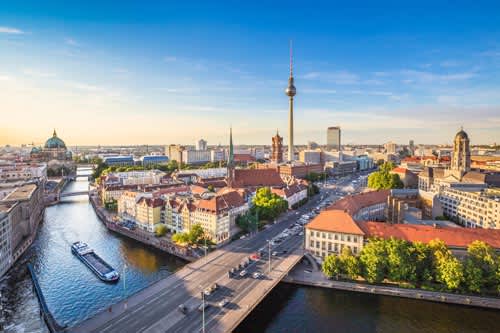
With rich history, vibrant nightlife, world-renowned cuisine, and amazing museums, there is something for everyone in Germany's capital.

Freiburg Im Breisgau
Freiburg im Breisgau is a popular tourism destination, especially because of its temperate climate in the winter and the cool temperatures in the summer.

Despite heavy bombing during WWII, still evident today, Dresden is an exquisite Baroque-laden city with wonderful attractions.

Surrounded by the most beautiful scenic areas in the vicinity, in the south-west German state of Baden-Württemberg, is the university town of Heidelberg.

A majestic and lively port city, with stately historical buildings, monuments, vibrant atmosphere.

Cologne, one of the oldest of Germany’s cities, was originally a Roman colony and traces of Colonia is felt in every corner.

A major financial hub since the 16C, Frankfurt seamlessly combines modern skyscrapers with genuine historic charm.

Baden-Baden
The city of Baden-Baden is on the UNESCO’s World Heritage List since 2021.
Trip Planner - Germany
Create your perfect trip to berlin, germany.
Easily plan your trip based on your preferences, budget, and style
Plan your trip with RoutePerfect’s AI and optimize it by using RoutePerfect’s crowdsourced database, based on proven and enjoyable, well-crafted itineraries of thousands of travelers.
Berlin , the capital, is famous for its galleries, museums, festivals, and modern landmarks. Visit the Reichstag Building , Brandenburg Gate , the Berlin Wall Memorial , and Museum Island , home to the city’s most important exhibition centers. Berlin’s allure is enhanced by its numerous entertainment venues, orchestras, and universities.
Munich lies on the fringes of the Bavarian Alps. Its historic inner city, composed of medieval walls, old city gates, and curving streets, is a top attraction, with the Marienplatz is its focal point. In addition to the beautiful churches and outstanding museums and palaces, Munich is also known for its rich culture, colorful markets, and mouthwatering pastries.
Other cities to visit in Germany include Freiberg, often referred to as a hidden gem, with much of the cultural lure of Berlin and Munich but with fewer tourists, Cologne , and Dresden . Cologne, situated close to the Belgian and Dutch borders, is a mosaic of cultures and is home to numerous museums, historic churches, and Baroque palaces. Dresden, historically one of the great Baroque cities but one that faced near- destruction in the 20th century, has been rebuilt as a beautiful modern city. It is located along the Elbe River, close to the magnificent Elbe Valley.
The enchanting Black Forest, the setting of many Grimm fairy tales, is a destination famous for its canopy of evergreens, scenic lakes, quaint villages, and old castles.
Other popular tourist destinations in Germany include Neuschwanstein Castle , Hamburg ’s Miniatur Wunderland , and the Rhine Valley.
Like much of central Europe, the weather in Germany is most conducive to touring from May through September. The tourist season generally subsides after the Oktoberfest, which takes place annually in Munich starting on the first day of autumn. The Alps, which afford breathtaking summer hikes, provide some of the world’s best skiing in the winter, making Germany’s great outdoors a destination year round.
Need guidance? Help yourself to a tall glass of cold German beer and start planning, organizing, and booking your customized dream trip to Germany using RoutePerfect’s unique set of planning tools. Unlike any other company, Routeperfect offers its exclusive Popular Itineraries written by tourism professionals and experienced travelers to jumpstart your planning, helping you to personalize your travel and book your accommodations so that you can experience the country YOUR way.
Regions in Germany
Attractions in germany, suggested friends itineraries for germany, suggested romantic itineraries for germany, suggested other itineraries for germany, suggested family itineraries for germany.
RoutePerfect uses cookies to improve our content and provide you with a personalized experience. By clicking "Accept All Cookies", you agree to the storing of cookies on your device to enhance site navigation, analyze site usage and assist in our marketing efforts. Learn more
Privacy settings
Here you will find an overview of the types of cookies used on the website. You can set your consent for each category individually. Further information can be found in the privacy policy .
- Essential Cookies For the use of the website with all functions (e.g. user settings, watch lists, etc.)
- Statistics Statistics Cookies collect information anonymously. This information helps us to understand how our visitors use our website.
- Marketing In order to provide you with the best possible offer in cooperation with our partners, we use marketing tools. For example, in order to use our chatbot, you must activate this setting.
- External contents Required for viewing external media and third-party content. The provider may set cookies for its part. The respective data protection regulations of the provider apply.
Discover your german origin
#DiscoverYourGermany
- Famous People
- Made in Germany
Travel Planning
We have everything you need to start planning an unforgettable trip to Germany. Find engaging articles, media galleries, itinerary inspiration and travel tips to guide you on your way. Explore towns and cities, activities for all ages, memorable events and can’t-miss attractions. What are you waiting for? Let’s go!
What It’s Like to Explore Your German Roots
We sent four Americans with German heritage to explore their roots in Germany. Follow Karen, Mike, Joe and Matt as they hike through the German countryside, wander museums, explore where Gutenberg and Martin Luther worked, and visit the towns and villages where their ancestors lived.
German Emigration Center
Farina house, martin luther, johannes gutenberg, deeply rooted in tradition: germany’s beers, hiking northern bavaria, photographing germany, featured itineraries.
Get inspired to discover your German heritage with these suggested trip itineraries.
Explore An Architectural Past
Admire the range of historical structures.
Castles Bearing German Legends
Visit the breathtaking castles from Eisenach to Garmisch.
Sailing To The New World
Explore emigrant stories in Bremerhaven other cities.
Discover Traditional Germany
See Germany's natural landscape and cultural highlights.
The Farewell
Discover meaningful sites from Bremen to Hannover.
Grüss Gott America
Learn about famous Germans who impacted American culture.
The Palatinate Emigrant
Explore a history of great inventions with German origin.
Discover More
Natural landscapes, health & wellness, scenic routes, food & drink, sustainable travel, in cooperation with.
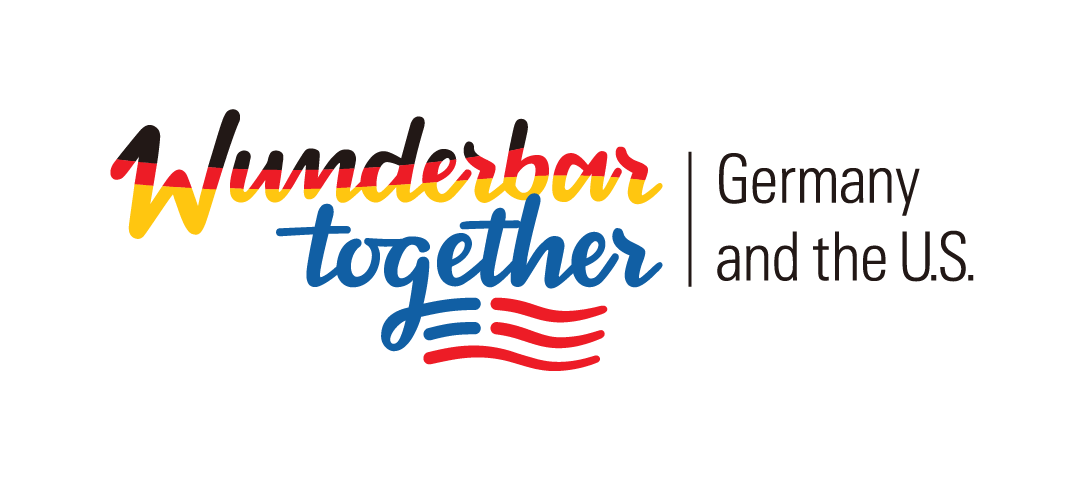

The Only Germany Travel Guide You’ll Ever Need
Last Updated: January 5, 2024
*FYI - this post may contain affiliate links, which means we earn a commission at no extra cost to you if you purchase from them. Also, as an Amazon Associate I earn from qualifying purchases. Check out our Privacy Policy and Disclosure. for more info.
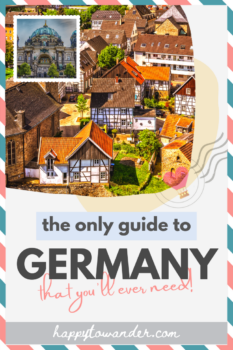
While most commonly associated with beers, bratwursts and tight leather pants, Germany is a country full of delightful finds that extend far beyond the stereotypes.
From dreamy castles and fairytale towns to awe-inspiring nature and sprawling cities, Deutschland has a little something for every kind of traveler… although I’ll admit the leather pants are also great.
I first visited Germany on a 6 week backpacking trip across Europe, and as I sipped my comically large beer under the toasty Berlin sun, I felt a strange sense of calm and belonging.
Spurred by this hunch, I moved to Munich. One study abroad, and 5 years later, I’m still here, with so much giddy enthusiasm for this country that I’ve become a thoroughly insufferable dinner guest.
But my social life’s loss is your gain, my friend… because today, I’ve decided to channel all my Deutschland fangirl tendencies into this concise Germany travel guide filled with all my top tips, itineraries, and recommendations.
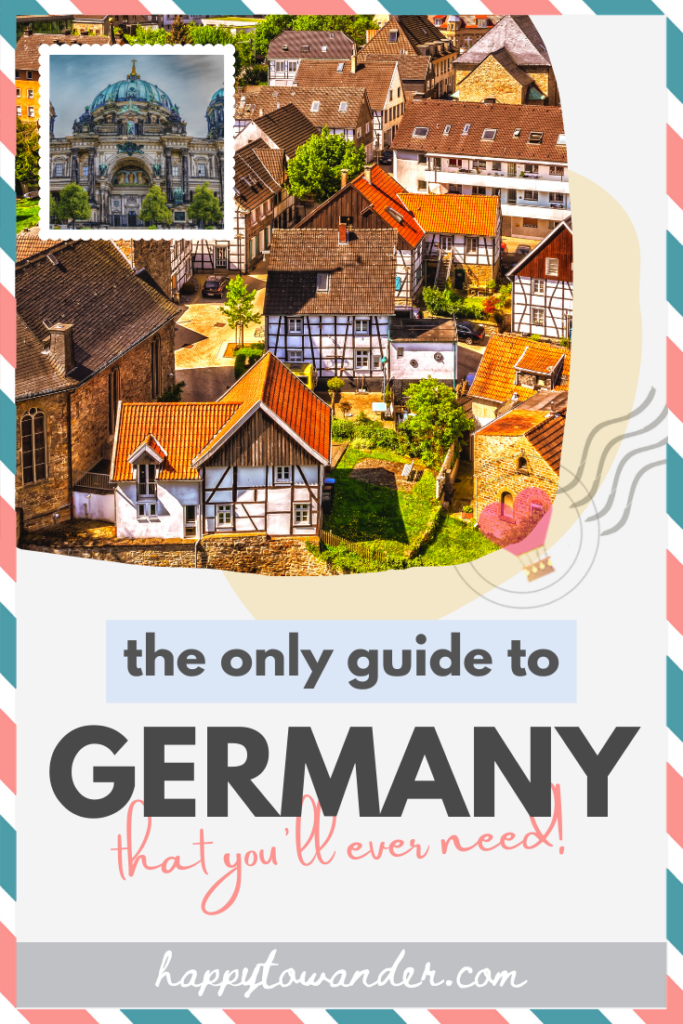
Save this Germany travel guide for later!
I promise it’ll come in handy!
I hope you find it helpful, and of course, feel free to ask any more questions in the comments section or on Instagram here.
Traveling to Germany Basics
Currency: Euro
Language: German, although accents and dialects vary wildly! In larger cities and tourist hotspots, most Germans also speak excellent English.
Getting Around: Trains, buses and flights are plentiful and affordable in Germany – my best tip is to use Omio to compare options easily. Having a car is ideal for visiting smaller towns, more remote locations and numerous destinations in a short amount of time, but is otherwise not needed for big cities.
Germany Highlights (By the Season)
- Winter: Christmas markets, skiing & alpine sports, Karneval and Fasching season (Carnival), Starkbier (Strong beer) season
- Spring: Cherry blossoms in Bonn , Frühlingsfest (Springfest) in Munich
- Summer: Hiking, Beer Garden season, summer festivals/celebrations
- Fall: Oktoberfest and other Volksfests, the world’s biggest pumpkin festival in Ludwigsburg, the Wurstmarkt (world’s largest wine festival)
My Favourite Places in Germany
Let’s get my mega-biased opinion out of the way first – Munich is the city I now call home, and I couldn’t recommend it more… especially if you’re obsessed with beer like I am. This is the birthplace of Oktoberfest after all!
There are lots of fun things to do in Munich , like hopping around the city’s sprawling museum district (many only cost 1 euro on Sundays!), eating up the best Bavarian food that Munich has to offer or soaking in the wealth of historical sites scatered around the city.
It’s also an ideal base for many epic day trips. Going from Munich to Neuschwanstein Castle (AKA the real life Sleeping Beauty castle) takes only 2.5 hours. Or, if you want to visit glorious Salzburg from Munich (AKA the birthplace of Mozart and setting of Sound of Music), that’s only 1 hour by train.
Why visit Munich when you travel Germany:
- Amazing beer & beer festivals
- The English Garden – one of the largest city parks in the world
- Beautiful palaces and museums
- Easy base for amazing day trips to the Alps
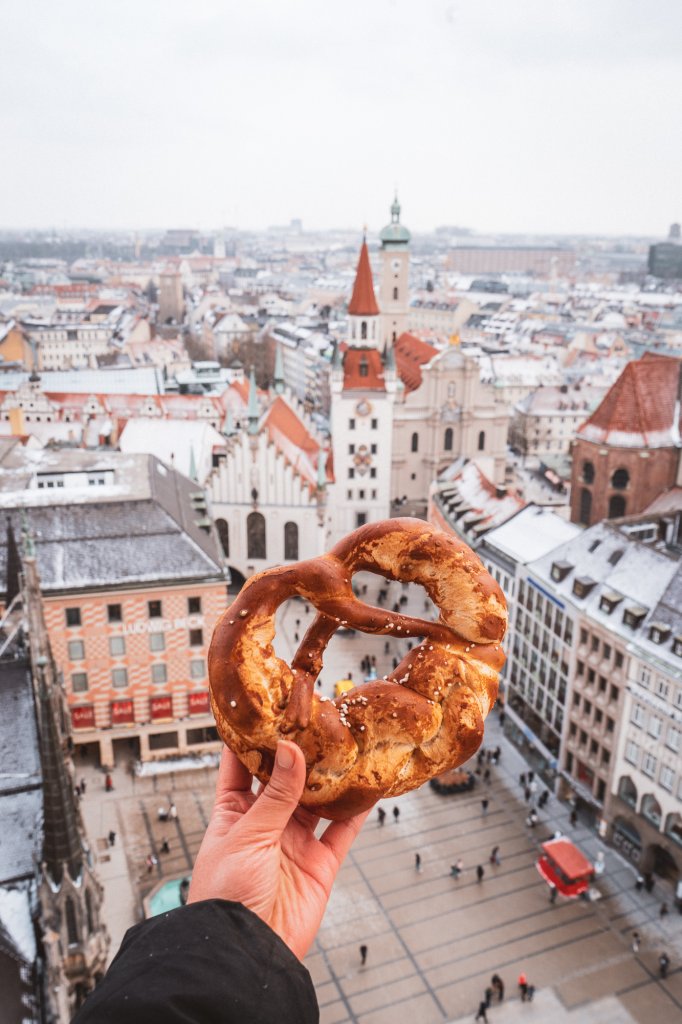
Berchtesgaden National Park
If it’s natural beauty you’re after, Germany’s Berchtesgaden National Park (near the border to Austria) is a must-visit.
Everything here is breathtaking – from the shimmering turquoise lakes and snow-flecked mountains to the adorable Berchtesgaden town center.
And, if you’re up for it, this is the ideal place to enjoy a typically Bavarian wellness weekend.
Why visit Berchtesgaden National Park when you travel Germany:
- Stunning hikes and scenery
- The glorious boat ride on Königssee to see the equally stunning Obersee
- Historic sights like Hitler’s Eagle’s Nest

Hands down one of my favourite places to visit time and time again is Berlin.
This endlessly fascinating city is home to incredible museums, delicious food, and a unique culture that makes it distinct from the rest of the country, despite its status as capital!
Whether you’re a history nerd, an avid partyer, or a famished foodie, Berlin has plenty to offer.
Why visit Berlin when you travel Germany:
- Fascinating history
- World-class museums and attractions
- A thriving nightlife and food scene
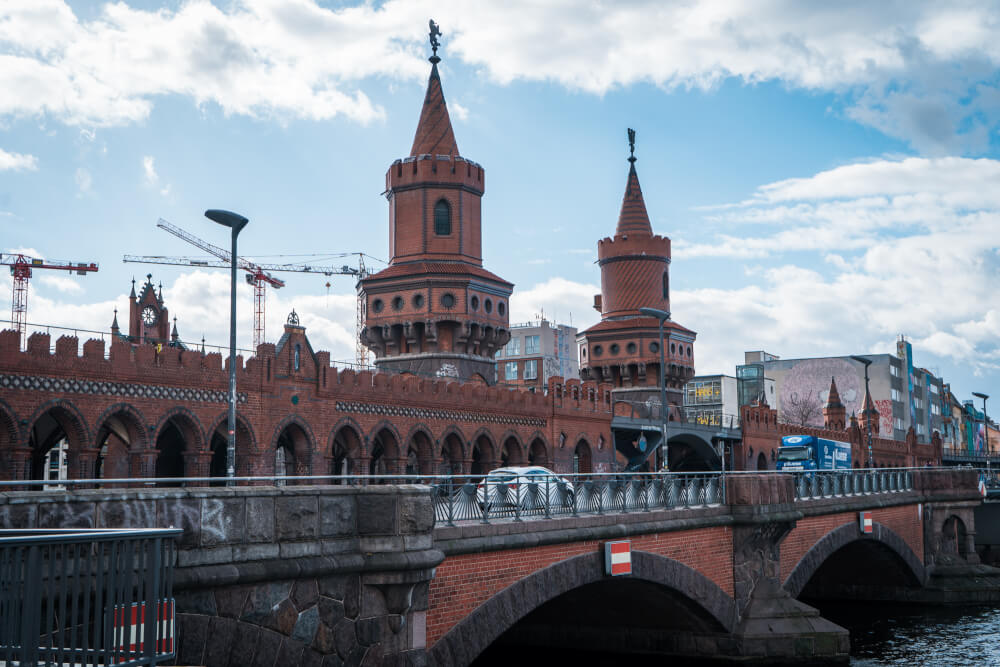
Franconia is a glorious region in northern Bavaria that is divided into Lower, Middle, and Upper Franconia.
To me, it’s one of the most underrated regions in Germany for international visitors, with an abundance of fairytale half-timbered houses, amazing beer, and unique natural landscapes.
Here are some places in Franconia that are absolutely worth visiting:
- Franconian Switzerland
- Würzburg (still haven’t been yet!)
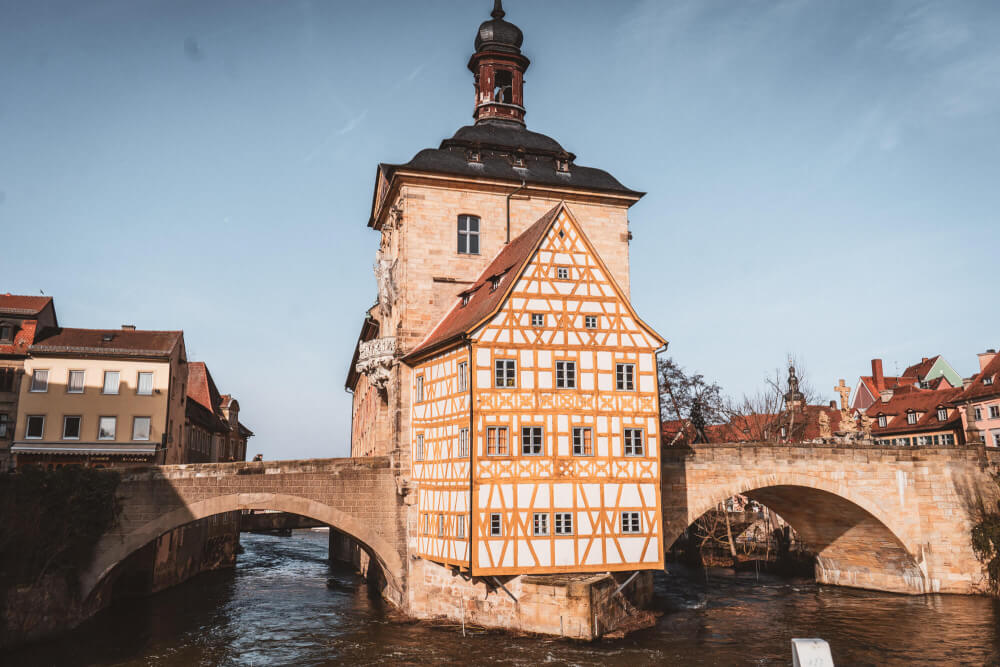
Perhaps the most idyllic entry of this list is Monschau, a sleepy but gorgeous village found near the border to Belgium.
I was lucky enough to come here for Christmas markets a few years ago, and I loved it so much, I skipped the train I’d pre-booked just so I could spend a few more hours there.
Picturesque half-timbered houses clustered around a roaring central river… oh, and a castle on a hill. Because of course they have one.
Why visit Monschau when you travel Germany:
- Super friendly locals
- Picture-perfect scenes at every turn
- Christina might cry if you don’t
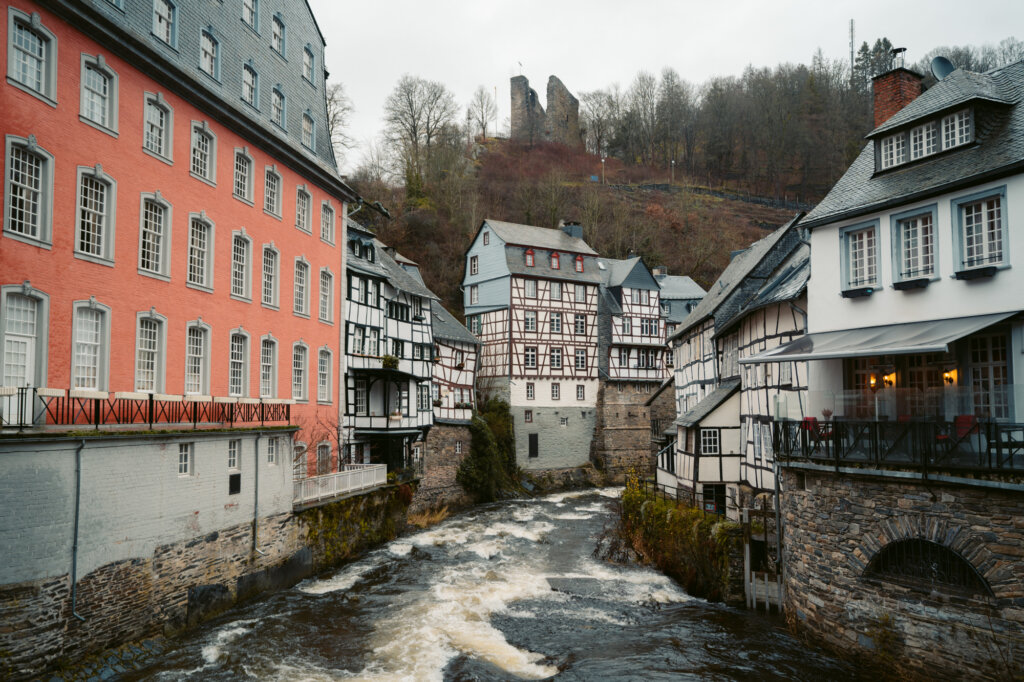
Hamburg is an amazing city I’ve had the chance to visit a few times now. It’s a lifestyle city that reminds me a lot of my hometown, Vancouver.
Home to a mix of classic and modern architecture (including the coolest opera house in the world!), as well as Germany’s #1 attraction – the adorable Miniatur Wonderland, Hamburg has a lot to offer tourists, but perhaps the best way to enjoy it is with a nice beer and sunset along the Elbe.
Why visit Hamburg when you travel Germany :
- Amazing architecture like the Elbphilharmonie
- Fresh and tasty seafood (and a booming foodie scene!)
- A fun, vibrant vibe
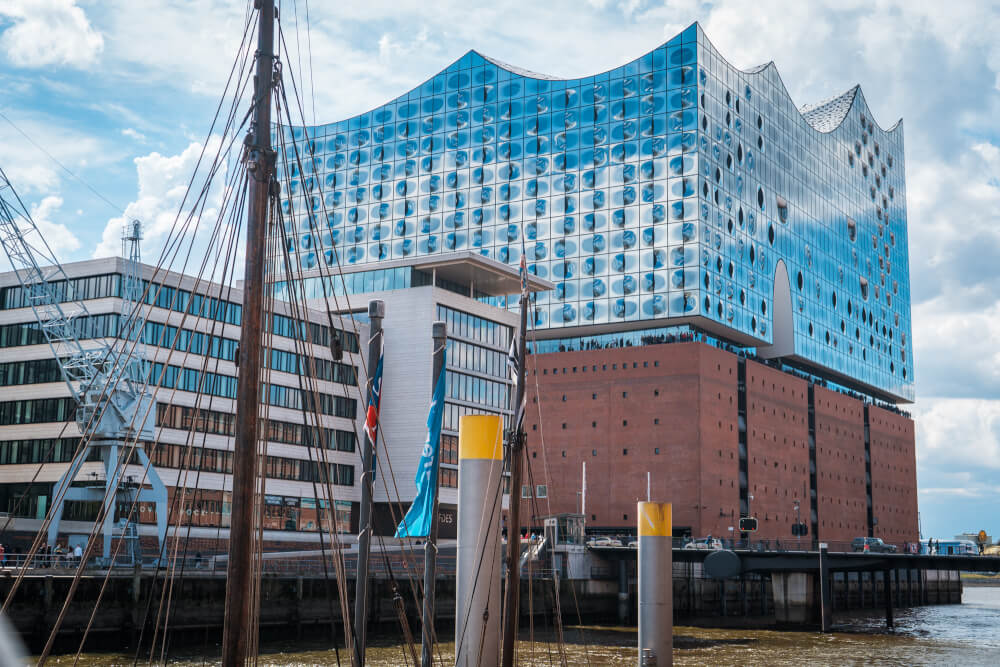
Dresden is one of the most beautiful cities in Germany, and its beauty is all the more astounding when we consider that much of the city was destroyed completely in WWII.
After decades of reconstruction however, Dresden once again shines with its former glory, establishing itself as one of the most important cultural hotspots in Germany.
… and all only a stone’s throw from Saxon Switzerland, one of the most beautiful natural wonders in the country!
Why visit Dresden when you travel Germany :
- Stunning architecture and sights
- World-class museums and culture scene
- Its jawdropping Christmas market (the oldest one in the country!)
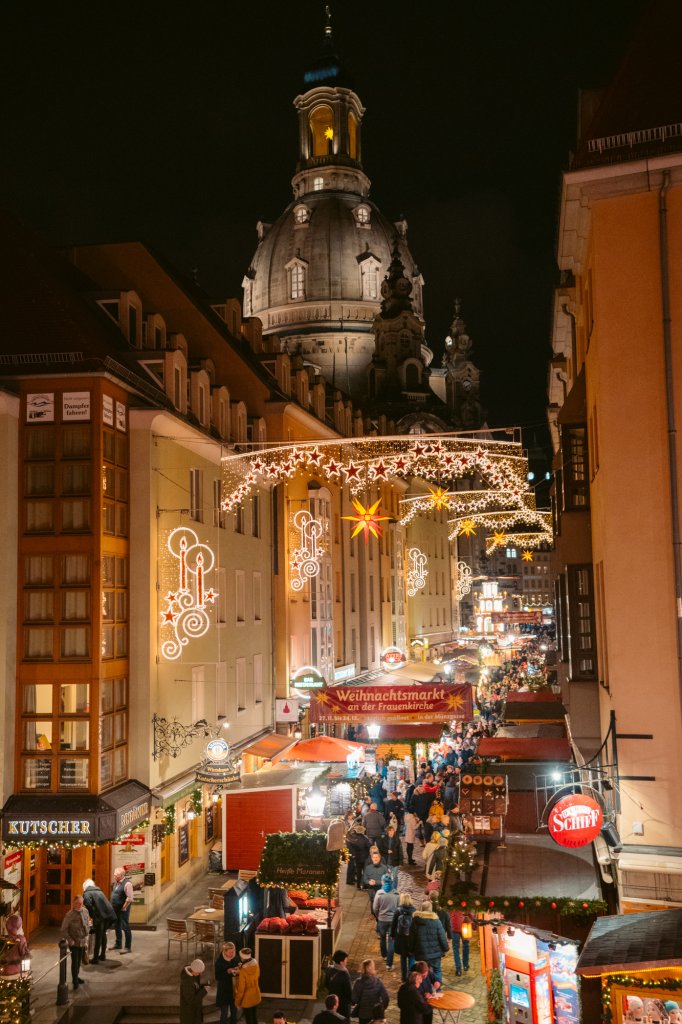
Stuttgart (and its Surrounding Area)
Stuttgart is the biggest city (and capital) of the German state Baden-Württemburg.
It’s perhaps best known as the ‘cradle of the automobile industry’, which explains why it’s home to not just one, but two car-centric museums: one belonging to Mercedes-Benz, and one to Porsche.
Besides cars though, the area around Stuttgart offers up some of the cutest small towns you can find in Germany, all easily reachable by public transport, meaning you get the best of all worlds during a visit here.
Why visit Stuttgart and the surrounding area when you travel Germany:
- Fairytale towns like Esslingen, Ludwigsburg, and Tübingen
- Stuttgart’s Stadtbibliothek, one of the most unique and beautiful libraries in the world
- Lots of fun events like Stuttgart’s Christmas Market and the Cannstatter Volksfest
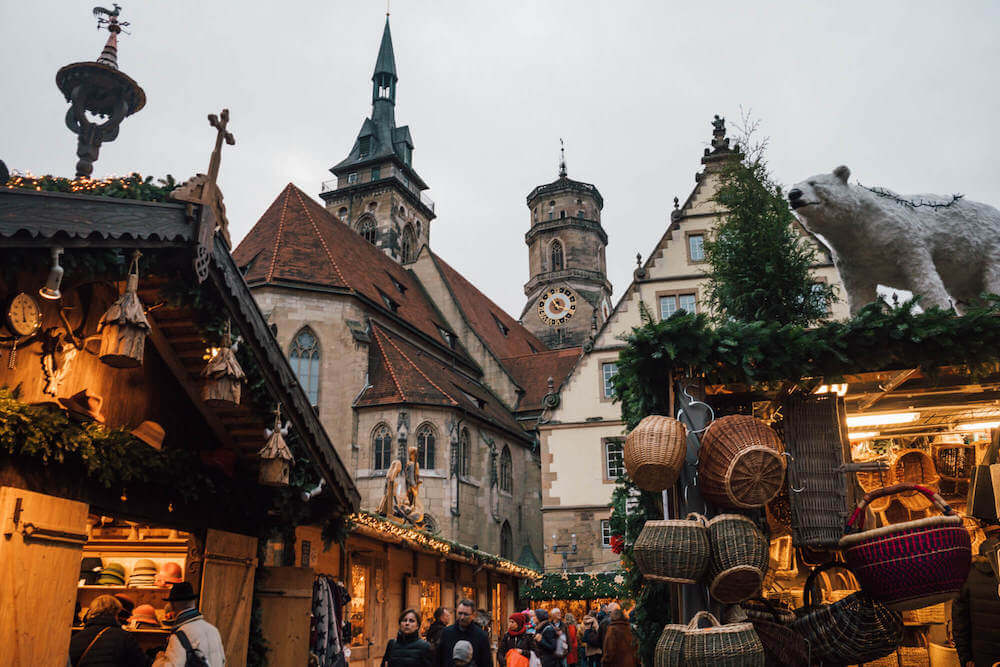
Thuringia is a state often overlooked by international tourists, but if you’re looking for a truly charming German escape, its capital Erfurt makes an excellent choice.
This beautiful city is famed for its unique Krämerbrücke, which is a gorgeous medieval bridge lined with residential buildings.
But that’s not all – there’s also an impressive cathedral, an imposing fortress, and surprises waiting on every corner… quite literally, because Erfurt is the HQ of the German children’s channel KiKA, and there’s plenty of fun statues of famous characters scattered around town.
Why visit Erfurt when you travel Germany:
- Krämerbrücke, the longest inhabited bridge in Europe
- Quirky and fun children’s channel sculptures all over the city
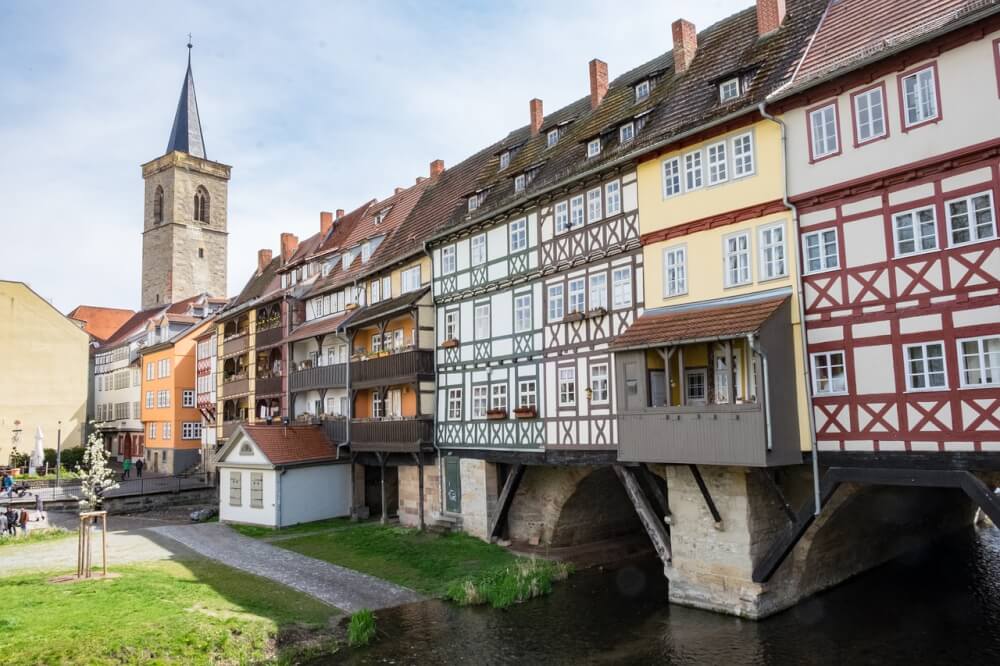
Cologne, to me, is a city synonymous with fun and celebration. While at first glance, it might not rank among the “prettiest” places to visit in Germany (much of it was destroyed in the war), it still boasts several impressive landmarks and sights, like the epic Cologne Cathedral.
Where Cologne really shines though is during special events – the Christmas markets here are some of the best I’ve been to in my entire life, and the Karneval celebrations… well, those are truly epic!
Why visit Cologne when you travel Germany:
- Bucket list events like the Cologne Christmas Market and Kölner Karneval
- The iconic Kölner Dom (Cologne Cathedral), one of the most famous churches in the world
- Fun-loving locals who are among the friendliest I’ve ever encountered in Germany
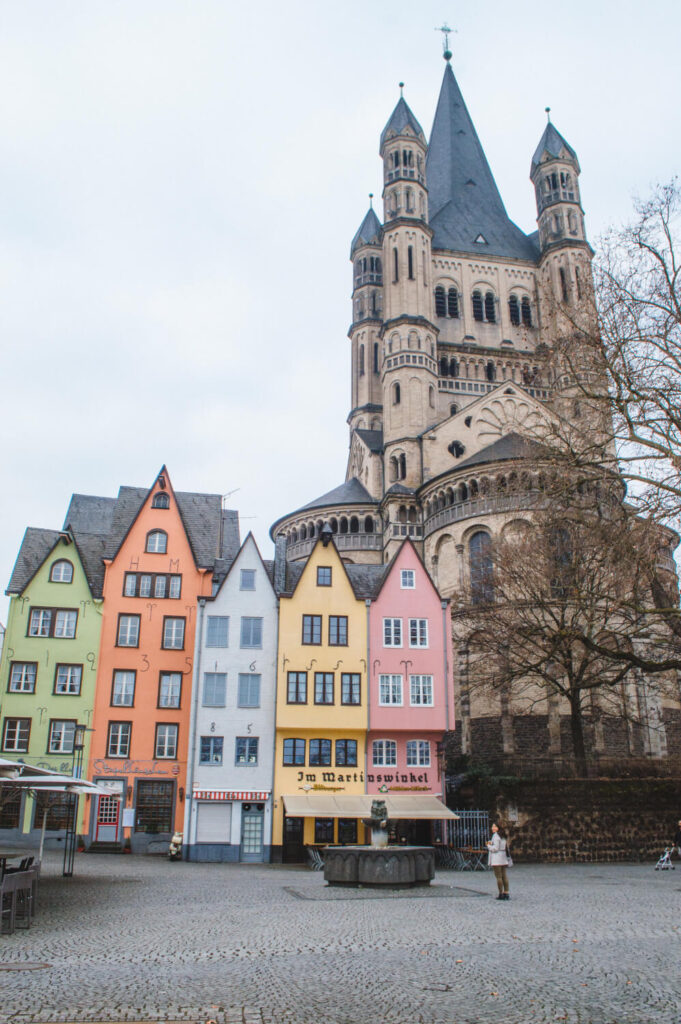
Last but not least, we have Hannover, a city which (in my opinion) is one of the most underrated cities in Germany where tourism is concerned.
Locally, people often joke that Hannover is one of the most boring cities in Germany, but I don’t think that’s true at all. One quick look and you’ll find a stunning palace within the city, an architecturally impressive Town Hall (with a unique elevator offering epic views), and a cool laidback vibe that many compare to what Berlin was like decades ago.
Here are some awesome things to do in Hannover.
Why visit Hannover when you travel Germany:
- Its gorgeous New Town Hall
- The stunning Herrenhausen Palace and its gardens
- A fun, laidback city vibe
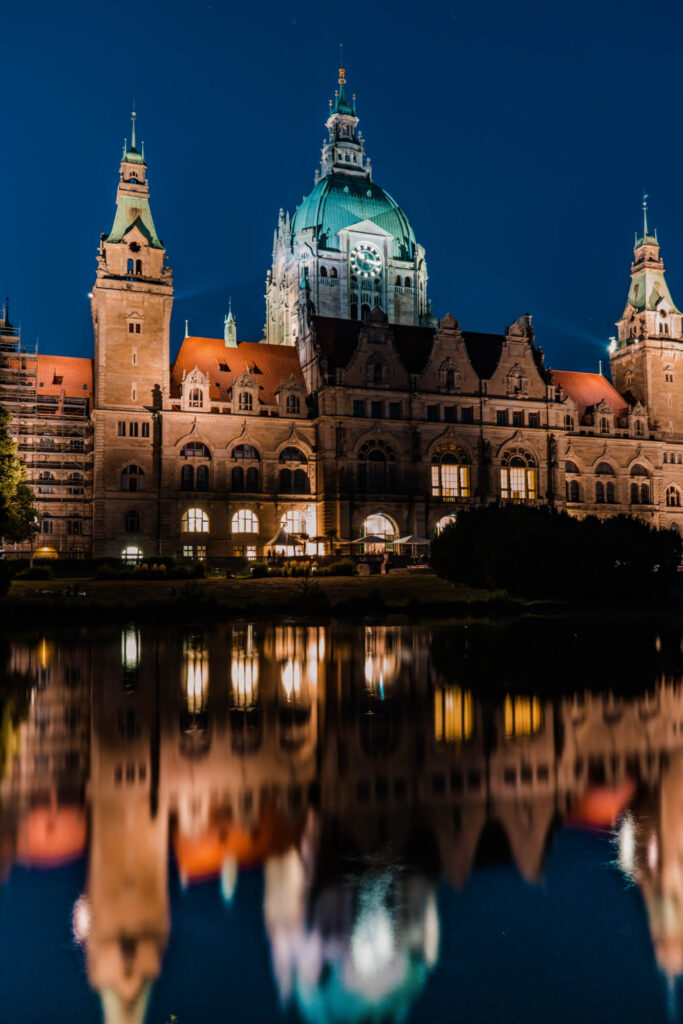
Bucket List Experiences in Germany
Germany is full of incredible bucket list experiences. Here are a few of my favourites:
Christmas Markets
German Christmas markets are the stuff of bucket list dreams.
If you adore Christmas, a German Xmas market trip needs to make it on your bucket list, because nobody captures Christmas coziness and joy quite like the Germans do.
The best part (besides the droolworthy assortment of German Christmas Market foods ) is that you’ll find Christmas markets in just about every city, town, and even the smallest of villages, each with their own unique take on traditions.
Trust me, you could never get bored of visiting these.
Here are some full guides to the Christmas markets I’ve visited in Germany:
- Munich’s Christmas Markets
- Berlin’s Christmas Markets
- Cologne’s Christmas Markets
- Esslingen Christmas Market
- Ludwigsburg Christmas Market
- Karlsruhe Christmas Market
- Düsseldorf Christmas Market
- Nuremberg Christmas Market
- Essen Christmas Market

Oktoberfest
Trust me – Oktoberfest , AKA the world’s largest beer festival, is reason enough to make a trip to Germany.
Typically celebrated annually in Munich, this is one of the most incredible events in the world, with millions of people attending, millions of beer served, and a guaranteed recipe for making memories to last a lifetime.
… If you can remember anything after 5L of beer that is.
Read my full Oktoberfest guide for more details.
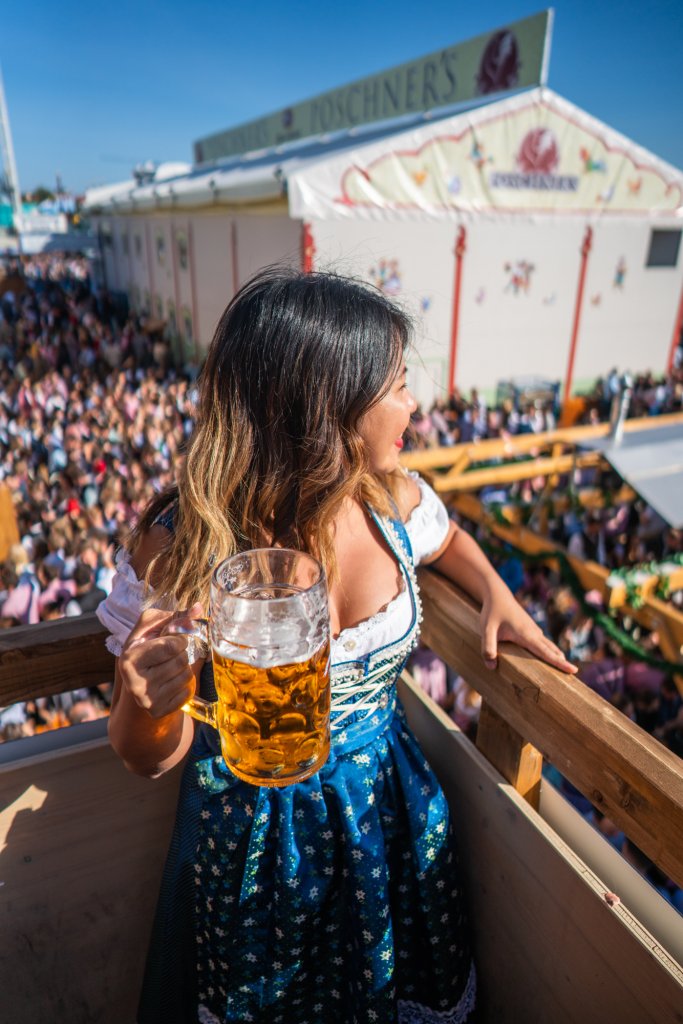
Visiting Fairytale Castles
If you love castles, I recommend avoiding Germany……. because you might just combust from sheer fangirl joy.
Seriously, Germany is every castle lover’s kryptonite, with elegant palaces and fairytale castles in the thousands. If you’re a Disney gal like me who grew up dreaming of happily ever afters, pack a ballgown and head to Germany ASAP.
I promise you won’t be disappointed.
Here are some castles that you must visit in Germany:
- Neuschwanstein Castle
- Nuremberg Castle
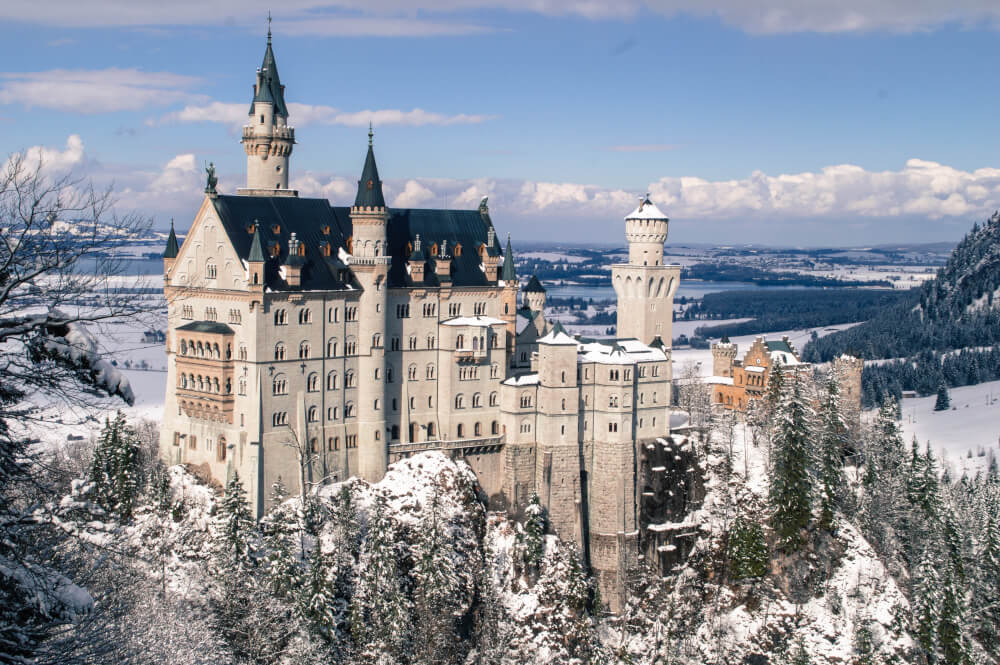
The Cherry Blossoms in Bonn
The cherry blossoms in Bonn (also the birthplace of Beethoven and gummy bear legend, Haribo) are absolutely spectacular, and 100% worth visiting in Spring time. In fact, I’d even say they’re one of the best things to see in Europe at Spring time.
Yes, you, too, can come frolic in these tunnels of pink! Here is my guide on where to find cherry blossoms in Bonn.
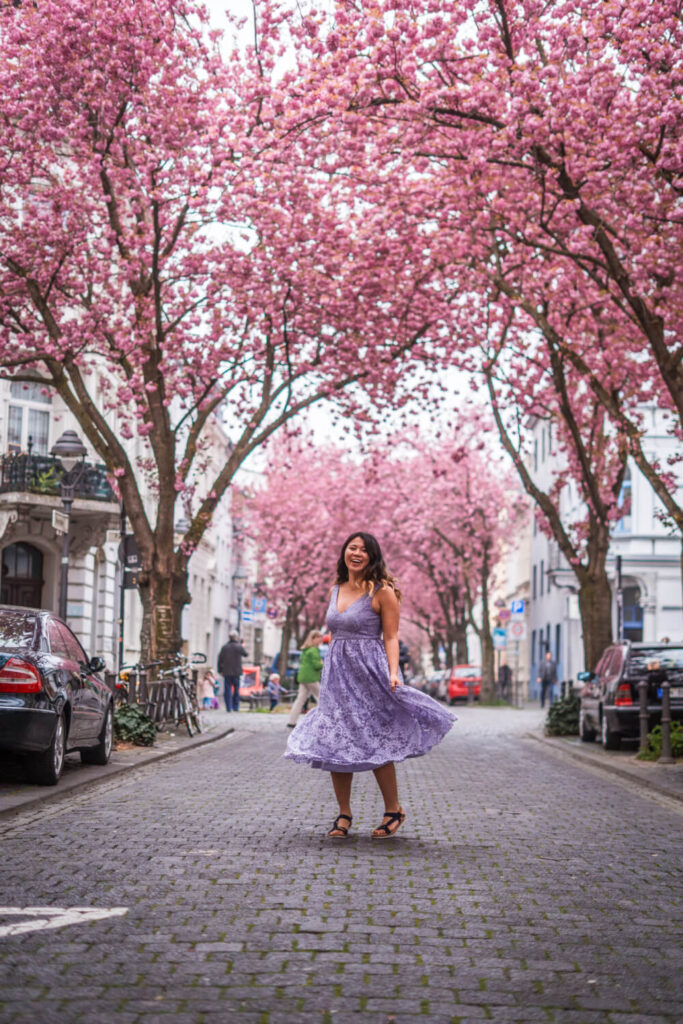
Karneval, Fasching, Etc.
Carnival Season is one of the best times to visit Germany if you’re looking for a party.
The grandest celebrations take place just before Lent, and are celebrated throughout the country, although the festivites in North-Rhine Westphalia are probably the best known.
My top recommendation? Go celebrate in Cologne, where the Kölner Karneval draws millions of visitors every year.
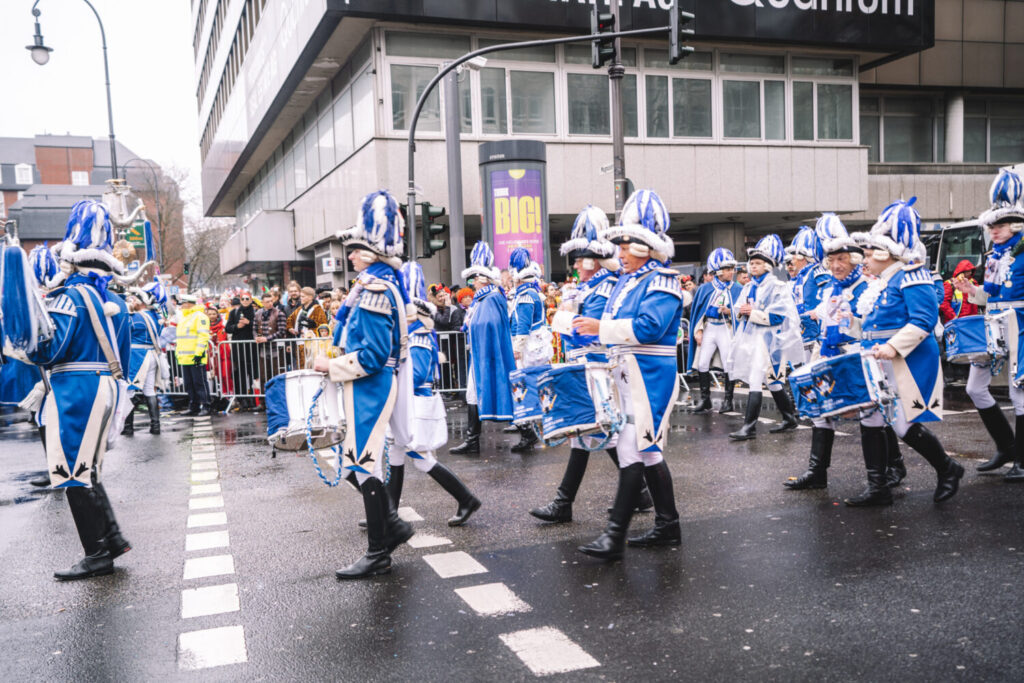
My Recommended Germany Itineraries
Germany is a huge country with a massive diversity in sights… so how can you organize your time efficiently and make the most of your trip? Here are some German trip itinerary ideas…
Germany itinerary ideas for a taste of everything:
- Southern Germany Classic: Munich, the Allgäu (for Castles!), Garmisch Partenkirchen, Berchtesgaden National Park, Stuttgart & Area, Black Forest
- Eastern Germany Classic: Berlin, Dresden, Saxon Switzerland
- Western Germany Classic: Aachen, Monschau, Eifel National Park
- Northern Germany Classic: Hamburg, Bremen , Lübeck, Kiel, Sylt
- The Rhine River Classic: Mainz, Koblenz, Burg Eltz, Cochem, Bonn, Cologne, Düsseldorf
- The Harz Mountains Experience: Harz Mountains, Goslar, Wernigerode, Quedlinburg
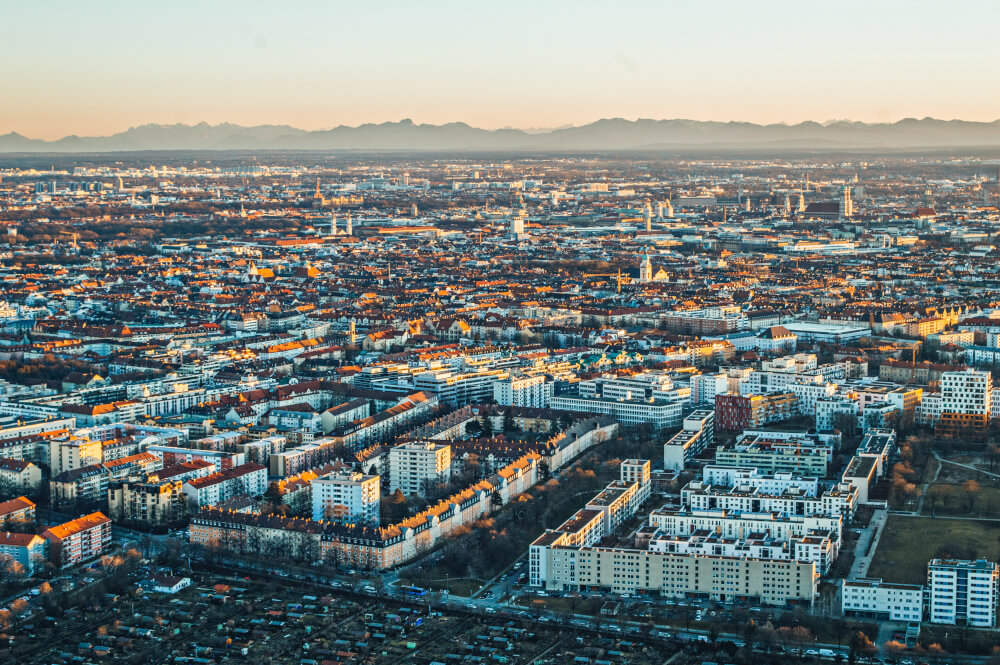
Germany itinerary ideas for city breakers and culture hunters:
- The Big City Tour: Berlin and Munich (a 4 hour express train connects them)
- The BaWu Special: Stuttgart, Ludwigsburg, Tübingen, Esslingen, Heidelberg
- The Bavaria Special: Munich, Nuremberg, Bamberg, Würzburg, Bayreuth
- The Saxony Special: Leipzig, Görlitz, Dresden
- The Rhine City Hop: Bonn, Cologne, Düsseldorf
- The Romantic Villages Hop: Würzburg, Dinkelsbühl, Nördlingen, Rothenburg ob der Tauber, Füssen

Germany itinerary ideas for nature lovers:
- Southern Germany Nature Itinerary: Berchtesgaden National Park, Garmisch-Partenkirchen, the Black Forest and Lake Constance (Bodensee)
- Bavaria’s Best Nature Itinerary: Berchtesgaden National Park, Garmisch-Partenkirchen, Munich’s Lake Region, Franconian Switzerland, Danube Gorge
- Eastern Germany Nature Itinerary: Dresden and Saxon Switzerland National Park

My Top Germany Travel Tips
- If you’re overwhelmed by transport options, Omio is a great resource for comparing trains, buses and flights in Germany at the same time.
- If travelling by train, look into group discount tickets like the Bayern Ticket which give you unlimited train travel for one day on regional trains. It can save you a TON of money.
- If you are traveling to multiple countries nearby (i.e. Switzerland), a Eurail pass might save you money.
Accommodation:
- Booking.com is a great place to search up hotels, and filtering by Free Cancellation allows you to book without paying upfront
- Airbnb can be a very affordable alternative for longer stays/bigger groups
Attractions and Tickets:
- GetYourGuide is a great site for finding tours and attraction tickets
- City passes like the Munich City Pass , Berlin Pass , and the Cologne Card can save you a LOT of money if you plan to visit many tourist attractions in a short time
- If you’re trying to find specific info about a place, try using Google Translate to search in German because German versions of sites always have more info
If you’re past the planning stage and heading to Germany soon, make sure you read this before you go:
- Hilarious must-knows before you visit Germany
More Germany Travel Reads
Feeling inspired to visit Germany after reading all that?
As you can (probably) tell, I’ve written extensively about Germany.
So, here are some more articles that might pique your interest:
- Unique Things to do in Germany (That You Can’t Do Anywhere Else)
- The Best Christmas Markets in Germany
- Hilarious Must-Knows Before You Visit Germany
My Go-To Travel Favourites:
🧳 Eagle Creek: My favourite packing cubes
💳 Wise: For FREE travel friendly credit cards
🍯 Airalo: My go-to eSIM
🏨 Booking.com: For searching hotels
📷 Sony A7IV: My (amazing) camera
✈️ Google Flights : For finding flight deals
🌎 WorldNomads: For travel insurance
🎉 GetYourGuide: For booking activities
4 thoughts on “The Only Germany Travel Guide You’ll Ever Need”
i found myself reading almost every post in your website for days and days and i ABSOLUTELY LOVE IT and adore and thank you for spending so much time and effort to make it so helpful, informative and fun to read. you have helped me plan my trip to munich in december and i cant wait to visit just because of your enthusiasm 🙂
We would like to Thank you for sharing such a beautiful blog! Very informative.
This Germany Travel Guide truly captures the multifaceted beauty of Deutschland, a country that has something to offer to everyone, from culture enthusiasts to nature lovers. Your personal anecdotes from living in Munich make it come alive, making me yearn for a taste of that amazing beer you’ve mentioned, and a wander around the English Garden! The varied seasonal highlights emphasize how Germany is a year-round destination, offering uniquely charming experiences, from the festive winter Christmas markets to the lively summer festivals. It’s heartening to know that navigating around the country is convenient, making it possible to explore its picturesque small towns and vibrant cities. This guide is a treasure trove for anyone planning to travel to Germany – it gives a well-rounded view of the country, infused with personal insights, which makes it even more valuable. I’m particularly intrigued to visit Munich, the city you so passionately call home.
As a Berliner, I can’t agree more with this guide. Germany truly is a delightful mix of tradition and innovation, natural beauty and urban charm, hearty cuisine and diverse cultures. Moving around in Germany is indeed quite convenient thanks to the well-organized public transportation system, including trains, buses, and trams. And yes, English is widely spoken in major cities, so communication shouldn’t be a problem for travelers. As for the varied dialects across regions, it just adds to the unique charm of exploring this beautiful country. Safe travels, fellow adventurers!
Leave a Comment Cancel reply
By using this form you agree with the storage and handling of your data by this website. *

- X (Twitter)

Germany Road Trip – The Perfect 7-10 Day Germany Itinerary
Are you looking for a Germany road trip itinerary? Or are you wondering what to do in Germany?
A trip to Germany allows you to see half-timbered houses, fairytale castles, dark forests and bustling cities. You get the chance to try traditional German food, visit stunning palaces and drive on the Autobahn , the highway without speed limits.
We want to show you where to go in Germany and how to plan your trip. This Germany road trip planner does not just help you discover the best of the country, we also give you lots of travel tips. As we are both living here, we know the country well and can tell you precisely what to look out for. Keep reading and start planning your trip now!
Table of Contents
General Advice
About this itinerary for germany.

If you only have around ten days or even less, you won’t be able to see all of Germany. That is why we have focused our post on a Southern Germany road trip. You’ll see lots of famous tourist attractions, like Neuschwanstein Castle, but you’ll also go off the beaten road when visiting the UNESCO pile dwellings at Lake Constance.
We have written this travel itinerary for Germany for 10 days, but you can easily adapt it if you have less time. Skip one day in Frankfurt at the beginning and try to see the highlights of the city on your last day. We would also advise you to skip the hike to Lake Schrecksee and drive onwards to Lake Constance from Neuschwanstein Castle instead.

Last, you can save an additional day by either skipping Würzburg or Blaubeuren. They are both fantastic places to visit, but if you’re pressed for time, you can always come back later to see them.
As an alternative, you can also turn this itinerary into a Frankfurt to Munich road trip. Start from the end, visit the Black Forest, Lake Constance and Neuschwanstein Castle and end your trip in Munich.
Also, this itinerary starts in Frankfurt. The airport of Frankfurt is one of the biggest in Europe, so you should find it easy to fly here. If it’s easier for you, you can look for flights to Munich and start your trip there. This itinerary is a round trip through Germany, so you are free to jump in at any time.
How to rent a car in Germany

We highly recommend that you book your rental car before you come to Germany. During the high season, prices can skyrocket, and it’s often much cheaper to reserve a car in advance.
Among the best websites to do so are rentalcars.com and Discovercars , as they compare prices from different rental car companies. This is much faster than going to the websites individually to find the best price! Plus, you can specifically search for offers that include insurance, and you have lots of filters that help you find the terms and conditions you want.
On the note of insurance, third-party liability insurance is mandatory in Germany, so it has to be included in your offer. However, we recommend covering any damage to the rental car as well, as otherwise, in the case of an accident, you might face high costs.
Click here to search for a rental car in Germany now!
When searching for a car, make sure to double-check the mileage conditions. Some companies offer contracts that include only a limited amount of kilometres. While it may seem cheaper at first, every additional kilometre will cost you so much that it’s usually not worth it.
Also, if you want to start your South Germany road trip in Frankfurt and finish in Munich (or vice versa), you need to specify that you are going to drop off the car in a different location. It might cost you a little extra, but if you have limited time, it’s going to be worth it as it saves you another day of driving.
When to visit Germany

As we just mentioned, you can visit Germany at any time. That said, some seasons are nicer than others.
Summer is generally a good time for a trip to Germany. The weather is great, and it’s fun to spend time outside. As a downside, you’ll run into lots of other tourists, and this is usually the most expensive time of the year.
As an alternative, you could visit during the shoulder season in spring and autumn. The weather starts getting better in May, and you can still experience warm days in September and early October. You’ll also see far fewer tourists than in summer.
In winter, you’ll likely encounter much more rain than during the other seasons. The trees drop their leaves, which can make regions like the Black Forest look slightly desolated. That said, you have the chance to experience some of Europe’s best Christmas markets in December, and you might also encounter snow in winter.
How to get to Germany

For this itinerary, you can either fly to Frankfurt or Munich. Frankfurt’s airport is bigger, so you might find better deals to go here. It’s best to check out both cities, though, so you can find the best deal.
When searching for flights, we usually use websites like Skyscanner that allow us to compare lots of airlines at the same time. It’s very useful for finding a good deal, so go and check out flight prices now .
Germany road trip itinerary – Discover the best of Germany
Days 1-2: frankfurt.

Start your road trip in Frankfurt.
Frankfurt is not just the financial centre of Germany; it also features an Old Town full of half-timbered houses, a pretty riverside and lots of traditional pubs where you can spend your evenings.
We suggest taking your first day easy (especially if you had a long flight) and then spending a whole day in Frankfurt afterwards. Even though this is not enough time to see everything, it allows you to get a good glimpse of the city and its main attractions.
If you only have one week in Germany, skip Frankfurt and pick up your rental car at the airport. You can visit the city’s main attractions at the end of the week when you return here. However, if you’re going to see Germany in 10 days, then you can wait to pick up your car and enjoy your time in Frankfurt first.

Highlights of Frankfurt:
- Römerberg and the Old Town: The half-timbered houses surrounding Römerberg are amongst the most impressive you can find in Germany. After World War II, most of this neighbourhood was in ruins. Fortunately, the city decided to reconstruct the historic houses, so you can admire them today. Make sure also to take a look at the Town Hall. If you need any further information, you can find the tourist information there.
- Eiserner Steg: Did you know that Frankfurt is the only German city with that many skyscrapers? From the bridge Eiserner Steg , you have one of the most iconic views of the skyline. It’s especially lovely in the evening when the sun sets behind the high buildings.
- Apfelwein: The local speciality of Frankfurt is called Apfelwein , which translates to “apple wine”. It’s a drink similar to cider but with no gas and a slightly more tart aftertaste. The best place to try it is on the Southern side of the river Main, in Sachsenhausen. Here, you can find many Apfelwein pubs, which can also serve you traditional foods from the area.
- Visit a museum: Frankfurt is home to lots of great museums. Our top picks include the Städel Museum, which houses an impressive collection of art, the Goethe House, which is the birth house of the famous writer and the Palmengarten. While the latter is technically not a museum but the city’s botanical garden, it is well worth visiting.
Where to stay in Frankfurt

When planning a trip to Germany, we highly recommend that you look into hotels before you leave. Especially in summer, hotel rooms tend to book out, and prices go up if you wait for too long.
If you’re visiting in winter, you don’t need to worry too much. Nevertheless, for peace of mind, it’ll be great to have a hotel reservation already by the time you land in Frankfurt.
There are many great neighbourhoods for your stay in Frankfurt . However, since you only have a bit more than one day, we recommend you pick a hotel in the city centre. That way, you’ll be close to the city’s main attractions.

Here are our favourite picks for this area:
Mid-Range: The Moxy Frankfurt City Centre has the perfect location. From here, you can reach Römerberg and the river Main within a few minutes. The rooms are stylish and the beds comfortable, so what else could you wish for? Click here to check out prices and reviews!
A little more comfort: The Hotel Steigenberger Frankfurter Hof has a history of more than 100 years. It dates back to 1876 and is well-known for its elegant and classic interiors. You can find a Michelin-starred restaurant in the hotel as well as a fantastic spa – perfect for relaxing at the end of the day. Find out availability and prices now!
Budget : It’s challenging to find a decent budget hotel in the centre of Frankfurt. Nevertheless, the Hotel Scala Frankfurt City Centre offers affordable rooms and is only a few minutes away from the main pedestrian zone. When it comes to value for money, this hotel is one of the best. Read reviews and book your room now!
Day 3: Würzburg

This morning, take your rental car and drive to Würzburg. The first leg of your round trip around Germany is short, and as a highway connects Frankfurt and Würzburg, it should only take you an hour and a half.
In Germany, the Romantic Road is one of the biggest tourist magnets, especially for international visitors. It starts here in Würzburg and connects many traditional towns and villages with highlights like the Würzburg Residence. While you’re not going to follow it for this trip, it is worth checking out if you ever return to Germany.
For now, though, focus on Würzburg. Besides the Residence, a fantastic palace designated as a UNESCO World Heritage Site, you can find many more attractions here. Hike through vineyards, explore the Old Town and drink a glass of local wine on a historic bridge.

Highlights of Würzburg:
- Würzburg Residence: The Würzburg Residence is one of the most beautiful baroque palaces in Germany. After visiting the inside, make sure to also stroll through the gardens. They are gorgeous in summer, but you can also admire the symmetry in winter.
- Marienberg Fortress: On the hike up to Marienberg Fortress, you come past many vineyards and viewpoints. From the top, you then have a fantastic view of Würzburg. If you’re not too tired yet, join one of the guided tours of the interior and explore the Princes’ Hall and the Treasury.
- Old Main Bridge: Explore the Old Town on foot and then end your day with a glass of wine on the Old Main Bridge. While German wine might not be that well-known internationally, the wineries in Würzburg produce some pretty good wine that they sell on the bridge. Go and grab a glass! If the weather is nice, you’ll find many locals joining you to enjoy the evening.
Where to stay in Würzburg

We highly recommend that you book a hotel close to the city centre of Würzburg. That way, you can make the most of your time in this city and can walk home after having a glass of wine in the evening.
Here are a few options:
Mid-Range: The Franziskaner is known for its clean and modern rooms and its excellent location close to the Würzburg Cathedral. You can find public parking opposite the hotel, and it’s only a short walk to the Old Main Bridge. Click here to read reviews and check availability and prices !
A little more comfort: The Hotel Würzburger Hof offers beautifully decorated rooms close to the city centre. Reviews often mention the friendly and helpful staff, so go and check it out yourself !
Budget: It’s not easy to find a decent budget hotel right in the city centre of Würzburg. The Mainviertelhof, on the other side of the river Main, is a good option, and you can often find great deals here. Click to see availability and prices for your stay !
Day 4: Blaubeuren & Munich

Today, you’ll drive all the way to Munich. Instead of going the shortest route or following Germany’s Romantic Road, though, take the highway A7 south towards Ulm and stop in Blaubeuren.
Blaubeuren is famous for the Blautopf, an impossibly blue pond. If you leave Würzburg early enough and don’t get caught in a traffic jam, you can also visit one of the nearby caves.
Highlights of Blaubeuren:
- Blautopf: This natural wonder is a must-see during your stop in Blaubeuren. Limestone particles make this pond shimmer in bright shades of blue and green. The colours are most beautiful in the morning, but it’s worth coming here at any time of the day. While the Blautopf looks like a small lake, it is much deeper than you would imagine. Twenty-two metres below the surface, you can find an entrance into a giant cave system.
- Blaubeuren Abbey : Next to the Blautopf, you can find the Blaubeuren Abbey. For a small entrance fee, you can visit the inside. Make sure to also stop by the Bathhouse of the Monks, which you can find behind the abbey. The wall decorations are very unusual, and you’ll get a great insight into how the life of the monks must have been hundreds of years ago.
- Hohle Fels Cave : This cave is a short drive from Blaubeuren, but if you have enough time, make sure to stop here. Humans have sheltered in this cave for around 65,000 years, and archaeologists found the oldest instrument in the world here. If you want to see the instrument (and more man-made exhibits from about 40,000 years ago), make sure also to visit the URMU museum in Blaubeuren.
After having stopped in Blaubeuren, continue your Germany round trip by driving to Munich. Depending on traffic, it takes around two hours to get here. In German, the city is called München, so don’t be confused if you never see any road signs mentioning Munich!

Where to stay in Munich
Stay in one of the hotels close to the centre, so it’s easy for you to explore the city the next day. As you have a whole day in Munich, make sure to book a stay for two nights.
Here are some good options:
Mid-Range : From Hotel Haus im Tal, you can reach the city centre in just a few minutes. The rooms are beautifully decorated, and the staff is very friendly and helpful. Click here to book your stay now !
A little more comfort : If you want maximum comfort, stay at the Vier Jahreszeiten Kempinski München. The hotel offers stylish rooms with lots of extras and amenities, a fantastic spa with a sauna and a gym. If you want to learn more, click here to read reviews and find out everything the hotel has to offer !
Budget : Hotel Eder provides clean and simple rooms close to the Old Town. Deals often include buffet-style breakfast, giving you excellent value for your money. Check out rates and availability on booking.com !
Day 5: Munich

Today, you have a whole day to explore Munich. The biggest city in Southern Germany offers lots of historic buildings, majestic palaces and the perfect chance to try traditional Bavarian food.
Highlights of Munich:
- Marienplatz : Munich’s central square is one of the best starting points for exploring the city. Here, you can find both the old and the new town hall, a fountain and the Mariensäule, a column to the Virgin Mary that dates back to 1638. If you stop here at 11 am or noon, you can see the mechanical figures on the front of the New Town Hall move and dance to a song.
- Nymphenburg Palace : Even though you only have one day in Munich, try to make it to Nymphenburg Palace. The splendid interior is well worth a visit, and you could spend hours walking through the gardens. As you’re short on time, opt for a brief stroll instead or go for a gondola ride on the canals that surround the palace.
- English Garden : This massive park in Munich is a favourite for both locals and tourists. In summer, it’s an excellent location for a picnic, but it’s fun to come here at any time of the year. Don’t miss the Chinese Tower, a 25-metre-high pagoda, and make sure to stop by the Eisbachwelle to see local surfers right in the middle of the city.
- Hofbräuhaus : Munich is the perfect place to try traditional Bavarian food. While you’ll see some typical German food all over the country, the state of Bavaria is famous for some dishes you can only find here. If you’re travelling to Germany for the first time, we recommend that you try the Weißwurst with pretzel or go for the Schweinshaxe, the pork knuckle. Both are very traditional dishes. The Hofbräuhaus, a beer hall that dates back to 1589, is the perfect place to try them.
Day 6: Neuschwanstein Castle

This morning, get up early and head to Hohenschwangau, the next stop on your Germany travel itinerary. The little town on the edge of the Alps is home to the famous Neuschwanstein Castle. Driving here takes a little less than two hours, which leaves you with plenty of time to see the castle and explore nearby attractions.
Highlights of Hohenschwangau:
- Neuschwanstein Castle : Even though the castle looks as if it had stood here for centuries, it only dates back to the late 1800s. King Ludwig II of Bavaria, who built the castle, only lived here for 172 days until he died under mysterious circumstances. If you want to visit the inside and learn more about King Ludwig, you need to book your tickets well in advance (ideally, the moment you start to plan a trip to Germany). Fortunately, we have written a guide on how to visit Neuschwanstein Castle to help you prepare for your visit.
- Marienbrücke : Just above Neuschwanstein Castle, you can find the Bridge of Mary. It takes around 20 minutes to walk here, and you’ll get to experience one of the most famous views of the castle. If you continue on the other side of the bridge, you can find even more fantastic viewpoints.
- Hohenschwangau Castle : Make sure also to visit Hohenschwangau Castle, the yellow castle on the other side of the town. King Ludwig II used to spend his summers here, and this is where he got the inspiration to construct Neuschwanstein Castle. As his family lived in the castle for decades, the interior is much more interesting than in Neuschwanstein.

After having explored Hohenschwangau, we recommend that you continue to the nearby town of Füssen. The Old Town of Füssen is well worth a visit , and you’ll have a much better choice when it comes to hotels and restaurants compared to Hohenschwangau.
Where to stay in Füssen

For your Germany trip, planning ahead is sometimes essential. Not only should you book your ticket to Neuschwanstein as early as possible, but we recommend that you also don’t leave your hotel booking in Füssen until the last minute. Neuschwanstein Castle is one of the 10 top tourist attractions in Germany, and the nicest hotels tend to book out early.
Base yourself here for two nights so that you can explore the Alps the next day.
Mid-Range : You can find Hotel Fantasia on the edge of the Old Town of Füssen, in a beautifully renovated traditional Bavarian house. From here, you can enjoy a panoramic view of the Alps, or you can go for a stroll through Füssen itself. And the best part? Most deals include breakfast! Go and check out prices and availability now!
A little more comfort : Hotel Hirsch offers really cool themed rooms which are beautifully decorated. Most rates include access to the breakfast buffet, and you also find free parking here. Click here to see reviews and book now !
Budget : It’s not easy to find proper budget accommodation in Füssen, but we have managed to locate an affordable guest house for you. The Maurushaus offers excellent rooms in a great location for little money. Unfortunately, last we checked, they were only taking limited bookings. Nevertheless, you should go and check out if they’re available for your dates!
Budget alternative: An alternative to the Maurushaus, though not quite as nice, is the Motel Füssen Im Allgäu. It’s not quite in the centre, but the Old Town is only a five-minute walk away. Click here to see photos and prices!
Day 7: Hike to Lake Schrecksee

Today, you have a whole day to explore the Bavarian Alps. We recommend going for a hike to Germany’s highest alpine lake, Lake Schrecksee, but you also have many other options.
To hike to Lake Schrecksee, you need to get up early and make your way to Hinterstein. Here, you can leave your car at the parking lot and start your hike to Lake Schrecksee.
It takes about three hours to get to the lake, maybe an hour more if you’re not used to hiking regularly. In summer, make sure to bring your swimsuit so you can cool down and go for a swim during your break.
In winter, the hike to Lake Schrecksee is not feasible. But don’t worry, you can still find lots of things to do in the area. You could either go for a winter hike through the snow or ride a horse carriage through the snowy landscape.

An alternative is to drive to Garmisch-Partenkirchen, a cute town near the Austrian border with lots of things to do. Or you could visit the Linderhof Palace, another one of King Ludwig II’s palaces. It’s gorgeous on snowy days.
In Germany, the road conditions in winter are usually good. Nevertheless, on snowy winter days, you might find ice on the roads. Therefore, if you are driving in Germany as a tourist, make sure to respect all speed limits and be careful. Those winding mountain roads can be challenging to navigate for anyone who doesn’t use them regularly.
Day 8: Lake Constance & The Black Forest

Today, get up early to make your way to the Black Forest.
We believe that the best way to travel through Germany by car is by making lots of stops along the way. You can discover so many beautiful places that it’s easy to break up long driving days. And that’s exactly what you’re going to do today, by taking a detour to Lake Constance.
How to visit the prehistoric pile dwellings of Lake Constance
Lake Constance is Germany’s biggest lake, even though not all of it belongs to Germany. The borders with Austria and Switzerland run through this lake, but you’ll be staying on the German side today.

Make your way to Unteruhldingen, where you can visit one of Germany’s UNESCO World Heritage Sites – the prehistoric pile dwellings of Lake Constance. You need to leave your car at the parking above the village but don’t worry. There are plenty of signs along the way to guide you.
The oldest stilt houses in the area date back to around 4,000 BC, and archaeologists found settlements in nine different locations. A boardwalk takes you around reconstructed pile dwellings, with separate sections dating back to different time periods.
Afterwards, make sure to stop in the museum, where you can see some of the ancient artefacts from the villages in the region.

If it’s lunchtime, walk to the restaurant Häfeli. Here, you can sit at the shore of the lake and enjoy a Dinnele, a traditional dish from the area similar to pizza. Ask for the one topped with fish from the lake to make it a truly unique foodie experience.
Where to stay in the Black Forest

After you’ve visited Lake Constance, the next stop on your 10 days in Germany-itinerary is the Black Forest. You can find lots of cute villages that could serve as a perfect base to explore the region. We suggest that you either stay in Triberg or somewhere further north.
Here are some ideas for excellent accommodation that you’re going to love:
Mid-Range : We stayed at the Bartleshof in the Black Forest and absolutely loved it. This farm rents out rooms and small apartments furnished with traditional furniture from the area. Not only does this make for a lovely atmosphere, but the Bartleshof is also a quiet place far away from all trouble and noises of the city. Click here to check out current rates and availability !
A bit more comfort : The Adler Schiltach Boutique Hotel is located in one of the cute half-timbered houses you can find in the Black Forest. The rooms are spacious, you can find free parking, and breakfast is often included in the rate. Plus, the building might be hundreds of years old, but the rooms are new and recently renovated. Read reviews and find out more information now !
Budget : Finding proper budget accommodation in the Black Forest is not easy. Nevertheless, you can find some decently priced hotels here. The Rommelehof is one of them and often offers reasonable rates. It’s located in a very traditional building from the Black Forest, which means that staying here is a unique experience. Click here to see photos and book your stay !
Day 9: Black Forest

Today, it’s time to visit the Black Forest.
The advantage of going around by car in Germany is that you can stop in lots of small villages along the way. The Black Forest has many of them, and they are all worth a visit! Besides that, you can also visit an open-air museum, see the world’s largest cuckoo clock or experience one of the best scenic drives in Germany.
Amongst the villages that we loved most are Haslach and Wolfach. Strolling through the towns, admiring the half-timbered houses, and sitting down to enjoy traditional food are among the best things to see and do in Germany.
If you like traditional architecture, make sure also to visit Rottweil. This city on the edge of the Black Forest is well worth a side trip, especially if you have some additional days to spend in Germany.

Highlights of the Black Forest:
- Vogtsbauernhof : This open-air museum gives you a fantastic insight into what life was like in the Black Forest more than a hundred years ago. You can explore the old buildings, participate in a guided tour, make your own butter or just watch the staff as they walk around, dressed in traditional clothing from the area.
- The world’s largest cuckoo clock : On the road from Hausach to Triberg, you will come across the world’s largest cuckoo clock. Stop by the Eble Uhren-Park, where you can also see many other cuckoo clocks. If you want to, you can even buy your own in the shop!
- Triberg Waterfalls : The waterfall in Triberg is the highest one in Germany. A trail takes you all the way to its top, from where you can enjoy the view. If you’re interested in hiking through the Black Forest (which was said to have inspired the Grimm Brothers to write their fairytales), you can also find lots of fantastic hiking trails in this area.
- Panoramic Road : The Panoramic Road of the Black Forest, called Panoramastraße in German, invites you on one of the best road trips in Germany. You travel through the Southern Black Forest on winding mountain roads and through tiny villages. Information on the official website is available primarily in German, but you can find a map here that will help you navigate.
Day 10: Frankfurt

Today, it’s time to drive back to Frankfurt. Make sure to include a few stops along the way. We recommend Nagold, where you can hike up to the castle on the hill behind the city, or Calw. Out of all the places we visited in Germany, Calw has some of the best-preserved Old Towns, with lots of pretty half-timbered houses.
When you return to Frankfurt, your road trip to Germany has come to an end. Enjoy your last evening with a glass of Apfelwein , and spend some time walking along the river Main or visiting some of the sights you missed on your first day here.
If you only have a week in Germany, we recommend that you don’t visit Frankfurt at the beginning of your trip. Instead, pass Nagold and Calw today and head straight back to Frankfurt to see the city. This allows you to squeeze as much as possible into this one week that you have to see the country.
If you have more time

If you have more than ten days for your road trip, we have lots of inspiration for you. You could spend more time in Munich or the Black Forest, or visit a completely different area in the country.
What you can see and do will ultimately depend on how many days in Germany you have. Here are some ideas for you:
- Cologne : From Frankfurt, it’s easy to get to Cologne. You can either use your rental car or go by high-speed train. Cologne is most famous for its cathedral, but it’s also a fantastic city if you want to try local food, explore a chocolate museum and go for long walks along the river.
- The Rhine and Mosel Valleys : The road trip through Germany we described above is only one option, and there are many more road trips in Germany worth doing. If you have enough time, you could extend your trip by visiting either the Rhine or the Mosel Valley – or both. Both are famous for their wine, their castles and their cute villages. Cochem is a great place to relax, or you could explore Eltz Castle, which gained lots of fame through Instagram lately.
- Rothenburg ob der Tauber : If you have 2 weeks in Germany, or even more, you could consider adding more stops to this itinerary. After visiting Würzburg, for example, you have the chance to go on a detour to Rothenburg ob der Tauber. This cute town looks so typically German that you’ll see it featured on many guidebooks. It’s also part of the Romantic Road, so you can follow that road for a while.
Driving in Germany

If you want to go on a road trip, Germany is the perfect country. Roads in Germany are usually well-maintained, and you have the Autobahn , the highway, connecting major points of interest.
Nevertheless, you might have a few questions about your road trip in Germany, which we are going to answer now.
What side of the road does Germany drive on?
In Germany, the driving side is the right side of the road. This is the same as in all of mainland Europe and North America.
If you’re used to driving on the left side of the road and have never been to a country where you have to go on the right, take it easy for the first few days. I learned to drive on the right side of the road, and when I rented a car in Malaysia, it took me a while to get used to driving on the left.
Eventually, it becomes easier, and you’ll get used to it pretty quickly.

Driving in Germany – road signs
As a tourist, driving in Germany is usually straightforward. Nevertheless, it’s a good idea to familiarize yourself with the most common road signs before arriving in the country.
Fortunately, all road signs in Europe follow a European convention. If you’re coming from outside the continent, you only have to learn those signs once, and you’re good to go for most places in Europe.
Wikipedia has a comprehensive overview of German road signs that you might find helpful.
Speed limits in Germany
When driving in Germany, it’s essential to know about speed limits.
As a general rule, the speed limit is 50 km/h in towns, cities and villages and 100 km/h on roads outside populated areas. On the highway, we don’t have a speed limit, so you can go as fast as your car and traffic allow.
That said, you will often see road signs with speed limits, so on large stretches of the Autobahn (and on many roads in and outside cities), you have to respect these limits.

Can you drink and drive in Germany?
No, you can’t. The limit for blood alcohol is 0,5 ‰ and 0,0 ‰ for drivers under 21. If you drink more than that, you can get heavy fines, so it’s better not to risk it.
Are there paid roads in Germany?
In Germany, road toll does not exist – at least not if your vehicle weighs less than 3.5 tons. Regular cars are free to go on the highway and leave it wherever they please without having to pay anything.
Do I need a road map of Germany?
We usually use Google Maps to get around. As this will require you to either have access to data or download many maps before you leave, we recommend using maps.me if you come from outside the EU.

Can I do this itinerary in winter?
You absolutely can! Driving in Germany in winter is not very different from driving in summer.
In the South, you will often see snow in winter, while in the rest of Germany, temperatures are above zero on most days. Drive carefully if there’s any snow and ice covering the roads, and make sure your car has winter tyres. They are mandatory in winter, so double-check when getting your vehicle.
Also, be aware that you won’t be able to hike to Lake Schrecksee in winter. Instead, we recommend staying an extra day in Füssen and going for a winter hike or a ride in a sledge across the frozen lakes.
We hope you found this Germany itinerary for 10 days useful. We don’t like driving much and even we thought that exploring Germany by car was a fantastic experience.
As we live in Germany, we have lots of other resources on our blog to help you plan your trip. Check out the following posts which you’re going to find useful:
- How to visit Neuschwanstein Castle – everything you need to know
- How to spend a perfect day in Frankfurt
- Hike to Lake Schrecksee and see Germany’s highest alpine lake
- Coming in December? Find out how to visit the Frankfurt Christmas Market!
Until your next adventure!
Like it? Pin it!

Ilona is a world traveller passionate about sharing her experiences and giving advice to fellow travellers. Having visited over 70 countries, she is always excited about her next trip.
Related Posts
Jeonju choco pie: everything you need to know, how to get to gamcheon culture village & unmissable things to do there, zurich to liechtenstein day trip – your complete guide.
What a great post! Thank you! Wurzburg is on our itinerary, but we’re also going to Dresden and Berlin. I haven’t seen much of the Black Forest, but perhaps another time.
Write A Comment Cancel Reply
Save my name, email, and website in this browser for the next time I comment.
Notify me of follow-up comments by email.
Notify me of new posts by email.
Cookie consent notice
Privacy overview.
Necessary cookies are absolutely essential for the website to function properly. This category only includes cookies that ensures basic functionalities and security features of the website. These cookies do not store any personal information.
Advertisement cookies help us provide our visitors with relevant ads and marketing campaigns.
Analytics cookies help us understand how our visitors interact with the website. It helps us understand the number of visitors, where the visitors are coming from, and the pages they navigate. The cookies collect this data and are reported anonymously.
Preference cookies are used to store user preferences to provide them with content that is customized accordingly. This includes the language of the website or the location of the visitor.

- Meet the Team
- Work With Us
- Itineraries
- Italy Travel Guide
- Hawaii Travel Guide
- Travel Tips
The Perfect 7-Day Germany Itinerary
Germany is a country full of history, Medieval cities, amazing food and wine, and cultural traditions that you can join in, like Oktoberfest. Yet not many U.S. travelers spend a lot of time exploring this country – choosing to go to France or Italy instead. We want to change that and help you see how exciting Germany can be.
It can be difficult to decide where to start and where to go when visiting a country for the first time, so we’ve done the hard work for you and planned a full 7-day Germany itinerary, beginning in the thriving tourist hotspot of Hamburg and ending in the equally popular city of Munich.
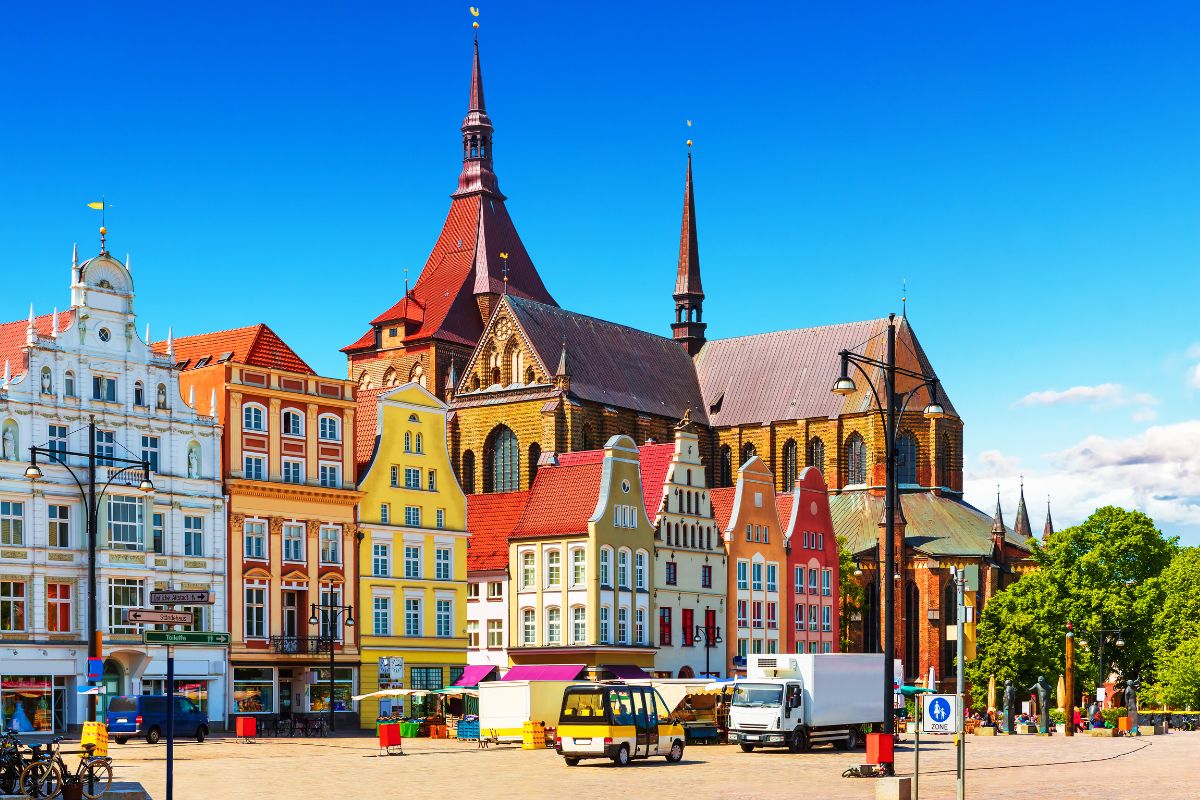
With just 7 days to explore this vast country, you will only be able to skim the surface, but you’ll be able to see and enjoy famous landmarks and amazing things that you probably didn’t even know were here. Like some of the places on this list of beautiful sights to see in Germany.
We’ve also listed some tips for your trip to Germany below the itinerary itself, so be sure to read until the end for some important advice.
Planning your trip to Germany?
- Book a transfer from the airport to the city center with Welcome Pickups .
- Rent a car from the airport through Discover Cars .
Best Tours and Experiences in Germany:
- Neuschwanstein Castle and Linderhof Palace Day Tour from Munich – Embark on a day trip from Munich to witness Neuschwanstein and Linderhof’s magical fairy tale castles.
- Rhine Valley Trip from Frankfurt, including Rhine River Cruise – Embark on a romantic Rhine Valley tour from Frankfurt, where you’ll sail along the Rhine River on a traditional steamer, passing by vineyards, medieval towns, and castles.
- Dachau Concentration Camp Memorial Site Tour from Munich by Train – Explore the history of the Holocaust on a half-day tour from Munich to the Dachau Concentration Camp Memorial Site.
Visiting other destinations in Germany? Check out our guide to traveling in Germany that includes information on many popular destinations like Berlin and Munich , plus Oktoberfest in Munich . Going outside of Germany? Here’s our Europe travel guide .
Table of Contents
Where to Start & What to See
Many tourist guides and travel blogs will recommend beginning your visit to Germany either in Hamburg Munich or Berlin, but in the interest of cutting travel time as short as possible during your trip, we suggest starting in Hamburg.
Hamburg is located on the River Elbe and is one of Germany’s federated states. Since Hamburg is in the northern region of Germany, it’s easy to work your way down through the other central and southern locations in the itinerary from there, and it’s only just over 2 hours from Berlin by train.
Stops On the Itinerary
- Hamburg – Sitting on the River Elbe is the second largest city in Germany, Hamburg. It is the biggest harbor city in Germany. It’s also a beautiful city to tour because two-thirds of the land is covered with parks, trees and lakes.
- Berlin – As the Capitol of Germany, Berlin is rich in culture, architecture and nightlife. The city is covered with parks, rivers, greenery and bridges. Partake in a walking tour to get the full effect of this historic German city.
- Dresden – Dresden is the largest metropolitan area in Germany. The city thrives on manufacturing, transportation, and culture. The high tech items are what drive their economy and occupy their jobs. It is also a place of art and inspiration.
- Rothenburg Ob Der Tauber – You don’t want to miss this cute town in Bavaria that is just oozing with charm. It’s a Medieval walled city with beautiful colored wooden houses.
- Neuschwanstein – Everyone knows this amazing castle, but to see it in person is an experience you won’t forget.
- Munich – Munich is a southern city in Germany that is located near the Alps. Best known for hosting the annual Oktoberfest Beer Festival, Munich is also a city filled with cultural activities. This is a great cultural center in Germany with opera, theatre, ballet, museums, and galleries. In Munich, you will find also the factory of the sports car BMW.
How to Get Around
Driving is very easy in Germany, as is the train system. However, you can’t easily reach every place on our itinerary by train. In places, such as between Rothenburg and Neuschwanstein, the train requires a minimum of three changes and takes over four hours.
It’s best to rent a car so you can get around to each place without having to deal with train times and tickets.
If you prefer to use the train only, then I would modify the itinerary to stay in only the bigger cities, which would be Hamburg, Berlin, Dresden, and Munich, with a side journey to Neuschwanstein from Munich .
- Hamburg to Berlin: 3:20 by car; 1:45 via train
- Berlin to Dresden: 2:10 by car; 2:15 via train
- Dresden to Rothenburg: 4 hours by car; 7:45 via train
- Rothenburg to Neuschwanstein: 2:30 by car; 6 hours with transfers
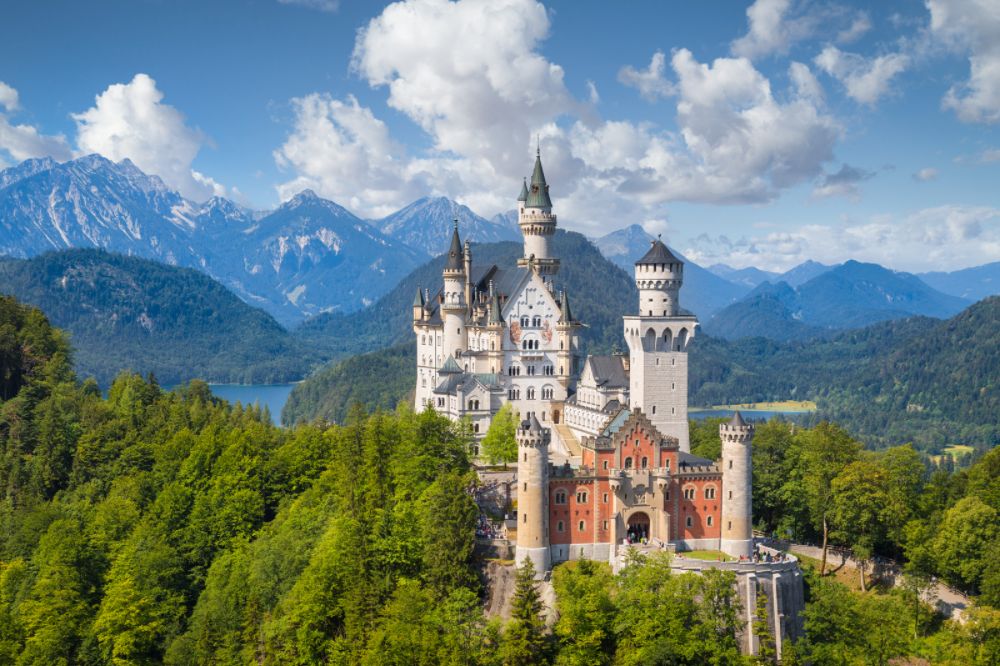
When to Visit Germany
There are reasons why you might want to visit Germany in each season. For instance, the popular Oktoberfest celebration is in September, as is the wine harvest, which is a great time to visit the wineries.
In the winter there are Christmas markets taking place in cute towns all over Germany, especially in Rothenburg. Spring is a great time to go for fewer crowds, better prices, and an abundance of spring flowers.
You might also be interested in planning a trip during the Hamburg Dom , which takes place three times per year. It’s Northern Germany’s biggest public festival. Expect it to be on in November, April, and August.
7 Days In Germany
Day 1: hamburg.
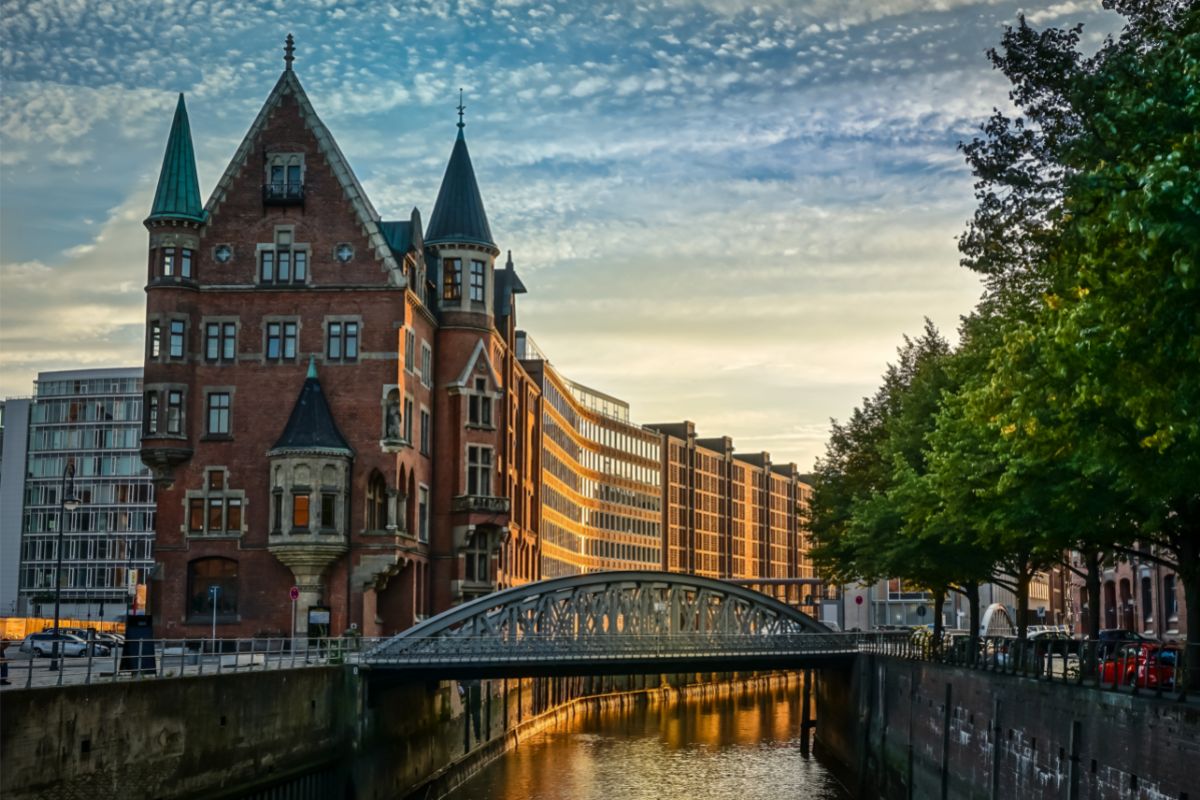
If you’re lucky enough to visit during Hamburg Dom, join in the classic funfair rides, sample traditional German food , and just take in the culture.
- Two fun areas to visit are the Speicherstadt (city of Warehouses), and the surrounding HafenCity, where you’ll find many of the city’s most-visited tourist attractions. Just walk around to see the changing shape of the waterfront and the now protected World Heritage Site.
- The newly opened Elbphilharmonie is an interesting building to check out and to visit if you want to catch a performance by the Orchestra. It’s Hamburg’s tallest inhabited building.
- Museums – There are four museums you should definitely check out – the Kunsthalle (one of the largest art museums in the country), the International Maritime Museum, and Hamburg’s Miniatur Wunderland , the perfect attraction for anyone interested in trains or air travel. The Chocoversum , Hamburg’s Chocolate Museum, is where you can sample some of Germany’s finest chocolate and even customize your own chocolate bar.
- Another area to explore are the Inner Alster (Binnenalster) and Outer Alster (Aussenalster), two artificial lakes around which you’ll find a tree-lined park with lots of space for walking, jogging, or sitting at a café.
Where to Stay in Hamburg
Altstadt, the historic center of the city, is definitely the best area to stay in Hamburg for tourists because it’s near everything you’ll want to see, or a quick walk or train ride.
Our recommended hotels are:
- Park Hyatt Hamburg
- Grand Elysee Hamburg
- Steigenberger Hotel Hamburg
Where to Eat in Hamburg
Hamburg’s signature dishes are Franzbrötchen (a French roll), Currywurst, Labskaus (a beetroot seafarer’s stew), and Rote Grütze (a red-berry dessert).
Some restaurants we like going to in Hamburg are:
- Kartoffel Keller for great German food
- Otto’s Burger – best burgers in town, so good!
- Haerlin – two Michelin star restaurant for fine dining
- Alt Helgoländer Fischerstube – high-quality fish restaurant right on the waterfront
Tours to Try:
- Hamburg Reeperbahn Small-Group Walking Tour
- Guided Hamburg City Bike Tour
- Hamburg Small-Group Sunset Sailing Cruise on Lake Alster
Day 2: Berlin
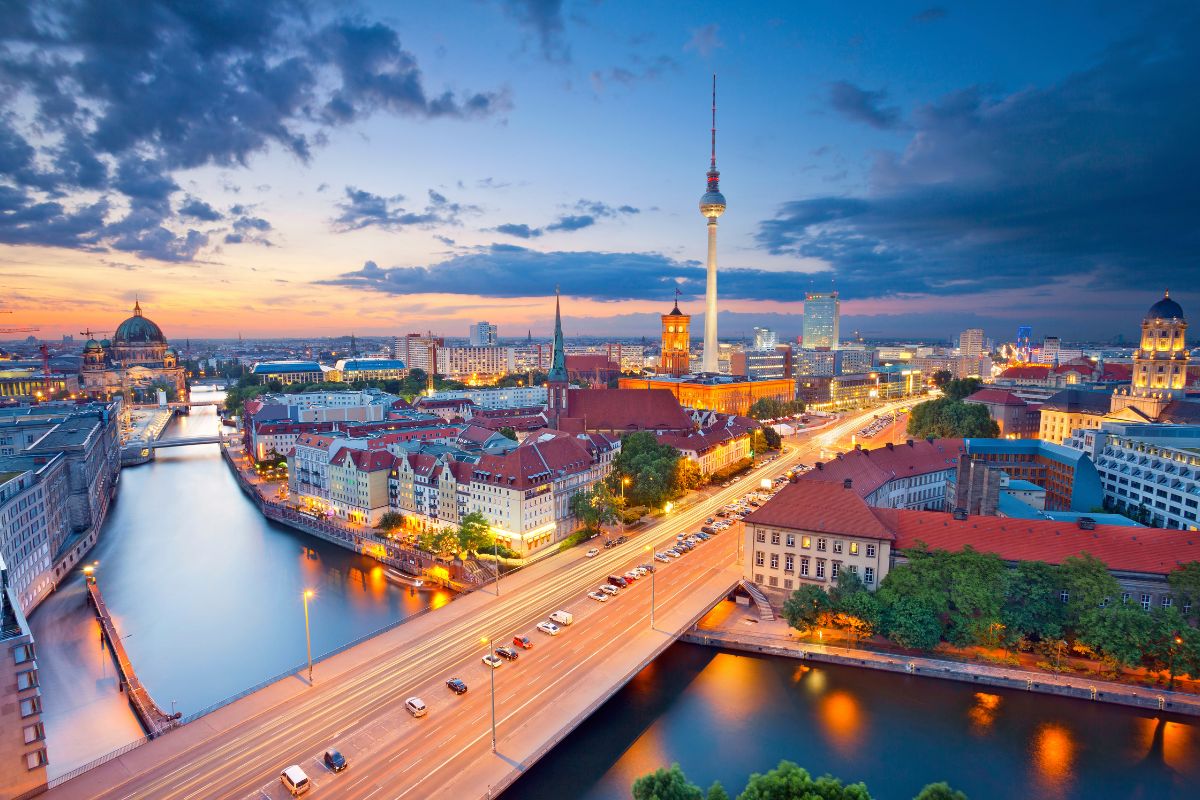
You’ll be spending your second day in Germany in the capital city of Berlin. There is, of course, plenty to see and do in this city, so you’ll want to get an early start from Hamburg. With so much to see you may want to come back and visit again. This 3-day Berlin itinerary will help you out.
One of my favorite ways to see many of the top sights in Berlin is on a walking tour. This half-day walking tour is only $20 and takes you around to all the main sights included in the list below. You won’t go into anything, but you’ll get an idea of where and what they are so you can go back.
- Berlin in obviously well-known for its checkered past, which can’t be ignored while visiting. We recommend learning about all aspects of German history, starting with the Holocaust Memorial and the Topography of Terror museum.
- Next to that is the Berlin Wall , which is both a painful reminder of the Cold War and, since 1990, a poignant open-air art gallery.
- Brandenburg Gate is the only historical city gate remaining in Berlin, and it has come to symbolize the reunification of Germany.
- Museum Island is home to five great museums: Pergamon Museum, Altes Museum, Neues Museum, Alte Nationalgalerie , and Bode Museum.
- Climb the Berlin TV Tower and dine at the revolving restaurant sphere or the Reichstag Dome , which also has a rooftop restaurant that’s perfect for lunch.
Where to Stay in Berlin
The best locations for tourists in Berlin is right in the center of the city, called Mitte. From here, you’ll be in easy walking distance of all the top sights and you won’t need to take public transportation unless you want to head further outside the main areas.
We enjoyed staying at the COSMO Hotel (newly opened Design Hotel) to the southeast. The Radisson Blu to the northeast and the Grand Hyatt to the southwest are also good choices.
- Hilton Berlin ⇒ Read reviews on Trip Advisor | Book a stay
- The Grand Hyatt ⇒ Read reviews on Trip Advisor | Book a stay
- COSMO ⇒ Read reviews on Trip Advisor | Book a stay
- Radisson Blu read reviews on Trip Advisor | Book a stay
Where to Eat in Berlin
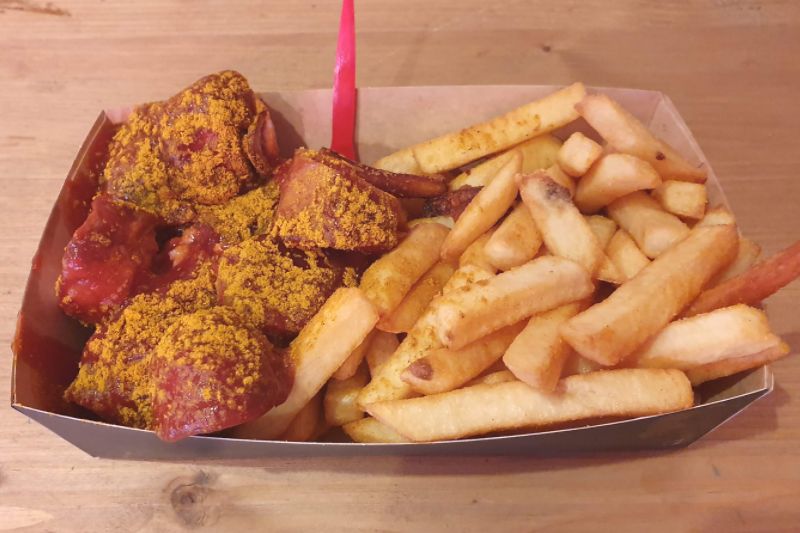
You might be expecting the typical German foods in Berlin, but schnitzel isn’t the only thing on the menu in this melting pot of a city. There is a great international food influence in Berlin that leads to a lot of fusion.
If you’re lucky enough to be in Berlin on a Thursday, be sure to check out all the street-food vendors at Markthalle Neun . It opens at 5pm and features dozens of food options.
Even before I spent any time in Berlin, I knew about the Currywurst . It’s Bratwurst served with curry powder and ketchup, plus generally a side of fries. It’s one of the most popular street food dishes in Berlin. You’ll find some of the best Currywurst at Curry Mitte (in the middle of Mitte – very convenient), or at Curry 36.
- Sachsenhausen Concentration Camp Memorial Tour from Berlin
- Berlin Icebar Experience Including 3 Drinks
- Classic Bites and Culinary Trends Neighborhood Food Tour in Berlin
Day 3: Dresden
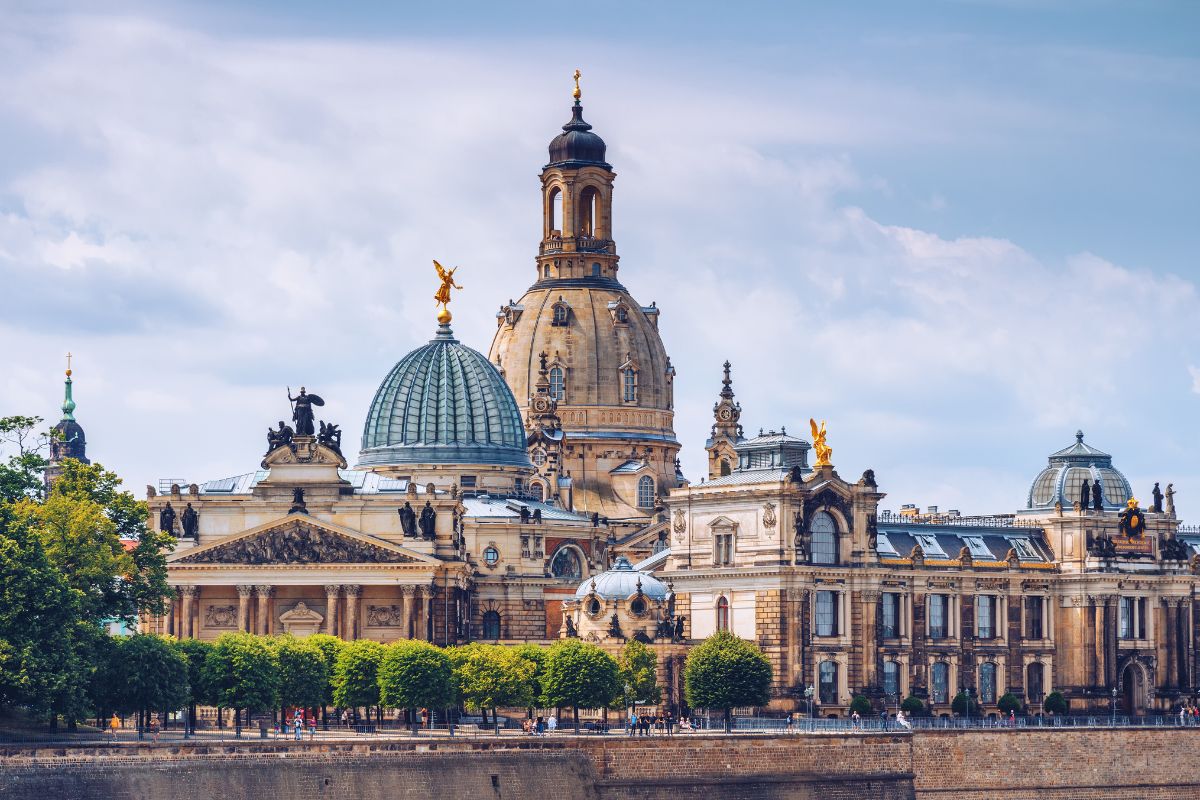
Dresden is between 2 and 3 hours away from Berlin by train or car. This city is the perfect follow-up to your historical journey through Berlin. Dresden has three major landmarks – the Baroque Zwinger Palace, Semperoper opera house, and the Church of Our Lady – all of which are must-sees.
- The first thing you should do when you arrive in Dresden is visit the Frauenkirche Church , also known as the Church of Our Lady. This Baroque-style building has a rich history that begins in the 11th century when the originally Romanesque structure was built, through the 18th century when it was destroyed and rebuilt.
- The Zwinger Palace was built in the baroque style. It’s a palatial estate with gardens that houses internationally renowned museums and is the stage for many festivals, parades, and dramas.
- Semperoper is where you’ll find world-class opera, ballet and concert performances in one of the most beautiful opera houses in the world. Check out their calendar to see what’s on during your visit.
- We also recommend spending a few hours at the Green Vault . This is the site of the royal treasury, but it’s also a great spot for recreation.
- This Renaissance palace was the residence for the Electors and then the Kings of Saxony from the 16th to the 19th century.
- The Dresdener Residenzschloss was a residential palace from the 16-19 centuries, but is now a collection of museums for the various state collections.
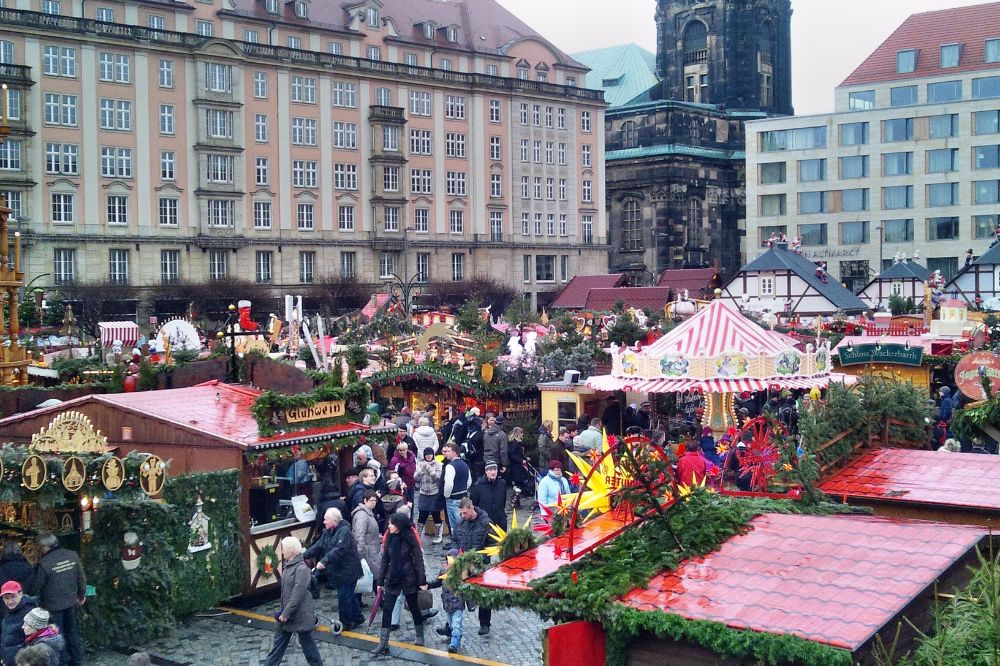
Where to Stay in Dresden
The best place to stay in Dresden for tourists is the Altstadt, where you’ll really be able to enjoy and experience the rich past of the city and feel like you’re immersed in the history of the place. There are many great hotels in this area and they are walking distance to most things you’ll want to see.
- Gewandhaus Dresden, Autograph Collection
- Hilton Dresden
- NH Collection Altmarkt
Where to Eat in Dresden
The top Saxony dishes you should try in Dresden are mostly consisting of meat and potatoes. These are all definitely worth a try if you find them on the menu:
- Rinderroulade – This is a thin-sliced round steak, rolled up with a coat of mustard with diced bacon and pickles.
- Dresdner Sauerbraten mit Rotkraut – A slow roasted and spiced leg of beef that is sliced and served with red cabbage and bread dumplings.
- Sachsische Kartoffelsuppe – A hearty potato soup with speck or sausage.
Pulverturm , located right downtown, is a great place to try Saxony dishes in a unique underground vault restaurant complete with original stone walls.
You’ll also find many of the dishes above on the menu at AltMarktkeller , a beer cellar restaurant that serves local traditional dishes.
We especially love Paulaner’s im Taschenbergpalais which serves excellent Central European cuisine alongside a great variety of beer.
A popular beer garden where you can eat and drink outside is Augustus Garten – definitely go here if it’s a nice day out and you want to just enjoy the atmosphere and the nice weather.
- City Walk – Dresden in One Day
Day 4-5: Rothenburg Ob Der Tauber
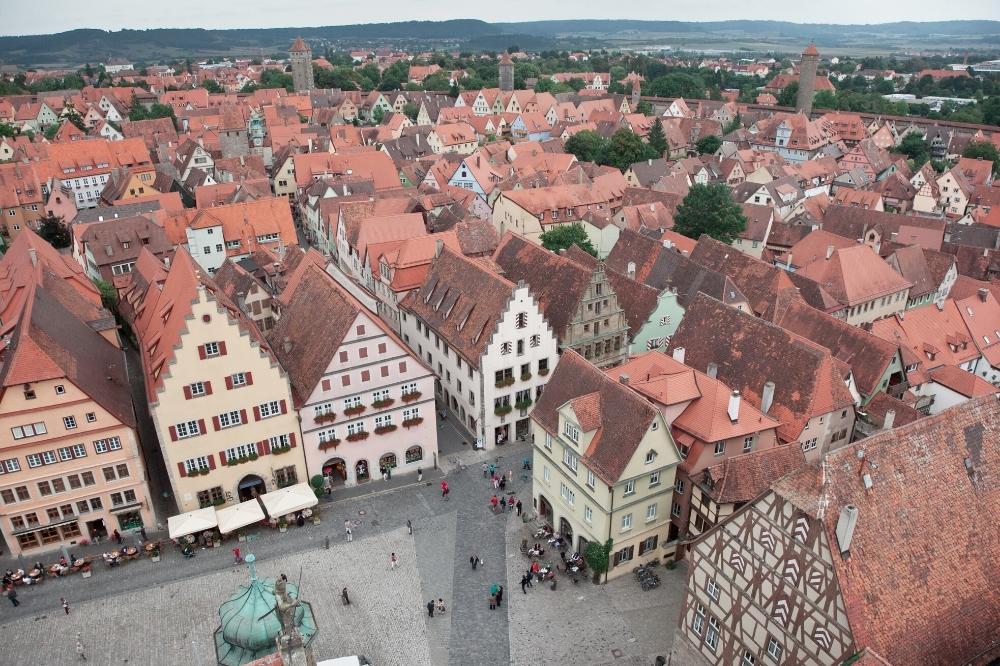
Rothenburg ob der Tauber is a fair train journey from Dresden (about 7 hours), so you might need to leave it off your itinerary if you’re using the train – or plan to add an extra day for the journey. If you’re driving, it will take about 4 hours 30 minutes. For that reason, we have given 2 days for this cute town, so you can enjoy the drive along the Romantic Road, or get there by train and still have time to see everything.
Romantic Road is one of the most well-traveled paths in Germany. It takes you through several quaint and picturesque towns like Ausburg and Wurzburg as well as beautiful forests before reaching the famously colorful town of Rothenburg.
Rothenburg’s streets are lined with timbered houses, painted in every color of the rainbow. Complete with cobbled streets and warm-looking red roofs, Rothenburg ob der Tauber (which translates in English to ‘red fortress above Tauber River’) dates back to the Medieval ages and feels like a trip back in time.
If you choose to visit Germany in December, you will love the abundance of Christmas markets that set up along the streets. Be sure to grab a mug of hot Glühwein as well. Last time I visited, you got a different souvenir mug to keep from each Gluhwein stand.
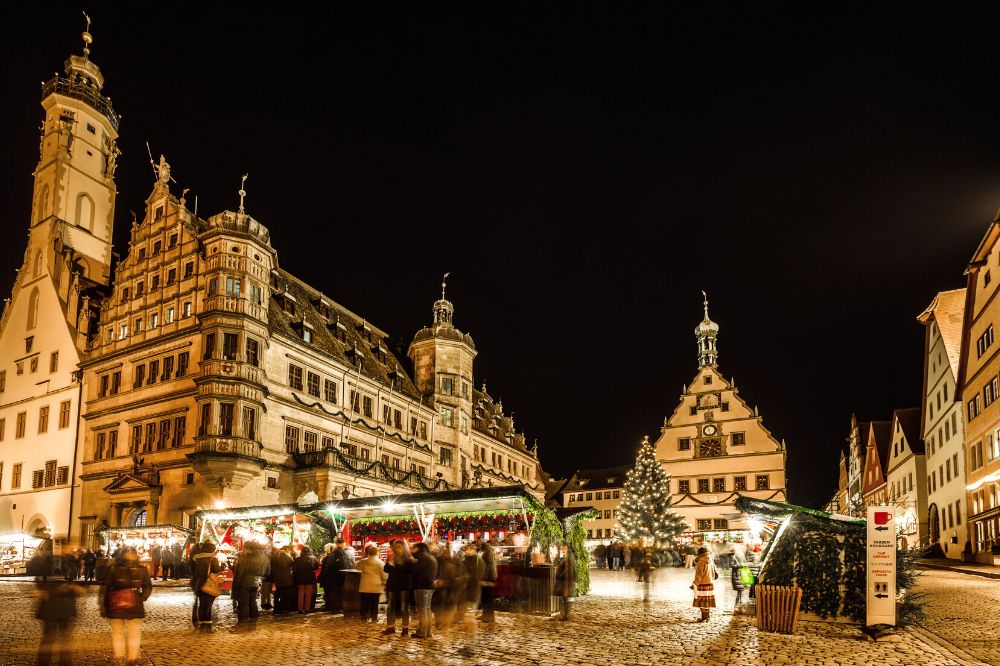
Here are the things you’ll want to do in the city:
Take a walk along the walls. The old quarter has 42 towers, most of which you’ll find along the 4 kilometer Tower Trail, which is open around the clock for you to walk on, with plaques along the way giving information.
Walk around town. You’ll see the beautiful Town Hall (Rathaus) with the clocktower that animates every hour with cute little figurines. Also be sure to see the most picturesque spot in town (pictured below), the Plönlein, which translates as “little square”. So cute!
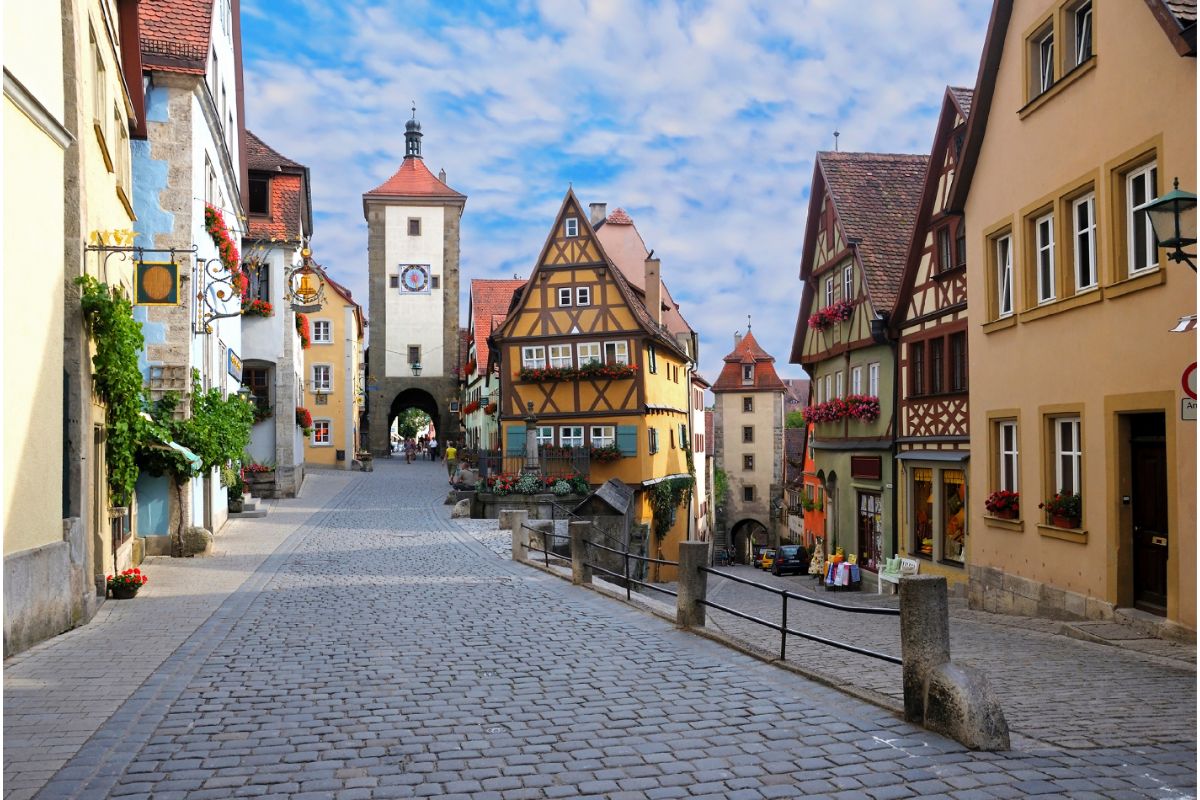
Rothenburg Castle makes for a relaxing afternoon strolling through the castle garden or the park, learning some more history on the way.
In the evening, if you’re in the mood for an eerie and exciting experience, you should book a spot on the Night Watchman Tour to hear some German legends and see Rothenburg at night.

Where to Stay in Rothenburg
The town is very small so there are only a few choices for hotels, all of which are well located and easy walking distance. My recommended hotels are:
- Hotel BurgGartenpalais
- Hotel Eisenhut
What to Eat in Rothenburg
What I love about this town is how everywhere you go is just as cute as the next place. There are some really cool places to eat here.
There are also a number of local foods you should try. One of my favorites is the Schneeball, which you will see in the store windows of many bakeries. Stop and give one a try. This is also a good opportunity to try Wiener schnitzel (pounded breaded veal) and Schweinsbraten (roast pork).
Zur Höll – Translates as “To Hell”, this is a super cool medieval cellar restaurant with a cozy atmosphere inside one of the oldest homes in Rothenburg. Some of the tables are in carved out caves.
The Bell Restaurant – If you’re a wine lover , you have to visit this restaurant and winery located on the Plönlein Corner. You can even take a tour of the vineyard and cellar.
Day 6: Neuschwanstein Castle
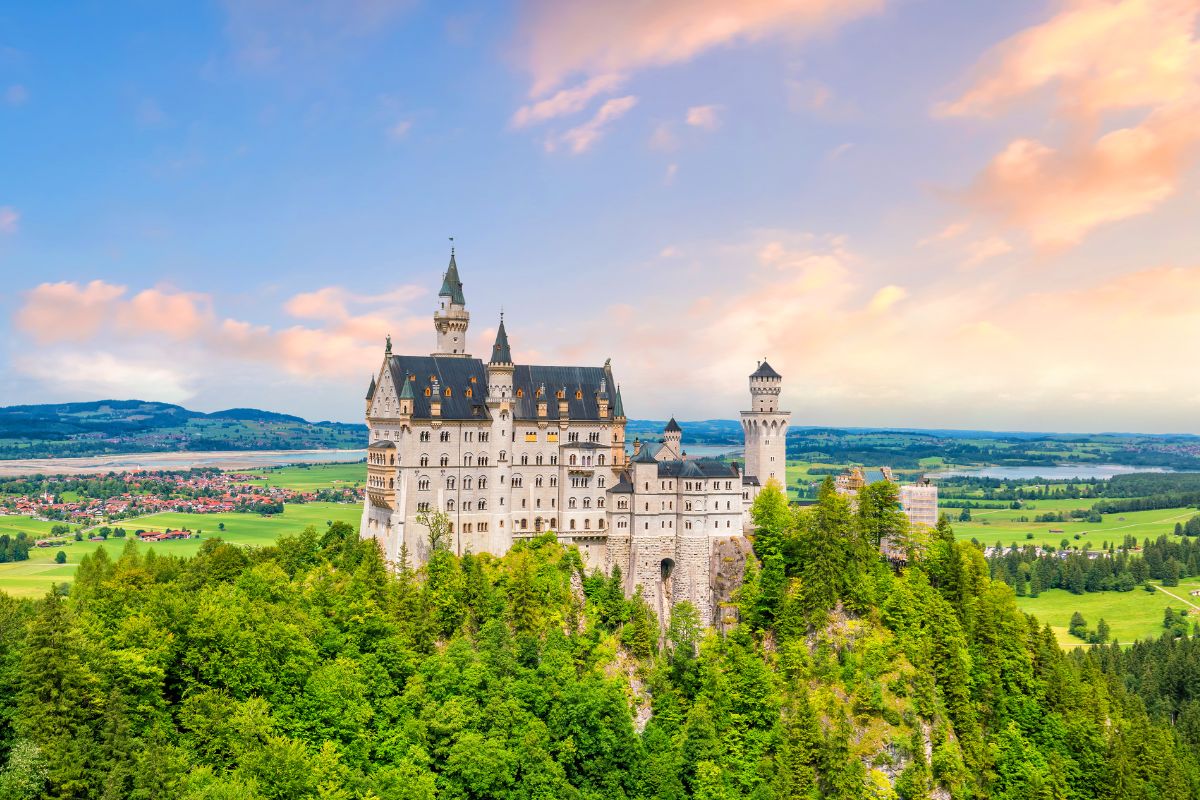
On day 6, you will be exploring Neuschwanstein Castle , which is about 2 hours outside Munich in the village of Hohenschwangau. It takes about 2 hours 20 minutes to get there by car from Rothenburg ob der Tauber.
Another option is to go directly to Munich and take a guided tour to Neuschwanstein, which will take away some of the stress of planning. I recommend this full-day tour from Munich , which includes round trip train and a guided tour.
The castle itself feels like something out of a fairytale, and you can learn all about its 19th-century history on a tour. Neuschwanstein Castle is a popular tourist attraction, so you must book your tickets in advance for a timed slot. The tour is 30 minutes long, but you have to also get up to the castle, which takes about 30 minutes as well.
You can buy tickets at the entrance, but you likely either won’t get the time you prefer or you won’t get a ticket at all if they sell out, especially because they go on sale at 8am and you likely won’t arrive by then.
You can also take a tour of the Hohenschwangau castle on the opposite mountain, but you will need almost the whole day to complete these two, so you’ll have to decide how much time you have.
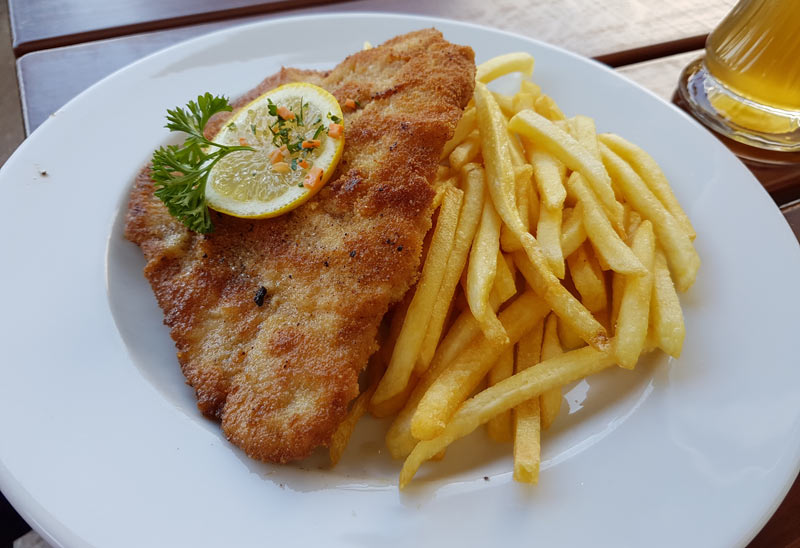
Where to Stay
If you’re planning to stay overnight in Neischwanstein and really get the most out of your time there, you’ll want to book at the Villa Ludwig Suite Hotel & Chalet . It’s fantastic and located right in the historic center of Schwangau.
Where to Eat Near Neuschwanstein Castle
If you want to sit down for a meal while you’re visiting the castle, I would recommend the Neuschwanstein Restaurant that is located up on the hill as you come down. It is a touristy area, so no matter where you eat it will be a tourist restaurant, so why not try the one with the most atmosphere.
Order a kase spaetzle and a schweineschnitzel and enjoy the scenery.
At the bottom of the hill, after you’ve descended into town, our recommendation is Schlossbrauhaus Schwangau , which is a rustic microbrewery serving authentic Bavarian cuisine.
Instead of staying in the area, I recommend taking the train back to Munich for the night. There are more choices and you’ll be ready to go for day 7.
- Neuschwanstein and Linderhof Castle Small-Group Premium All-Inc Tour from Munich
- Neuschwanstein Castle Small-Group Day Tour from Munich
Day 7: Munich City Center
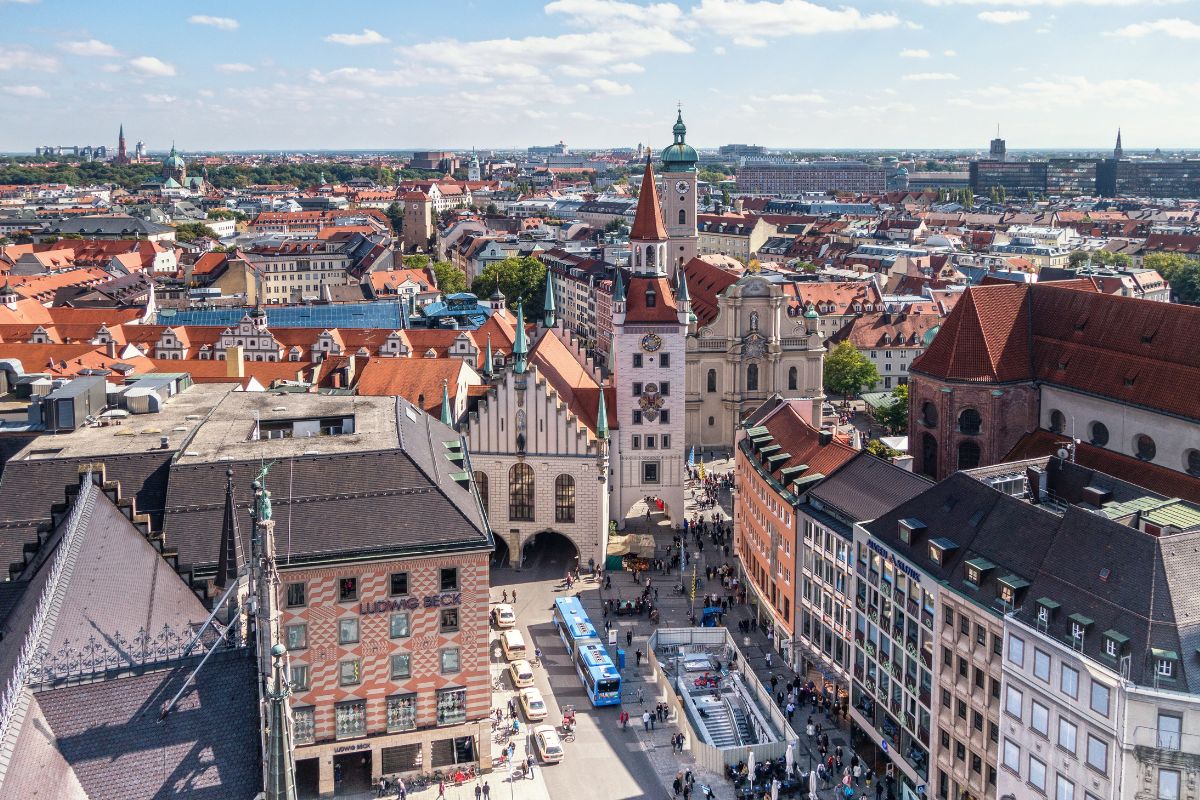
Spend your final day in Germany in one of the most vibrant and fun-filled cities in the country: Munich.
Munich Old Town is a must-see if you’re interested in medieval architecture. The Glockenspiel is probably the main tourist attraction in the area. It’s the chimes of the clock tower that plays a scene with dancing figures on the hour. You’ll find this at the New City Hall (Rathaus) tower at Marienplatz. Plan to be there on the hour, then take a walk along the Marienplatz to take in all the sights and do a little shopping.
One of the best ways to learn about Munich and get acquainted with the city in a short time is on a walking tour. I recommend this 2-hour tour that takes you to historic landmarks like the Old Town Hall, Frauenkirche and St Peter’s Church, past the famous Hofbräuhaus beer hall, into the lively Viktualienmarkt food market, Marienplatz and Odeonsplatz.
We also recommend taking a walk around Englischer Garten, which is a park dating back to the 18th century. This is the perfect place to enjoy lunch with a cold beer and a satisfying view because there are plenty of beer gardens, including our personal favorite, Hirschau .
You can take your pick from the various museums open to the public in Munich. The State Museum of Egyptian Art is particularly fascinating, as is the Deutsches Museum . To see some incredible antique sculptures from the Greek and Roman eras, be sure to visit the Glyptothek .
Want to spend more time in Munich? Check out this Munich Itinerary: How to Spend 3 Days in Munich .
Where to Stay in Munich
I like to stay within walking distance of the Marianplatz because most everything you’ll be doing is near there. However, if you are planning your trip to coincide with Oktoberfest, you might want to stay nearer to the fest grounds called the Theresienwiese , so I have two recommendations.
- Platzl Hotel – 4 star hotel, 5 minutes walk to the Marianplatz
- Marc Munchen – Adults only 4-star hotel within close proximity to the Theresienwiese and the train station. We’ve stayed here numerous times and always love it.
Where to Eat in Munich

Bavarian food is much like what you’ve come to expect in Germany with a lot of sausage, schnitzel and potato dumplings. There are a few extra dishes that are served in Bavaria that are unique to here.
- Weisswurst – a white sausage made with veal and pork and served in a bowl of broth, often served with a pretzel and beer on the side.
- Münchner Schnitzel – Like other variations of schnitzel, this one is special to Munich and is spread with horseradish or mustard before being breaded and fried.
You can toast the amazing experiences you’ve had and order a final Bavarian meal at Hofbrauhaus , which is one of the most famous taverns in the world. It’s huge and super fun. Another way to enjoy it is on a Beer & Food Evening Tour, on which you’ll visit Hofbrauhaus and a few others, plus the beer museum.
Another place we really like to eat is Weinhaus Schneider , a cozy and eclectic fondue restaurant near the Rathaus. The Ratskeller Restaurant is another fun 19th-century cellar restaurant right next to the Rathaus.
Attending Oktoberfest
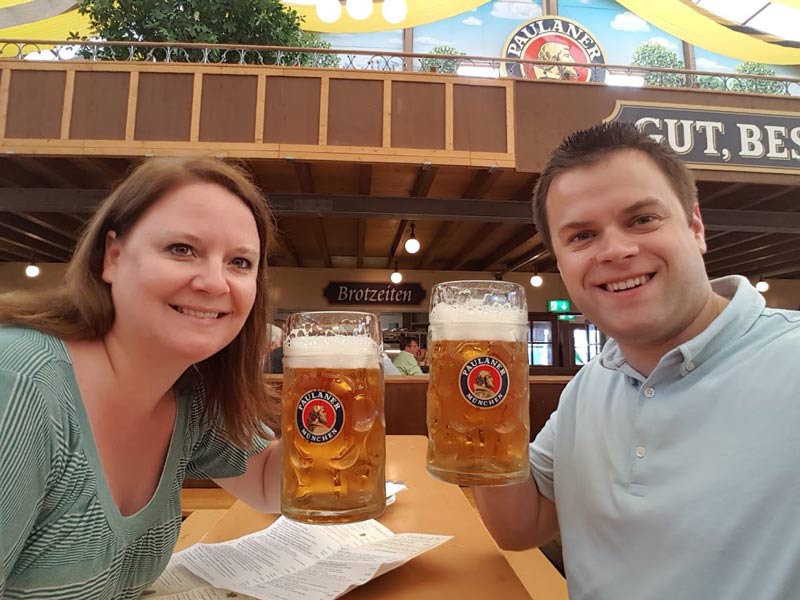
If you’re planning your trip to coincide with Oktoberfest , which takes place from mid-September to early October most years, you will definitely want to plan ahead. Hotels fill up fast, so book your stay at least 4-6 months ahead.
You don’t need tickets to attend Oktoberfest and the best time to go is during lunch on the weekdays, so you can get a seat at a table and see various tents without needing a table reservation. Table reservations for the evening session are VERY hard to come by. Try this small-group Oktoberfest tour that includes a reserved tent table.
Read our full guide on Oktoberfest to plan your trip.
Tours To Try:
- Bavarian Beer and Food Evening Tour in Munich
- Dachau Concentration Camp Memorial Site Tour from Munich by Train
What To Do If You Have More Time
Day 8+: lake constance and the black forest.

A lot of our itinerary so far has been based in some of Germany’s famous cities, but if you have extra time to spend, we recommend getting away from the city and exploring the Black Forest and Lake Constance.
Lake Constance is a World Heritage Site, located about 3 hours away from Rottenburg, and it’s one of the best places to go if you want to see the Alps in all their glory.
The Black Forest is about 2 hours away from Lake Constance. If you’re driving, you could stop at Constanzer Wirtshaus for lunch on the way. This is a traditional German Pub with a beautiful view of the river.
Wine Tasting in Germany
The Black Forest is also known for being home to some of Germany’s best vineyards and wineries. If you’re in the mood for a glass of wine after your forest excursion, you should definitely visit Nagelsforst for a wine tasting.
The wine area of The Black Forest is the 3rd largest and southern-most wine region in Germany
Tips For Visiting Germany
If this will be your first time visiting Germany, bear these tips in mind to ensure you get the most out of your week:
- Remember that Germany is amongst the most populous European countries, and since it’s known for being very tourist-friendly, it’s also a popular vacation destination. This means that you’re likely to encounter a lot of crowds, especially in major cities like Berlin and Munich. Therefore, it’s best to book restaurant tables, tours, and other activities ahead of time.
- Germany is a beautiful country, but it’s important to remember that many aspects of German history are very sensitive and sobering subjects. Therefore, it is imperative to be respectful at all times, but particularly when visiting memorials and historical sites.
- A week in Germany is enough to see the major cities and have a diverse range of experiences. However, if you want to spend more time in cities like Berlin or try to see some of Germany’s lesser-known hidden gems , we recommend extending your stay to 10 days or 2 weeks.
- Restaurants and Bars – You do not get water for free, you have to pay for it. If you order water you will get carbonated water. In most restaurants, you can request tap water and they may or may not charge you but it is most likely straight from the sink.
Frequently Asked Questions
How many days in germany is enough.
For a more comprehensive tour of Germany, including major cities, cultural landmarks, and natural beauty, 10-14 days or more would be ideal. If you plan to visit one major city like Berlin, Munich, or Hamburg, a minimum of 3-4 days is a good starting point to get a taste of the city’s highlights. If you want to explore a specific region, like the Romantic Road or the Bavarian Alps, you might need around 5-7 days to see the main sights and immerse yourself in the local culture.
What to do in Germany for a week?
Start in Hamburg, where you can enjoy the funfair rides and cultural delights during Hamburg Dom. Explore the Speicherstadt and HafenCity, along with museums and beautiful lakes. Day 2 takes you to Berlin, where you’ll visit historical sites like the Holocaust Memorial and Berlin Wall. Marvel at the Brandenburg Gate and explore Museum Island. Day 3 continues to Dresden, known for its Baroque landmarks, including Zwinger Palace and Semperoper opera house. Day 4-5 brings you to Rothenburg ob der Tauber, a picturesque town along the Romantic Road. Day 6 leads you to the fairytale-like Neuschwanstein Castle, offering a glimpse of 19th-century history. End your journey in vibrant Munich, exploring its Old Town, the Glockenspiel, Englischer Garten, and fascinating museums. This itinerary promises a memorable and diverse exploration of Germany’s history, culture, and natural beauty.
How much money do you need for a week in Germany?
Overall, a rough estimate for a budget traveler in Germany might be around €800-1200 for a week, excluding international flights. Mid-range travelers could plan for €1200-2000, while luxury travelers might budget upwards of €2500 or more.
Remember that these are general estimates, and your expenses depend on travel choices and spending habits.
Final Thoughts On This 7-Day Germany Itinerary
We hope that you’ll thoroughly enjoy your week in Germany with the help of our 7-day itinerary!
Remember to leave yourself enough time to travel by car or train between your destinations each day to ensure you get to see everything.
Be Prepared For Travel Planning is the most important part of any successful trip. Do it the easy way:
🧳 Travel Packing List | ✔️ Why You Need Travel Insurance | ✈️ What to Do Before You Leave Home
- Find and book the best hotel (our favorite booking site is Expedia)
- Research flight options (our favorite tool is Skyscanner )
- Book a tour (we always use Viator to find the best tours)
- Rent a car through Discover Cars (they search the best deals for you!)
YOU MIGHT ALSO LIKE
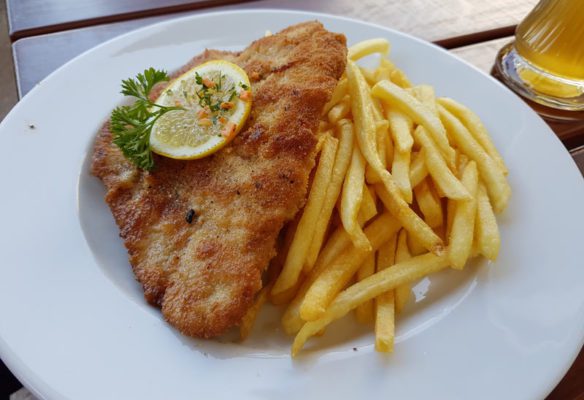

How to Make Schnitzel & Spaetzle
![Essential Travel Guide to Berlin, Germany [Updated 2024] 2 Berlin](https://www.savoredjourneys.com/wp-content/uploads/2019/09/berlin-feature-600x600.jpg)
Essential Travel Guide to Berlin, Germany [Updated 2024]

How to Plan a Trip to Europe (2-Week Europe Itinerary)

How to Visit Neuschwanstein Castle from Munich
Like this post? Why not save it to Pinterest? FOLLOW US on Pinterest , Instagram , Facebook for more great travel inspiration and tips.

Laura Lynch, creator and writer of Savored Journeys, is an avid world traveler, certified wine expert, and international food specialist. She has written about travel and food for over 20 years and has visited over 75 countries. Her work has been published in numerous guidebooks, websites, and magazines.
4 thoughts on “ The Perfect 7-Day Germany Itinerary ”
Do you actually put together trips for Oktoberfest or do I need to go through a travel agent?
We don’t put together the trips ourselves. We just offer advice.
Can you give me a roundabout of how much the 7 day might cost if we rent a car and stay in moderately priced hotels? Without airfare, of course.
Hi Kim, It’s very hard to estimate because every traveler is different in their spending, but the average price of a 7-day trip to Germany is $2,200 for a couple and $2,600 for a family of 4.
Leave a Reply Cancel reply
Your email address will not be published. Required fields are marked *
Save my name, email, and website in this browser for the next time I comment.
- Travel Resources

Get our Rail Planner app
Plan your trip, get extra discounts, and show your Pass as you go.

Our favorite spring routes
Celebrate spring with these 7 off-the-beaten-path train routes

All about seat reservations
Everything you need to know about booking your seats

Alternatives to Busy Routes
Travel between popular European cities without seat reservations

Through our Chatbot in the bottom right corner.

Ask the Community
Browse questions from fellow Eurail travellers, or ask your own!
- Plan your trip
- Suggested Itineraries
Germany Travel Itinerary
- Order overview
- Reservations overview
- My Trips & Travelers
- {{translatedTraveler}} {{#promotional}} {{currencySign}} {{standardPrice}} {{/promotional}} {{quantity}}x {{currencySign}} {{finalPrice}}
- Child {{childPasses}}x FREE
- {{translatedPassType}}
- {{translatedValidityPeriodDescription}}
- {{translatedClass}}
- Remove Pass(es)
- {{variant.localizedTravelPackDescription}} {{quantity}}x Free
- {{variant.localizedPassUpgradeDescription}} {{quantity}}x {{currency}} {{price}}
- Your order will arrive by {{expectedDeliveryDate}} 1 x {{currency}} {{price}}
Your cart is empty
Germany is impressive. Picture this: Natural and architectural wonders, distinctive dishes and beers, and a fascinating history. The country is a feast for the eyes, mouth, and mind. Our Germany itinerary takes you on an adventure through five major cities. From skyscrapers to historical landmarks, museums to parties, and a constant cool factor - we've got all interests covered.
We offer one-country passes to Germany at our dedicated German Rail Passes site.
Itinerary highlights
Cities visited on this trip:.
Click here or on the map to view this route in our Trip Planner

Frankfurt, Germany
Frankfurt is the financial capital of Europe - for proof, just look at its modern skyscrapers and the giant Euro Sculpture in front of the European Central Bank. Go to Main Tower and take an elevator to its viewing platform. On a clear day you’ll be able to see above the entire city, the river Main, and their surrounding areas. Another architectural delight is the My Zeil shopping center, located on Frankfurt’s bustling shopping street Zeil. The building’s remarkable curved glass roof and vortex-shaped facade has to be seen to be believed. Afterwards, step back into nature at the City Forest (Stadtwald), Germany’s biggest inner-city forest.
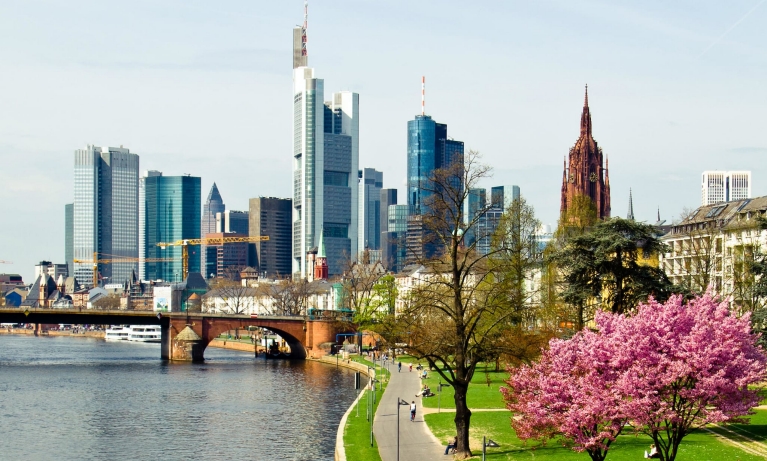
From Frankfurt to Cologne
Travel time:
Reservation needed:
Frankfurt am Main Hbf
Reservation optional
Cologne, Germany
Cologne (köln), germany.
The magnificent Cologne Cathedral (Kölner Dom) welcomes you when you arrive in Cologne – it lies on the doorstep of the main train station. Reach the top of the South Tower’s spiral staircase and be rewarded with a sweeping view over the river Rhine. The nearby Hohenzollern Bridge is covered with love padlocks. Cultural buffs have a smorgasbord of museums and galleries to discover. Modern art fans should go to Museum Ludwig . If you like big celebrations, time your visit for the crazy Carnival in February, or Christopher Street Day and the Cologne Lights Festival (Kölner Lichter) in July.
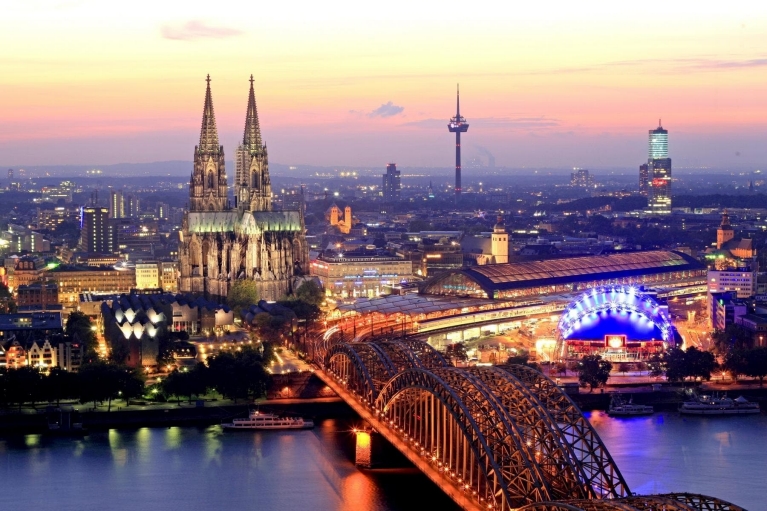
From Cologne to Berlin
Berlin, germany.
Berlin. The capital of cool. It has an exciting mix of history, culture, and nightlife, with discoveries at every corner. Make sure you add the East Side Gallery to your Berlin itinerary – it’s the world’s largest open-air gallery with murals painted across almost a mile (1.3 kilometers) of the former Berlin Wall. One of the most iconic symbols of the city is the 18 th century Brandenburg Gate . Minutes away lies the Holocaust Memorial . Its thought-provoking design and underlying museum leave a somber reminder worth reflecting on – definitely a must for your Germany itinerary.
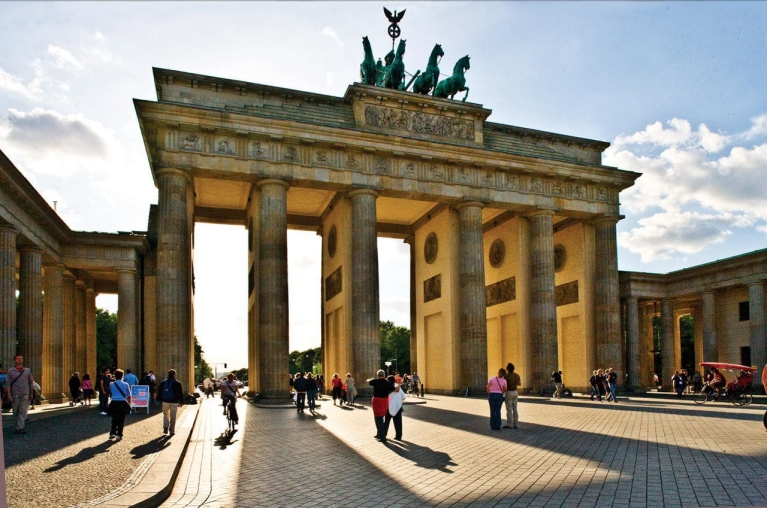
From Berlin to Dresden
Reservation required
Dresden, Germany
Dresden Hbf
Dresden is a cultural and architectural gem. It was called the “Jewel Box” thanks to its former role as the royal residence of the kings of Saxony. Most of Dresden’s historical center was destroyed by bombings in 1945, but much has been restored to its former glory. The city's inner old town holds several treasures, including Dresden's signature landmark the Church of Our Lady (Frauenkirche). Its ruins were left untouched for over 40 years after the bombings. Reopened in 2005, it now symbolizes hope and reconciliation. Semper Opera is another architectural masterpiece. It's an opera house, concert hall, and ballet stage, all in one grand setting.

From Dresden to Munich
Munich, germany.
München Hbf
Munich (München), Germany
Munich, Germany: home of proud Bavarians; kingdom of world-class beer. The main square Marienplatz is a great starting point for exploring the Old Town. Minutes away is the Hofbräuhaus , a definite must-see on your Munich itinerary. The world’s most famous beer hall has been around since 1589. Still up for more beer? Take a daytrip to Andechs Monastery , where Benedictine monks have been brewing beer since 1455. To gain an insight into the sad events of the Holocaust, visit the Dachau Concentration Camp . It provides a chilling account of the first National Socialist concentration camp. Tours are free.
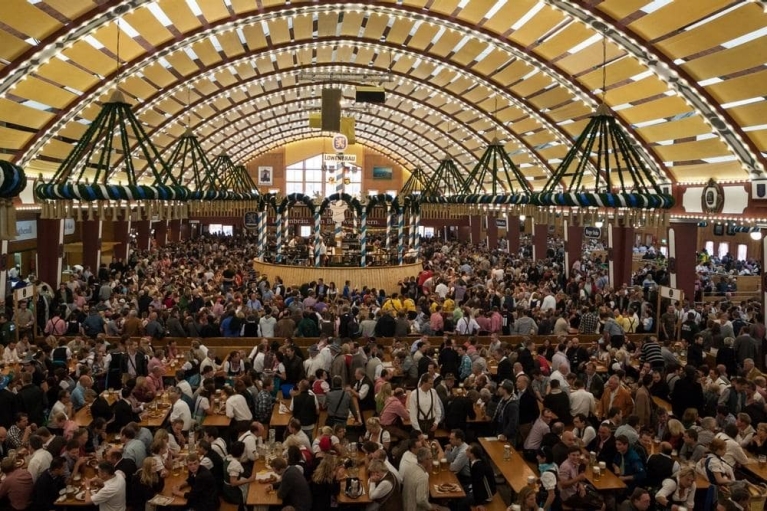
For this itinerary we recommend:
- The German Rail Pass
- Travel days: 4 days within 1 month
For ICE trains in Germany it's not mandatory to have a reservation. However, we recommend you to buy a reservation for these trains, especially if you're traveling in a group. If you travel without a reservation, you might get asked to leave your seat because someone else reserved it.
These reservations are not included in your Eurail Pass. Make sure to book your seats in advance, there are limited seats available for Eurail Pass holders. It's also possible to avoid reservations all together, simply by taking regional trains .
What are my Pass options?
German Rail Pass The ultimate Pass for train travel in Germany.
Eurail Global Pass Lets you travel in 33 countries, including Germany.
Related Pages
1 week in the netherlands.
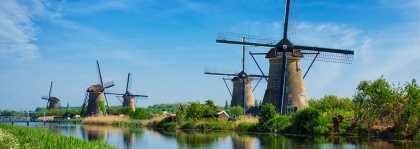
France Itinerary

Switzerland Itinerary

Austria itinerary

Change of currency
You cannot change the currency once you have a Pass in your cart. Remove the Pass, and then change the currency on the website header.

Germany Itinerary - 10 Days
- December 18, 2020
- Updatesd on Decemeber 27, 2023
In recent years, Germany has slowly emerged as Europe’s top tourist destination. The incredible country is more than just stunning landscapes, quaint medieval towns, fairytale castles, and classic vineyards. Germany is also known for its enigmatic forests, modern history, vibrant nightlife, diverse culture, and buzzing cosmopolitan vibes. Overall, a trip to Germany is an unforgettable travel experience. The country is large, impressive, and beautiful, and it is impossible to see it all in one visit. The highlights are scattered throughout the country, making it difficult to plan an itinerary. This 10-day itinerary attempts to show you the best of Germany so that you can make the most of your time there.
Suggested 10-Day Itinerary for Germany
Germany itinerary, day 1–3: munich .
Our journey begins in Munich, Germany’s third-largest city. The city is well-connected, and flights to Munich are available from all over the world. Munich is famous for its Oktoberfest , which takes place every year from the middle of September to the end of October. But there is never a shortage of things to see and do in Munich. Begin by walking through the old city center, as most of the iconic sites are within easy reach.
Climb St. Peter’s Church for breathtaking panoramic views, explore the world-class museums, enjoy a beer in one of the popular beer gardens, and immerse yourself in the vibrant street art and culture. If you like cars, you should go to the BMW Museum. The museum showcases automotive and motorcycle technological advancements. The bowl-shaped building houses a collection of vintage automobiles and motorcycles. Use Munich as a base to explore the Bavarian region on day trips.
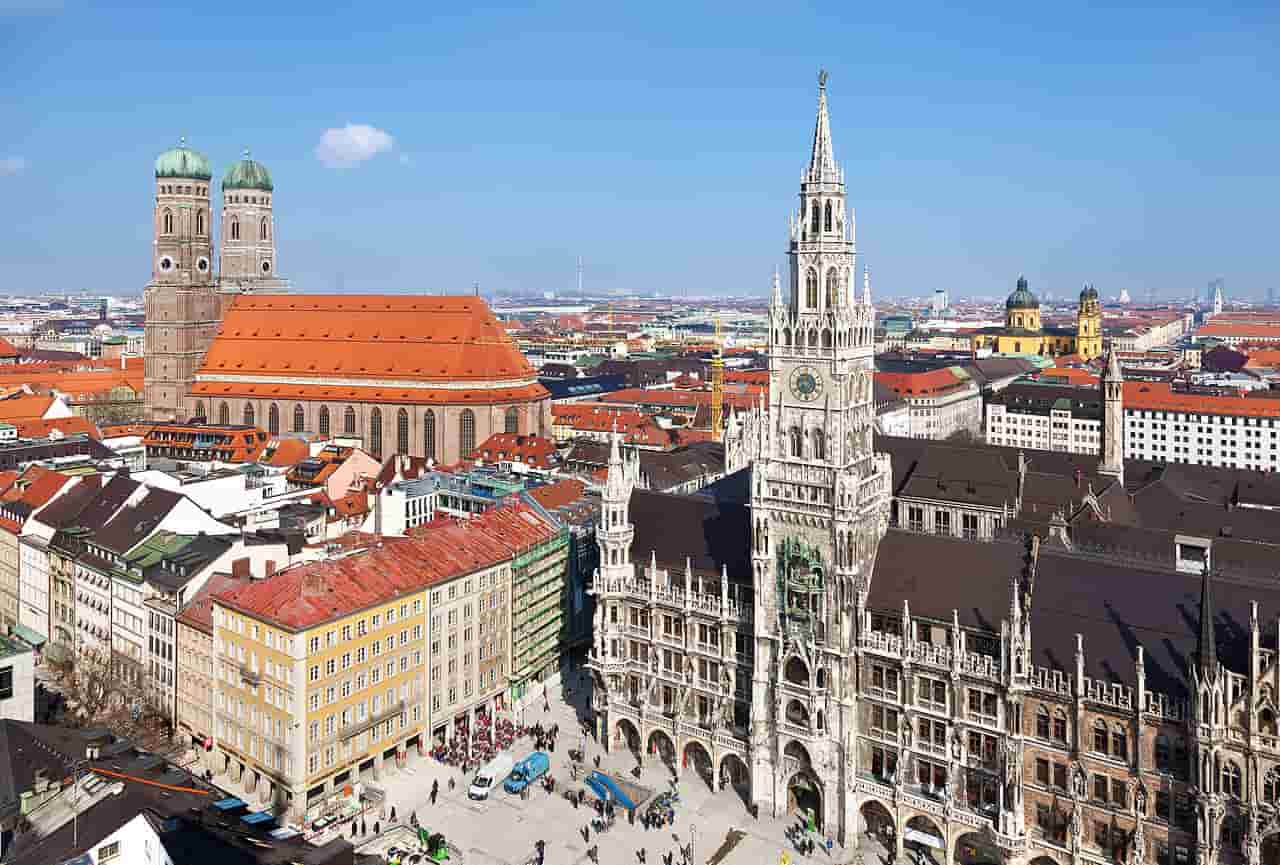
Don’t miss the classic fairytale Neuschwanstein Castle perched on a rugged hill – a perfect blend of Roman, Byzantine, and Gothic architecture. The inside of Neuschwanstein Castle is not as spectacular, romantic, or fairytale-like as the exterior, which is simply magnificent. The Castle is extremely popular, so it is best to book a tour in advance. The drive from Munich to Neuschwanstein Castle takes about two hours. If you use public transport, it will take you three hours. There are no direct train connections. You must take the train and bus, then ascend to the castle by foot, horse carriage, or shuttle bus.
Places to visit in Munich:
- St. Peter’s Church
- Rathaus – City Hall
- Frauenkirche – Cathedral Church of Our Lady
- Hofgarten – the Royal Garden
- Marienplatz Square – the Main Square
- Hofbrauhaus – the Beer Hall
- Deutsches Museum – Museum of science and technology
- Nymphenburg Palace
- Munich Residenz – Palace complex
- Dachau Concentration Camp (day trip) – Dachau was one of Nazi Germany’s first concentration camps.
- Neuschwanstein Castle (day trip)
- Zugspitze (day trip) – Germany’s highest mountain
Germany Itinerary, Day 4-5: BLACK FOREST
It will take you five hours by car or six hours by train to reach Black Forest from Munich. The Black Forest region, the birthplace of the Grimm Brothers’ Tales, is a massive spruce-covered mountain range steeped in fascinating myths. There are many charming villages and small towns to stay in the Black Forest, but Baden-Baden and Gengenbach serve as good bases for day trips and our onward journey to Heidelberg. The forests are beautiful, and there is plenty to do there, such as exploring the quaint villages, sampling the delectable Black Forest Cake, learning about cuckoo clock traditions, relaxing at a spa, and hiking in the enchanting lush forests.
Places to visit in the Black Forest:
- Triberg Waterfalls
- Lake Titisee
- House of 1000 Clocks, (Triberg) – largest selection of Black Forest cuckoo clocks in the area.
- Thermal Spas at Baden-Baden
- Lichtenstein Castle
- Freiburg– Historic Town
- Ravenna Gorge
- The Black Forest Open-Air Museum
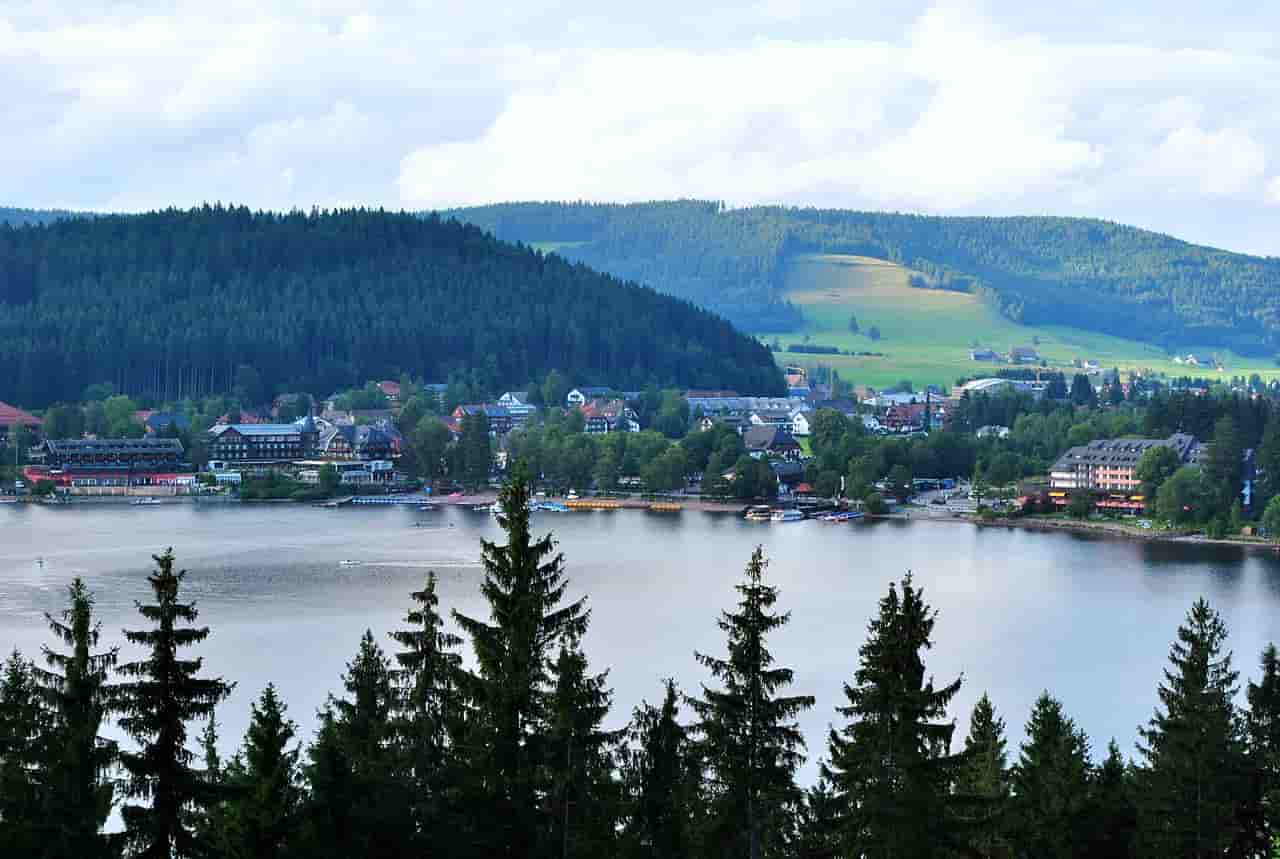
Germany Itinerary, Day 6: HEIDELBERG
Depending on your mode of transportation and where you are staying in the Black Forest, it will take you 1-2 hours to reach Heidelberg, a picturesque town known for its University. Heidelberg is one of Germany’s most popular cities, and most of its attractions can be reached on foot. You can climb or take the funicular to the castle at the top of the hill for a bird’s-eye view of the old town and the river.
Places to visit in Heidelberg :
- Church of the Holy Spirit
- Heidelberg Castle
- Hauptstrasse and the Altstadt – Old Town
- Karl Theodor – Old Bridge
- Heidelberg University
Germany Itinerary, Day 7-8: MOSELLE VALLEY
Moselle Valley is about a two-hour drive from Heidelberg. Germany is traversed by the Moselle River, a tributary of the Rhine. The Moselle Valley is the area surrounding the beautiful Moselle River. The valley is famous for its fine wine, sleepy medieval villages, crumbling fairytale castles, steep lush-terraced vineyards, and beautiful promenades. Koblenz is a perfect base for exploring the Moselle Valley region due to its central location. If you prefer larger cities, Bon and Cologne are also viable options.
Places to visit in Moselle Valley :
- Cochem Castle
- Trier – Germany’s oldest town
- Pfalzgrafenstein Castle
- Schloss Stozlenfels Castle
- Bernkastel-Kues – for wine tasting
- Traben-Trabach town
- Beilstein’s River Promenade
- Eltz Castle
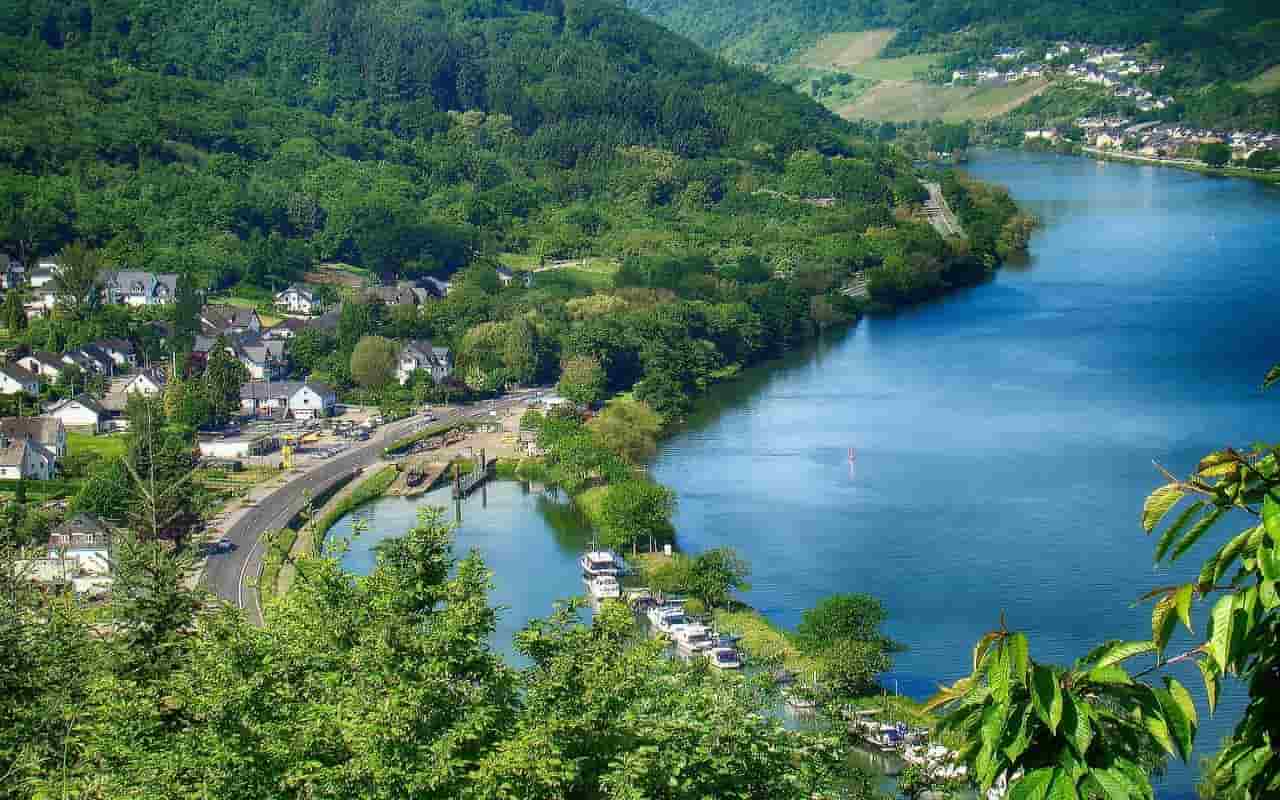
Germany Itinerary, Day 9-10: BERLIN
It takes about 6 hours (by train and car) to get from Moselle Valley (Koblenz) to Berlin, so start early because you have a full day in Berlin. Any trip to Germany would be incomplete without a stop in the bustling, hippest capital city. Berlin is cultural, political, and contemporary, with history at every turn. The city may not be visually appealing, but a visit to Berlin will provide vivid glimpses of the twentieth century’s tumultuous events, such as when Berlin was heavily bombarded during World War II. Berlin is too big to see in two days, but you can still make the most of it by seeing the main sights. The city’s most visible landmark is Berlin’s TV Tower, which rises 368 meters into the sky. You can enjoy staggering 360-degree panoramic views of the entire city – and beyond! Take a walk through Tiergarten Park, stroll along the tree-lined boulevards of Prenzlauer Berg, and enjoy the crazy nightlife. Don’t miss the world’s largest open art gallery, which adorns sections of the Berlin Wall with murals painted across a mile. Joining the free walking tour that begins at Brandenburg Gate is one of the best ways to understand the essence of Berlin. Underground tours in Berlin are another way to learn about the city’s complex history, as you can see war bunkers and escape tunnels in now-defunct metro stations.
Places to visit in Berlin:
- Brandenburg Gate
- Museum Island – a collection of five world-class museums
- Berlin Wall Memorial
- Prenzlauer Berg – Boulevard
- Reichstag – the German Parliament
- East Side Gallery (Berlin Wall)
- Holocaust Memorial – Memorial to murdered Jews of Europe
- Tiergarten Park
- Mauerpark – Flea Market
Germany Itinerary, Day 11: DEPART FROM BERLIN
It is the end of our 10-day German itinerary and time to depart for your next destination from the Berlin airport. Try to take an evening flight, so that you can use the day to explore the remaining attractions of historical Berlin.
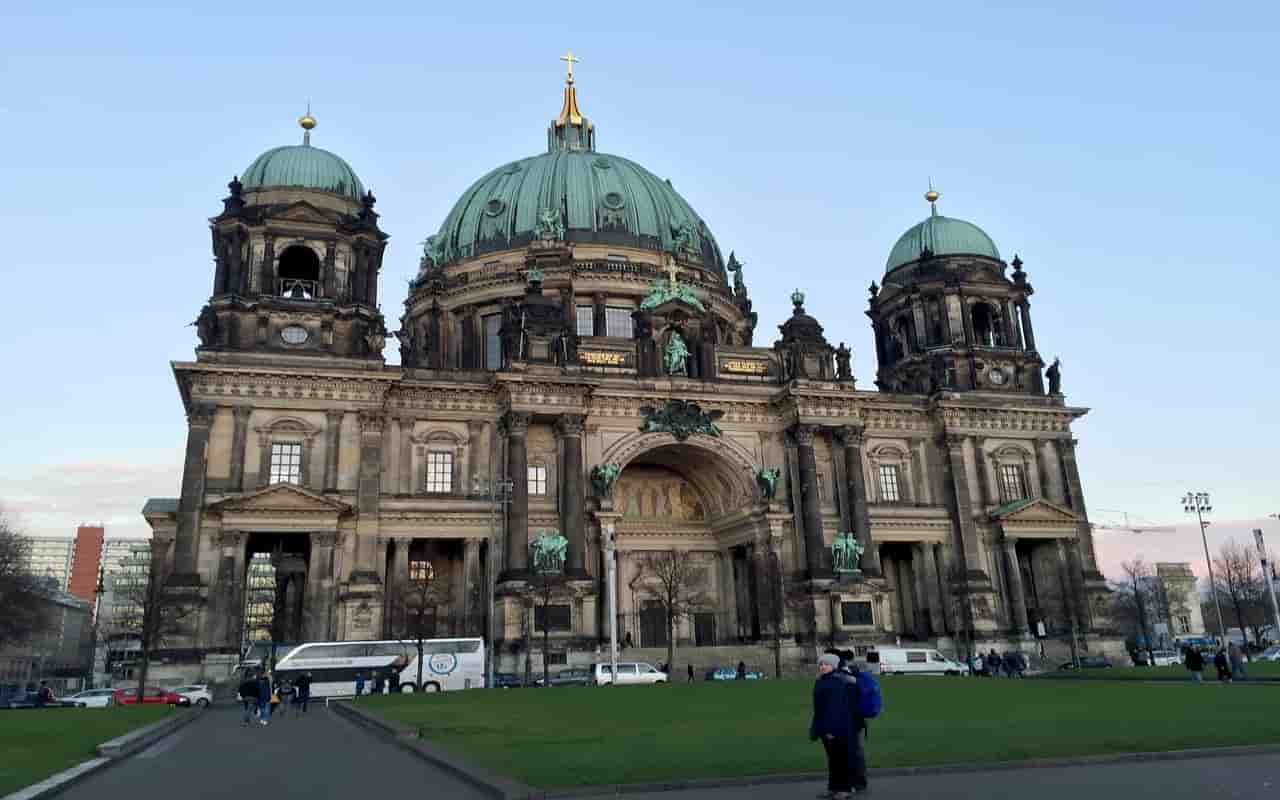
Best time to visit Germany?
Germany is a year-round destination and each season has its charms. June to September is the peak season with warm, sunny weather and long days. Perfect weather to enjoy the outdoor activities and the music festivals celebrated in different parts of the country. Winters can be cold, drab, and blustery but you can enjoy skiing opportunities, stunning landscapes, Christmas markets, and rock-bottom rates. Visiting Germany in May is a good option as it starts getting warmer, trees are in full bloom, the crowds have yet to arrive, and everything is affordable. Don’t miss the opportunity to visit Munich in autumn when the iconic Oktoberfest is celebrated. Millions of people reach Munich from all over the world, the whole city is in a festive mood, and beer flows like water.
How to reach Germany?
Since Germany is located in the heart of Europe, it is easy and economical to travel there from anywhere in the world. Frankfurt Airport is one of the world’s busiest. Germany has a comprehensive airport network that spans the entire country, allowing you to choose your arrival/departure city at your convenience. Our trip begins in Munich and concludes in Berlin, both of which are well-connected. Germany is linked to all neighboring countries by extensive and frequent train services, most of which are operated by Deutsche Bahn. All of the major cities are also well-connected by bus routes, so getting to Germany is never an issue.
Getting around in Germany?
The two most popular ways to travel within Germany are by train and by car. Unless you have a car, rail is the most convenient way to reach most parts of the country, with frequent departures. They are super fast, dependable, and comfortable, but they are not always cost-effective. Book a German Eurail Pass to travel within Germany – it’s stress-free, inexpensive, and allows you to hop on and off whenever you want. Reservations are not required but are strongly advised during holidays and weekends. Flights connect most German cities, but when you add up the wait time at the airport and all the formalities, taking the train makes more sense.
Driving on Germany’s famous autobahn is an incredible experience if you are used to driving at high speeds. Airport car rentals are available, and one-way rentals are permitted without additional fees. If you don’t want to drive, coach travel between cities is inexpensive and reliable, though not as efficient or fast as trains. Hitchhiking and ride-sharing are also popular in Germany.
Getting around the city?
Germany, like the rest of Europe, has an excellent public transport system. In cities such as Berlin and Munich, a single ticket grants access to U-Bahn (subway), S-Bahn (above ground), trains, and trams. A multi-ticket strip or day pass will be less expensive than a single-ride ticket. Without a car or taxi, efficient public transport will get you everywhere. Taxis are expensive and can be avoided. Uber’s availability in Germany is quite limited. In cities and along popular cycling routes, Germany has dedicated bike lanes. You can rent a bike to get around
Things to Know Before Traveling to Germany
- Although German is the official language of Germany, English is widely spoken and understood throughout the country. If you visit smaller towns and villages, you may have difficulty communicating with the locals, but in large cities and popular tourist areas, language should not be a barrier to getting things done.
- The euro is the official currency of Germany since 2002. One Euro is around 1.11 dollars
- Don’t miss the traditional Christmas markets if you’re visiting during the holiday season. They offer a festive atmosphere, as well as local crafts and delectable seasonal treats.
- There are numerous museums and historical sites in Germany. If you intend to visit multiple attractions, consider purchasing a museum pass to save money on admission.
- German cuisine is diverse and delicious. Don’t miss out on trying traditional dishes such as schnitzel, sausages, pretzels, and sauerkraut. Also, indulge in the variety of German beers.
- Tipping is common in restaurants and cafes. A tip of around 5-10% is customary.
- While credit and debit cards are widely accepted, it’s a good idea to carry some cash, especially in smaller towns or for smaller purchases.
- Germans place a high value on punctuality, so arrive on time for appointments and reservations.
- Tap water in Germany is safe to drink, so carrying a reusable water bottle is a smart idea.
This Post Has 4 Comments
I’d love to explore Germany at some point! I visited Berlin around 7 years ago and absolutely loved it. It’d be great to travel around the country and discover more though! Your 10 day itinerary is amazing 🙂
Beautiful! Thanks for sharing these pictures and information with me. This is where my heritage is from, and my husband’s Mom was born and raised in Germany. ~Michelle
Very helpful itinerary. Keep up the good work. 😀
Hahaha!! Thanks
Leave a Reply Cancel reply
Save my name, email, and website in this browser for the next time I comment.
This site uses Akismet to reduce spam. Learn how your comment data is processed .
Subscribe to Our Newsletter
You may also like..., bhutan itinerary for 7 days, kerala itinerary - 7 days, traveling as a vegetarian.
The Outdoor Lovers' Guide To Beautiful Places
- Work With Katiesaway
- Destinations
Europe , Germany , Road Trip · April 30, 2022
Road trip in Germany – The Ultimate 2 Week Germany Itinerary
A road trip to Germany is the ultimate way to experience this beautiful country. Spend a few days in bigger cities and then head into the countryside to visit some of Germany’s most beautiful villages. This 2-week itinerary for a German road trip takes you away from the more popular places in Germany, to discover the culture in the small valleys and wine regions. Stopping at villages along the Rhine and Mosel rivers , tasting wines in the Ahr Valley , while also stopping in bustling cities such as Hamburg and Cologne.
Planning a road trip in Germany or looking for ideas for a two week itinerary? This two week Germany road trip in Northern Germany as we started our journey from Sweden ! As it is a loop you can definitely start your trip from anywhere along the route! Lübeck and Northern Germany is a beautiful place definitely worth visiting in the summer! However, if you wanted to do a 10-day road trip through Germany you could leave this out! Otherwise, you could replace 4 days with spending more time in one of the below locations or visiting some other bigger cities.
So, here is everything you need to know about spending 2 weeks in Germany with a 10 – 14 day road trip itinerary!
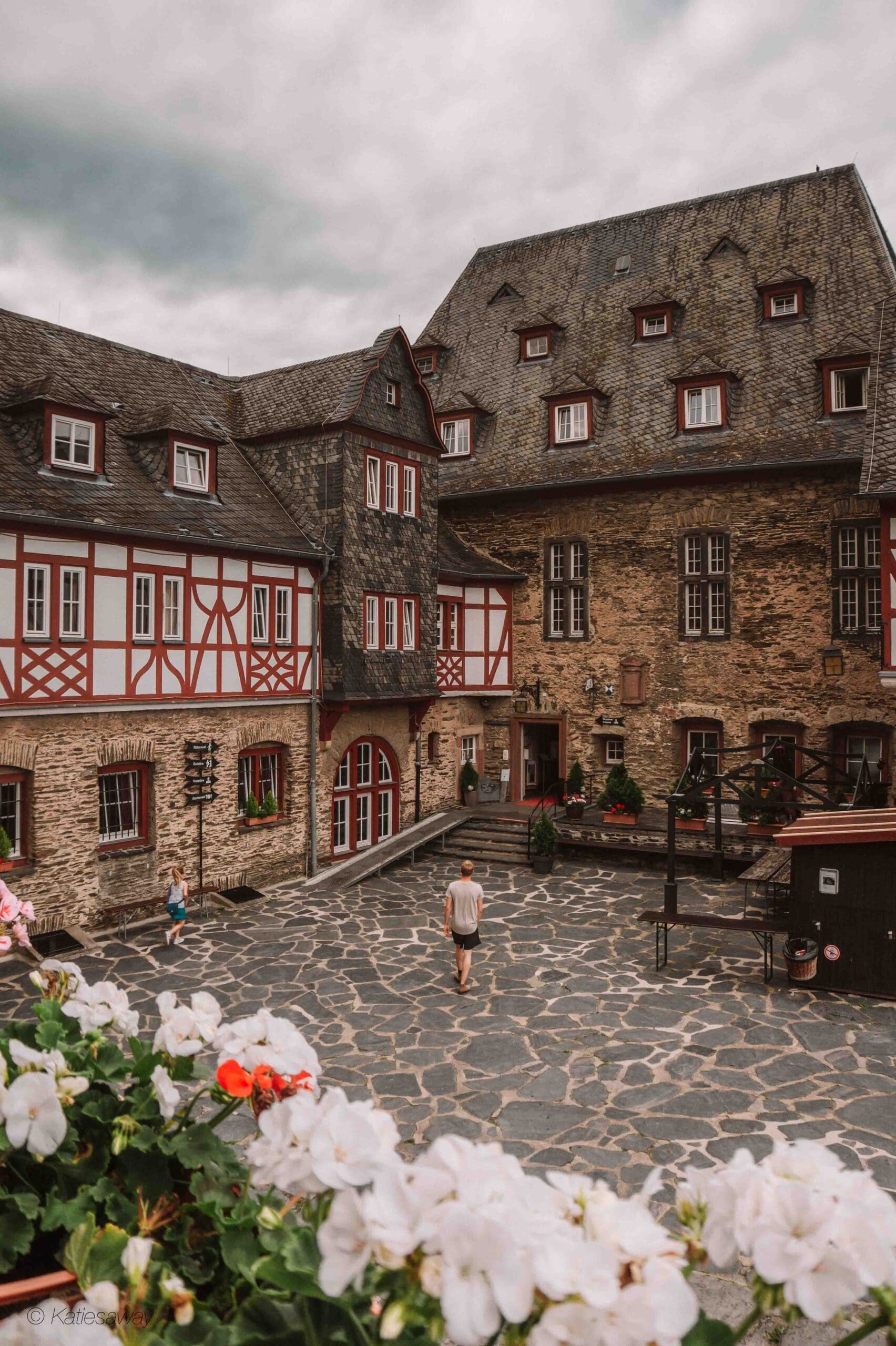
Please note that this post contains affiliate links meaning that if you make a purchase through the link, I receive a small commission at no additional cost to you. I make sure to only ever promote products and brands I have used and like, and that all links are to trusted websites.
General information about travelling to Germany
When to visit germany.
Germany is a great place to visit all your round! If you want to enjoy snowy mountains in Bavaria or wander through Christmas markets, then winter is the time to visit, but if you want to hike through vineyards, or enjoy the beaches, then spring to autumn suits you better!
This two week road trip itinerary through Germany is aimed at being done in the summer! It would also work well in the spring or autumn, but just make sure everything (such as the castles) is open when you plan to visit!
How to get to Germany
Germany is easily accessible from most countries! They have direct flights internationally to the bigger cities such as Berlin and Frankfurt. If you are travelling from Europe, Germany has great train and bus connections locally and internationally! Flixbus runs to the country, as well as the state-run Deutsche Bahn .
How to rent a car in Germany
Renting a car is quite easy in Germany! To rent the car you need a valid drivers’ license which is accepted by the German transport authority. You may wish to get an international drivers’ license. These are easily obtained from your local transport authority and usually cost no more than $20.
Where to rent a car in Germany
There are rental car companies in all major cities and at airports. A tool I recommend for renting a car is Rentalcars.com . They have a great comparison tool where you can find the cheapest rates for your destination! Sometimes, it is worth looking up smaller cities, or car counters in the city centre rather than the airport, to find cheaper options!
About this two week Germany itinerary
As I said before, this German itinerary can be done in 7 – 14 days depending on your preferences! The driving times between places vary from 1 to 4 hours, so it is easy to skip places or add in extras along the way. The itinerary focuses on finding the “local” in Germany, visiting smaller villages and exploring nature with day hikes.
The guide is written with the main titles being the city where we ended up sleeping, and subtitles being the road trip stops we saw between towns.
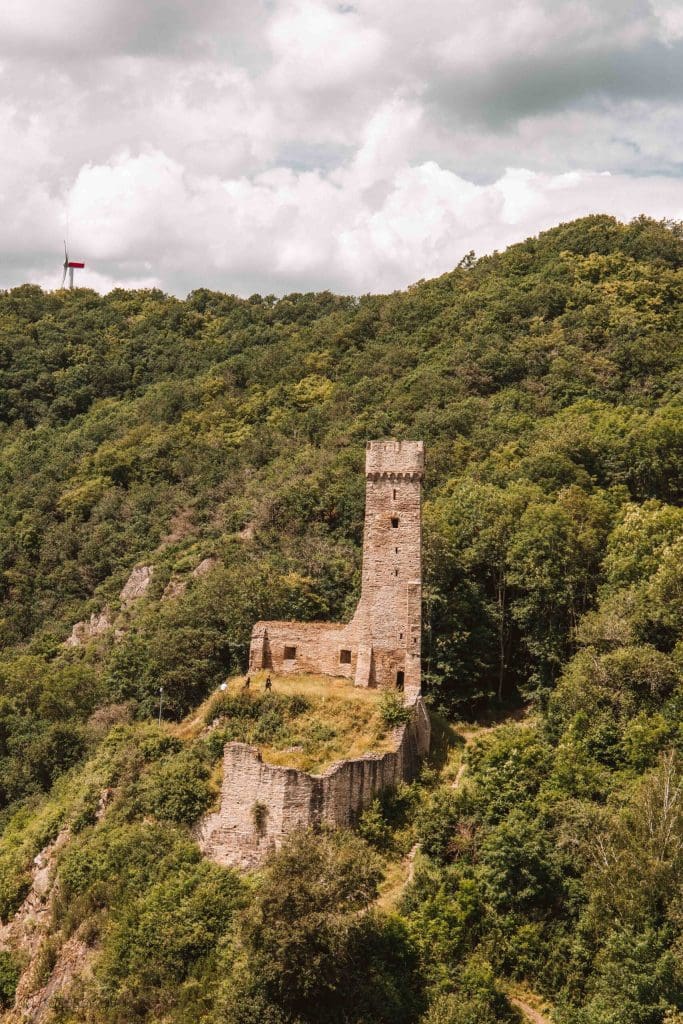
2 Week Germany Road Trip Itinerary
Lübeck (2 days).
This road trip in Germany begins in the city of Lübeck . Located in Northern Germany, the city was once the head of a significant trading route, which is reflected today in its impressive brick gothic architecture. Just north of Lübeck is Travemünde, a lovely coastal village perfect for a beach holiday on the Baltic sea.
- Day 1: Lübeck
Start your road trip in Lübeck. Spend your first day walking around the city, taking in the rich history and visiting the Altstadt (Old Town). Make sure to stop at Holstentor , Salzspeicher and the Hospital of the Holy Spirit . If you want an activity, visit the Lübeck Museum of Theater Puppets , Günter Grass Haus , or the European Hansemuseum . If you want to learn a little more about the history of the city then there are some great walking tours you can do! My personal recommendations are this tour of Lübecks architecture and local crafts or this tour which dives into the history of the Hanseatic city !
Lübeck is known as the city of Seven Towers , due to the seven different churches in the city centre that tower over the skyline. Make sure to add these to your walking tour! If you want a little bit of fun, sign up for this scavenger hunt which takes you to some really cool spots around the city!
In sunny weather, walk down to Mühlenteich and take a walk around the canal, or take a drink at one of the bars along with An d. Obertrave . Alternatively, sit by the canal and buy a drink from one of the boat bars that circle around the water. In the summertime, you can also hire a boat by the canal and explore the city from the water yourself!
Make sure to read this post if you want a more detailed guide to Lübeck !
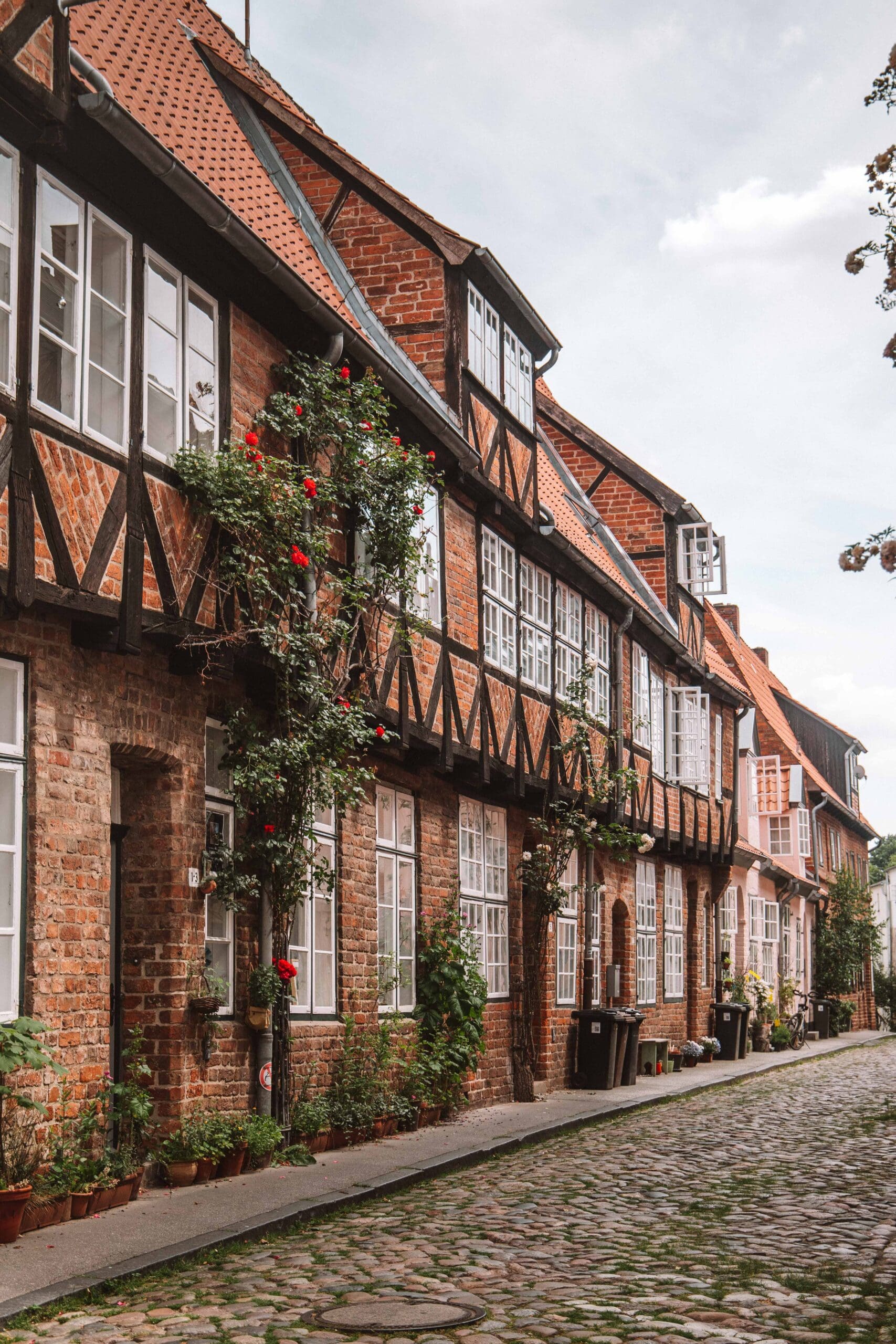
Day 2: Travemünde
On your second day, take a day trip north to the town of Travemünde. In this seaside town, you can really feel the summer vibes. Start down by the beach at Travemünde Strand , hire one of the beach huts for the day, and spend the afternoon wandering around the town.
Head back to Lübeck in the evening for a nice dinner in the city and get ready to really begin your two week road trip through Germany tomorrow!
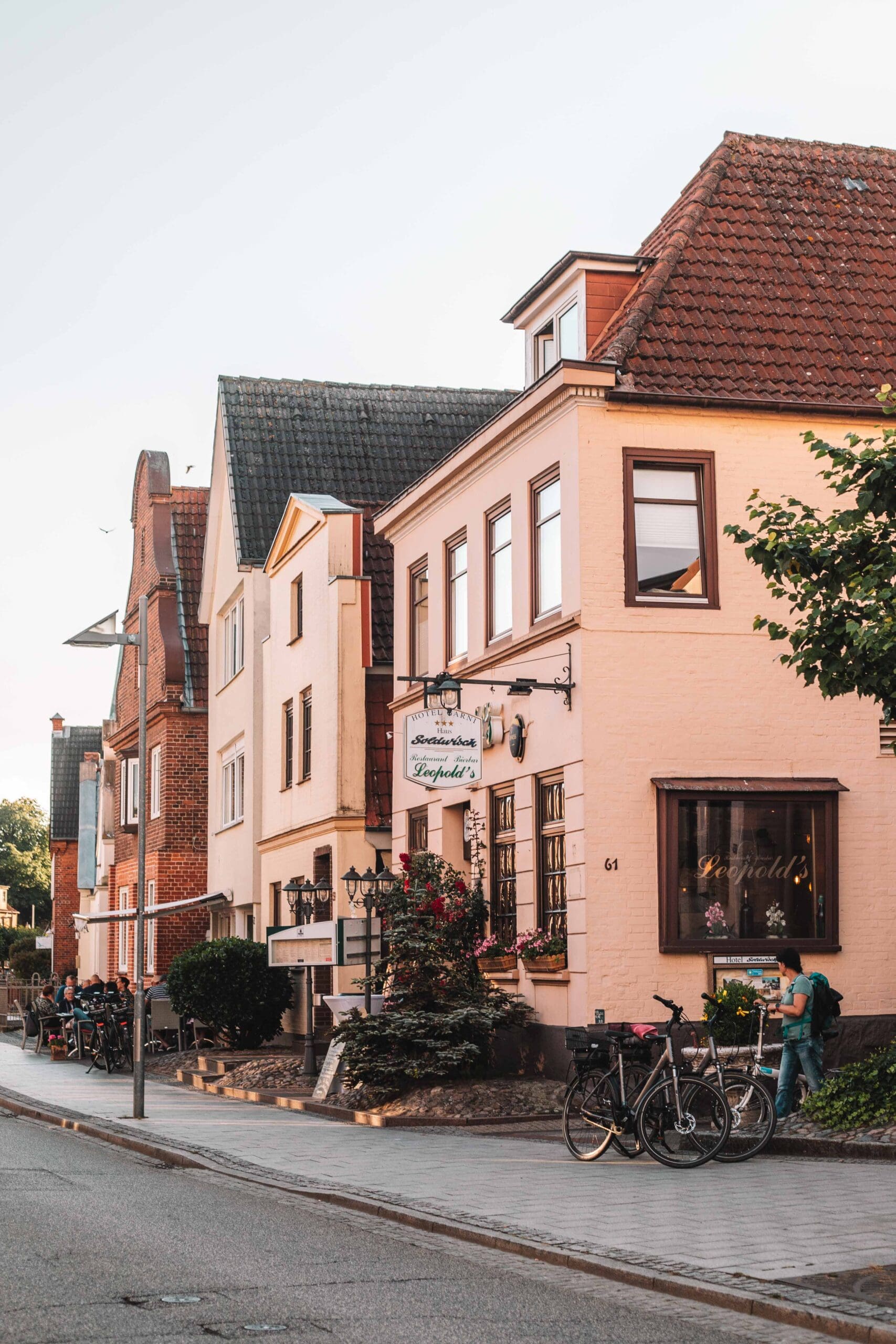
Celle (1 Day)
- Day 3: Lübeck to Celle
Start the third day of your road trip early, driving from Lübeck to Lüneburg. It takes 1 hour and 20 minutes to get from Lübeck to Lüneburg, driving mostly along the highway. If you are doing this 2 week Germany itinerary using public transport then the best way to travel is to take the train from Lübeck to Hamburg () and then take the train from Hamburg to Lüneburg (36 minutes).
First Stop: Lüneburg
Lüneberg is another fairytale village, filled with cobbled streets and unusual stone cottages. This was a city we were recommended to add to our Germany itinerary by so many different people! I am glad we did as it ended up being one of my favourites along the trip! Make sure to walk down
Stintmarkt , the medieval fishing harbour once filled with traders unloading salt and pickled herring. If you fancy a walk, head to Lüneburg heath , a beautiful meadow covered in purple heath. There are lots of different walking and cycling paths here to enjoy! Alternatively, head to Lüne Abbey, a benedictine monastery dating back to the 12th century. Inside you can take a guided tour or visit the textile museum which gives great insight into the history of the village.
Second Stop: Celle
From Lüneburg to Celle is a 1 hour and 20-minute drive. If you are taking public transport, there is a direct train from Lüneburg to Celle which takes 36 minutes.
Celle is a beautiful town, its streets lined with traditional German timber houses. In fact, it is the place with the most concentrated collection of half-timbered houses in the world! It is amazing to see, you definitely feel transported back in time when wandering around the streets of Celle! Celle is also home to Ducal Palace , one of the most beautiful castles in northern Germany! It is a must on your Celle itinerary!
Spend the evening in Celle, soaking in the small town and trying some local cuisine.
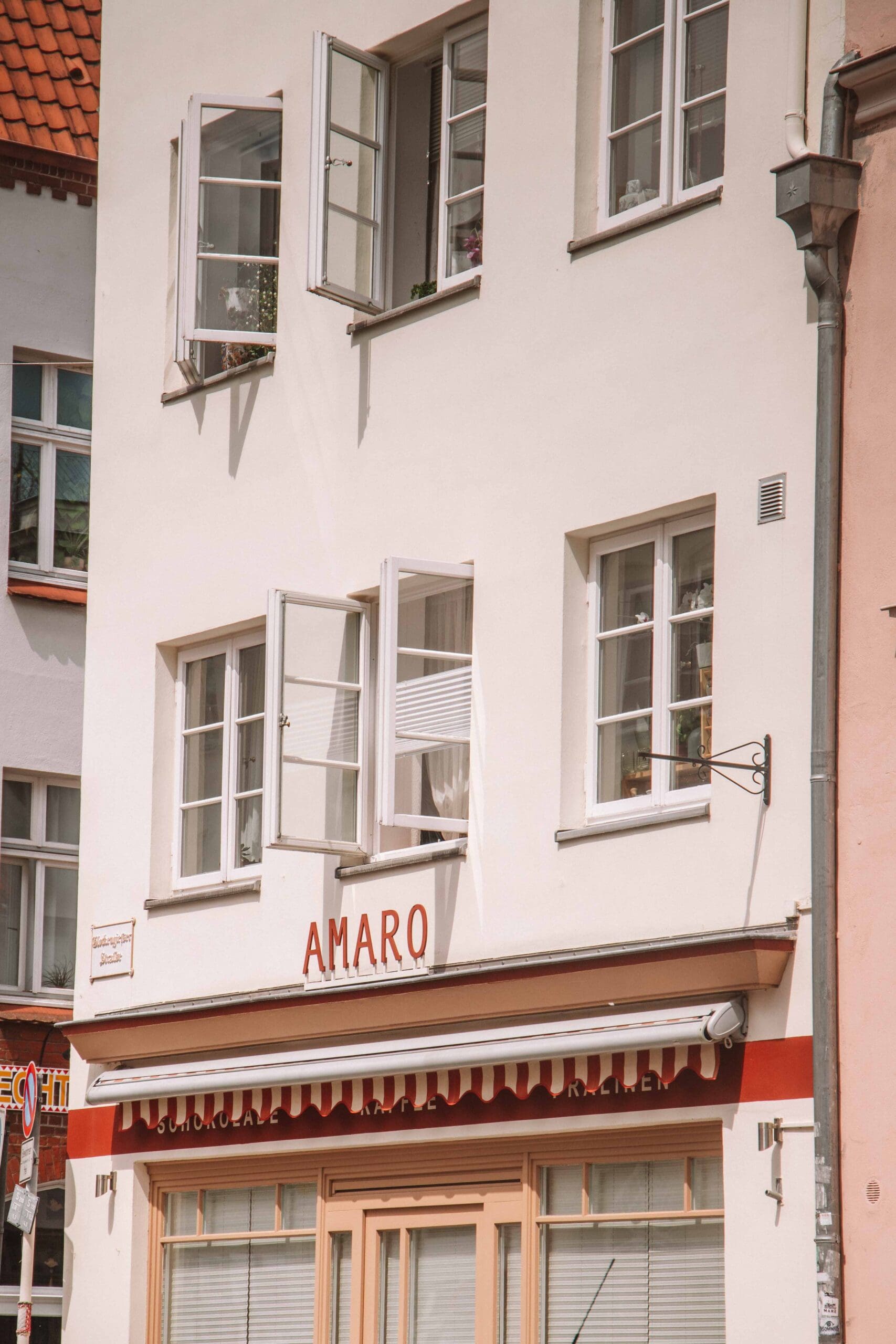
Cologne (2 Days)
- Day 4: Celle to Cologne
The next day starts in Celle, driving down towards Cologne. In total, this drive takes 3 hours and 40 minutes, however, we make a stop along the way to break it up!
The first stop on day 4 of this road trip itinerary is Externsteine Straße. It takes 2 hours to drive from Celle. Unfortunately, this stop is not possible with public transport as it involves too many changes in buses and trains. Instead, you could swap it out for a stop in Hanover, a quite beautiful big city. The train takes 18 minutes to Hanover, and a further 2 hours and 40 minutes to Cologne.
First Stop: Externsteine Straße
Externsteine Straße is a fascinating place. It is home to a natural rock formation, located in the middle of a beautiful forest. These rocks have a very special cultural and historical relevance in Germany, used for many different purposes over the years, with a history dating back to 1093. There is little scientific evidence for what these stones were used for, only myths and legends that circle around the area. However, it is known that they were used as a place of worship, almost Germany’s version of Stonehenge.
Today, you can stroll around the woodland, and climb the stones themselves. On each rock, a staircase is carved out, with a bridge linking the two larger. You will want to spend 1 – 2 hours exploring this area.
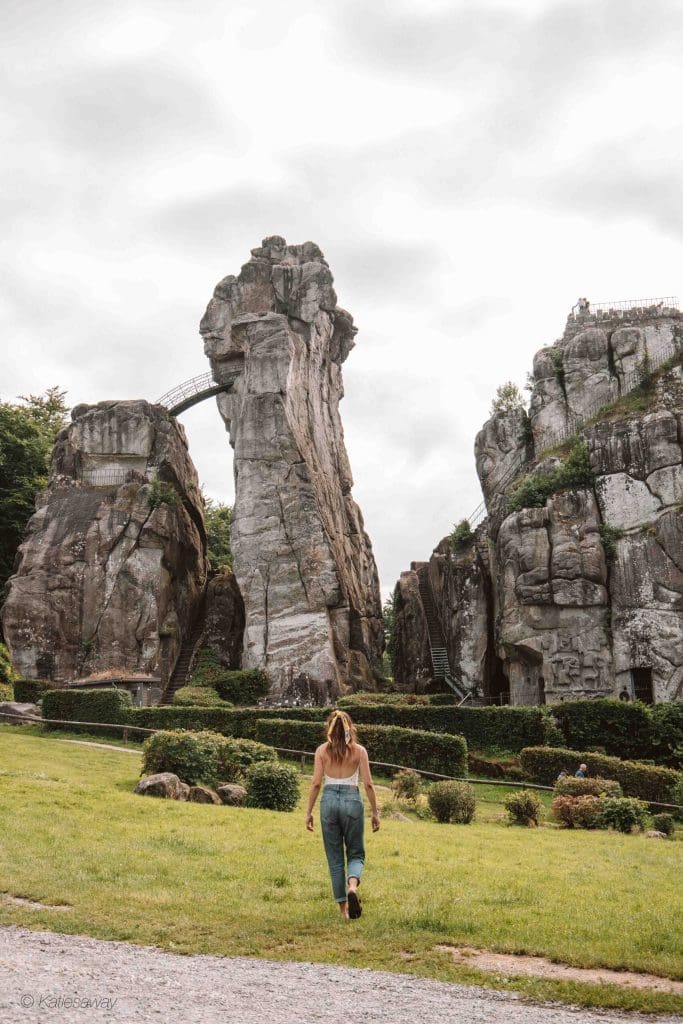
Second Stop: Cologne
In the afternoon, start the drive down to Cologne. This takes around 2 and a half hours. Once in Cologne, spend this first evening wandering around the city. Make sure to visit the famous Cologne Cathedral , a gothic church that has held the reliquary of the three kings since the 12th century. If you are feeling up to it, climb up the tower to get amazing views over the city! Another fun way to spend the afternoon is by doing a historical tour of Cologne which takes you to the Cathedral and other important sites in the city! This is a great way to learn more about Cologne before a day of exploring tomorrow! You can find my personal recommendation here!
Head into Cologne’s old town for a dinner in the heart of this fairytale city.
- Day 5: Cologne
Spend day 5 exploring Cologne! A great way to travel around Cologne is to purchase the Cologne card ! This costs €9 per person and gives you free transport around the city and discounts on most attractions! You can buy it in advance here to save you time later!
The best things to do in Cologne
There is so much to see and do in Cologne that it can be hard to fit it all into one day! If you enjoy walking around and looking at the sights, then make sure to wander past Groß St. Martin (Great St Martin Church). This beautiful building was built in the 12th century and is spectacular to see, towering above the colourful houses at Fischmarkt (Fish Market).
Another thing you can’t miss is Cologne Cable Car (Rhein-Seilbahn). This runs from Cologne Zoo and Botanical Gardens in the North, to Rhein Park in the south. The views here are amazing as you pass over the Rhein River. Rhein Park is a great place for a picnic, with a big grass meadow and beach that looks back towards the Cologne skyline.
Another great activity is taking a boat trip down the Rhine. This is an amazing way to see the city from a different angle and start your journey on the Rhine, a river that we will follow for the next week of this road trip in Germany. We took this 3-hour river cruise which was the perfect way to see the city !
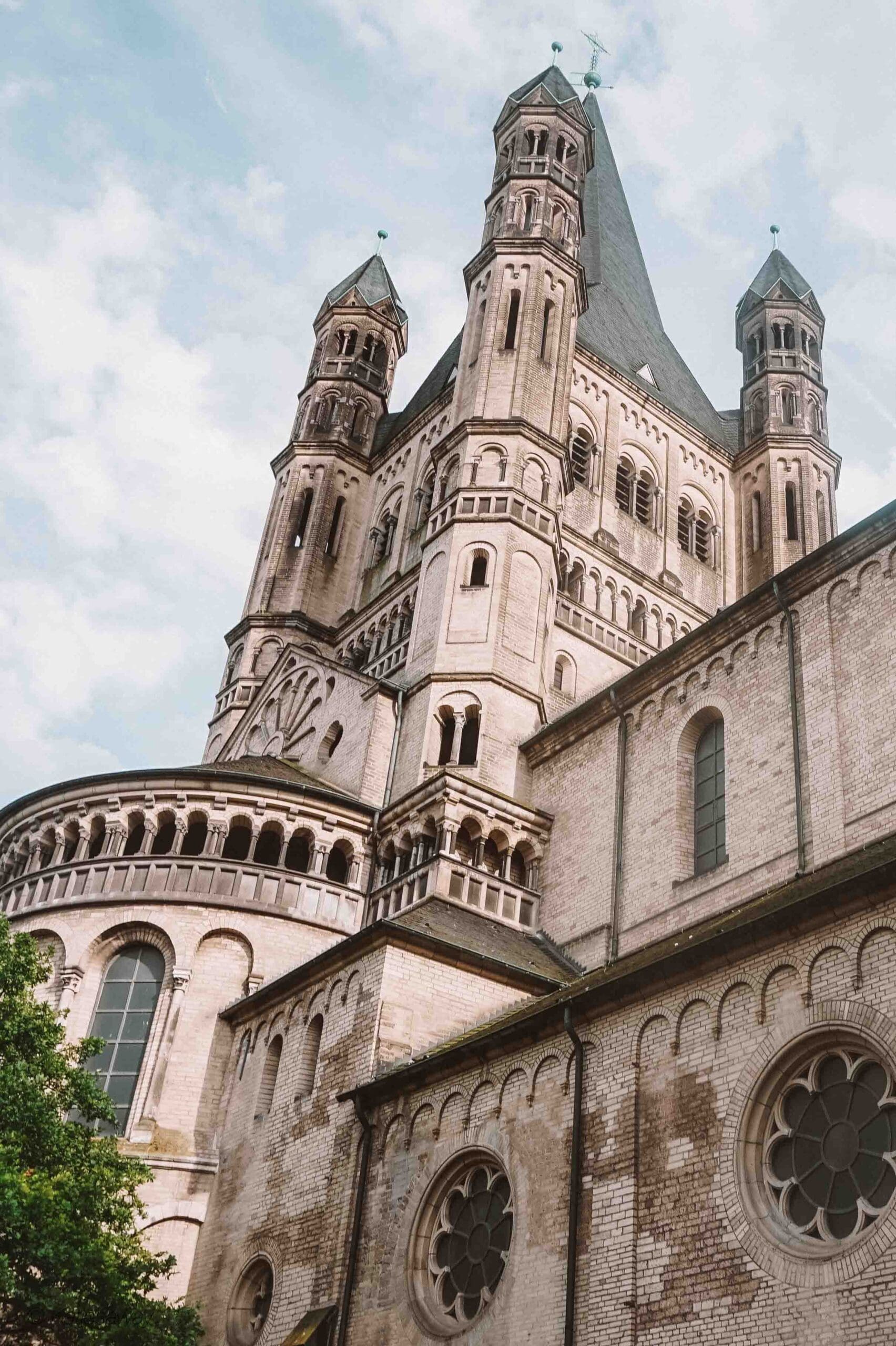
The best museums in Cologne
If you enjoy museums, then make sure to visit The Cologne Chocolate Museum (Schokoladenmuseum Köln). This is a great museum that takes you through the process of making chocolate, with exhibitions about where the beans are grown as well as speciality exhibitions about sustainable, ecological farming of other products such as coffee. You can skip the queue and buy your ticket in advance through Get Your Guide!
Another great museum to visit is the Farina Fragrance Museum (Duftmuseum im Farina Haus). This delves into the history of the famous perfume industry in Cologne, where “cologne” itself originates. Entry to this museum is free when you have the Köln card !
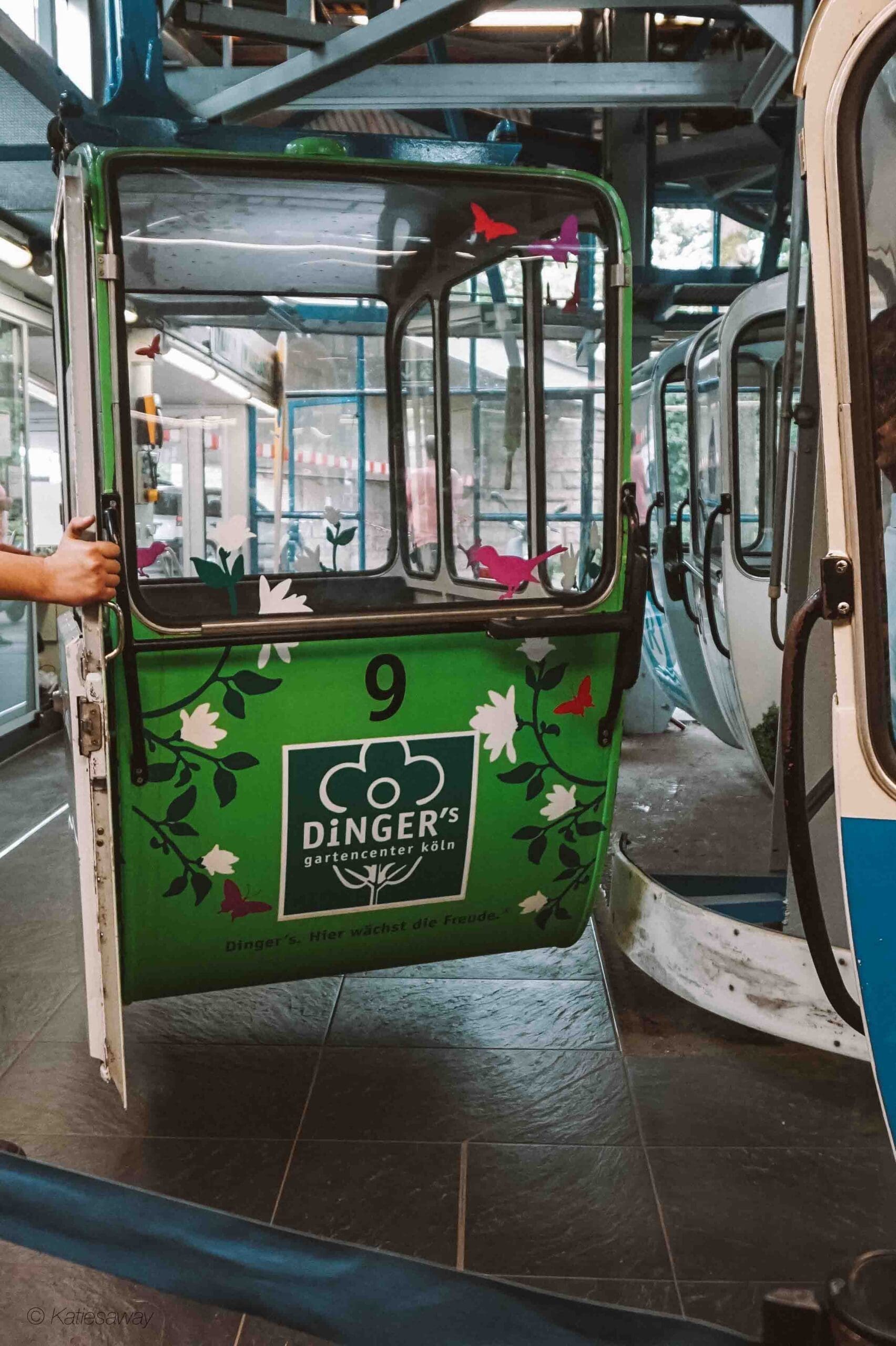
Ahr Valley (3 Days)
Day 6: cologne to ahrweiler.
On day 6 we head from Cologne to the famous German wine region of Ahrtal, or the Ahr Valley. This was my personal favourite stop on our road trip. This beautiful little valley is home to some of the most beautiful walks through the vineyards, with some really unique wineries and castles along the way.
Start the day by driving from Cologne to Ahrweiler . I recommend booking accommodation either here or in Altenahr as these are the two biggest towns in the area. You want to make the most of your time in the Ahr Valley so try and get here early so you have the whole day to explore! This is a 50 minute drive! Alternatively, the train takes 1 hour and 25 minutes. We stayed at Hotel Rodderhof in Ahrweiler and has a lovely experience!
In the Ahr Valley, it is super easy to get around using public transport! Although we had a car we still chose to take the train every day. Upon arrival, our hotel gave us an Ahr Valley tourist card which meant that the public transport was free.
What to do in the Ahr Valley
The best things to do in the Ahr Valley are hiking, wine tasting, and simply enjoying the scenery. On your first day in the Ahr Valley, I recommend walking along the Ahrsteig track . This leads from Mayschoß to Rech via the beautiful, hilltop Saffenburg castle ruin . The best thing about this hike is the amazing scenery in combination with the wine vending machine just outside the castle ruin! If you do this walk in the late afternoon, you can sit with a glass of wine, watching the sunset over the valley.
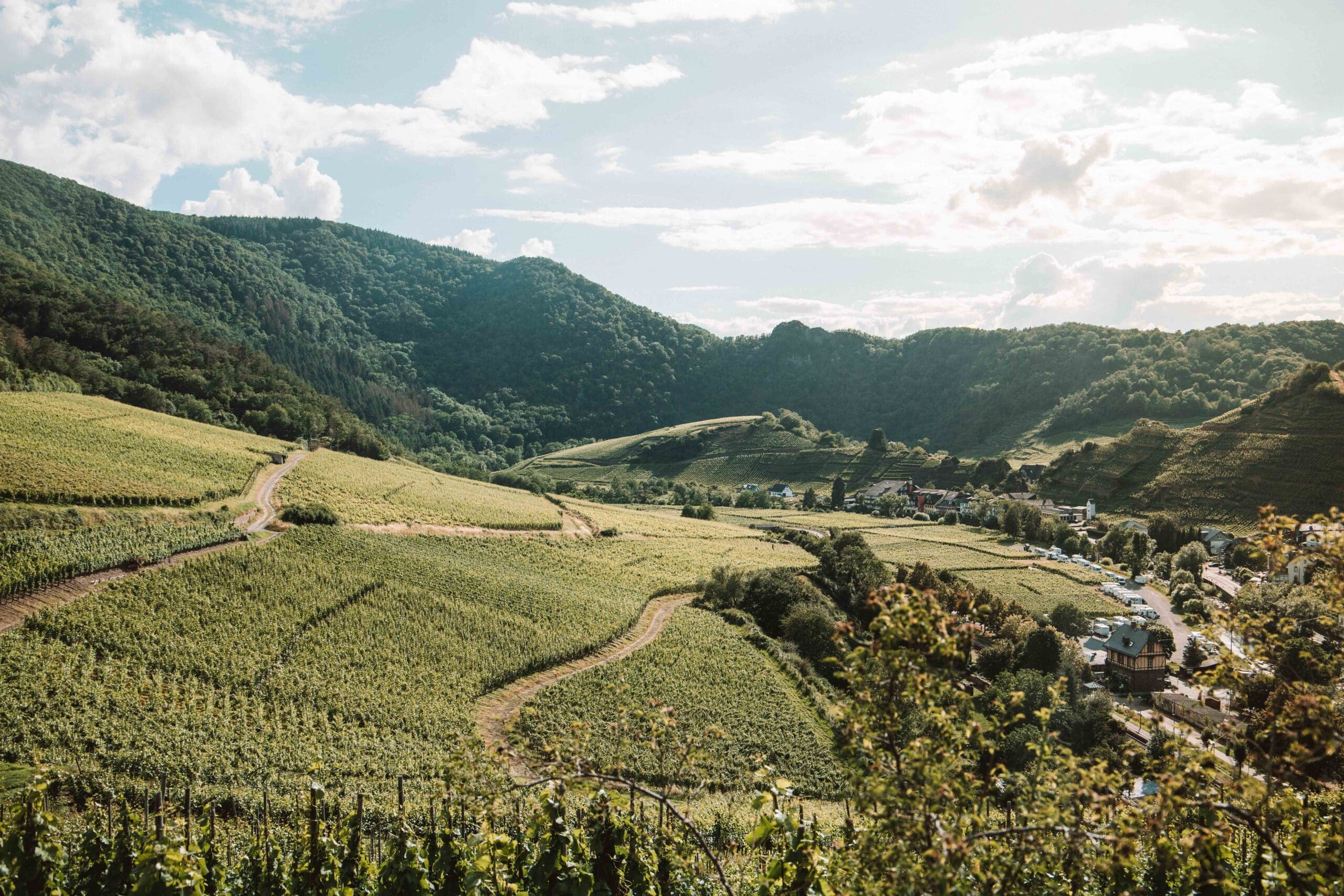
Day 7 and 8: Ahr Valley
My top recommendation for the Ahr Valley is to hike the Red Wine Trail (or the Rodvin Wanderweg) . The Red Wine Trail is a 53km walking track that runs down the Ahr Valley, passing through vineyards and some beautiful and unique wineries! Spend days 7 and 8 of this road trip hiking this trail. The best way is to split it up into two sections – the first day hiking from Ahrweiler to Maysloß and the second from Altenahr to Maysloß. Make sure to visit Weingut Kloster Marienthal , a wine cellar in a converted monastery ruin, and Hofgarten-Restaurant for good food and wine in a hidden oasis.
Read this post for a more comprehensive guide to the Red Wine Trail and the Ahr valley !
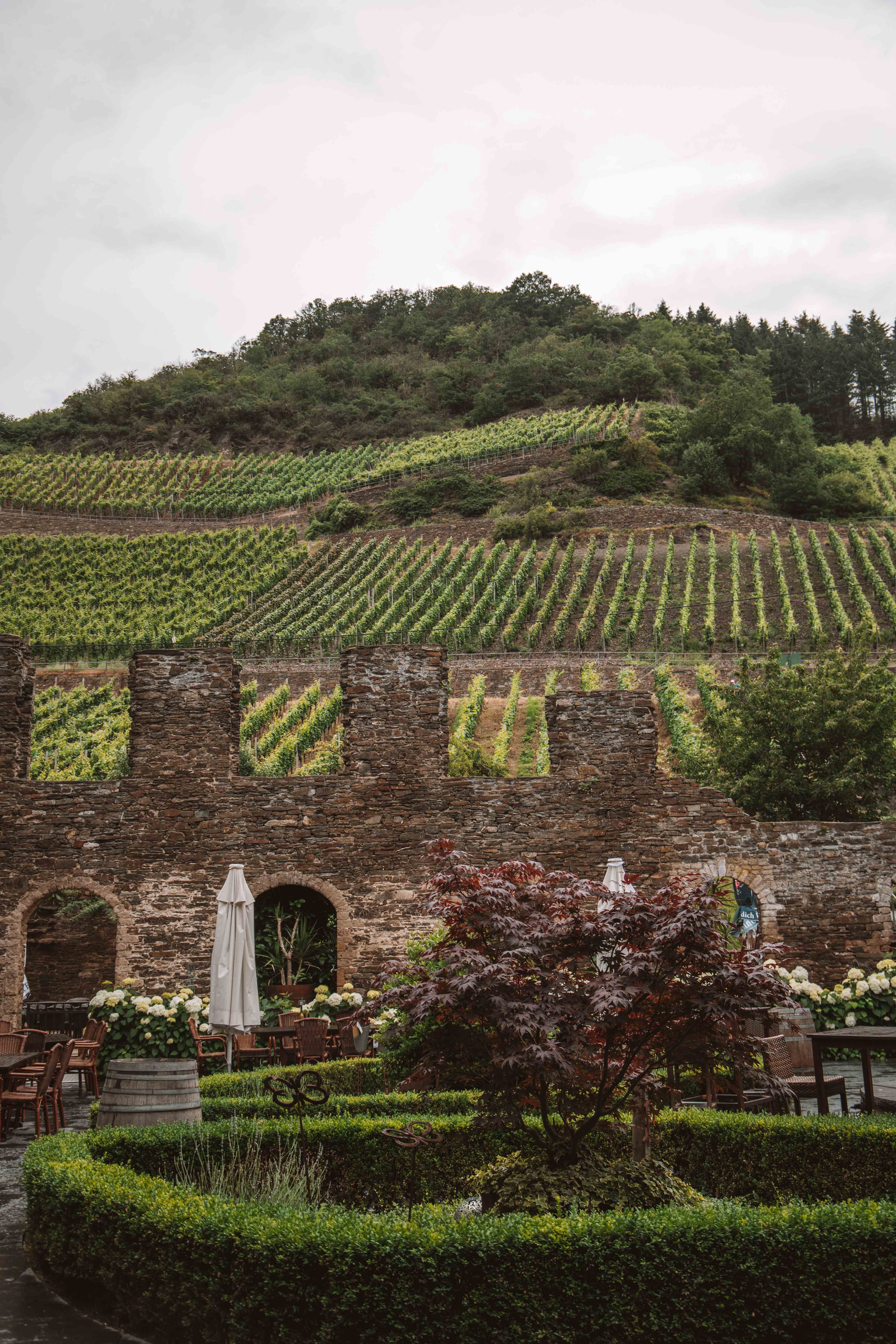
Mosel Valley (3 Days)
Day 9: ahrweiler to the mosel valley.
This next part of this road trip was my favourite drive during our two weeks in Germany. This part of Germany is called the Eifel region , known for its beautiful fairy tale villages and some of the best medieval castles in Germany! However, this is a very infrequently visited destination for most international tourists, making it a real hidden gem is hidden in the German countryside.
The drive from Ahrweiler to the first stop of the day, Castle Bürreshei, takes around 30 minutes. Unfortunately, this trip is not possible using public transport. However, it is definitely possible to travel from Ahrweiler to Monreal (this takes 2 hours by train or 36 minutes by car). This train trip is sort of out of the way to end up in the Mosel valley later in the day. If you are travelling by public transport I would instead suggest visiting Monreal on day 9, and adding an extra day to make your way down to Cochem. Alternatively, swap days 9 and 10 with 11 and 12 and base yourself in Koblenz with a day trip to Monreal.
Stop 1: Castle Bürreshei
The first stop on day 9 of this two week itinerary is Castle Büreeshei , a beautiful, medieval castle nestled in the valley. Along with Lissingen Castle and Burg Eltz (which this itinerary stops at on day 11), Castle Büreeshei is one of the only three castles along the left bank of the Rhine River to never have been destroyed. The tour here takes you around the inside of the castle, where much of the original furniture still exists today.
Unfortunately, the tour is only given in German. However, they do have English fact sheets you can follow in each room and the guide was kind enough to speak slowly in case we could pick anything up with our mix of English and Swedish. The tickets were quite cheap and the tour was definitely worth it to see this beautiful castle!
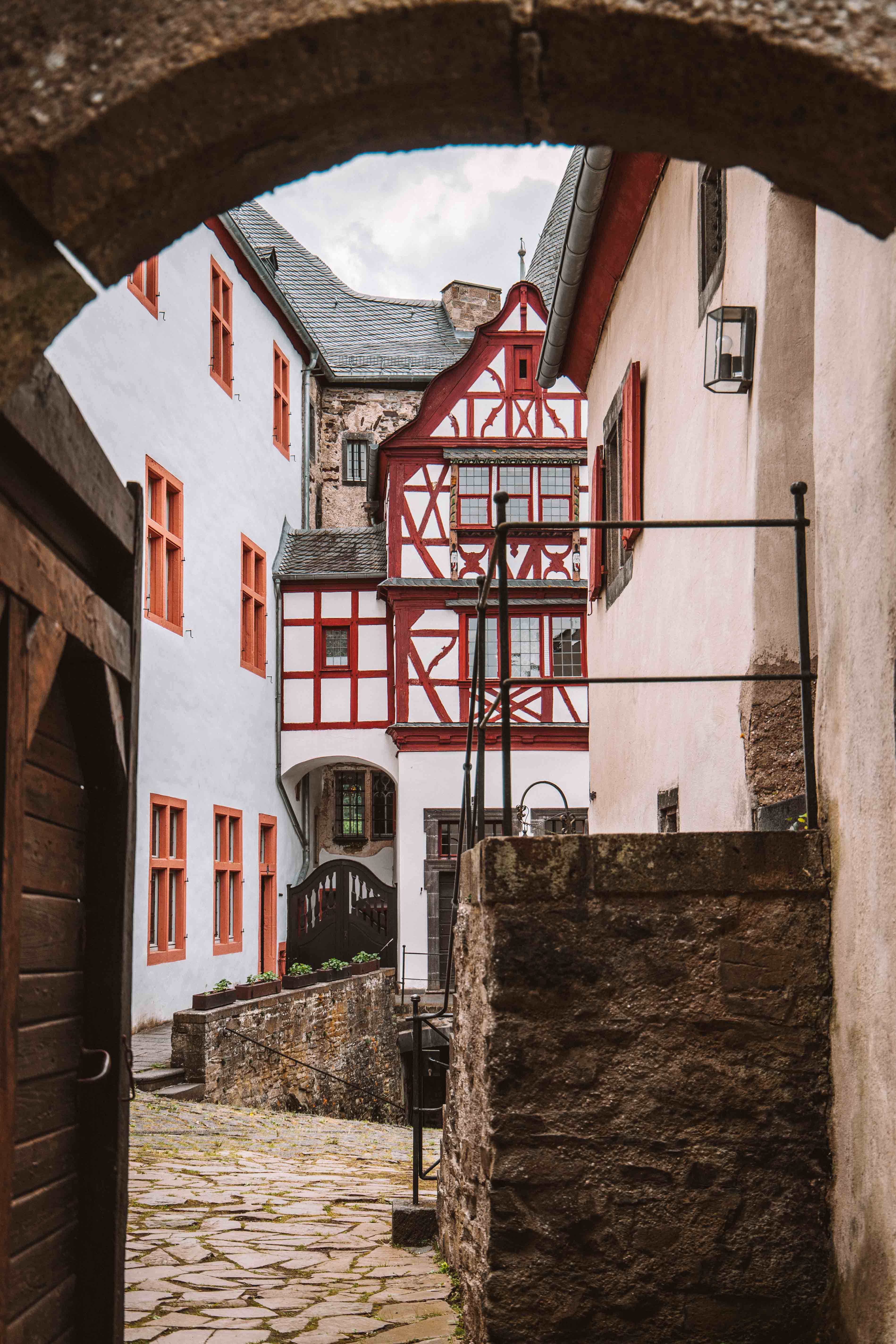
Stop 2: Monreal
The next stop of the day is Monreal . This town is really magical. If you were only going to pick one place from this itinerary to include in your Germany road trip, I would hope it is this one!
The town itself is quite small, however, it captures so much beauty. The old town centre is built on two sides of the Elzbach river, and below the Löwenburg and Philippsburg castle ruins . The 14th century, green, red and white half-timber houses contrast with the water and the castles make for the perfect fairytale scene.
Make sure to walk down Untertorstraße for the best view of the town, and head up to Löwenburg to see some amazing history! Here, there are no information signs or tours so it can be really valuable to do a little reading about the village and the two brothers who built the castles before you visit!
Read my full guide to Monreal here!
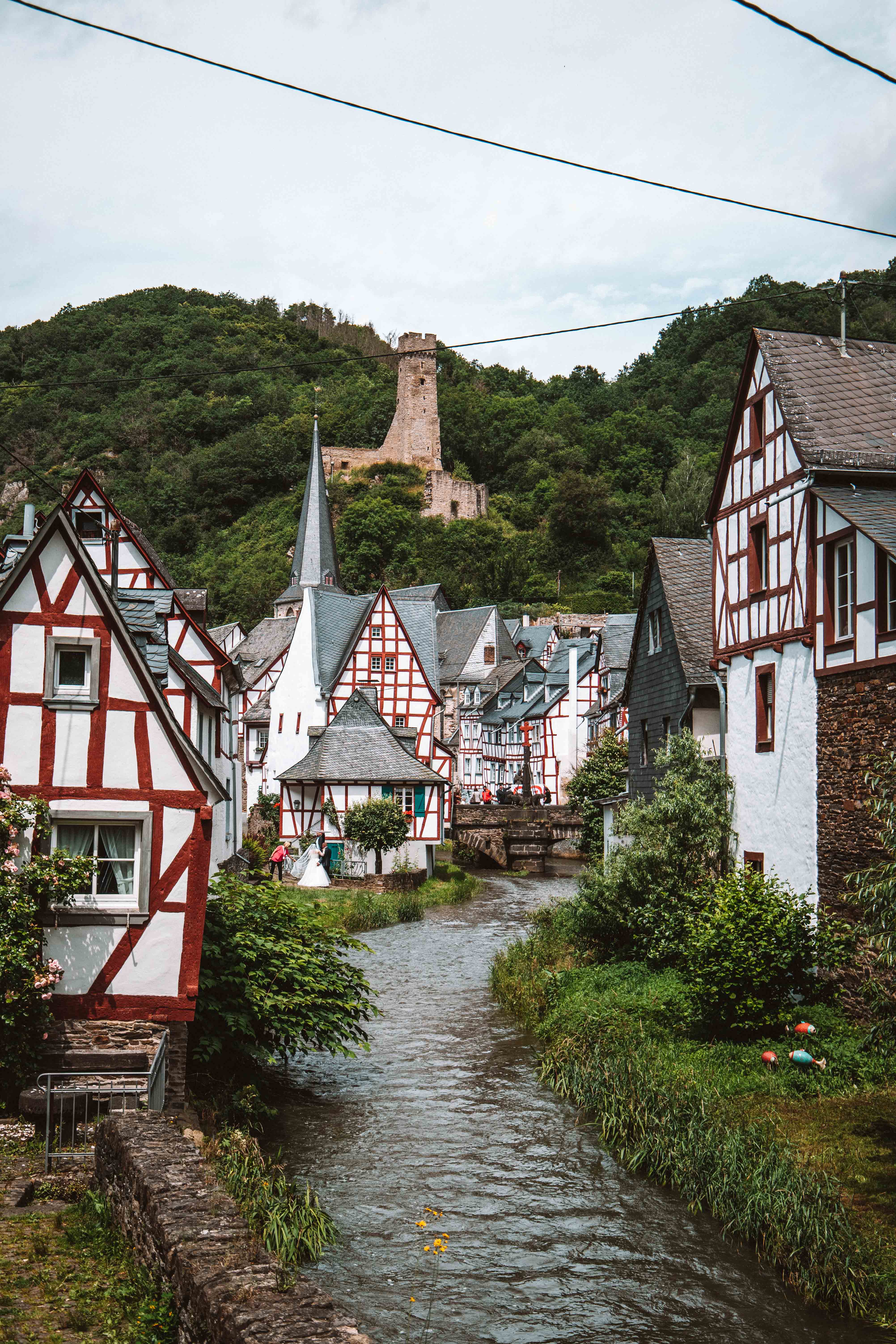
Stop 3: The Mosel Valley
After spending an hour or so in Monreal, start driving towards the Mosel Valley . This is another sleepy wine region, however, it is definitely one of the more popular tourist destinations in the Eifel region!
Cochem is the largest of the towns here and the best place to base yourself if you want to stay somewhere lively, with many restaurants, and day trip options! We were camping so chose to base ourselves a little further down the Moselle river in the town of Ediger-Eller . It was a much quieter village but the views were amazing!
By the time you arrive here on day 9, it is probably getting into the late afternoon/evening! Spend a few hours in Cochem, enjoying a drink at one of the bars nestled in between the colourful half-timber houses. I would use this day to explore Cochem, maybe take a walk through the narrow alleyways of the town, visit Cochem Castle , or take a cruise down the river.
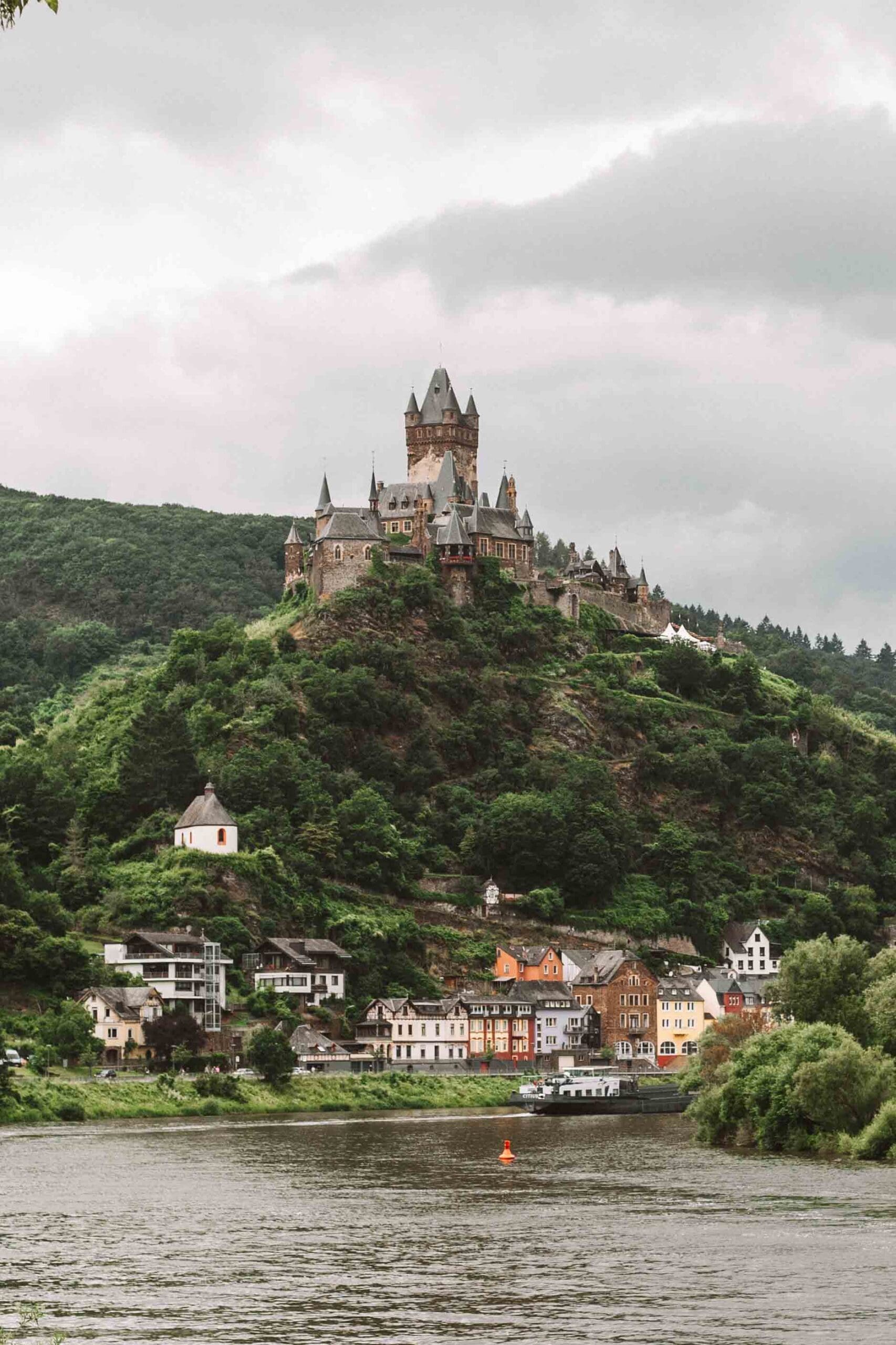
Day 10: Cycling the Mosel Valley
Day 10 can be spent slowly exploring the different villages that make up the Mosel Valley. We found the best way was to hire bikes and cycle from our base in Ediger Eller, down the river past the towns of Nehren and Ellenz-Poltersdorf , and Ernst . We had a good lunch in Cochem and then headed back down the other side past Bruttig-Fankel , Beilstein and Senheim .
We found cycling around the Mosel Valley was the perfect way to explore the villages and also stop at a few wine cellars and try the local wines along the way! It took us about 8 hours to cycle this route. Alternatively, you can cycle one way and take the bike bus back. If you choose this option, then I definitely recommend planning your trip so you can stop and enjoy Beilstein and perhaps take a drink at Pier 58 in Bruttig Fankel .
Alternatively, you can take a tour of the Moselle Valley winerie s . Here you can really appreciate this world-renowned wine region and the people who live there!
Beilstein is by far the prettiest village on this route and deserves a few hours. You can walk around the town, get an ice cream by the water, and walk up to Metternich Castle , a ruin dating back to 1268.
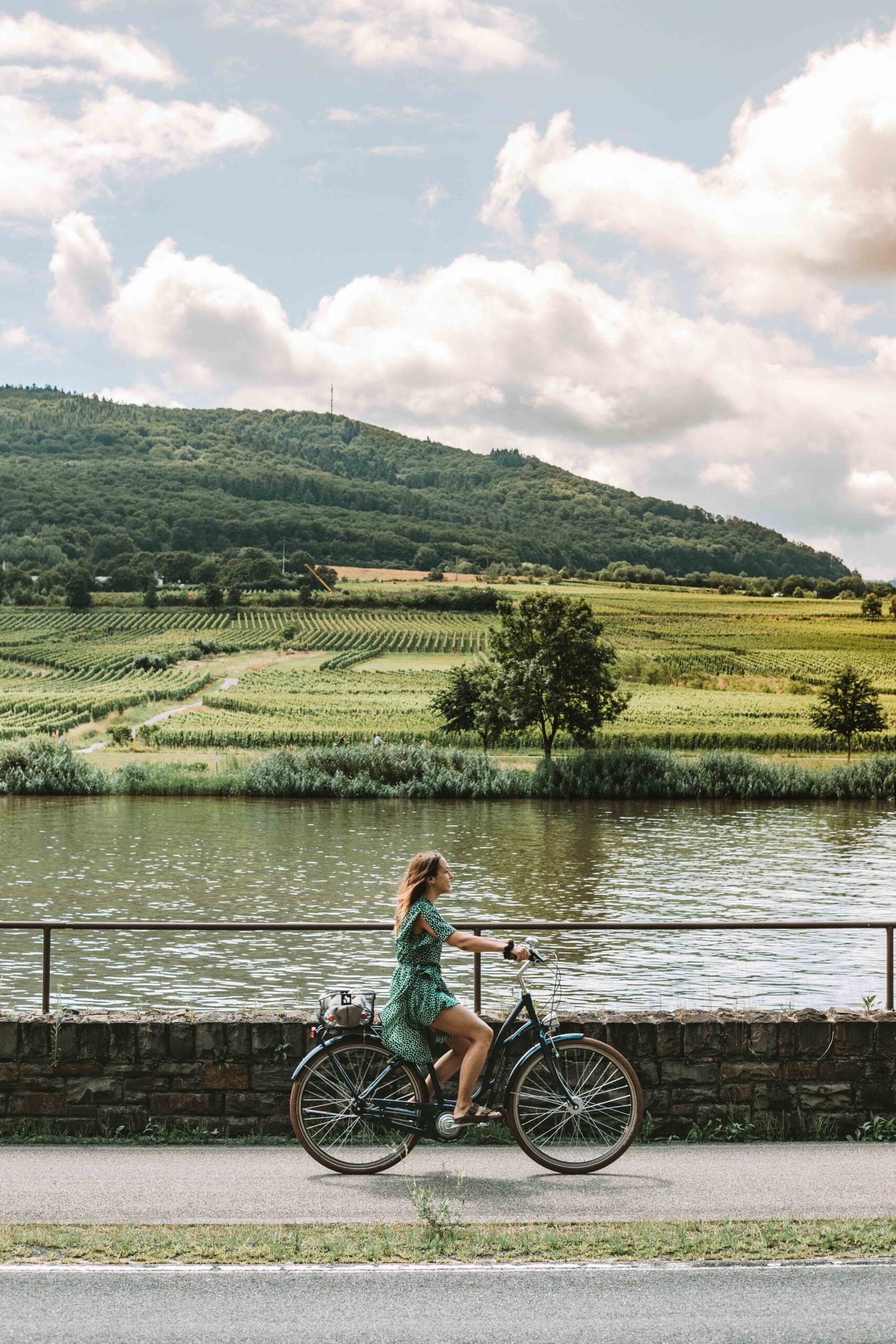
- Day 11: Mosel Valley to Koblenz
Stop 1: Moselle River Views
Spend the morning exploring the opposite side of the Mosel Valley. Start by taking an early morning hike (or drive) up to the amazing viewpoints Moselschleife Bremm Aussichtspunkt and Bremmer Gipfelkreuz . Then head down the river to the town of Zell for a walk and some breakfast.
Here, you can read my complete guide to exploring the Mosel Valley !
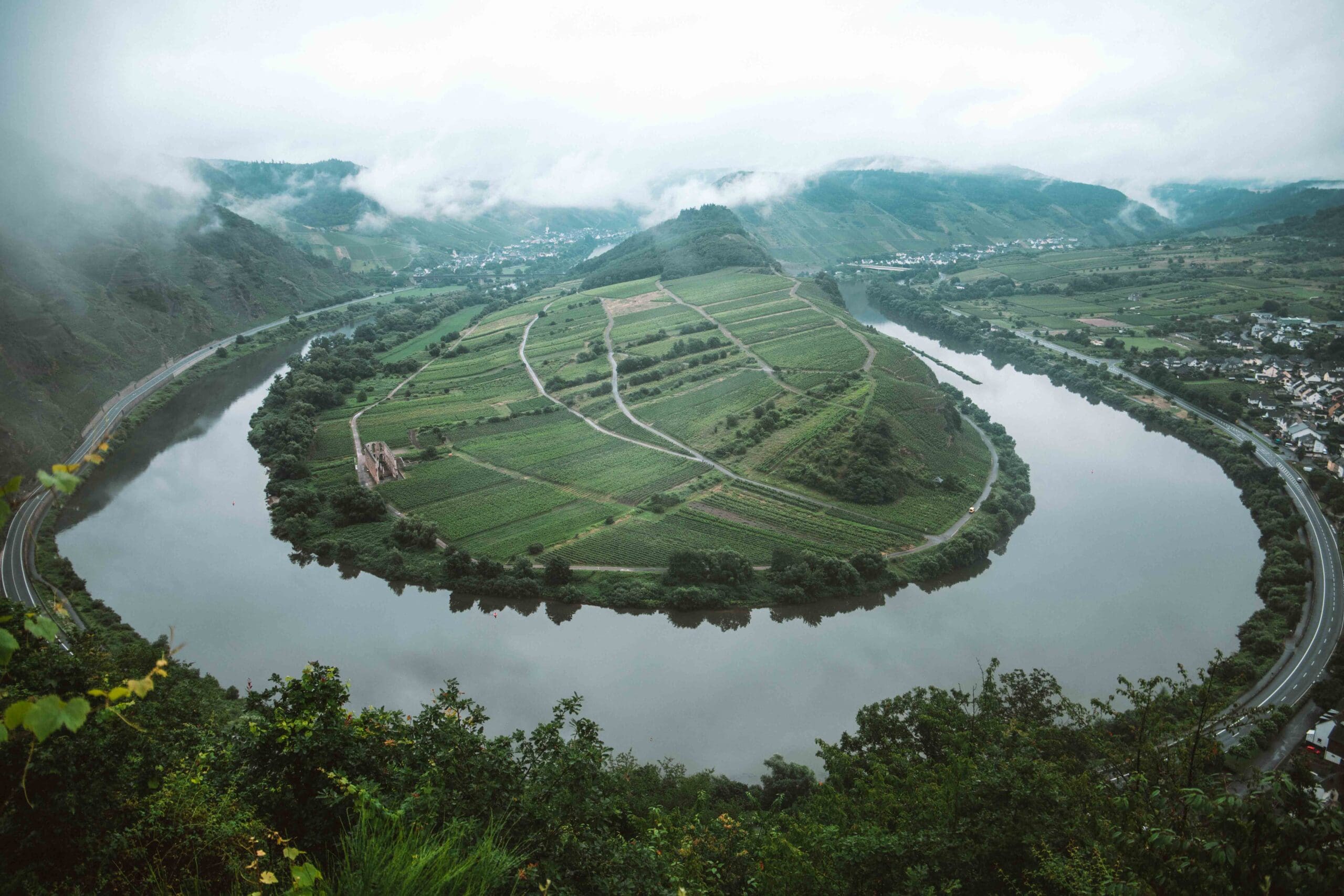
Stop 2: Burg Eltz
Burg Eltz is one of the most known castles in Germany thanks to its beautiful design which comes straight out of a storybook. It takes around 28 minutes to get from Cochem to Burg Eltz, and once there you will need several hours to explore! Tours of the castle are run in German, English and Dutch. If you’re lucky and arrive early, you may be the only people on your tour!
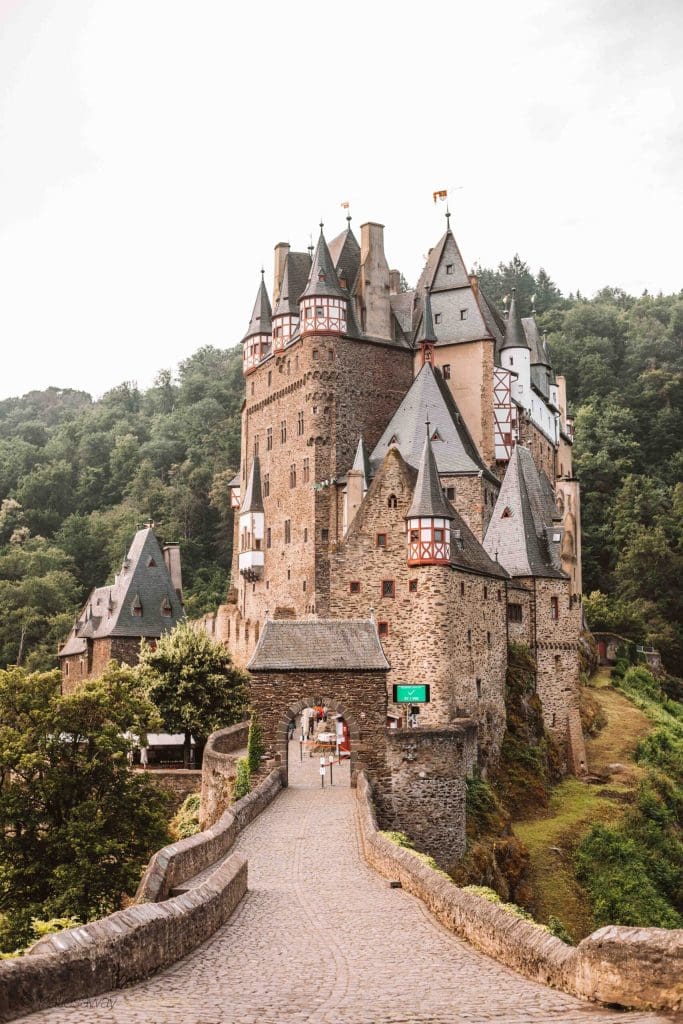
Stop 3: Koblenz
Next, we leave the Mosel Valley and head back to Koblenz . This is a 59 minute drive. If you are travelling by public transport then the best way to travel is from Cochem. This trip takes 35 minutes.
Once in Koblenz, spend the day exploring the city and taking in the history and culture. Tomorrow will be another trip down the Rhein river so make the most of everything there is to do in Koblenz on this day of the itinerary! The old city and town hall are good places to start! This area of Koblenz is filled with many late Renaissance buildings and classic half-timber houses to admire.
If you feel like a bit of sightseeing, head up to the impressive Festung Ehrenbreitstein (Fortress of Ehrenbreitstein). This is one of the main attractions of Koblenz, with amazing views over the city and the Rhein. Alternatively, take the cable car (Seilbahn Koblenz) which runs from Festung Ehrenbreitstein across the Rhein river to the western bank. Here, you can head to Deutsches Eck to see the impressive monument marking the connection of the Rhein and the Moselle rivers.
In the evening you can take a river cruise down the Rhein river , looking out for castles along the way!
Koblenz (1 Day)
Day 12: koblenz and the rhein.
Day 12 of this 2 week road trip itinerary in Germany takes you to the Rhein River . This is a very important region of Germany, historically owned by princes; there are over 40 castles along its banks. You will find it difficult to find a spot between Koblenz and Bacharach where you can’t see at least one! So, obviously, the best thing to explore on the Rhine river is the castles!
There are so many to explore, that it can be difficult to know where to stop! Here are our suggestions:
The best Rhine River castles to visit:
- Marksburg Castle
- Sooneck Castle
- Stolzenfels
- Rheinfels Castle
- Pfalzgrafenstein Castle
- Burg Stahleck
- Burg Gutenfels
- Maus Castle
- Burg Lahneck
End this day of driving in Bacharach in the afternoon! This is a beautiful little town, filled with wonderful wooden houses, little alleyways, and a city wall you can walk around! Make sure to visit the beautiful Kloster ruin at Ruine Wernerkapelle . From here you can continue up the path towards Burg Stahleck . From here you have some amazing views over the Rhine. If you are feeling adventurous, take the klettersteig back, ending at the beautiful viewpoint of Steeger Tor . From here, you can walk up towards Postenturm , a tower with a great view over Bacharach.
Read my full guide to Bacharach, Germany!
End the day driving back to Koblenz for the evening ready for a long day of driving on day 13 of this road trip as we head back to Hamburg in northern Germany.
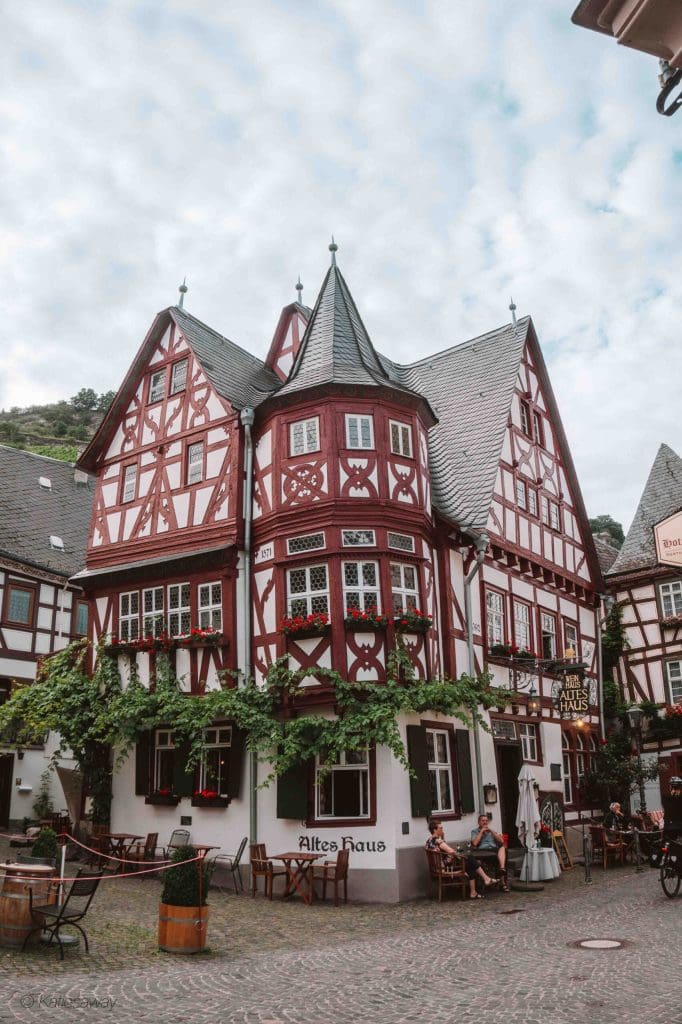
Kassel (1 Day)
- Day 13: Koblenz to Kassel
Day 13 of this two week road trip itinerary takes you from Koblenz, on the Rhine river, north towards Kass el . This is the biggest city in the Hesse region of Germany, known for its beautiful parks and the “100 day museum” event which is held every year. Kassel is around 2 hours and 45 minutes drive from Koblenz. If you are taking public transport it takes 3 and a half hours. I recommend doing this trip in the morning so you have the whole afternoon to explore Kassel.
Stop 1: Limburg an der Lahn
Limburg is the last little German town we will be stopping at on this road trip. It is just a 1 hours drive from Koblenz and the perfect stop on the trip towards Kassel. Limburg is a very old town, with the earliest houses dating back to the 800s. Spend a few hours walking around the town, and make sure to visit Limburger Altstadt (the old town), where you will find some incredible half timber buildings. These include Fischmarkt , Domtreppe , and Ritter Hattstein-Brunnen square. If you feel like a snack then head to Café Kolorit for some coffee and cake. Alternatively, head towards Limburg Cathedral and Schloss Limburg , where you will find some of the city’s oldest buildings.
If you feel like extending this stop, then drive a little outside of two and visit the incredible Runkel Castle . This is a very picturesque hilltop castle, with guided tours and a museum.
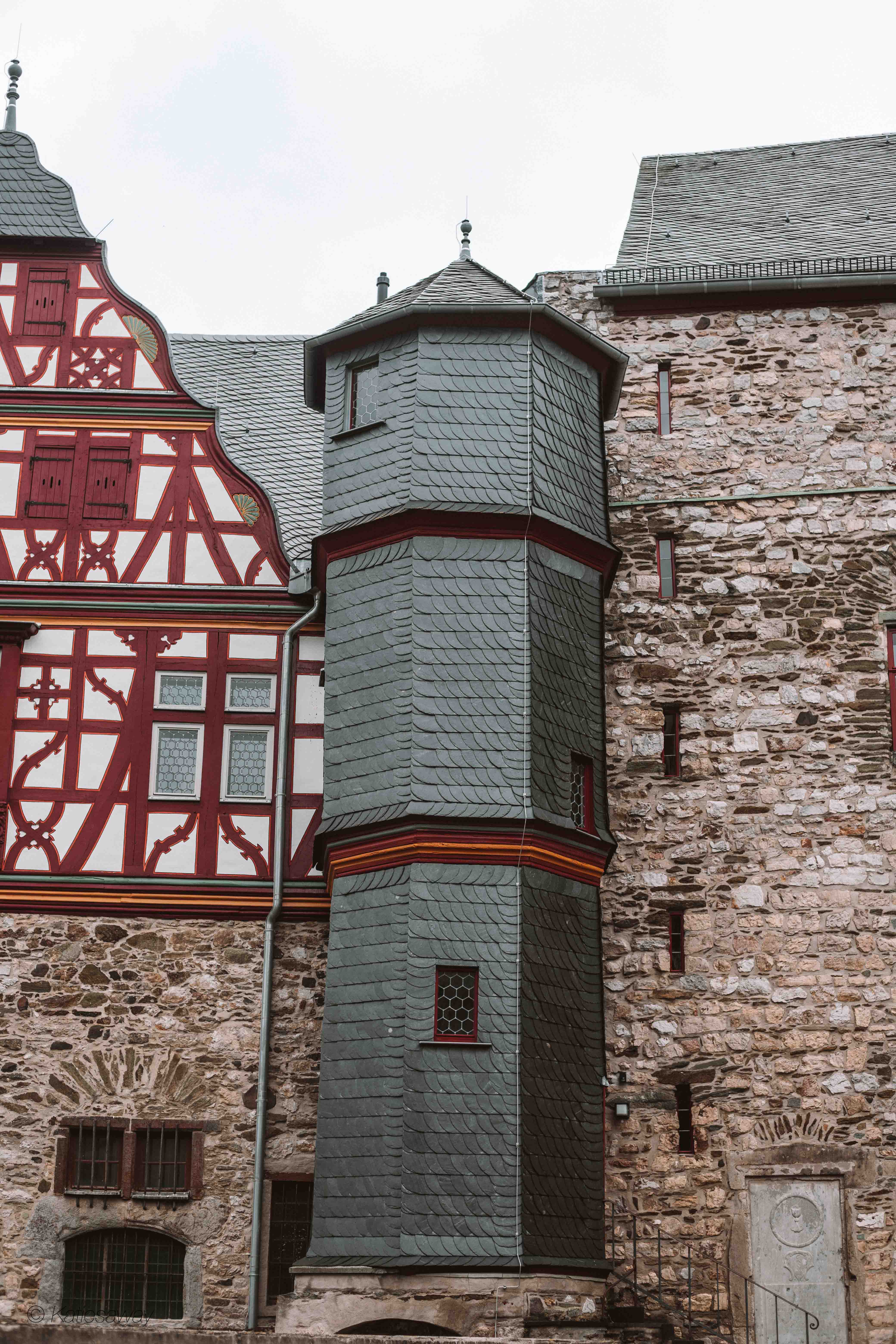
Stop 2: Kassel
Kassel is most well known for Bergpark Wilhelmshöhe , an 18th-century park filled with sculptures and installations. This park was designed in 1689 and took around 150 years to be completed. Today, it is the largest hill park in Europe, and the second-largest hill park in the world, covering 2.4 square kilometres. The residence, Schloss Wilhelmshöhe, was once German Emperor Wilhelm II summer palace, and where Napoleon III was once sent as a prisoner before going into exile in England. This park has much history to uncover and explore, you can spend a whole day wandering around!
We stayed at Hotel Palmenbad , a boutique hotel about 5 minutes walk from the park! It was really lovely and the food was some of the best we had in Germany!
When walking around Wilhelmshöhe, make sure to visit:
- Schloss Wilhelmshöhe
- Halle des Sokrates
- Jussow-Tempel
- Grabmal des Vergil
- Eremitage des Sokrates
- Plutogrotte
- Neptungrotte
- Hercules monument
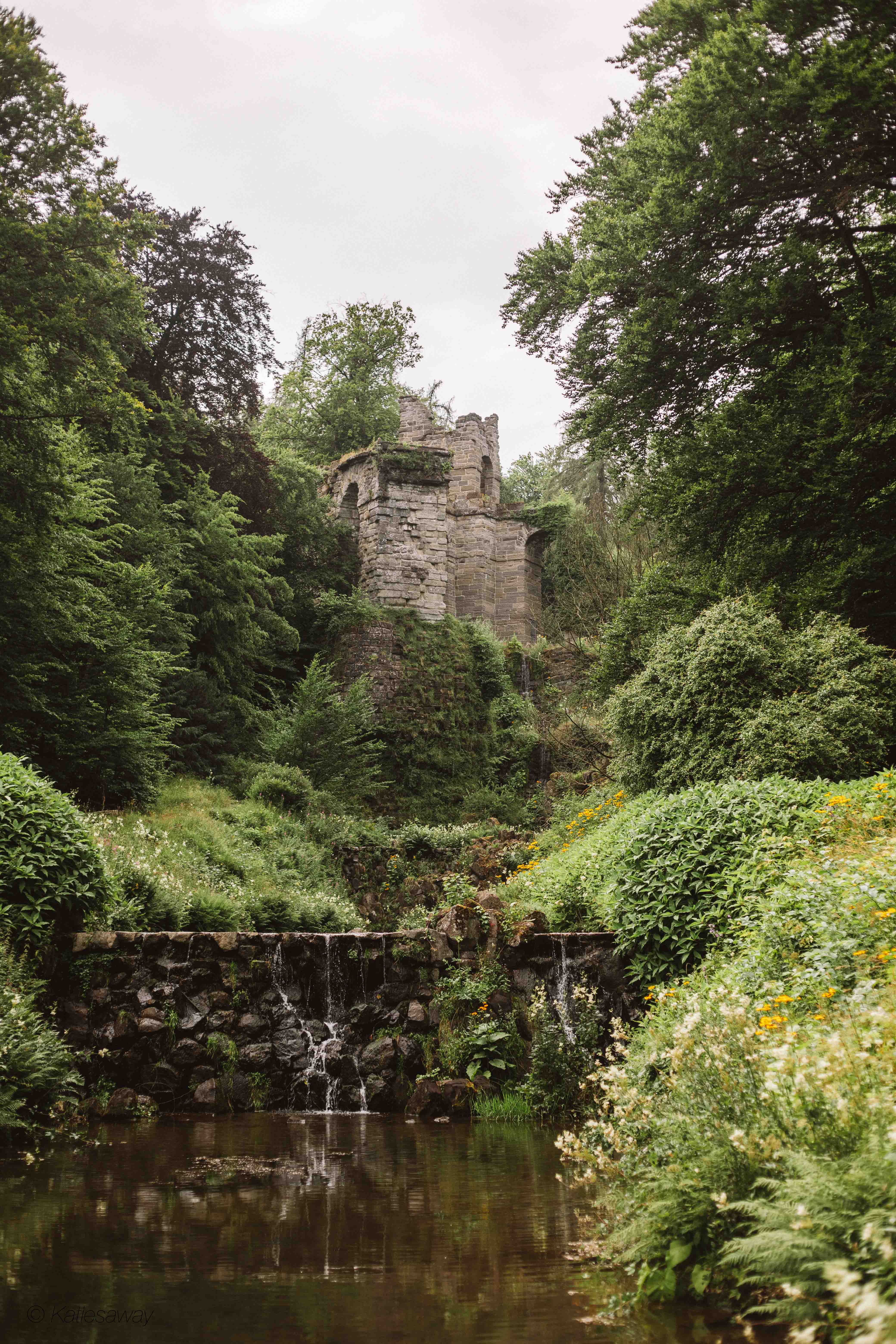
Hamburg (1 Day)
- Day 14: Kassel to Hamburg
It is day 14 of this two week itinerary which means your road trip in Germany is coming to an end! Today, driving from Kassel to Hamburg finished the loop from Northern Germany, down to the Rhine river. The drive from Kassel to Hamburg takes 3 hours and 30 minutes! It is only 2 hours and 10 minutes if travelling by train on a direct route with no transfers.
Spend the afternoon walking around the big harbour city of Hamburg . This has always been a very important trading hub for Germany and there is a lot of that history to explore. Start the day by walking around the old docks. We did this great route suggested by Hamburg’s tourism agency , from Speicherstadt & Hafencity . This took 1.5 hours and takes you around the water’s edge, past the old industrial buildings, and the world-famous Hamburg Opera House .
Following this, head into the Altstadt (old town) and follow this one hour walking route that takes you past some of the oldest buildings, where you can learn a lot about Hamburg’s history. Don’t miss the St. Nikolai Memorial, the ruins of a beautiful old Gothic church that was sadly destroyed during WWII.
Following this, spend the rest of the day exploring the city and finishing up your 14 day road trip in Germany! If you want to extend your holiday, you can always head to Lübeck or Rostock and catch a ferry north to Southern Sweden where there are so many amazing things to see and do!
Find your Sweden travel inspiration here!
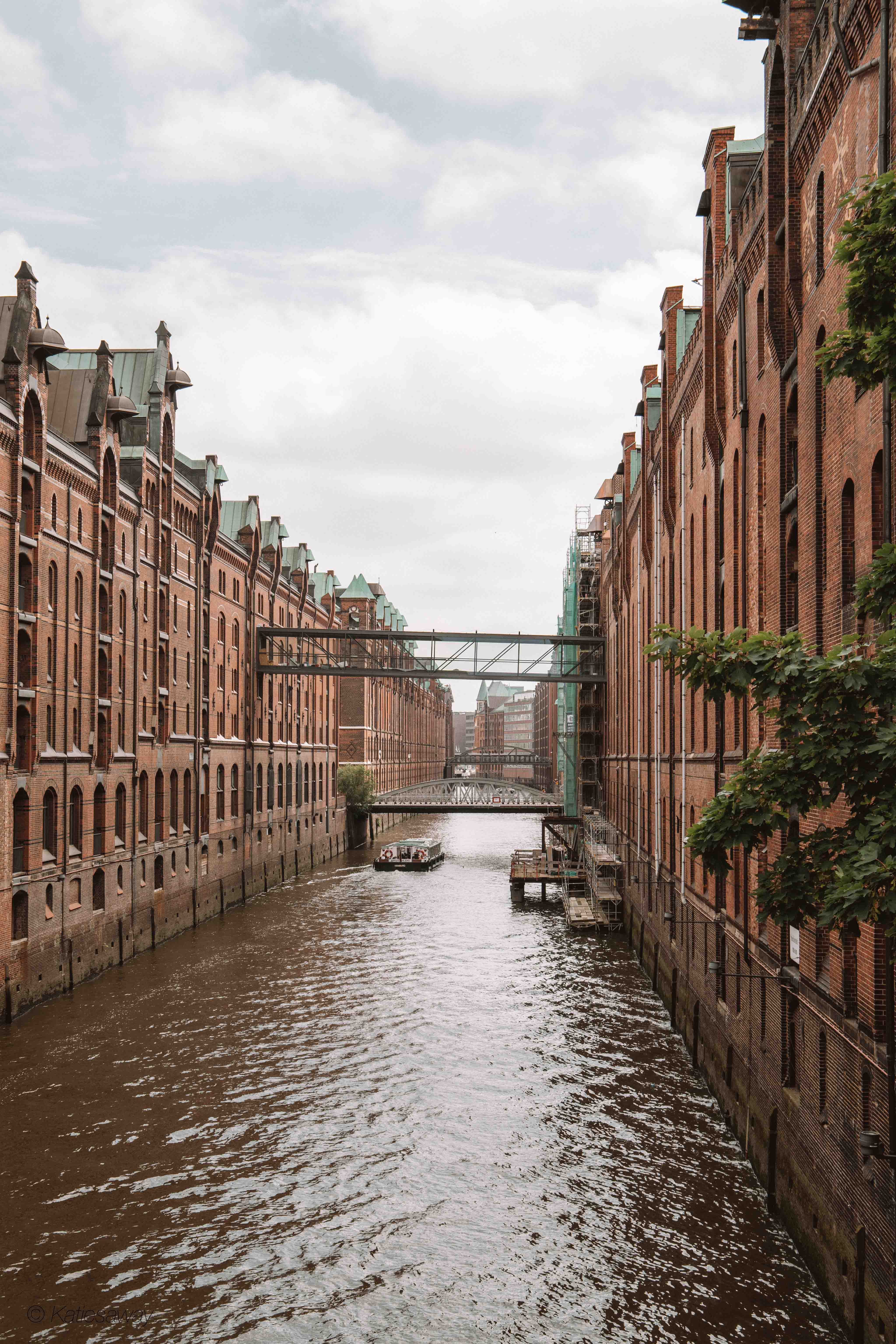
2 Week Road Trip in Germany Itinerary overview
- Day 2: Lübeck
- Day 6: Cologne to Ahr Valley
- Day 7: Ahr Valley
- Day 8: Ahr Valley
- Day 9: Ahr Valley to Mosel Valley
- Day 10: Mosel Valley
- Day 12: Koblenz
Frequently Asked Questions
How much does 2 weeks in germany cost.
Two weeks in Germany can cost anywhere from €900 to €3000 depending on how you choose to travel, where you are staying, and what activities you choose to do. The cheapest option would be travelling by public transport and staying in hostels.
Most cities have free activities you can do or city passes which give discounts on museums etc. Another way to save money is to stay at campsites. This is what we did during this two week road trip and we found it a great way to stay cheaply, and explore another side of Germany!
If you want to drive, stay at nice hotels and eat out every night then it will cost you more. Food is relatively cheap in Germany and you can get a good meal and beer for €15 per person.
The best way to see Germany in 2 weeks
The answer to this question depends on the person! If you want to explore the bigger cities like Berlin, Munich and Hamburg then the best way to travel is by train. If you want to see the more unique villages such as the Mosel Valley or Ahr Valley then the best way is to follow this 14 day itinerary!
Is 2 weeks in Germany enough?
Germany is one of the largest countries in Europe with so much to explore. 2 weeks in Germany will give you enough time to visit several places, enjoy the culture and see the sights, but there will always be more to come back and see.
Find more Germany travel ideas
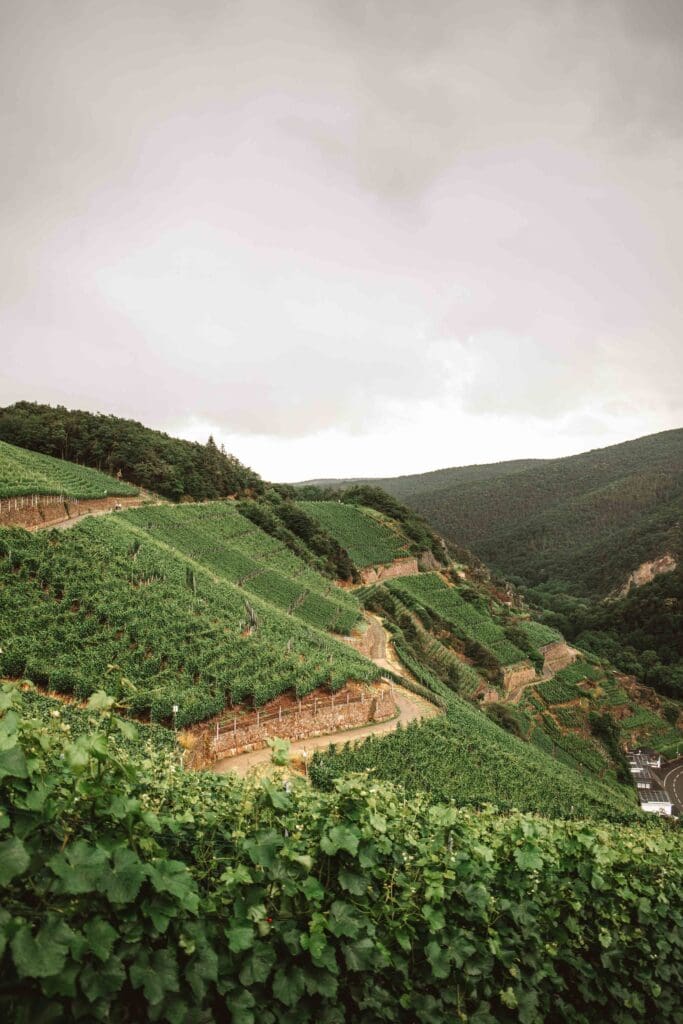
Read the Post
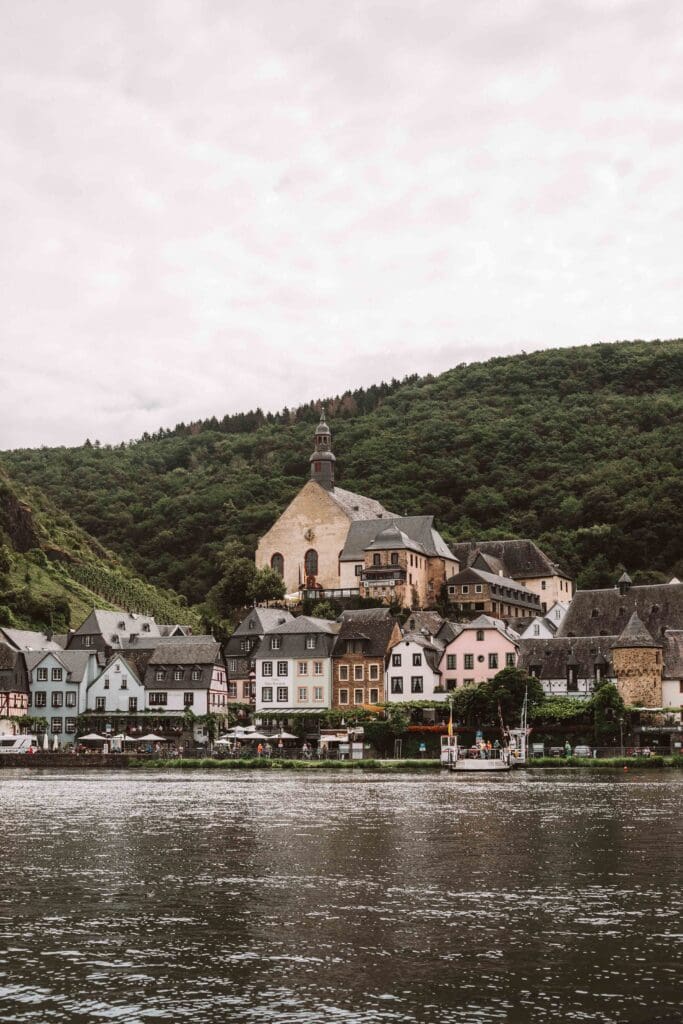
Save this two week itinerary for a road trip in Germany for later!
You may also enjoy these posts.
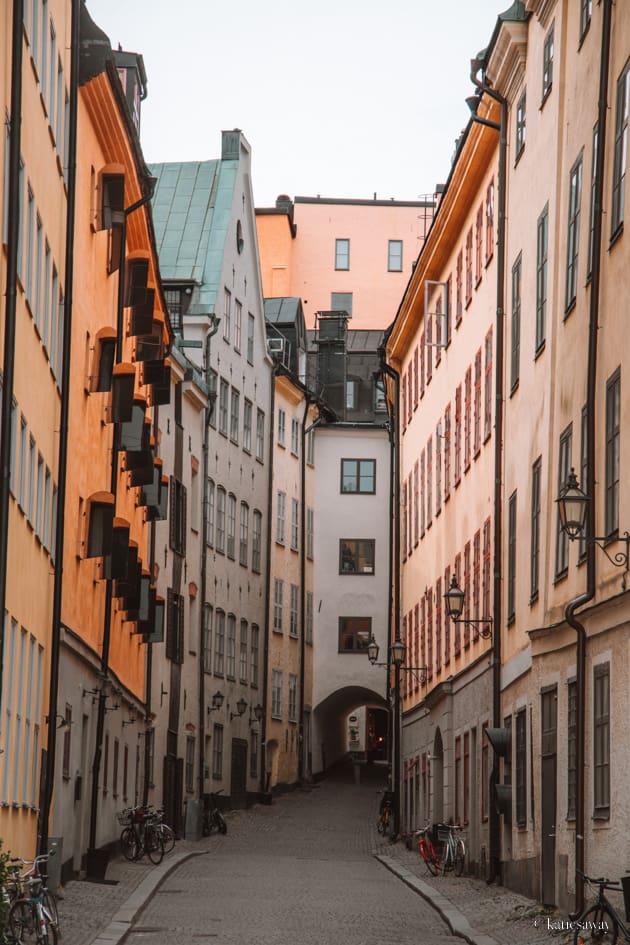
You’ll Also Love
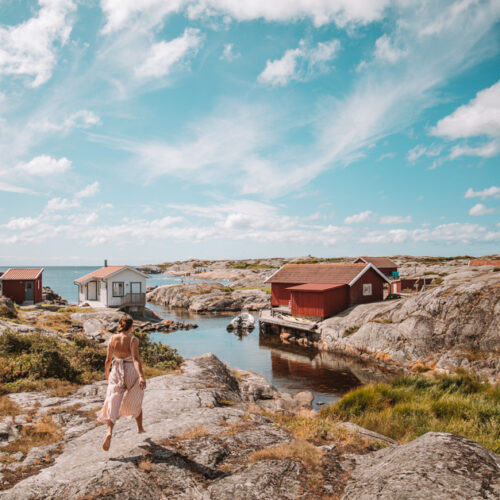
ways you can support Katiesaway
Buy me a coffee
Follow me on Instagram
Purchase my West Sweden Map
west sweden
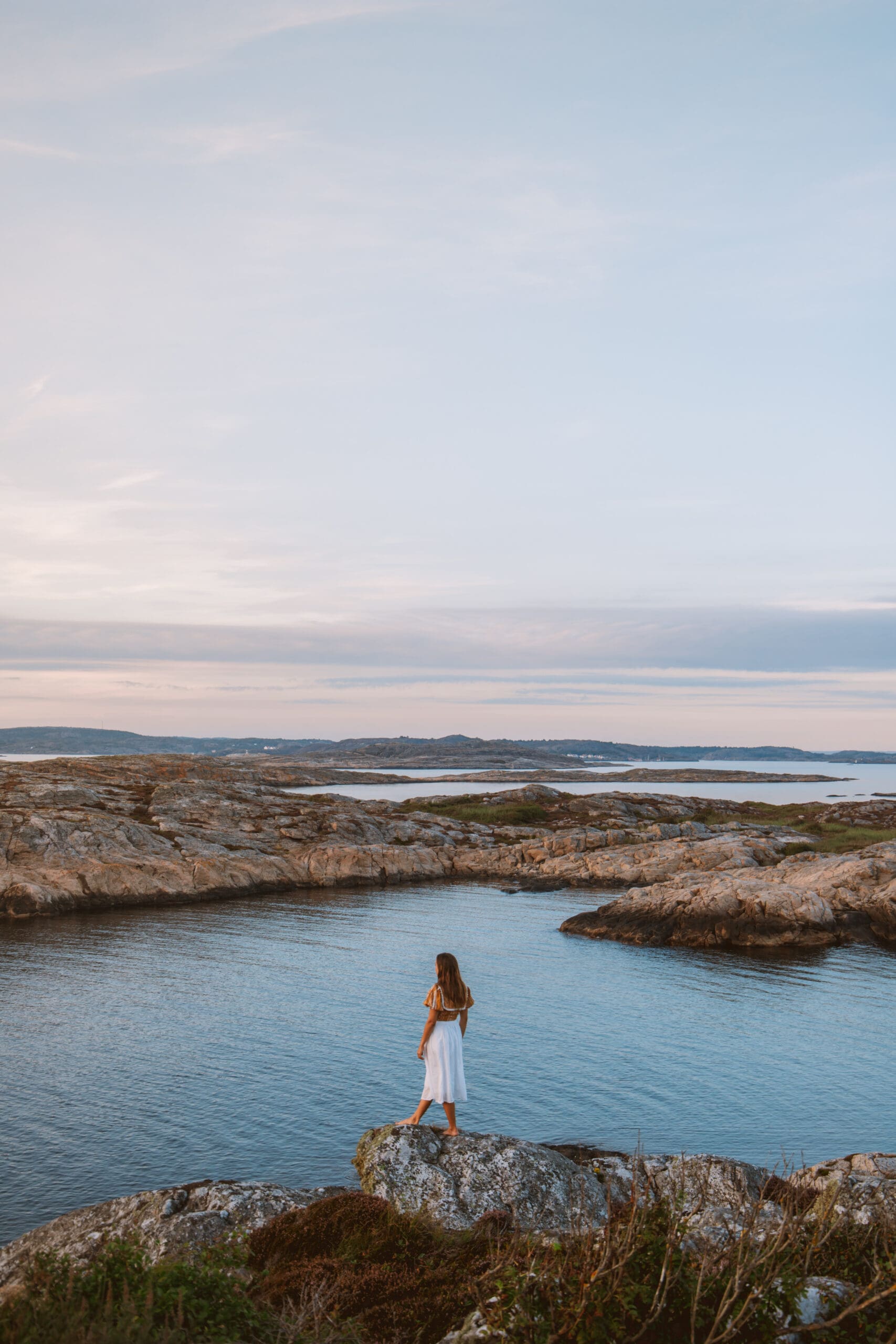
Recent posts
- The Best One Day Stockholm Itinerary for First Time Visitors
- 10 Day Scandinavia Itinerary – The Perfect Norway, Sweden and Denmark Trip
- 15 Places To Visit During Summer in Sweden (2024)
- Mölle and Kullaberg Nature Reserve: A Guide To This Unique Place To Visit

- Privacy Policy
- Copyright Notice
- Disclosure Policy
- West Sweden Map
- Terms and Conditions
- Cookie Policy
Copyright © 2024 Katiesaway · Theme by 17th Avenue

2 Weeks in Germany: 3 itineraries
DISCLAIMER: This post might have links to travel services and products that we enjoy. We might make a commission from it at no extra cost to you.
Germany is the first country I visited in Europe after the pandemic . It wasn’t really anything specific, but the first window I had to travel ended up in September. I really missed Europe and I knew that’s where I wanted to go.
As I do my research on where to go in Europe in September, I found out that Octoberfest happens in that month (okkkkayyy!). So that settled it, I sat down and did a research on how to spend 2 weeks in Germany.
Germany is one of the largest countries in Europe. It actually has the most countries it borders than any other state in Europe. Denmark in the North, Switzerland, Austria in the South, Czechia, Poland in the East, and the Netherlands, Belgium, Luxembourg, and France in the West.
Germany is well-known for its forested hills, plains, urbanized cities, medieval castles, and picturesque villages.
You’ll find one of the oldest universities and among the crucial European publishing centres. Germany is also a must-visit for its renowned sausages and beers.
In this 2 weeks in Germany article, there are 3 travel itineraries to choose from.
THINGS TO KNOW BEFORE VISITING GERMANY
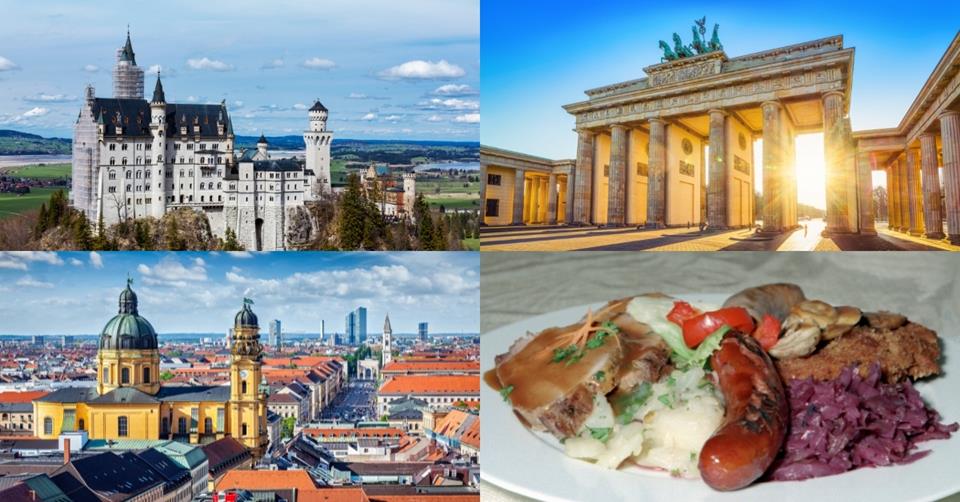
Here are some essential travel tips to make your trip more seamless. The following information should help you plan and write your travel itinerary easier. From deciding when to go, your preferred mode of transportation, and websites where you can book your accommodation and tours.
When is the best time to go to Germany
The summer season is from June to August, the peak season and, ironically, the wettest season. It rains a lot in Germany, so bringing an umbrella and rain jacket with you is brilliant.
Germany is also a fantastic destination during winter where you can enjoy some slopes for skiing if you’re visiting in winter.
There are also lots of Christmas market s you can check out offer traditional German food and souvenirs that you can buy. I wanted the Christmas market, which filled the air with a delicious aroma.
Bring warm clothes if you visit during winter because it gets frigid there. It’s also very dry, so carrying chapstick and hand cream is a great idea. I visited in September and it was already freezing cold.
If you come in spring, don’t forget to go to Bonn, a spring destination. The streets are lined with cherry blossom trees, which are beautiful in spring.
Are two weeks enough for Germany
Being a relatively small country but with fantastic transportation services in place, 14 days in Germany is plenty of time. Of course, it will all depend on how many places you want to see, the time to spend in each location and your chosen transportation.
For 2 weeks in Germany, you could see 3-4 major cities and do day trips in nearby towns. Make a travel itinerary to know how far each place is from one another and how long it will take to travel. This will also help you decide whether to rent a car or take public transportation.
Getting around
Public transportation in Germany, including U-Bahn, S-Bahn, tram, buses, and regional trains, are all fantastic and reliable.
S-Bahn 9city rapid rail is the fastest form of public transport in Germany, while the U-Bahn is an underground train system. Bus and subway tickets are the most affordable options.
If you spend 2 weeks in Germany, renting a car is much more convenient. Although more costly, you will be free of when to go and what time. Most driver’s licenses are valid in Germany, but getting a copy of your international driver’s license is best.
You can pick up your rental car at the airport when you land. You can easily rely on public transport for those who don’t plan to rent a car. Major cities in Germany are connected by trains and buses, which are pretty affordable and comfortable.
There are also domestic flights you can take . It might cost a bit, but a good option if you have limited time. Big cities in Germany also have electric bikes and scooters that you can rent. You can either rent it from your hotel/hostel or go to the metro station to purchase access.
Language and currency
German is the primary language in Germany, but you shouldn’t have a hard time communicating with the locals in English. Here are some words that one could use while on vacation.
- Hallo – hello
- Guten morgen – good morning
- Guten tag – good day
- Guten abend – good evening
- Thank you – danke
Germany uses Euro. 80% of transactions in Germany still use cash . Hence it’s essential to have it with you at all times. You should still be able to pay for the hotel and restaurants using your bank card.
It was indeed surprising to experience that many businesses in Germany prefer that you pay in cash. When you ask for the bill, they will ask you if you are paying in cash or in a card , and once the bill has been printed out, it can be inconvenient for them if you change your mind.
Average cost of a 2-week trip in Germany
The average cost of spending two weeks in Germany is about $1,300 per person , excluding flights to and from Germany.
If you are on a budget, you can budget around $900 if you stay in hostel dorms and take a bus or train.
For people who want to spend a little more and stay in more excellent hotels, $3,500 will allow you to travel comfortably.
Accommodation is the most expensive cost. Transportation and food can be affordable. In comparison, tours cost depend if you want a private tour or don’t mind joining a group tour.
Germany is part of the Schengen. This means that it implements the same visa policy. Enter Germany with a passport issued by the US, Canada, or most countries in Latin America, Australia, New Zealand, Japan, South Korea, Malaysia, Singapore, and Europe. You can enjoy a visa-free for 90 days in a 180-day calendar.
Visitors from an EU member country have freedom of movement in Germany indefinitely. The rest of the travellers must apply for a visa before travelling to Germany.
Other travel tips
I had to plan my Germany trip way in advance because I wanted to visit during winter when the Christmas market would be open. I want to be close enough downtown that I get to visit as many markets as possible.
The good thing about using the travel sites I like is the fact that they let me cancel at the last minute if I change my mind. I could book the hotel I like, pay a bit less, and still have free emergency cancellations.
If you don’t travel as often as I do, these travel services below will give you many options regardless of your budget. From accommodation, tours, and car rental – many offer a reasonable free cancellation if needed.
PINNED MAP OF MUST-SEE PLACES IN GERMANY
Click the icon on the top right to enlarge the map. Credit: map data: Google
2 WEEKS IN GERMANY ITINERARY
I actually planned a month trip in Europe, 14 days of that was spent in Germany and the other 2 weeks were in Portugal – I thought it was a perfect country combination since Germany offers history and awesome cities, while Portugal is great for food and hiking.
This article has three 2-weels in Germany itineraries, and plenty of travel plans depending on your interest.
For instance, there is an itinerary that caters to those who prefer a more laidback trip, an itinerary for those who want to experience various activities, and an itinerary that features the most famous German attractions.
There’s also no pressure to follow these itineraries. These are just suggestions that you could either completely follow or not. Depending on your mood, budget, and other factors, you can also mix and match various locations.
Itinerary #1: Berlin, Nuremberg, Munich, Frankfurt
The first itinerary for those planning to vacation for two weeks in Germany includes Frankfurt, Munich, Berlin, and Nuremberg locations.
This itinerary is most suitable for people who want to learn about Germany’s history and culture . This itinerary will take you through a time machine by visiting historical sites.
These locations are perfect for those who want to take a breather when they travel and prefer to opt out of back-to-back adrenaline-filled activities. However, there’s also a city that adventurous people or nature lovers might enjoy, Munich, due to its Alpine region.
Berlin for 4 days
Berlin is perfect for visitors who want to have a cultural immersion. The capital of Germany is filled with museums, historic sights, and local food, plus a vibrant night scene. In fact, Berlin is the party capital of Europe.
This city is the ideal starting point when travelling because it is connected to many cities, including Hamburg and Dresden, where you could also avail yourself of guided day tours. Another famous day tour destination from Berlin is Potsdam.
Nuremberg for 3 days
Nuremberg is the second largest city in the state of Bavaria. It has culture-filled architecture and medieval buildings, including churches, castles, rivers, bridges, and even its streets. Since this city is a thousand years old, it will be perfect for people who appreciate historical sights and structures.
There are several ways to reach Nuremberg from Berlin , including the train , driving, riding a bus , or flying. The most recommended option would be to ride the train, which takes about 3 hours.

Munich for 4 days
A lot of people say that Munich embodies the best of Bavaria . It has laidback cafes, cosmopolitan city life, world-famous beer halls, and Alpine areas, so it can basically accommodate any type of traveller.
If you are laidback, you could sightsee and stay in one of their cosy cafes or boisterous beer halls.
For nature enthusiasts, it has an Alpine area region where you can hike and take in the sights thousands of feet above ground level. The Old Town Munich is such a melting pot and a must-see location. You can join a walking tour that lasts for 2-3 hours and learn a lot about this Bavarian capital.
The most recommended option to reach Munich if you’re coming from Nuremberg is by train ; the journey takes just over an hour. It is operated by Deutsche Bahn Intercity-Express and Deutsche Bahn Regional. You can also take the bus for a cheaper cost if you are on a budget.
Frankfurt for 3 days
Frankfurt is most well-known for its ethereal skyline, famous galleries, museums, and historic cathedrals. This city is most suitable for those who appreciate historical sites. Aside from taking a stroll, you could also opt to take a cruise in downtown Frankfurt to see it from another perspective.
If you’re coming from Munich, some of the options to reach Frankfurt include riding the train via Neustadt. This is the most recommended choice, about a 3-hour journey. The cheapest option is to ride a bus . Another alternative option is to drive.
Frankfurt is an incredible city to finish your 2 weeks in Germany because the airport is big enough to host international flights to North America, Asia, Africa, and Latin America.
Itinerary #2: Munich, Berlin, Hamburg
For those who are staying for 14 days in Germany, this second itinerary is ideal for people who are fond of nightlife and attending various events.
This is an ideal 2 weeks in Germany itinerary for those who want to travel slowly and visit the most popular spots in the country.
One more great thing about this itinerary is the inclusion of Cologne. It is near to other equally mesmerizing places, such as Essen, Dusseldorf, and Dortmund. You could take day trips from Cologne to those cities.
I was unsure if I should start in Berlin or Munich, but eventually went with the later one since I found a shorter flight and more affordable that landed there. I’m happy I did because Berlin was so much colder and the locals of Munich were a bit more welcoming (in my opinion).
Another reason to visit Munich is because of the live performances. For people who want to witness a show-stopping experience, head over to Schubecks Teatro, where you could have a meal and watch a cabaret-cum-circus simultaneously.
Munich is a perfect starting point for travel because aside from the city’s charms, you can also have day trips to multiple places , including Nuremberg, Neuschwanstein Castle, Salzburg, and Rothenberg ob der Tauber.
You must visit Berlin at least once in your lifetime because it is a city celebrated for its creativity, culture, and overall grunge feel . Berlin has tons of green spaces, such as public parks and gardens.
Some of the best brands and DJs flock to this city to perform as well, so if you’re looking for a vibin’ night out with your companions. This is the perfect place for you.
To reach Berlin, if you’re in Munich, the transportation options include the train , which is quite comfortable
You can also take the more affordable bus . Driving is another option for those who rent a car or board a flight. The most recommended option is to ride the train, which could last up to four hours, and the cheapest option is to ride a bus.
Hamburg for 4 days
This city is perfect for those fond of bodies of water as it is close to two seas and has three rivers.
It is even referenced as Venice of the North but with more bridges. In fact, it has six times more than Venice, and since it is close to the waters, its fish and seafood’s freshness is comparable to none.
You could go to Hamburg from Berlin by train , using Rideshare, riding the bus , driving or flying. The most recommended option would be to ride the plane with a travel duration of around 1 hour and 50 minutes.

Itinerary #3: Berlin, Dresden, Nuremberg, Munich, Frankfurt, Hamburg
This itinerary is perfect for people who want to experience a little bit of everything. You could taste local delicacies, see well-preserved historical sights, watch a football match, spend time in nature with the cities’ green parks, and enjoy music.
There’s even a city that’s very family-friendly if you have kids with you. The schedule seems tight, but it is still possible with enough planning during your 2 weeks in Germany.
Berlin for 3 days
Berlin is also a haven for foodies because it has incredible local food, the most famous of which is currywurst. The city also has a vibrant Turkish community reflected in the food it serves. Berlin has mouth-watering kebabs and other delicacies.
And to pair with your food, they have pints upon pints of beer. Berlin is surely the beer capital of the world. Beer enthusiasts will enjoy the immensely wild variety of craft beers there.
Dresden for 2 days
Dresden is one of the cities that was most affected by WWII. Almost 85% of the city was bombed, but now it has been restored. Now, people can see remnants of the old town before the war and learn more about Germany differently.
The most recommended mode of transportation to reach Dresden if you’re coming from Berlin is the train , with a travel duration of around 1 hour and 50 minutes. The cheapest option is to use Rideshare; the alternative options are riding the bus or driving.
Nuremberg for 2 days
Nuremberg isn’t only perfect for couples or groups of friends travelling. It is also family-friendly. Aside from the historical places, it also has culinary delights that everyone can enjoy.
Nuremberg also has lakes where you and your family can stroll or cycle around. You can try pedal boat rides and sailing trips as well. Nuremberg is where the beautifu l Imperial Castle of Nuremberg is located – truly embodies the traditional Bavarian houses.
The most recommended mode of transportation from Dresden to Nuremberg is by train , which has a travel duration of around 3 hours and 50 minutes and covers 424 km. You can also take a bus which is more cost-effective.
Munich for 3 days
If you are an active and nature lover, Munich is the perfect place for you. You can soak in its fantastic views by riding cable cars or c limbing Zugspitze, the highest mountain in the country.
And, of course, speaking of being active, football enthusiasts shouldn’t forget to visit FC Bayern Munich’s stadium, Allianz Arena, and watch a game or two.
To go to Munich from Nuremberg, you could board a train, take the bus , or drive. The most recommended option is by train , which would take you around more than an hour to reach your destination.
Frankfurt for 2 days
Who doesn’t love food-related festivals, right? Frankfurt has a green sauce festival every May, the season when the herbs are freshest.
There’s also this debate on where Frankfurt hotdogs come from. Is it from Frankfurt, Germany or Vienna, Austria? Regardless, you have to try frankfurter paired with tasty mustard (which comes in many flavours in Germany).
Aside from that, they also have a museum festival, apple wine festival, and jazz zum dritten, among others. It also has a remarkably well-preserved old town for history buffs and the main tower, which is Frankfurt’s highest vantage point.
To reach Frankfurt from Munich, people usually board the train or fly. It would take you almost 3 hours to reach your destination. Although taking the bus is also an option.
Hamburg for 2 days
Hamburg has been a must-see destination for music lovers worldwide since the opening of the Elbphilharmonie Concert Hall in 2017. Aside from that, it also has around 100 music venues and clubs. It is considered one of the biggest musical cities in the world.
You could reach Hamburg from Frankfurt by flying, which is the most recommended option. Travel time lasts for almost 2 hours. However, you can also book a train ride or take the bus for a more affordable option.
THINGS TO SEE AND DO IN GERMANY

The list below will help you plan your trip. Make sure to open up a map and add pins on each place to have a visual of where are the attractions you want to see and from there, plan your ideal 2 weeks in Germany itinerary.
I personally mixed booking guided tours and doing DIY. I remember going to this tower in Old Town Munich as a viewpoint, but I got there late in the afternoon, it was foggy and couldn’t see anything. Luckily, it was only €5, so I came back the next day and did it again.
I wouldn’t say that booked tours or guided/group tours in Germany are more costly than in other parts of Europe such as Spain or Italy. It was about the same and if you visit during off-seaon, lots of them are on sale too.
- Explore on your own and get a hop-on,hop-off bus ticket – see the price
- Museum Island
- Discover Berlin – join a walking tour or a specific Third Reich WWII tour or a street art tour
- The Berlin Wall Memorial
- Berlin’s Television Tower – get your skip-the-link ticket
- Checkpoint Charlie Museum
- Sachsenhausen Concentration Camp – book an affordable tour
- Charlottenburg Palace and Park
- Illusion Museum (Illuseum) – read the reviews
- Gendarmenmarkt
- Plenary Chamber, Dome, and Government District – can be done in one tour
- Jewish Museum
- Berlin Cathedral Church
- Berlin Icebar – open all year-round
- Berlin Zoological Gardens
- Sign up for a food tour and/or pub crawl
- Berlin-Dahlem Botanical Garden and Botanical Museum – visit the Botanical Garden during Christmas
- Explore Munich – sign up for the Third Reich WWII tour or a spooky evening tour
- Marienplatz and the Neues Rathaus
- English Garden
- The Olympic Park
- Neuschwanstein Castle and Linderhof Palace – book a full-day tour
- Viktualienmarkt – join a food tour around the market or a Bavarian dinner and drinks
- Cuvillies Theater
- TimeRide VR Time Travel – read the reviews
- Salzburg day trip tour
- Dachau Concentration Camp Memorial Site – get there by train
- Allianz Arena
- Day trip to Rothenburg and Nordlinger Ries – beautiful medieval towns and houses, book a tour
- Day trip to Salzburg – birthplace of Mozart, join a tour and take the train

- Get your Frankfurt Card that allows you to use transportation and enter attractions for free
- Museumsufer
- Frankfurt River – sign up for a cruise
- Goethe House and Museum
- Scavenger Hunt – city tour, self-guided tour
- Discover nightlife and join a pub crawl
- Palmengarten
- Eiserner Steg
- Old Sachsenhausen
- Schirn Kunsthalle
- Day trip to Heidelberg – it’s not too far, so it should only be a half-day tour
- Escheimer Turm
- Day trip to Rhine Valley – including a cruise
- Klassikstadt
- Day trip to Baden-Baden, Black Forest, and Strasbourg – check the schedule and price
- There’s a 7-day tour around Central Europe that leaves in Frankfurt – check the price and itinerary
- Explore Hamburg on your own – get a hop-on, hop-off bus tour
- Miniatur Wunderland
- Port of Hamburg – day cruise or night cruise
- Hamburger Kunsthalle
- Hamburg Dungeon – book your admission ticket in advance
- International Maritime Museum
- Reeperbahn and St. Pauli – sign up for the famous Insider Tour or join an adults-only tour
- Alster Lakes
- Hamburg Red District – Olivia Jones tour with Fabian
- Museum of Art and Design
- Elbphilharmonie – join a guided tour
- Planten un Blomen and Wallringpark
- Listen to St James Church’s historic organ
- Tierpark Hagenbeck
Cologne, Essen, Dortmund, Dusseldorf
- Old Town Cologne – walking tour or a street art tour
- Essen Minster
- Rhine River Cruise – book a boat tour
- Ruhr Museum
- Cologne Chocolate Museum – get your ticket in advance
- Alter Markt and Altes Stadhaus
- Westfalenpark
- German Football Museum
- Brewery Tour – Klösch Tastings
- Konigsallee
- Comedy Tour Bus – a unique way to learn about Cologne, read the reviews
- Dusseldorf-Kaiserwerth
- Sign up for a food tour
- Get the Dresden hop-on, hop-off bus ticket
- Dresden Frauenkirche
- Semperoper and Old Town – combo tour
- Dresden Royal Palace and Museums
- Semper Opera and Theaterplatz – book a guided tour
- Bruhl’s Terrace
- Dresden Kulturpalast
- Elbe Cruises on a Paddle Wheeler – there’s a river cruise
- Saxon Switzerland
- Dresden Zwinger – gala concert
- Moritzburg Palace
- Lantern Night Watchman – read the tour reviews
- Meissen day trip
- The Georgentor and the Procession of Princes
MUST-TRY GERMAN DISHES, DRINKS, AND SNACKS

I’m not going to lie, I didn’t enjoy the food that much in Germany, but that’s because I don’t like the taste of pork. However, chicken schnitzel was so good and apfelstrudel was worth every sugar. I’m not a big beer drinker, but if there’s one beer I could drink forever, it would be Weizenbier (wheat beer).
Don’t leave Germany without trying these local dishes and excellent drinks. You shouldn’t have difficulty finding these traditional foods regardless of the season.
- Schnitzel – Breaded and fried veal, pork, or chicken cutlet.
- Bratwurst – Grilled sausage, often served with sauerkraut and mustard.
- Sauerkraut – Fermented cabbage, typically served as a side dish.
- Currywurst – Sliced sausage with curry ketchup and curry powder.
- Sauerbraten – Marinated and roasted beef, often served with potatoes and red cabbage.
- Kartoffelsalat – Potato salad, made with boiled potatoes, onions, and a vinegar-based dressing.
- Rouladen – Thinly sliced beef rolled with onions, bacon, and mustard, then braised.
- Königsberger Klopse – Meatballs made from ground pork or veal, served in a creamy caper sauce.
- Kartoffelsupp e – Potato soup, often flavored with bacon or sausage.
- Spätzle – Soft egg noodles, served as a side dish or with gravy.
- Black Forest Cake (Schwarzwälder Kirschtorte) – Layers of chocolate cake with cherries and whipped cream.
- Apfelstrudel – Apple strudel, made with thin layers of pastry filled with spiced apples and raisins.
- Bienenstich – “Bee sting” cake, featuring a layer of cream or custard between two layers of yeast dough, topped with caramelized almonds.
- Beer (Bier) – Germany is famous for its beer, with a wide variety of styles including Pilsner, Weizenbier (wheat beer), and Märzen.
- Glühwein – Mulled wine, often enjoyed during the winter months, especially at Christmas markets.
- Apfelschorle – A refreshing drink made with sparkling water and apple juice, popular for its crisp taste.
ACCOMMODATIONS IN GERMANY
Hotels in Germany are pricey, there’s just no going around about it. But, I managed to score some good-priced hotels. Well, I can’t take all the credit but travelling in September (low season), really paid off.
I also booked a private room in a hostel, which is more affordable than the usual hotels. Plus, since I planned this trip 4 months in advance, I had the time to hunt some good deals.
Here’s a l ist of places you can stay in Germany depending on your budget:
- Affordable: a&o Berlin Hauptbahnhof or Ballhaus Berlin Hostel or New Hostel Berlin Mitte
- Mid-range: Living Hotel Großer Kurfürst or NH Collection Berline Mitte
- Luxury: Steigenberger Hotel Am Kanzleramt or Berlin Marriott Hotel
- Affordable: 1st Creatif Hotel Elephant or The 4YOU Hostel
- Mid-range: Hotel Jedermann or Hotel Demas City
- Luxury: Hotel Torbrau or Eden Hotel Wolff or Hotel Mirabell
- Affordable: Hotel Scala or Hotel Miramar am Romer
- Mid-range: Motel One or Ruby Louise Hotel
- Luxury: Sofitel Opera or Hilton Hotel
- Affordable: MAC City Hostel or CAB20 or Superbude Hotel
- Mid-range: Hotel Fürst Bismarck or JUFA Hotel
- Luxury: The Westin or AMERON Hotel or Motel One
- Affordable: a&o Dusseldorf or B&B Hotel
- Mid-range: Leonardo Hotel or Holiday Inn Express
- Luxury: The Niu Tab or Clayton Hotel or Carahotel
- Affordable: Pathpoint Cologne Hostel or Hotel Berg
- Mid-range: Urban Loft or Hotel Domblick Garni
- Luxury: Marriott Hotel or Prevot Restaurant and Hotel or The Qvest Hideaway
- Mid-range: Hotel Elbflorenz or ibis Budget Hotel or Altstadtwohnung TOP
- Luxury: Hotel Indigo or Schiffsherberge Poppelmann
- Affordable: a&o Nurnberg Hauptbanhof
- Mid-range: B&B Hotel or Hotel-Gasthof Bub or Hotel Continental
- Luxury: Best Western Hotel or Hotel Elch or Melter Hotel & Apartments
SUMMARY OF 2 WEEKS IN GERMANY
Germany is filled with incredible architecture, glamorous events, exciting nightlife, beautiful scenery, and lively festivals.
You could take river cruises, day trips, or attend music and film festivals, as well as the world-famous Oktoberfest, which originated here. Whatever you fancy, you could probably find it in Germany.
This country is also well-known for its cultural diversity. You’ll experience various languages and cultures from Nigerian, Tunisian, Polish, and Turkish roots in Germany.
It’s straightforward to get around in Germany as their trains are always on time and have a vast rail network. Christmas markets are abundant during the holiday season, so visiting Germany has various perks, no matter what season.
TO SAVE THIS ITINERARY, PIN THIS IMAGE BELOW:


Six Unmissable Germany Road Trip Routes
This post may contain affiliate links, from which we earn an income.
The Top Six Germany Road Trips
Germany is an incredible country in which to road trip. With landscapes ranging from the dramatic to gentle, medieval towns alongside cities full of cutting-edge architecture, fairytale castles, and amazing roads, you’ll enjoy the road trip of a lifetime as you explore this often overlooked country.
From the lively attractions of Berlin to historic medieval cities and the mighty Alps to the starkly beautiful northern coast, Germany is a seriously great country for road tripping.
Our Germany road trip planner will help you decide whether you want drama, fairytale castles, towns, vineyards, or something a bit different. Use our detailed guide and travel tips to find our pick of the best German road trip routes, itineraries, and places to see along the way.
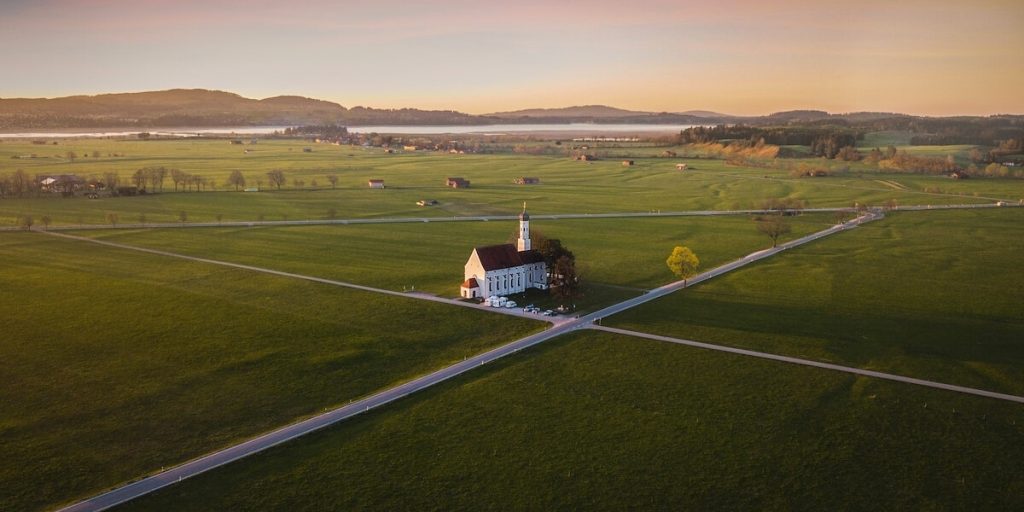
Getting to Germany
Germany is an easily accessible country from the UK and most of Europe, with an excellent network of autobahns to deliver you right where you want to be. Plan getting to Germany as part of your trip and could enjoy an epic road trip to Germany, followed by one in the country itself!
For those flying in, the well-located airports of Frankfurt, Munich, and Hamburg are ideal for car rental, or even hiring a VW campervan or motorhome from Motorhome Republic , and starting your German road trip. We recommend booking your flights through Skyscanner for live deals and the best prices.
RELATED POST: Driving from UK to Germany: Best Routes, Costs & Tips
Fly into the well-located international airports of Frankfurt , Munich , and Hamburg , ideal starting points for your German road trip. We recommend booking through Skyscanner for live deals and the best prices.
Are you planning to rent a car in Germany? As one of the largest car hire aggregator companies in the world, we recommend Rentalcars.com because they have massive purchasing power which enables them to secure the best car rental prices, which benefits you when you’re planning a roadtrip in Germany.
For a real adventure , hire a motorhome or campervan in Germany. We recommend Motorhome Republic , an aggregate booking site who pull together all the best deals from a number of rental agencies, to offer you a wide choice of options alongside an excellent English speaking expert motorhome Concierge Team.
Use the Park4Night app to find campsites and places to stay along the route, and park for the night on a mountain pass, flower filled meadow of with a glorious view of the sea.
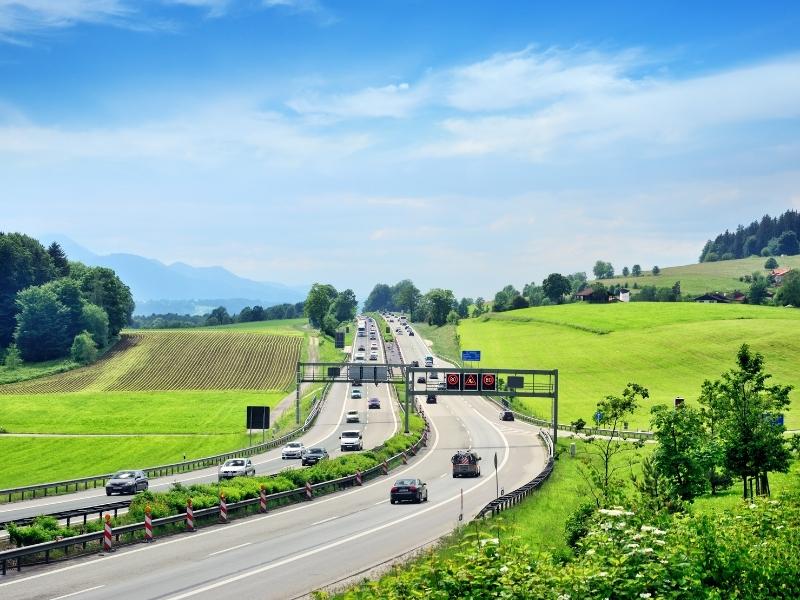
Best Time to Visit Germany
The German climate is fairly typical of central European weather.
The high season is considered to be between April to August when the weather is generally warm. If you want to increase your chances of a dry holiday without rain, roadtrip in Germany between July and September. Temperatures during this period fluctuate between 68°F/20°C to 86°F/30°C.
The colder low-season German weather starts in November and lasts until late March or early April. Snow is common across the country, with temperatures dropping well below freezing. By late March, snow turns to rain, a sure sign that spring is on the way!
That doesn’t mean that you shouldn’t choose to take a German road trip in winter. As a European winter destination , Germany packs a real punch with fantastic Christmas markets, winter activities in Bavaria, and everywhere dusted in snow.
Is this your first time visiting Germany? Get all the information you need in our Germany Travel Guide , including what to pack, the best time of year to go, getting there, and practical tips to help you have the best trip!
The Mosel Valley
Explored by James from The Travel Scribes
Koblenz – Cochem – Beilstein – Zell am Mosel – Traben Trarbach – Trier
- Distance 172km
- Duration 5-7 days
- Drive Time 2 hours
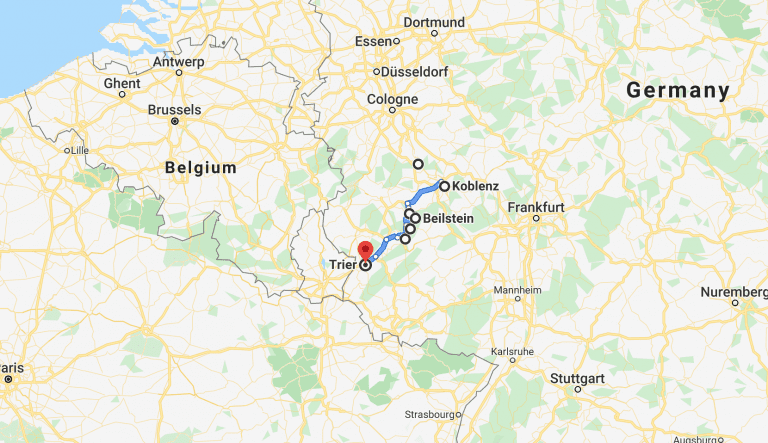
A beautiful river snaking through it, soaring medieval castles dotted across it, and almost vertical vineyards nestled on its hills. It’s the picturesque Mosel (or Moselle) Valley, and this is one of the best roads in Germany for wine lovers!
Punctuated by the small but beautiful Mosel river, the valley essentially stretches from the small city of Koblenz, a fairy-tale German town, to Trier along the water’s edge.
This breathtaking valley is best explored by taking a least a week, the pinnacle of slow travel as you hop from one riverside town to the next.
Kick off your west Germany road trip in Koblenz, where the mouth of the Mosel meets the Rhine, to walk along the ancient Roman walls or just amble through the Altstadt (old town), before heading to visit the first traditional town of Cochem .
On the way there, avid Instagrammers and history buffs should definitely make a turn at Burg Eltz, one of the most spectacular castles and hidden gems in Germany , to take the requisite snap. Once in Cochem, you’ll slow the pace.
You can marvel at the unique vineyards (a signature of the entire Mosel road trip), where the vines crawl up the hillside at 90-degree angles. If you go in harvest time, you’ll see the workers strapped into harnesses with spiked boots just to be able to pick the ripe grapes.
Cochem also boasts one of Germany’s legendary castles looming above it, plus it’s the best place to just take a walk along the promenade, stopping in at one of the riverfront cafes for a plate of zwiebelkuchen (onion cake) and a sparkling glass of federweisser , a traditional fizzy grape drink.
Your next few nights should definitely see you stay over in one of the many lovely towns sprinkled along the river: Beilstein for the Burg Metternich castle, a climb up the hill (and more traditional German food) in Zell am Mosel and our favorite stop on the entire itinerary, Traben Trarbach.
This gorgeous little town used to be two villages, Traben and Trarbach, on opposite sides of the river, which were eventually united with the construction of a short bridge.
Before you hit your final destination of Trier, stay overnight in Bernkastel-Kues, a spa town peppered with wood-timbered houses, many a hot spring, and the ruins of the Landshut Castle.
Before you know it, your German road trip is at an end, as it culminates in the beguiling town of Trier. An old Roman city with landmarks like the Porta Nigra black gate, an old-school amphitheater, the Roman baths, and a towering cathedral, just to name a few.
It’s here that you should raise a(nother) glass of perfectly poured Riesling in celebration of the Mosel valley, one of the best road trips in Germany.
Where to Stay
Cochem ⇒ Hotel Villa Vinum for its highly rated service, perfect riverside location, and quirky decor.
Traben Trarbach ⇒ The Goldene Traube for its traditional exterior and modern interior, rooftop terrace, and fabulous breakfast buffet!
Trier ⇒ Vienna House Easy for its excellent location close to the old town, modern and funky style, and private parking garage.
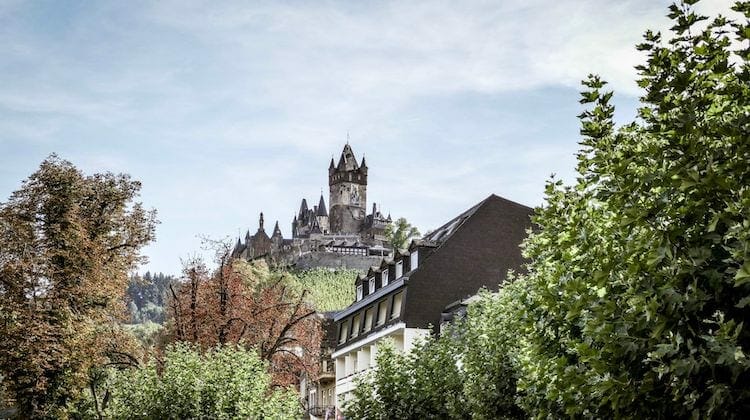
Make sure you have travel insurance you can trust when visiting Germany. We recommend True Traveller for their 5-star TrustPilot reviews, variety of cover options, best activities cover as standard, great prices, and excellent service.
The German Fairy Tale Road
Frankfurt – steinau – marburg – kassel – gottingen – hamelin – bremen.
- Distance 660km
- Duration 7 days
- Drive Time 10 hours
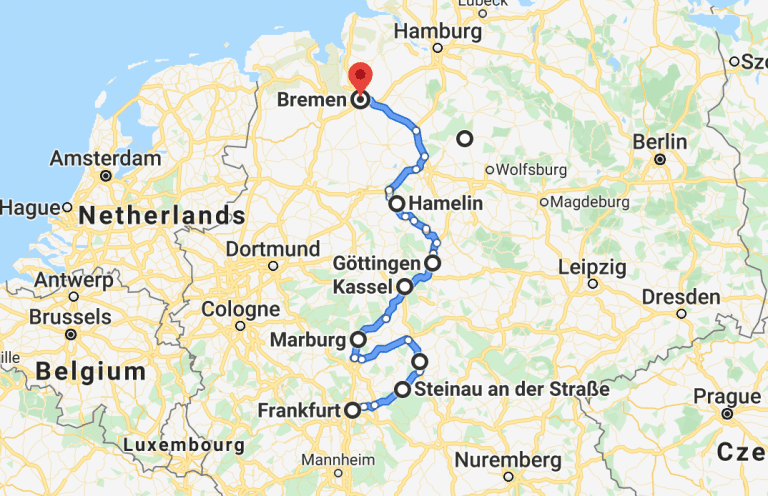
This central to north Germany road trip from Frankfurt does not technically start in the city, but Frankfurt is the perfect place to fly into and pick up a rental car. If you’re spending the night, make sure you visit the South Bank, where you’ll find an eclectic selection of restaurants, bars, and clubs.
The Fairy Tale route officially starts in the pretty town of Steinau an der Strasse where the Brothers Grimm lived until they were aged twelve.
The setting is straight out of their own fairy tales, complete with typical half-timbered houses, twisting cobbled alleys, and the turreted fairy tale castle of Schloss Steinau which overlooks the whole town. Visit the Brüder Grimm Haus and Museum Steinau, both of which showcase the works of the brothers.
Take the back roads to Marburg and enjoy the gorgeous landscapes and slower pace for a few hours. Marburg’s altstadt is full of medieval houses and the hilltop Landgrafenschloss, a dramatic castle holding exhibits on sacred art and local history.
Lively bars and restaurants line the Marktplatz and the narrow streets surrounding it, making this a great location for an overnight stop.
From Marburg, head to Kassel, where the Brothers Grimm spent their teenage years whilst working as librarians for the King of Westphalia, Jerome Bonaparte, the younger brother of the infamous Napoléon.
There is very little left of historic Kassel but there are two worthwhile attractions to visit; the Brüder Grimm Museum, and the Schloss und Bergpark Wilhelmshöhe, a tranquil green space and the largest hill park in all of Europe.
Gottingen is home to the University of Gottingen, where the Grimm Brothers once served as professors. Make for the traditional and atmospheric central market square, where the statue of Ganseliesel, the little goose girl of German lore, is one of the most kissed statues anywhere in the world. It is said that the kisser is rewarded with good luck, but maybe post-virus this practice will change!
Hameln (or Hamelin) is next up and one of the most famous fairy tale destinations in Europe. Hameln is the home of the Pied Piper, or Rattenfänger, who rid the town of rats in 1284, only to be cheated out of his payment.
The Pied Piper returned to Hameln a year later and lured away all the children. The story is re-enacted in the town center every Sunday between May and October and is a fantastic spectacle.
The Weser Renaissance architecture of the Rattenfängerhaus and the Hochzeitshaus makes a fitting historic backdrop for the streets which are thronged with locals dressed the part, stalls selling food, and live music playing.
Finally, on to the Hanseatic city of Bremen, your final stop. Good places to visit in Bremen include the traditional Marktplatz, which is located in the city’s charming altstadt, the 600-year-old Rathaus or town hall, the Roselius-Haus Museum, and the stunning St. Petri Dom, the 11th century gothic cathedral.
Another landmark can be found in the city’s central town square – a statue of the Bremen musicians and heroes of the Brothers Grimm story, “The Town Musicians of Bremen.”
If you have time, extend your trip and head to the modern and progressive port city of Hamburg. Explore the historic districts, edgy culture, and extraordinary commercial past with our one day Hamburg itinerary.
RELATED POST: Deutsche Märchenstraße: Germany’s Fairy Tale Road
Where To Stay
Frankfurt ⇒ Kempinski Hotel Frankfurt Gravenbruch for its proximity to the airport and city center, fantastic spa, and beautiful surroundings.
Marburg ⇒ The Vila Vita Rosenpark for its central location, excellent regional restaurant, and stylish bedrooms.
Bremen ⇒ Atlantic Grand Hotel for its perfect riverside location, bike rental from reception, and ultra-stylish bathrooms.
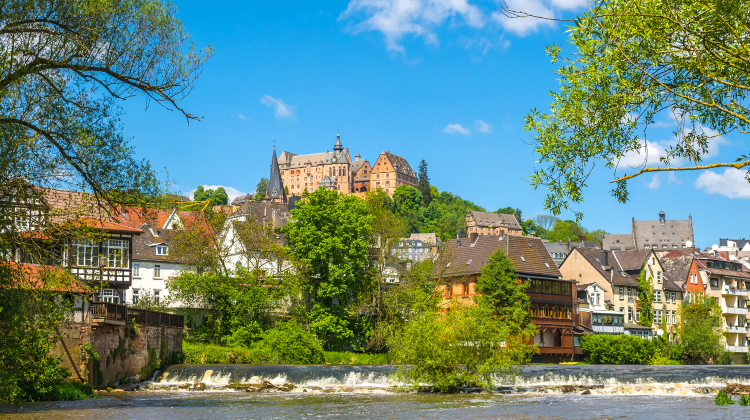
Germany Travel Ideas
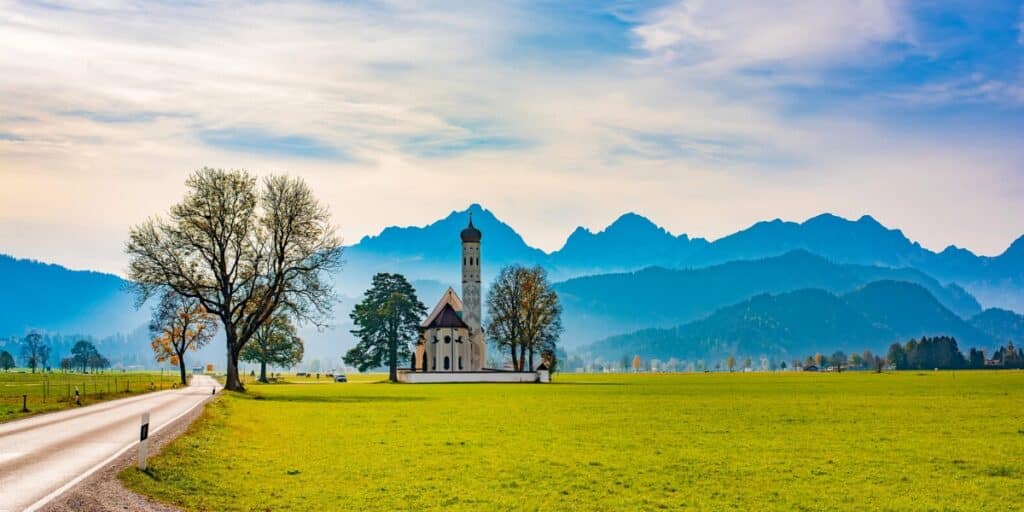
Romantic Road Germany: Itinerary, Map & Tips
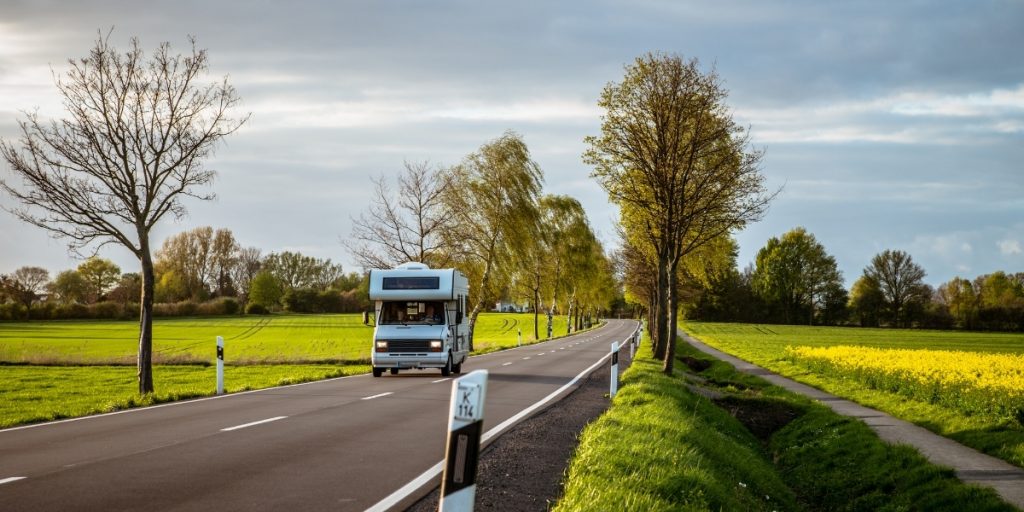
Motorhoming in Germany: Your Complete Touring Guide for 2024
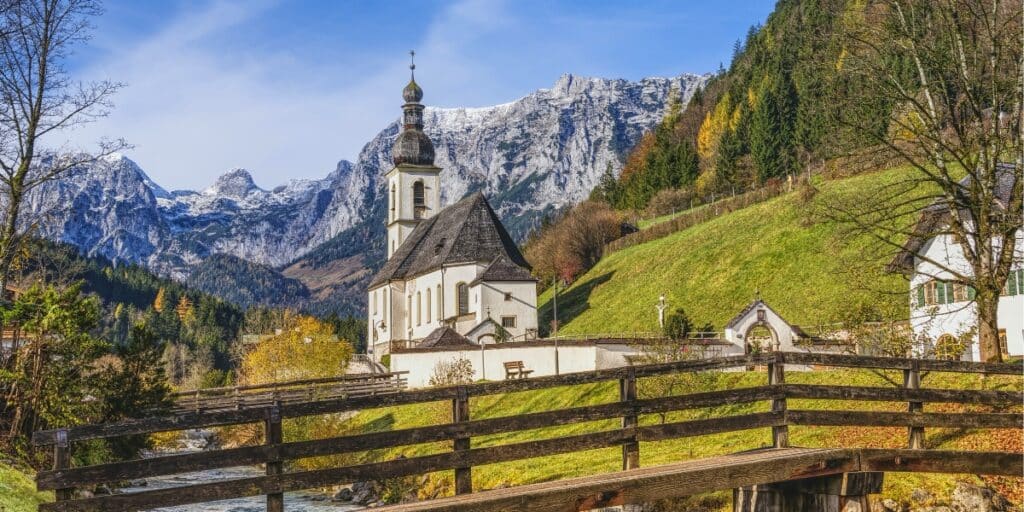
Deutsche Alpenstrasse: Route, Map & Highlights
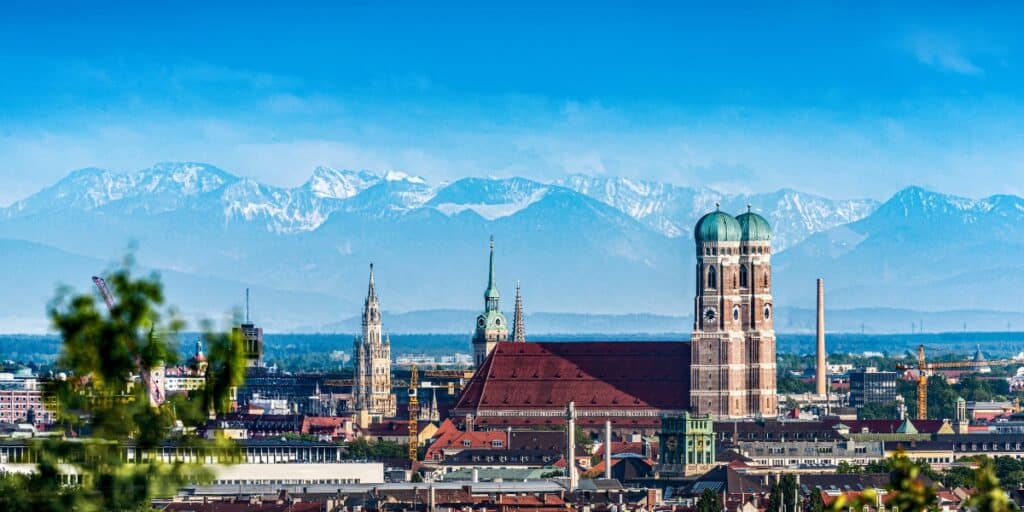
One Day Munich Itinerary + Map, Tips & Guide
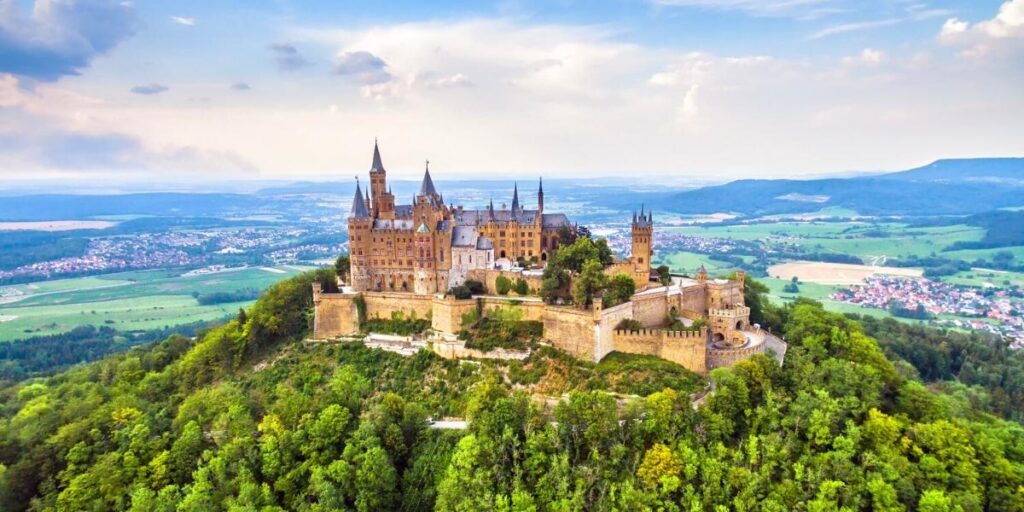
18 Magical Castles in Germany to Add to Your Bucket List
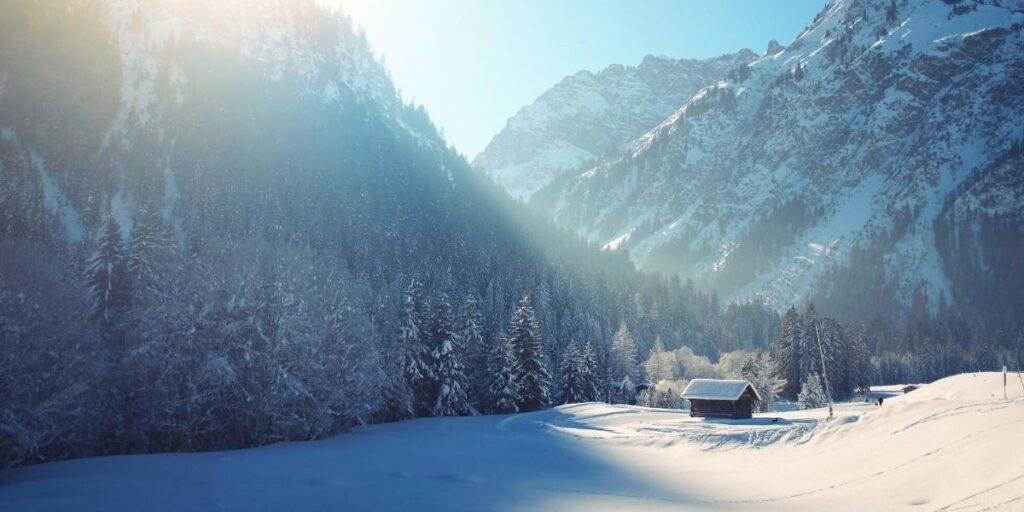
Winter Destinations Europe: 23 Amazing Wintry Places
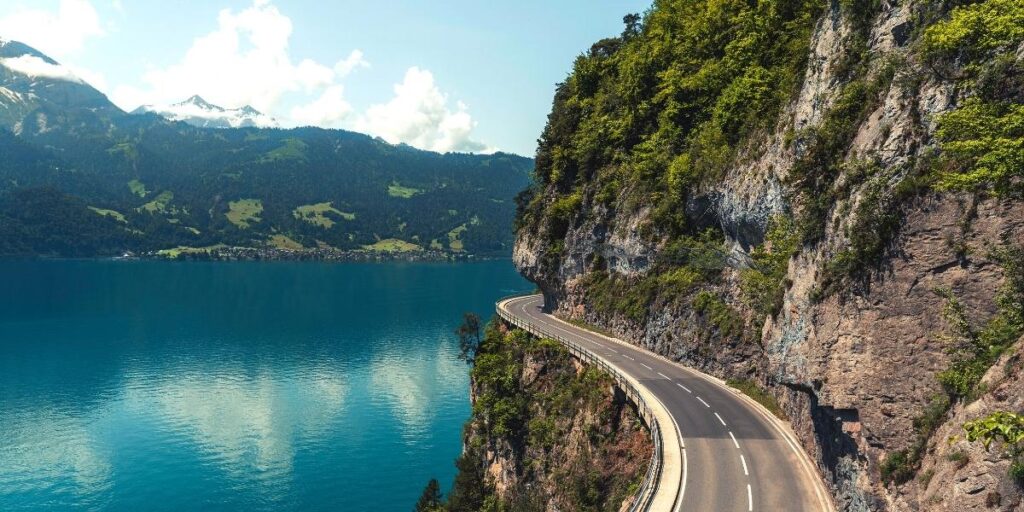
Europe Road Trip – 24 Incredible Routes
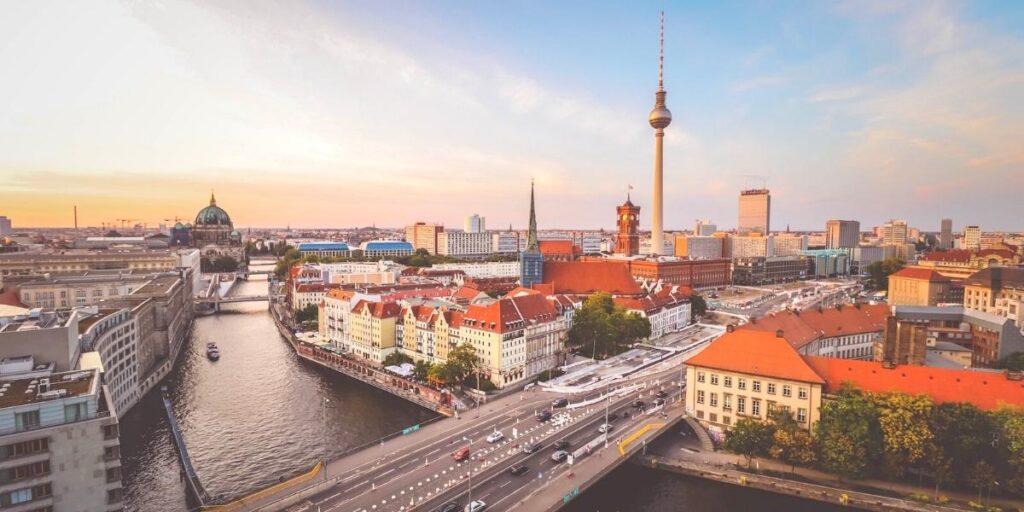
Berlin in One Day – Itinerary, Map, Tips & Guide
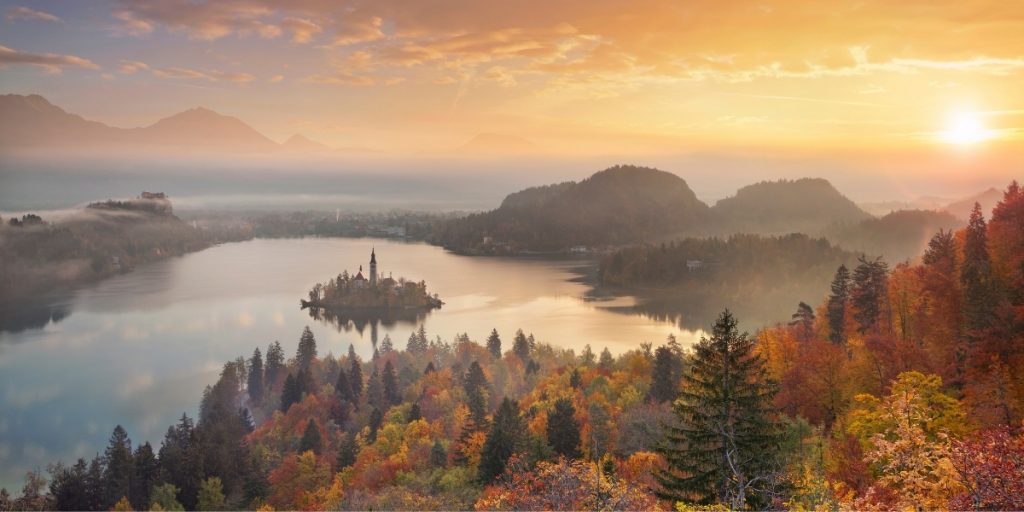
Autumn in Europe: 23 Stunning Destinations for Fall
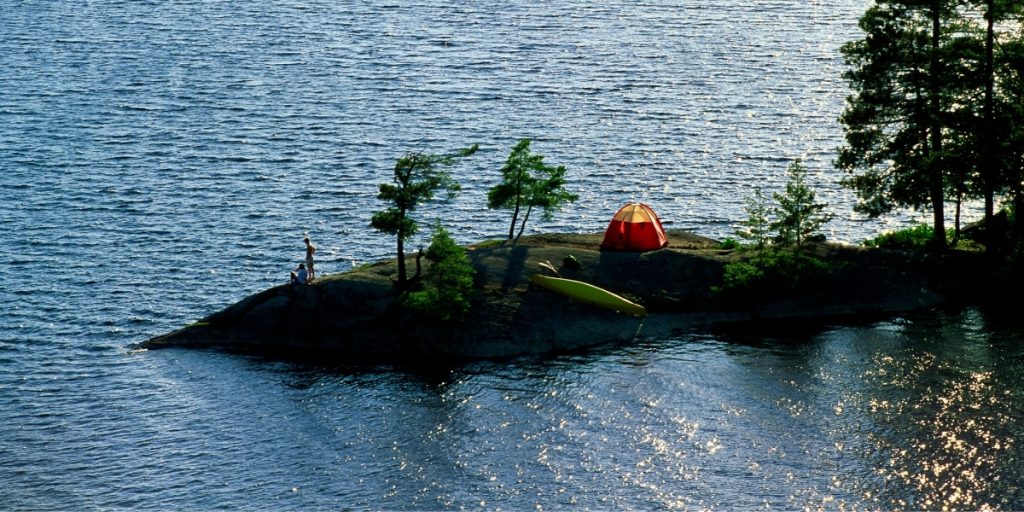
The Best Campsites in Europe – For Campers, By Campers
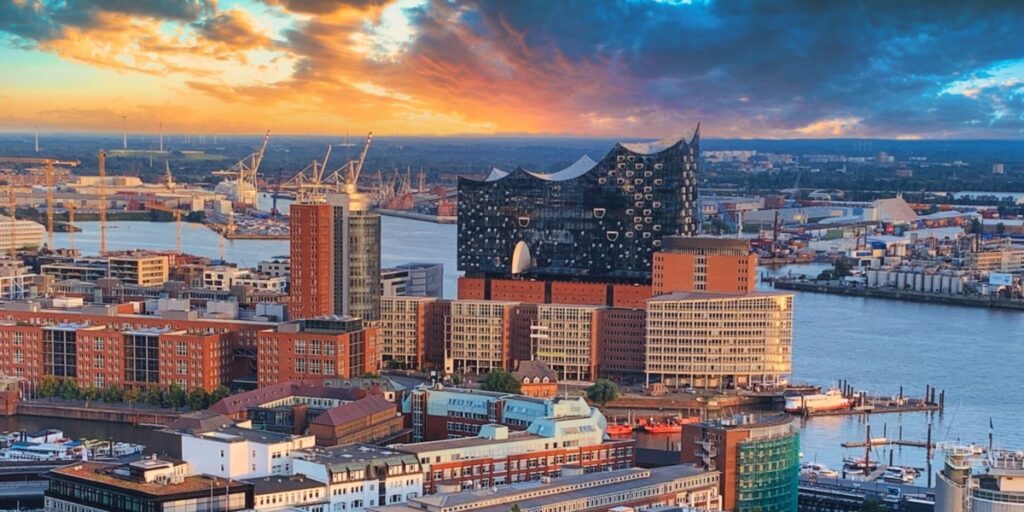
24 Hours in Hamburg – Itinerary, Map & Travel Tips
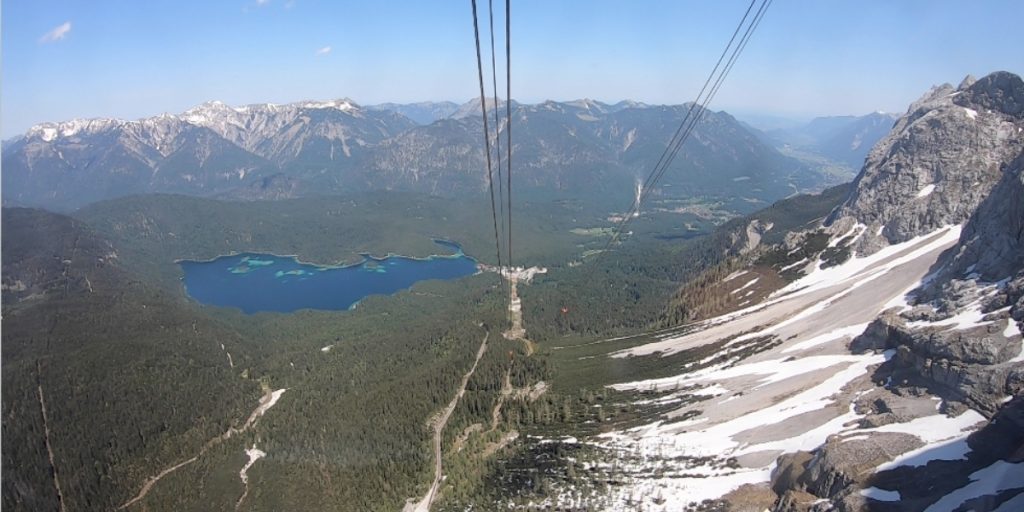
Visit Zugspitze Germany – Find Out How!
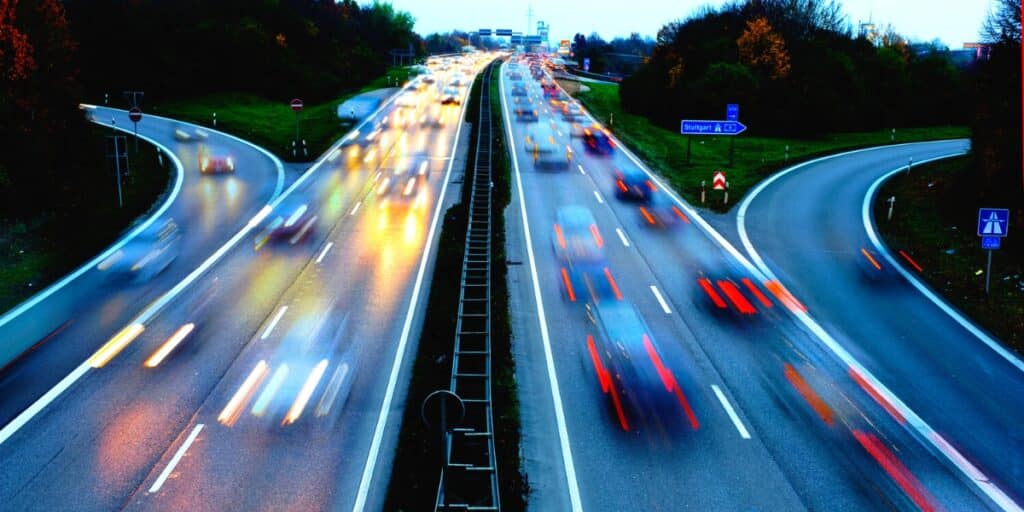
Driving from UK to Germany: Best Routes, Costs & Tips
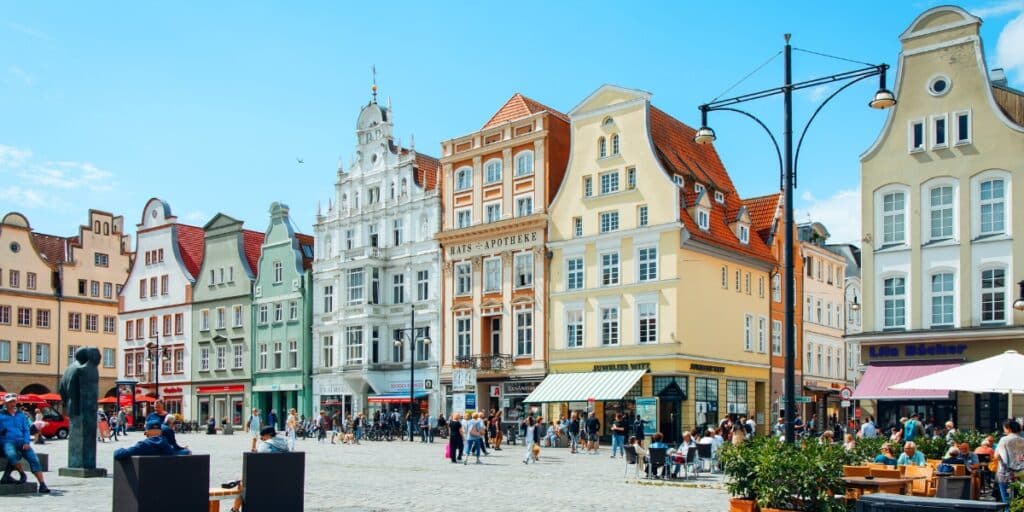
Beautiful Cities in Germany: 27 Picturesque Cities to Visit
The romantic road.
Explored by Carolyn from Holidays to Europe
Wurzburg – Weikersheim – Rothenberg – Dinkelsbühl – Augsburg – Fussen
- Distance 340km
- Drive Time 5 hours
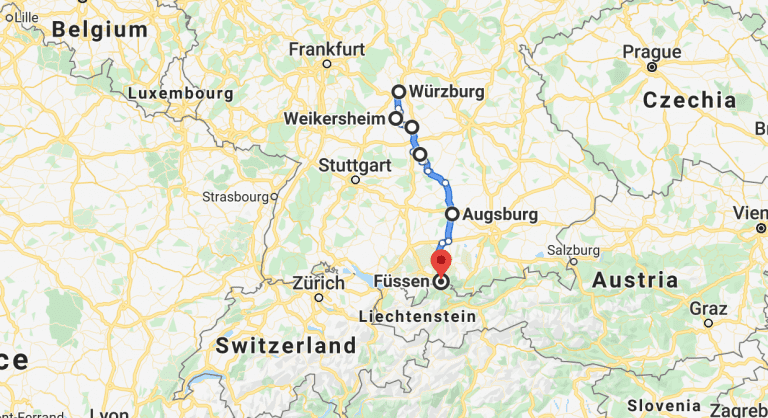
One of the best southern Germany road trips is along the scenic route known as the Romantic Road or Romantische Strasse. This Bavaria road trip stretches for 340km from Wurzburg to Fussen, the route has many highlights and passes through some of Germany’s prettiest landscapes and most fairy tale towns and villages.
Whilst you could travel this entire Bavaria itinerary in one or two days, to make the most of your Romantic Road drive , I suggest you allow at least 5 days in Bavaria, which will give you the chance to stop and explore many of the 29 towns along the route, of which the best six are listed above.
The first stop on Germany’s Romantic Road is Wurzburg, an attractive city that was almost totally destroyed in WW2. Highlights include the Marienberg Fortress, Wurzburg Cathedral, the Old Main Bridge (which crosses the River Main), and the stunning UNESCO World Heritage listed Wurzburg Residence. Wurzburg and the Franconia region are also well-known for their wines.
You’ll see vines planted in front of the Marienberg Fortress and in the surrounding countryside, so be sure to sample the local drop.
After a couple of days in Wurzburg, head south to the fairytale town of Rothenburg ob der Tauber, one of the most beautiful places in Germany.
I recommend you stop in the charming town of Weikersheim en route, there’s a beautiful castle you can visit and a small but very pretty old town. In Rothenburg, you’ll see why visitors flock here from all over the world.
The brightly painted timbered houses that line the cobbled streets and the medieval city walls with their watchtowers, ooze romanticism and entice people on day trips from all over southern Germany.
Other highlights include St. Jacob’s Cathedral, the castle gardens, the views from the tower of City Hall and the Kathe Wohlfahrt Christmas Store and the German Christmas Museum.
With numerous nearby towns and villages worth a visit, too, you could easily fill three days in Rothenburg ob der Tauber. Next, drive further south to your final stop at Fussen.
You’ll want to stop at Wies to visit the Wieskirche, a small baroque church with an impressive interior that is UNESCO listed.
In Fussen, explore the old town and head to Schwangau to visit Germany’s most famous schloss , Neuschwanstein Castle, built by mad King Ludwig. If you have a few extra days, enjoy some city life by heading to Munich, where you’ll find fantastic Bavarian culture and a lively social scene.
Base yourself here for a few days and enjoy some of the day trips from Munich on offer, to experience the best of the surrounding landscapes and attractions. We think this could well be the best road trip in Germany.
RELATED POST: Romantic Road Germany: Itinerary, Map & Tips
Wurzburg ⇒ Hotel Grüner Baum for its great location, traditional Franconian decor, and outstanding breakfast.
Rothenburg ⇒ Hotel Herrnschloesschen for its gorgeous and unique decor, fantastic restaurant, and beautiful garden.
Fussen ⇒ Hotel Das Rübezahl for a real treat. This luxury hotel has amazing views across the Alps and both Neuschwanstein and Hohenschwangau castles. There is also a fantastic spa and restaurant, making this the perfect hotel to end your German road trip.
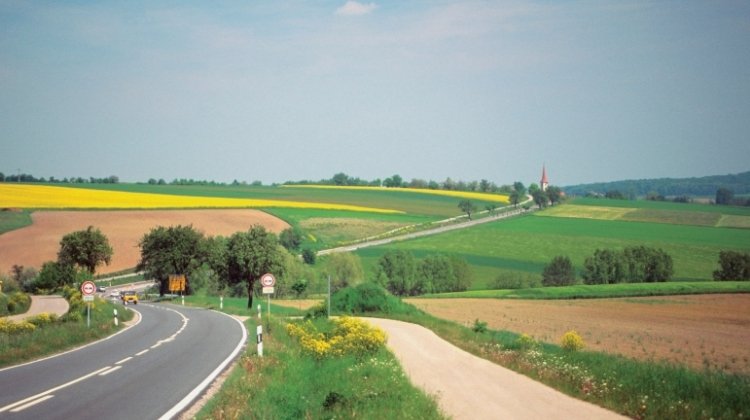
Don’t forget your road trip essentials! Our free road trip checklists help you remember everything, including road trip snacks , podcasts and road trip songs for the journey!
The Castle Circuit
Explored by Becki from Meet Me in Departures
Koln – Frankfurt – Mespellbrunn Castle – Stuttgart – Bad Wildbad – Heidelberg – Koblenz – Eltz Castle – Rheinstein Castle – Cochem Castle – Köln
- Distance 950km
- Duration 3-5 days
- Drive Time 13 hours
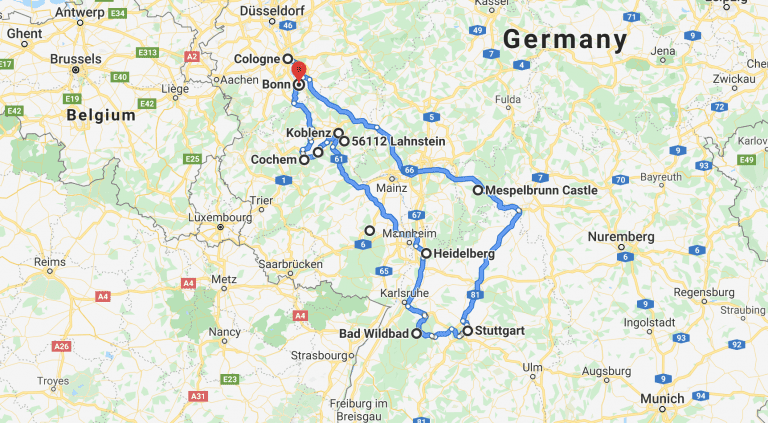
This south Germany itinerary covers a whole mix of destinations in a fabulous circuit, visiting some of Germany’s best castles on the route. Starting and finishing in the graceful city of Cologne (Koln in Germany) this road trip covers the southwest of the country.
It takes you south as far as Stuttgart, before circling back north towards the Mosel Valley. To make the most out of this road trip, I suggest three to four days, which will give you time to enjoy the castles as well as the wine in the Rhine region; perfect for a long weekend.
This part of the country is one of the best places to visit in Germany and you’ll get to see some of Germany’s prettiest castles, the stunning and verdant forests, the Rhine river, as well as a number of picturesque cobbled towns. Stay off the autobahns for the best driving, through beautiful landscapes and scenery.
Start your castle road trip in Koln, making sure to visit the simply stunning cathedral, and head southeast towards Frankfurt. Spend some time in the altstadt wandering around the pretty and atmospheric streets.
From here head towards Mespellbrunn Castle. It’s located pretty much in the middle of nowhere, however, it’s a stunning castle, which looks a lot like the Sleeping Beauty tower, located on a lake.
From Mespellbrunn Castle, keep heading southeast towards Stuttgart, a beautiful city full of green and open spaces. Be sure to spend plenty of time here exploring the town and its elegant buildings.
It’s worth stopping overnight and taking advantage of the fantastic restaurants, bars and beer gardens which line the narrow cobblestone streets of the old town.
From Stuttgart, start to head back north-west. Spend time visiting the lovely Bad Wildbad in the Black Forest and maybe indulge yourself in one of the many thermal baths there.
Head for historic Heidelberg and spend some time admiring and visiting the imposing Heidelberg Castle before crossing the wide river Neckar on the famous old bridge. This is another great town for an overnight stay.
Stop by the pretty and very German town of Koblenz, before heading to Eltz Castle. If you’re looking for a quintessential fairytale castle, then Berg Eltz is it! When you’re done swooning over Eltz, head to the small complex of Rheinstein Castle high on the banks of the Rhine (or Rhein in Germany) river.
Make for your last stop in Cochem on the gorgeous Moselle, and the impressive Cochem Castle. Stay for the night and try some of the delicious wine produced in this region or take a guided tour of a vineyard with a wine tasting.
This is a fully packed itinerary covering all the best bits of Germany. I’m sure you’ll agree, this makes a fantastic German road trip!
RELATED POST: 18 Magical Castles in Germany to Add to Your Bucket List
Koln ⇒ Hotel Lyskirchen for its ideal old town location, boutique vibe and modern rooms.
Bad Wildbad ⇒ Mokni’s Palais Hotel and Spa for some of that thermal action, as well as old-fashioned elegance and service.
Heidelberg ⇒ Ninetynine Hotel Heidelberg City for funky and modern design, super-comfortable beds and a lively, sociable bar.
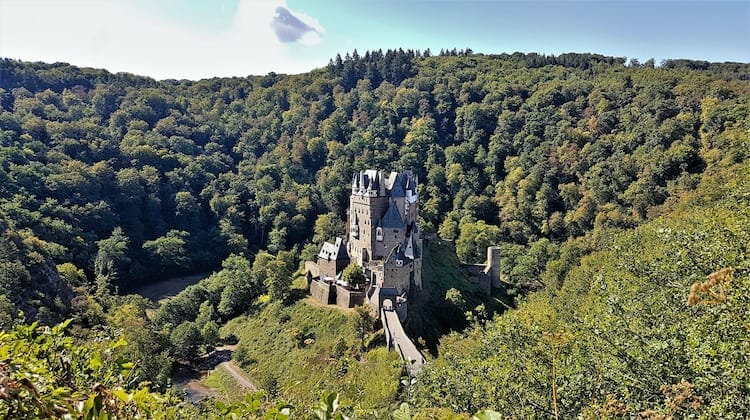
Looking for the best SIM card deals in Europe for your trip? Check out our guide to the best data SIMs in Europe and get the best deal for your trip to Germany.
The German Alpine Road
Lindau – bad hindelang – pfronten – füssen – oberammergau – garmisch-partenkirchen – bad tölz – rottach-egern – oberaudorf – aschau im chiemgau – reit im winkl – berchtesgaden.
- Distance 450km
- Duration 7-10 days
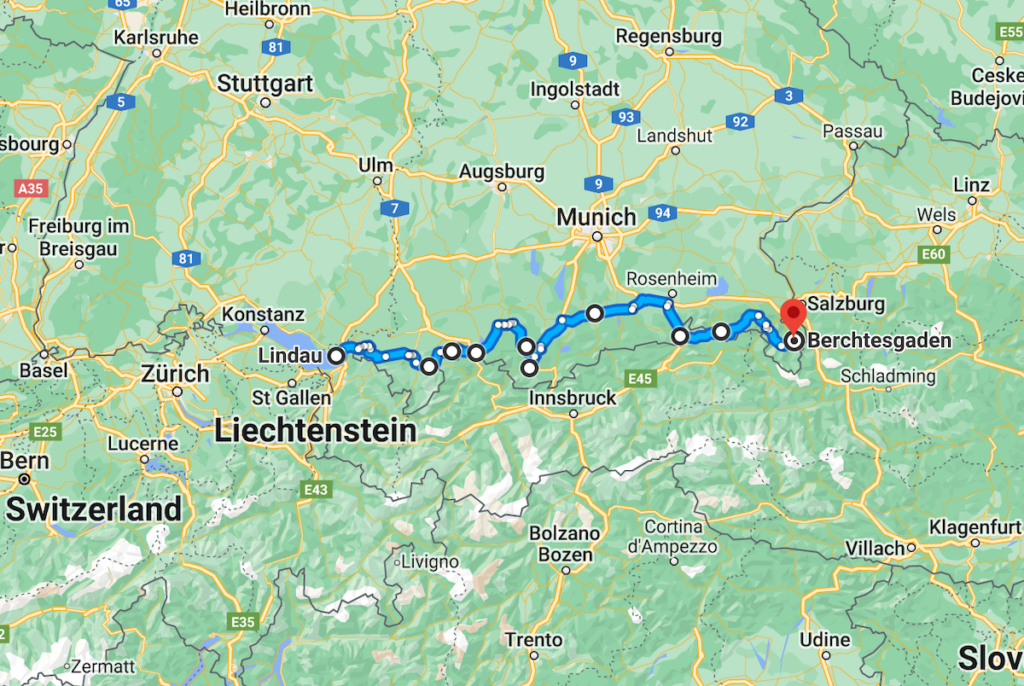
Starting at Lake Constance (Bodensee) and winding its way through the diverse and spectacular Bavarian landscape to Lake Koningssee, following the Alps from west to east, the Deutsche Alpenstrasse is simply spectacular and has to be one of the most scenic road trips in Germany.
On this south Germany road trip, the oldest tourist route in Germany, you’ll explore picture-perfect towns, alpine lakes and meadows, historic castles, and fantastic driving roads, perfect for whatever your means of transport.
Starting in the pretty harbor town of Lindau on Lake Constance, take the twisting road of the Rohrbach ascent into the Allgäu peaks, for spectacular views and the Scheidegg waterfalls in the Rohrach Gorge.
Continue through Oberstaufen, stopping for a dip in the cold and clear waters of Grosser Alpsee, to the traditional German town of Immenstadt, before crossing the Oberjoch Pass. With 106 bends, this is one of the most scenic and exciting drives of the whole route – make sure you allow enough time to stop for photos!
As you continue east, you’ll step into the fairytale world of King Ludwig II on a tour of the castles of Neuschwanstein and Hohenschwangau and the Museum of the Bavarian Kings. Three lakes on this part of the route – Weissensee, Hopfensee, and Forggensee – offer gorgeous scenery.
Upper Bavaria, the land of drama, adventure, and extreme sports is next on the route. Here you can explore the summit of the Zugspitze, Germany’s highest mountain, take in Linderhof Palace, swim in the beautiful Eibsee, and discover the many intricate Baroque churches and monasteries, like the Church of Wies. Oberammergau, home of the famous ten yearly Oberammergau Passion Play , is also in this region and well worth visiting.
Fancy a swim? The next part of the route runs through the Tölzer Land, beside Lake Walchensee, across the fabulous Kesselberg Pass, and on to Lake Kochelsee. After Benediktbeuern with its abbey, Bad Heilbrunn, Bad Tölz, and Lenggries, the route climbs to the Sylvenstein reservoir, where you’ll have fantastic views.
The next section of the route in the Tegernsee and Schliersee region sees you driving through Rottach-Egern, Tegernsee, Schliersee, and Bayrischzell, known for their restaurants and cafés that provide Bavarian hospitality and delicious local food and drink for you to sample. As you continue on, the road meanders through the mountains to Chiemsee, and panoramic views are guaranteed.
The German Alpine Route saves the best for last – crossing the 868m high Schwarzbachwacht Pass into the incredible landscape of the Berchtesgaden Alps and Konigsee, widely thought to be the most stunning lake in Germany.
RELATED POST: Deutsche Alpenstrasse: Route, Map & Highlights
Fussen ⇒ Hotel Sonne for its wonderful old town location, local cuisine, and contemporary decor.
Bad Tolz ⇒ Hotel am Wald for its wellness area, panoramic views, and cozy rooms.
Berchtesgaden ⇒ Alpenhotel Fischer for its fabulous spa, out-of-town location, and family hospitality.
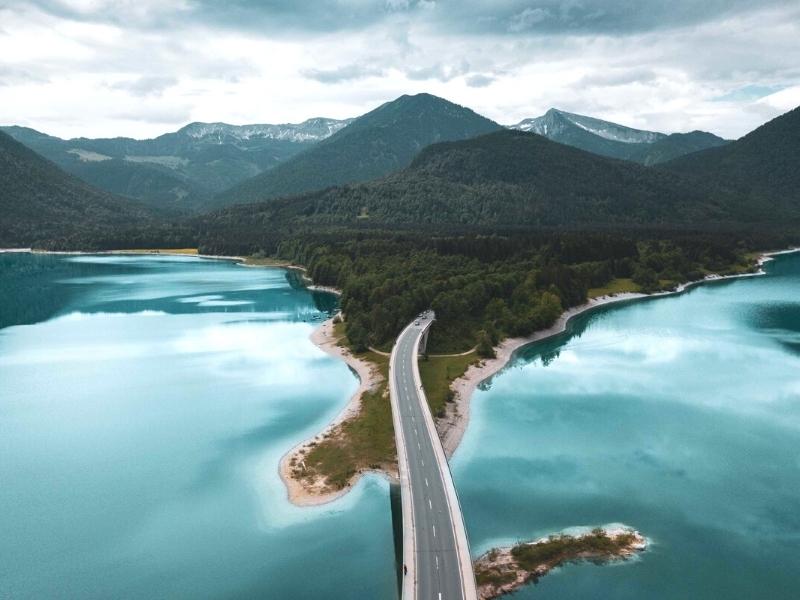
Want to plan your own road tri p? Get our step-by-step road trip planning guide to help you organize the perfect trip, or check out our favorite Europe road trips for ideas and inspiration!
Iconic German Cities
Frankfurt – munich – cologne – munster – hanover – frankfurt.
- Distance 1700km
- Duration 10-14 days
- Drive Time 24 hours
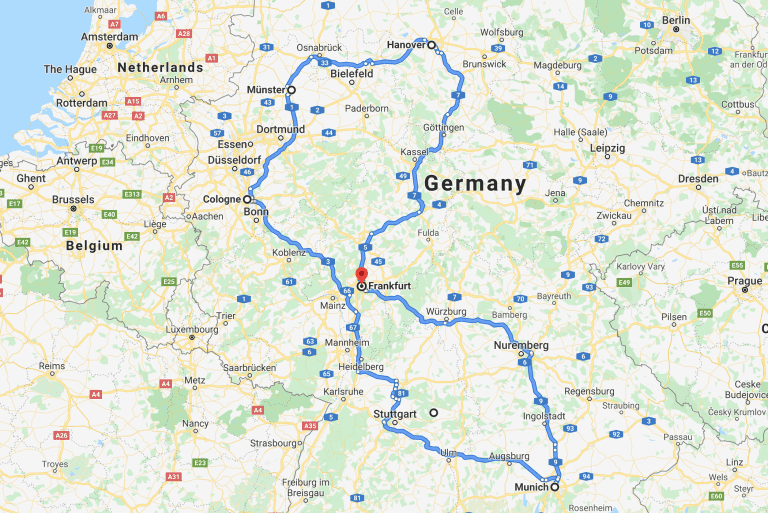
If you really can’t decide which road trip to take and you have a few weeks. then why not consider taking a driving tour of Germany, hopping between some of Germany’s most historic and beautiful cities, and taking in elements of all our road trips on the way?
This road trip route will take you past or in close proximity to some of the most beautiful places in Germany including fairy tale castles and towns, famous landmarks, stunning rivers, and wine regions.
You’ll drive on fantastic roads and if you choose not to use the autobahns, you’ll enjoy a relaxed pace and be able to enjoy the ever-changing scenery and small historic towns of this surprisingly gorgeous country.
If you’re road tripping Germany in winter, you’ll love the clear crips days, frosty landscapes and of course, the traditional Christmas markets that the country is famous for. Fairy lights, gluhwein, traditional artisan gifts, and hearty, warming local food will make your winter road in Germany really memorable.
Don’t forget Germany’s recent history either. This route will take you close to both Dachau and Bergen Belsen concentration camps, which make for harrowing visits that nevertheless should be taken, lest we forget the past, which must never be repeated.
You’ll also find the opportunity to tour the top car museums of BMW in Munich and Porche and Mercedes in Stuttgart. Why not test yourself and take a drive around the famous Nurburgring on your way past?
If you are lucky enough to have three weeks or longer, then add the eclectic and fascinating city of Berlin to the mix, or head south from Munich for the incredible Deutsche Alpenstrasse, or German Alpine Road, one of the most scenic drives in Germany.
Where to Stay – Our Top German Hotels
These are luxurious, treat-yourself hotels, known for their sumptuous decor, opulent furnishings, and outstanding service.
Frankfurt ⇒ Hotel Villa Kennedy for its incredibly gorgeous rooms, comprehensive spa, and superb, discreet service.
Munich ⇒ Hotel Vier Jahreszeiten Kempinski for its high-end location on the fashionable Maximilianstrasse, architectural grandeur, and first-class service.
Koln ⇒ Excelsior Hotel Ernst am Dom for its fabulous cathedral location, love of tradition, and impeccable service.
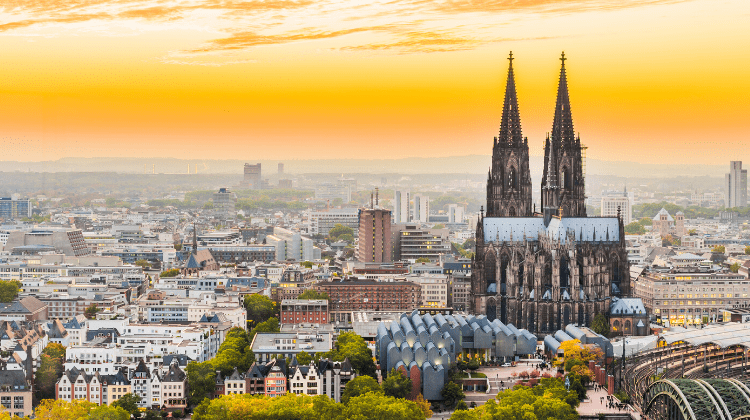
German Road Trip Resources
Here are the websites and services we personally use and recommend for traveling in Germany.
- Search for affordable flights to Germany with Skyscanner
- Search for availability and book hotels and accommodation in Germany with Booking.com
- Find and book the best campsites in Germany with Eurocampings
- Book the cheapest and most reliable hire cars in Germany with Rentalcars.com
- Find and hire your perfect motorhome or campervan with Motorhome Republic
- Get highly rated, reliable, and trustworthy travel insurance with True Traveller
- Check if you need a visa and arrange your documents with Visagov
Tips for Driving in Germany
The roads in Germany are well maintained, the autobahns are toll-free and there are excellent regional and minor roads with great services for drivers, making Germany a fantastic place to road trip.
Contrary to popular belief though, there are speed limits on the autobahn, and many sections have limits between 120km/h (75mph) and 110km/h (68mph) or lower, especially in urban areas.
Whether you’re traveling in your own vehicle or flying in and renting a car, you need to follow these rules when you drive and travel in Germany;
- You must have at least three months remaining on your passport (issued in the past ten years) at your intended date of departure from Germany.
- You must have at least 3rd party insurance for your vehicle.
- Citizens of non-EU third countries may require an IDP, you can check here .
- It is compulsory to carry a warning triangle, reflective jacket (for the driver and all passengers), spare wheel, and the tools to change a wheel or a tire repair kit.
- If you wear glasses you must carry a spare pair.
- You should carry a first aid kit, but this is only compulsory for four-wheeled vehicles registered in Germany).
- Germany introduced regulations in 2010 requiring all passenger cars and motorbikes to be fitted with winter or all-season tires in wintry conditions.
RELATED POST: Driving in Europe – Everything You Need to Know
Are you looking for more road trip inspiration? Check out these top posts…
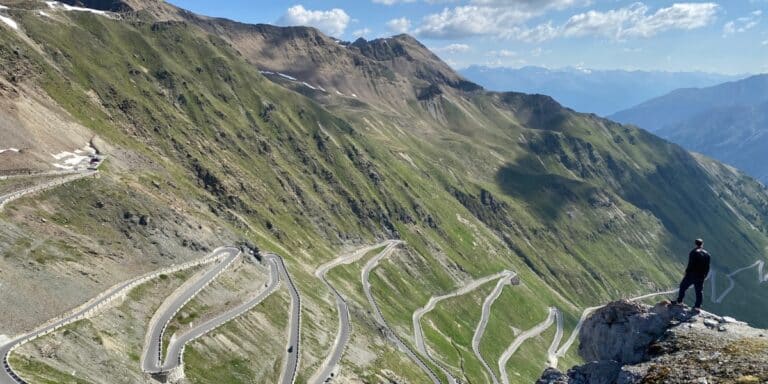
Stelvio Pass: The Best Mountain Road in Italy?
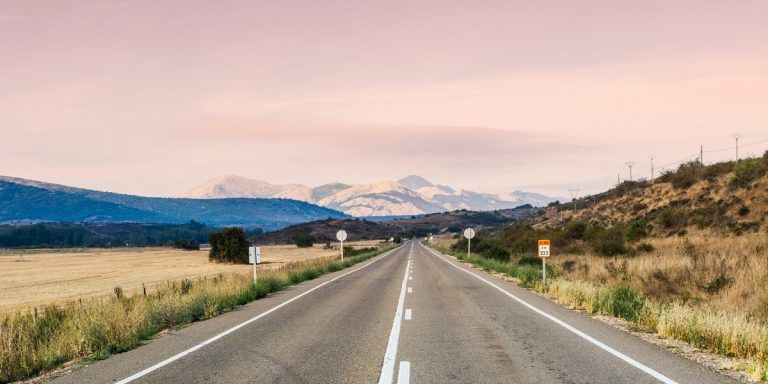
Spain Road Trip: 8 Amazing Routes for an Epic Trip
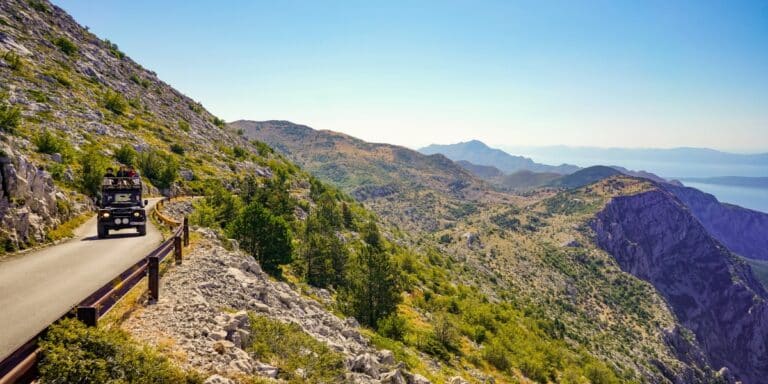
Croatia Road Trips: Five Incredible Routes
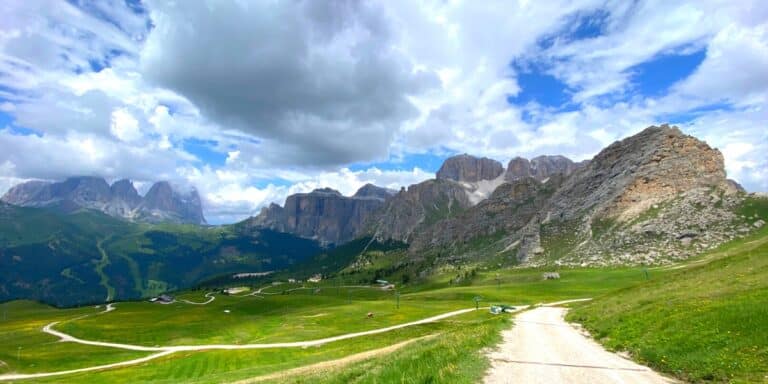
Dolomites Road Trip: Explore the Best of Northern Italy
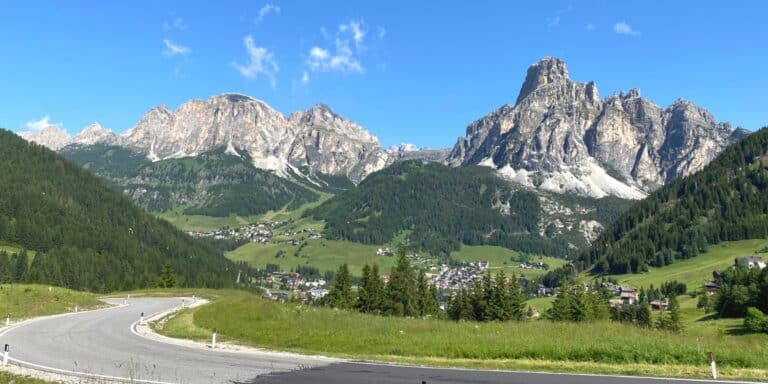
Great Dolomites Road: Absolutely Everything You Need to Know!
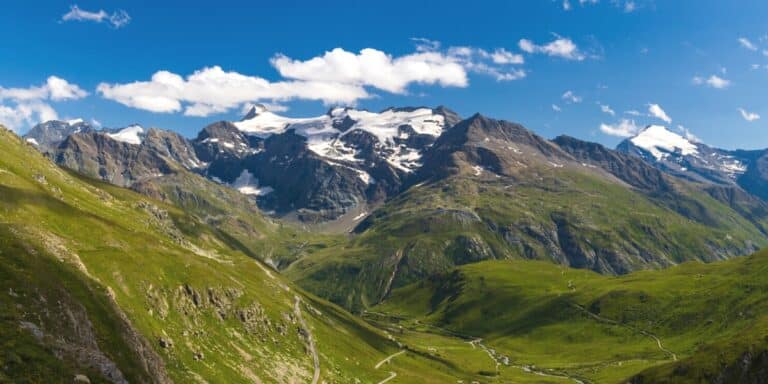
Route des Grandes Alpes: An Epic French Road Trip
Love it pin it.
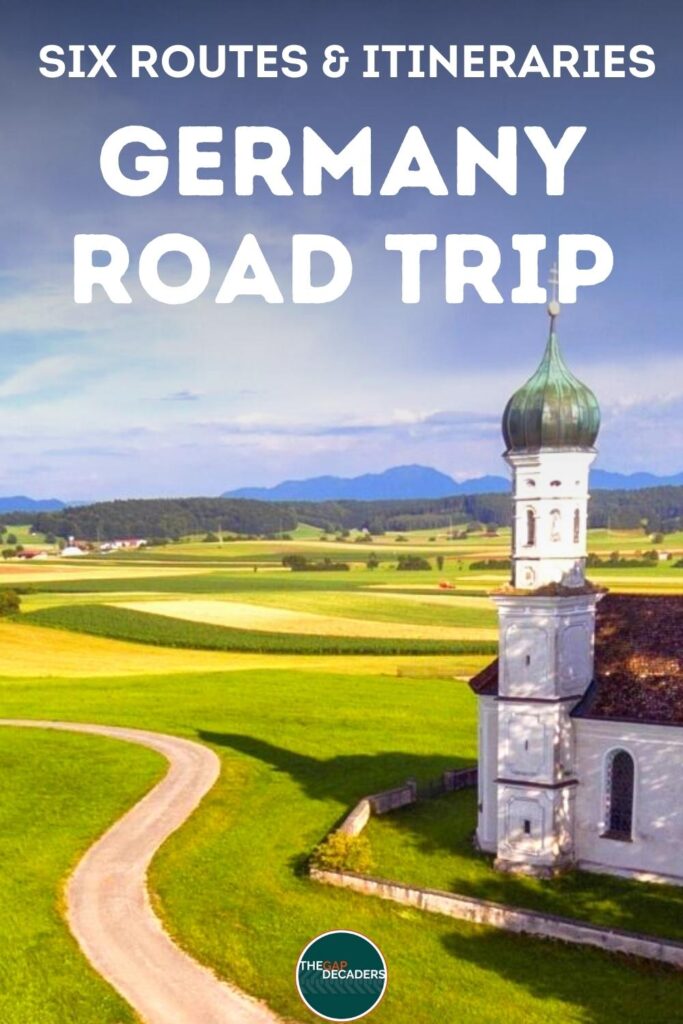

Navigate forward to interact with the calendar and select a date. Press the question mark key to get the keyboard shortcuts for changing dates.
Navigate backward to interact with the calendar and select a date. Press the question mark key to get the keyboard shortcuts for changing dates.
Berlin Trip Planner
Top attractions in berlin.

Other notable attractions

Top searches in Berlin
Popular road trips from berlin, all road trips from berlin.
- Berlin to London drive
- Berlin to Prague drive
- Berlin to Paris drive
- Berlin to Amsterdam drive
- Berlin to Rome drive
- Berlin to Vienna drive
- Berlin to Barcelona drive
- Berlin to Copenhagen drive
- Berlin to Budapest drive
- Berlin to Hamburg drive
- Berlin to Florence drive
- Berlin to Munich drive
- Berlin to Milan drive
- Berlin to Venice drive
- Berlin to Krakow drive
- Berlin to Brussels drive
- Berlin to Madrid drive
- Berlin to Edinburgh drive
- Berlin to Dresden drive
- Berlin to Dublin drive
- Berlin to Warsaw drive
- Berlin to Istanbul drive
- Berlin to Stockholm drive
- Berlin to Lisbon drive
- Berlin to St. Petersburg drive
- Berlin to Turin drive
- Berlin to Bruges drive
- Berlin to Cologne drive
- Berlin to Moscow drive
Explore nearby places
- Grossziethen
- Ahrensfelde
- Kleinmachnow
- Hennigsdorf
- Hohen Neuendorf
- Hoppegarten
- Grossbeeren
- Gross Glienicke
- Birkenwerder
- Blankenfelde
- Gross Kienitz
- Altlandsberg
- Fredersdorf
- Woltersdorf
- Ludwigsfelde
- Petershagen
All related maps of Berlin
- Map of Berlin
- Map of Grossziethen
- Map of Ahrensfelde
- Map of Teltow
- Map of Muhlenbeck
- Map of Schonefeld
- Map of Kleinmachnow
- Map of Mahlow
- Map of Hennigsdorf
- Map of Hohen Neuendorf
- Map of Stahnsdorf
- Map of Hoppegarten
- Map of Grossbeeren
- Map of Neuenhagen
- Map of Schoneiche
- Map of Gross Glienicke
- Map of Birkenwerder
- Map of Blankenfelde
- Map of Falkensee
- Map of Gross Kienitz
- Map of Bernau
- Map of Altlandsberg
- Map of Dallgow
- Map of Fredersdorf
- Map of Velten
- Map of Woltersdorf
- Map of Werneuchen
- Map of Ludwigsfelde
- Map of Rudersdorf
- Map of Erkner
- Map of Petershagen
Berlin throughout the year
- Berlin in January
- Berlin in February
- Berlin in March
- Berlin in April
- Berlin in May
- Berlin in June
- Berlin in July
- Berlin in August
- Berlin in September
- Berlin in October
- Berlin in November
- Berlin in December
Looking for day-by-day itineraries in Berlin?
Get inspired for your trip to Berlin with our curated itineraries that are jam-packed with popular attractions everyday! Check them out here:
- 1-Day Berlin Itinerary
- 2-Day Berlin Itinerary
- 3-Day Berlin Itinerary
- 4-Day Berlin Itinerary
- 5-Day Berlin Itinerary
Q&A about Berlin
Weather in berlin, add places from guides with 1 click, collaborate with friends in real time, import flight and hotel reservations, expense tracking and splitting, checklists for anything, get personalized suggestions.
4.9 on App Store, 4.7 on Google Play
- Rhineland-Palatinate Tourism
- Rhineland-Palatinate Hotels
- Rhineland-Palatinate Bed and Breakfast
- Rhineland-Palatinate Vacation Rentals
- Flights to Rhineland-Palatinate
- Rhineland-Palatinate Restaurants
- Things to Do in Rhineland-Palatinate
- Rhineland-Palatinate Travel Forum
- Rhineland-Palatinate Photos
- All Rhineland-Palatinate Hotels
- Rhineland-Palatinate Hotel Deals
- Last Minute Hotels in Rhineland-Palatinate
- Rhineland-Palatinate
- Things to Do
- Restaurants
- Vacation Rentals
- Travel Stories
- Rental Cars
- Add a Place
- Travel Forum
- Travelers' Choice
- Help Center
First time in Germany Planning - Rhineland-Palatinate Forum
- Europe
- Germany
- Rhineland-Palatinate
First time in Germany Planning
- United States Forums
- Europe Forums
- Canada Forums
- Asia Forums
- Central America Forums
- Africa Forums
- Caribbean Forums
- Mexico Forums
- South Pacific Forums
- South America Forums
- Middle East Forums
- Honeymoons and Romance
- Business Travel
- Train Travel
- Traveling With Disabilities
- Tripadvisor Support
- Solo Travel
- Bargain Travel
- Timeshares / Vacation Rentals
- Germany forums
- Rhineland-Palatinate forum

1) Rüdesheim or Bingen
2) Heidgelberg
3) Baden-Baden
We will be flying into Frankfurt early in the morning around 7am. We will pick up rental car at the airport. Some key interests are:
1) KD day cruise alone Rhine River to see castle
2) Visit one or two castles - need recommendations as our preference is to skip hiking. We can either drive up or get a Taxi
3) Two small town interested are Bacharach and Oberwesel
4) One day in black forest area.
I would like to get advise in the Rhineland area as I am not sure if I should consider adding one more night.
15 replies to this topic

With one night on the Rhine:
Day 1: Catch the 11:15 boat in Bingen, arrive St. Goar at around 13:00. After that, catch a train to Oberwesel (5 minutes from St. Goar) and later another train to Bacharach (5 minutes further to the south) to do your sightseeing in those towns. Both towns offer easy, mostly flat walks. After a pm meal in Bacharach, return by train from Bacharach to Bingen in the evening whenever you like. (Staying in Bingen, on the same side of the river as Bacharach and Oberwesel, will eliminate the need to cross the river later on.)
I have no particular advice for Heidelberg and Baden-Baden other than to say that neither is a Black Forest town and that the Black Forest would likely be more interesting on the whole than those two towns are, all things considered. I would book in the Black Forest instead.

I would plan a more relaxed pace and fewer destinations if I could not add more time.
Thanks Russ for your expert advices.
If your visit is in mid-June (14-16) you might consider a visit to Horb am Neckar on the eastern edge of the Black Forest for their re-enactments of medieval times. https://www.stuttgartcitizen.com/featured-stories/relive-horbs-medieval-past-during-knights-spectacular/ and https://www.horb.de/ritterspiele This is one of the Black Forest's premiere towns, medieval and going up a ridgeline from a river. It is also the only place outside of Bavaria to have been voted Germany's best beer garden.
In this neck of the woods are also two fairytale-like castles, Burg Hohenzollern- http://www.burg-hohenzollern.com and Schloss Lichtenstein- http://www.schloss-lichtenstein.de as well as Germany's largest perfectly preserved palace in Ludwigsburg- https://www.schloss-ludwigsburg.de/en/ with all original buildings and fixtures and extensive gardens, 2 days to see it all. Then there's Germany's #1 rated museum in Stuttgart, the Mercedes Benz one- https://www.mercedes-benz.com/en/art-and-culture/museum/ , which is loved by all visitors regardless of their age, gender, or whether anyone particularly likes cars or not.
I can drop Heidelberg and will look into your suggestions and plan accordingly.
But you can do the whirlwind-thing that you first came up with if you wish, maybe with a twist or two. A nice Black Forest base town is the old walled town of Gengenbach. I could see doing the 3-hr drive from Braubach to Gengenbach with a half-day stopover in Baden-Baden (assuming your group is committed to B-B for whatever reasons.) Then you'd have 2 nights and 2 days for the Black Forest, a very large area with lots of nice destinations (perhaps including a visit to Horb if that medieval festival interests you.)
Have you already pinned down Black Forest destinations? From Gengenbach you'd be very close to the excellent Vogtsbauernhof museum:
https://www.tripadvisor.com/Attraction_Review-g1825958-d190955-Reviews-Schwarzwalder_Freilichtmuseum_Vogtsbauernhof-Gutach_im_Schwarzwald_Baden_Wurttemb.html
Gengenbach: https://www.orte-bw.de/grafik/uploads/10557_2010_1040.JPG
Schiltach is not far either; Horb and Baiersbronn (food enthusiasts?) are somewhat further afield but reachable.
Schiltach: https://www.orte-bw.de/grafik/uploads/12503_2010_1040.JPG
Area map with Gengenbach, Schiltach, Baiersbronn, Horb:
https://www.weather-forecast.com/locationmaps/Baiersbronn.10.gif
Nothing is committed yet and your suggestions is well received.
Also key reasons for Baden-Baden are
2) Take train to Bern Switzerland
Gengenbach > Freiburg = 55 km.
Baden-Baden > Freiburg = 105 km.
- First time in Germany Planning yesterday
- Cycling along the Rhine Apr 20, 2024
- New train question Apr 19, 2024
- Looking for a Rhine River cruise (day trip) from Mainz Apr 18, 2024
- Train question Apr 14, 2024
- Rhine river cruise with castle hotel? Apr 14, 2024
- Public transportation between Mainz and Frankfurt Apr 13, 2024
- Final itinerary check for April Mosel/Rhine trip Apr 07, 2024
- A few days in Rammstein Apr 04, 2024
- Trier Tour (City, Historical, Walking) Apr 04, 2024
- Need help with mid-April 2024 itinerary for Rhine/Mosel Apr 01, 2024
- 3 or 2 towns in one day? Apr 01, 2024
- Need help planning a few days along the Rhine, Sept 2024 Mar 31, 2024
- Shorts/Jeans/Slacks Mar 30, 2024
- Driving along the Rhine River from Koln 3 replies
- Rhine Valley Wine Tours 3 replies
- Rhine bike rental, k-d boat and other questions 9 replies
- Help me choose - Boppard or St. Goar ??? 5 replies
- Help with understanding the KD Rhine Tour Schedules 8 replies
- Frankfurt(M) Flughaten Regionalbf - Is this FRA Airport? 2 replies
- Cochem & Oberwesel train stations 9 replies
- Rhine Cruise on the K-D line 13 replies
- Frankfurt airport - Bacharach-St. Goar cruise - Wuerzburg 8 replies
- Traveling in Germany with a Toddler. 4 replies
Rhineland-Palatinate Hotels and Places to Stay
- Share full article
Advertisement
Supported by
Germany’s Leader Walks a Fine Line in China
Chancellor Olaf Scholz tried to promote German business interests while delivering warnings from Europe about trade and geopolitical tensions.

By Alexandra Stevenson and Melissa Eddy
Chancellor Olaf Scholz of Germany tried to strike a delicate balance on a trip to China this week, promoting business ties with his country’s biggest trading partner while raising concerns over its surge of exports to Europe and its support for Russia.
Mr. Scholz met with China’s top leader, Xi Jinping, at the Diaoyutai State Guesthouse in Beijing on Tuesday, the culmination of a three-day visit with a delegation of German officials and business leaders. He also met with Premier Li Qiang as the two countries navigate relations strained by Russia’s war in Ukraine and China’s rivalry with the United States, Germany’s most important ally.
Throughout his trip, Mr. Scholz promoted the interests of German companies that are finding it increasingly hard to compete in China. And he conveyed growing concern in the European Union that the region’s market is becoming a dumping ground for Chinese goods produced at a loss .
But Mr. Scholz chose a conciliatory tone over a combative one in his opening remarks before sitting down with Mr. Xi on Tuesday morning, in a meeting that stretched over three hours and turned into a walk and lunch.
It was the German leader’s first visit to China since his government adopted a strategy last year that defined the Asian power as a “partner, competitor and systemic rival ,” calling on Germany to reduce its dependency on Chinese goods.
Germany’s economy shrank last year, and its weaknesses have exposed a reliance on China for growth. Energy prices have risen because of the war in Ukraine, which has been facilitated by Beijing’s support for the Kremlin. German companies have pushed for more access to China and complained that they face unfair competition .
The chancellor visited German companies with extensive investments in China and met with trade representatives and officials in the sprawling industrial metropolis of Chongqing in China’s southwest and in Shanghai and Beijing.
At a talk with a group of students in Shanghai on Monday, Mr. Scholz fielded a question from a student who planned to study in Germany this year, who said he was “really worried” because the country had partially legalized cannabis. “When you study in Berlin, you can run around the whole time and never meet anyone who does that,” the chancellor assured him.
But he also used the platform to push more serious messages about trade. “Competition must be fair,” Mr. Scholz told the students. “We want a level playing field,” he said.
Mr. Scholz’s trip was an example of the difficult dance that Germany is trying to do: maintaining economic ties with China while managing U.S. pressure to align itself more closely with Washington against Beijing.
In his meetings, Mr. Scholz highlighted Germany’s commitment to doing business with China, but he also warned that Beijing had to curb the flood of Chinese goods into Europe. At the same time, he expressed reservations about the European Union’s investigations into China’s use of subsidies for green technology industries, saying that any discussion about trade must be based on fairness.
“This must be done from a position of self-confident competitiveness and not from protectionist motives,” Mr. Scholz told reporters on Monday.
China’s manufacturing push in green sectors like electric cars and solar panels has touched off trade disputes with Europe and the United States, where such industries have also received government support. But with 5,000 German companies active in the Chinese market, Germany stands to lose more than many of its European partners would if Beijing were to retaliate against the European Union.
“If the E.U. goes too hard against China, we could expect countermeasures and this would be a catastrophe for us,” said Maximilian Butek, the executive director of the German Chamber of Commerce in China.
“For us it’s extremely important that the Chinese market remains open,” he said.
In his meeting with Mr. Xi, Mr. Scholz indicated that Russia’s war on Ukraine and its arms buildup were high on his agenda. “They directly affect our core interests. Indirectly, they damage the entire international order,” he said in opening remarks at the meeting, a transcript of which was provided by Mr. Scholz’s office.
Despite pressing the issue with Mr. Xi, he did not appear to win the commitment that he had sought from the Chinese leader to take part in an international conference for Ukraine planned in June. Germany had hoped that China could use its influence over Russia to help work toward a peace agreement.
Germany would also like China stop selling goods to Russia that have potential uses on the battlefield, and Mr. Scholz told reporters that he had brought up the issue in his meeting. “The point has been made,” he said. “There can be no misunderstanding about how we see things.”
China is hoping to drive a wedge between Europe and the United States by courting leaders such as Mr. Scholz. State media reports depicted his visit as demonstrating the strength of China’s relations with Europe, playing up its economic ties with Germany.
In his opening remarks to Mr. Scholz, Mr. Xi said cooperation between China and Germany, which have the second- and third-largest economies, was beneficial to the world, a remark that could be read as directed at those who have urged Berlin to distance itself from Beijing.
“The two countries should view and develop bilateral relations from a long-term and strategic perspective and work together to inject more stability and certainty into the world,” Mr. Xi told Mr. Scholz, emphasizing the importance of seeking “common ground.”
Beijing is sure to welcome the message that German businesses are committed to China. The Asian giant is trying to court foreign investment to reinvigorate its economy, which has faltered because of a housing slowdown. Some Western businesses and investors have also been rattled by Mr. Xi’s emphasis on national security, which they regard as making it riskier to operate in the country.
From China’s perspective, Germany may be its best hope of delaying or watering down any trade restrictions from Europe, said Noah Barkin, a senior adviser in the China practice at the Rhodium Group, a research firm.
German carmakers have invested billions of dollars in China, and much of their revenue comes from there. Many worry that if the European Commission imposes higher tariffs on Chinese exports, and Beijing retaliates, German businesses will suffer most.
Chinese officials “know that German companies are heavily invested and they use that politically to influence political decision making in Berlin,” Mr. Barkin said.
Germany’s biggest companies, including BMW, Mercedes-Benz and BASF, have large operations in China and strong, effective lobbies in Berlin, Mr. Barkin added. Executives from those companies, along with several others, traveled with Mr. Scholz to China.
“The supply chain in China is stuffed with German goods,” said Joerg Wuttke, a former president of the E.U. Chamber of Commerce in China. “If China has a price war with Germany, then no one will make money anymore.”
Mr. Scholz also brought along the German ministers for agriculture, the environment and transportation, officials who experts said would be particularly interested in working with China.
“You set an agenda with these three ministers, the tonality is overall a cooperative one, these are areas that we want to work on,” said Janka Oertel, director of the Asia Program at the European Council on Foreign Relations.
Chinese officials, for their part, have brushed off the European accusations of unfair trading practices, calling them groundless and an act of “ typical protectionism .” They have hinted that they could retaliate for any actions taken by the European Union, saying that China was “strongly dissatisfied with and firmly opposes” its investigations.
In an interview with the German newspaper Handelsblatt, Wu Ken, China’s ambassador to Germany, said the competitive edge of Chinese electric vehicles “relies on innovation, not subsidies.”
“The challenge faced by developed countries lies more in the fact that Chinese companies are more efficient,” the ambassador said.
Vivian Wang contributed reporting from Beijing and Zixu Wang from Hong Kong.
Alexandra Stevenson is the Shanghai bureau chief for The Times, reporting on China’s economy and society. More about Alexandra Stevenson
Melissa Eddy is based in Berlin and reports on Germany’s politics, businesses and its economy. More about Melissa Eddy

Germany Travel Planning Services
Feeling overwhelmed by all of the amazing places you could visit in Germany?
Wish you could have a Germany expert create a custom itinerary so you can make the most of your time abroad?
Or perhaps you’ve got an itinerary you’re excited about and could now use some expert input to take it from good to unforgettable ?
Here’s where my nearly 35 years of Germany travel, culture, and language expertise come in !
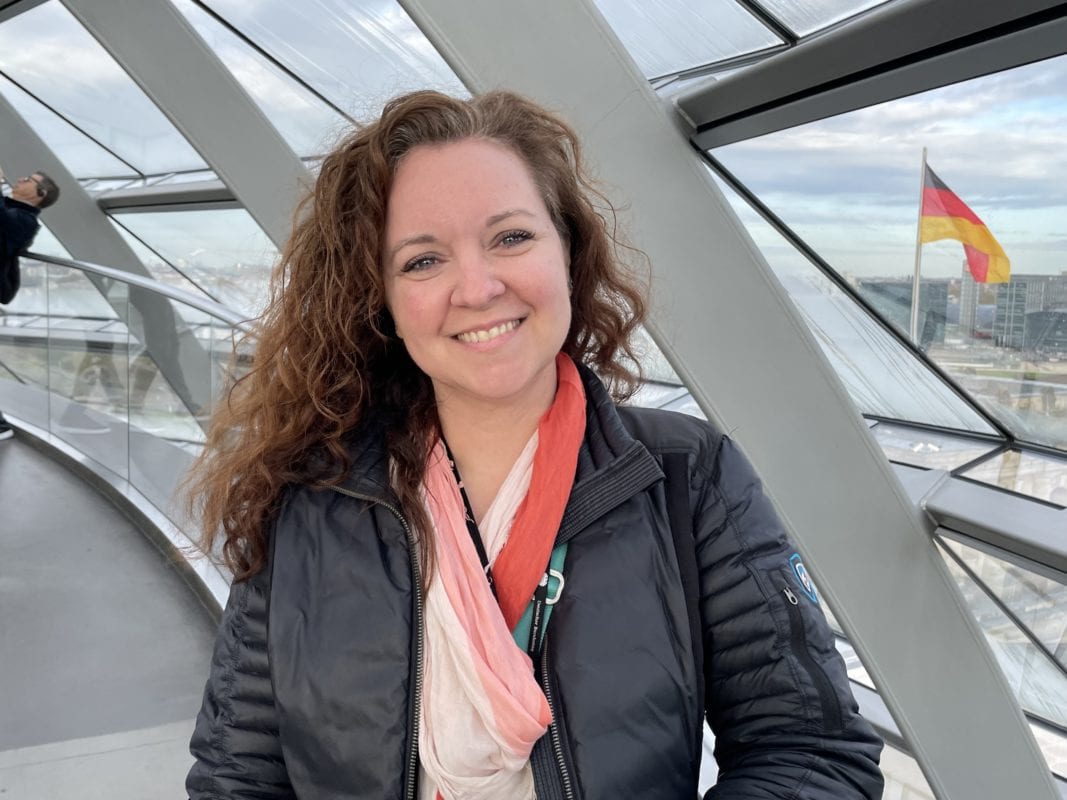
Hi, I’m Cate, your Germany Travel Planning Expert!
I not only have decades of experience traveling aaaaaaall over Germany, I’ve lived in several German cities, taught German in the US, prepared people to live and work in Germany, and even have a PhD in German Applied Linguistics. I know a lot about Germany!
I’ve helped hundreds of clients avoid the stress and overwhelm of planning an unforgettable trip to Germany. I’d love to help you, too.
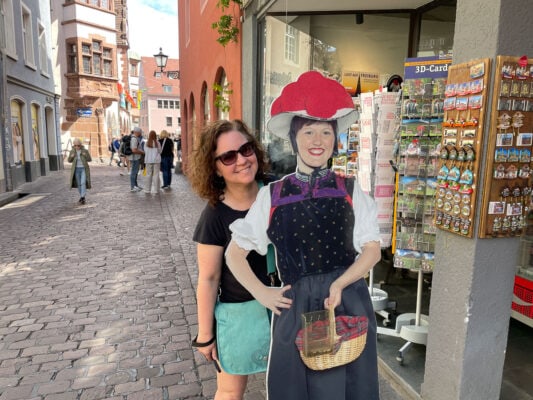
If you’re wondering about things like…
- Stick to Bavaria or can we fit in Berlin, too?
- Drive a rental car or take public transit?
- Is buying a rail pass a good deal or a waste of money?
- Is our itinerary setting us up for exhaustion…or FOMO (fear of missing out)?
- How can we get off the beaten path?
- Should we book tickets and tours before we leave or after we arrive?
- Which guided tours and day trips are worth the money? Or can we DIY them?
- What do we need to know about German culture to enjoy our trip?
- Can you take our ideas and create an itinerary for us?
We can help!
Our Travel Planning Services
CUSTOM ITINERARY Wish there was an easy way to turn your ideas into the trip of a lifetime? There is! With a custom, personalized day-by-day itinerary with hotels, activities, tours, and tips tailored to your travel style, dates, interests, and budget, your trip will be truly special and stress-free. Read more below or fill out our inquiry form here !
FULL ZOOM/PHONE CONSULT Looking for personalized advice and guidance as you create or refine your itinerary? Join me for a live Zoom meeting or phone call. I’ll help you craft the perfect overall itinerary for your dream trip to Germany. Read more below or book a Full Consult here!
VIDEO ITINERARY REVIEW Already have an itinerary planned but want to ensure it’s top-notch? Send me your itinerary and travel questions and I’ll record my review, providing you with valuable feedback and insider tips to make your trip even better. This option is perfect for those who need a little guidance but not a full consult. Read more below or book a video itinerary review here!
Itinerary Review
Get expert input so you can fine-tune your itinerary (recorded video review)
- If you’d like expert feedback on your itinerary and have a few travel questions you’d like answered – this is for you!
- I’ll review your itinerary and answer your travel questions via video recording
- You’ll get a link to watch your video review plus relevant follow-up links and resources about a week after I receive your itinerary
- Note: this is NOT a live meeting and does not include our Germany Travel Planner
- Space is limited!
“All the details mentioned by Cate and the suggestions made by her really helped me in refining my itinerary. Would highly recommend Cate!” – Linda
Full Consult
Meet with Cate to create or refine your overall itinerary (90 minute Zoom/phone meeting)
- I f you’re looking for personal advice and recommendations during a live meeting – this is for you!
- I’ll help you create an itinerary from scratch or focus and refine your existing itinerary
- You’ll get our booking cheatsheet and relevant follow-up links and resources the next day
- BONUS: immediate access to our digital Germany Travel Planner ($97 value) to use before & after your consult
- Price: $297
“Cate offered terrific suggestions, researched with us in real time, and helped us develop a plan we are super excited about. Thank you, Cate!” -Michelle
Custom Itinerary
Get a custom itinerary with hand-picked hotels, transportation & activities (custom day-by-day itinerary)
- If you’d like a custom day-by-day itinerary tailored to your interests, dates, budget and travel style – this is for you!
- Save time and stress by letting experts plan your trip of a lifetime
- We can help you get off the beaten path or take a unique approach to popular destinations
- You’ll get a custom, done-for-you daily itinerary tailored to your interests and budget
- You’ll also get booking links for hand-picked hotels, tours, activities, private guides, and more
- BONUS: immediate access to our digital Germany Travel Planner ($97 value)
- We can only do a couple of these per month so it’s important to get on our calendar as soon as possible!
- The price for custom itinerary planning depends on your trip length, number of travelers, etc
- Fill out our inquiry form here to get a quote for your trip !
“This is a great experience. We had no idea how to tackle our trip to Germany later this year. There are so many options. Cate and Aaron did a great job of listening and crafting an itinerary for our itinerary of 5.” – Ashay
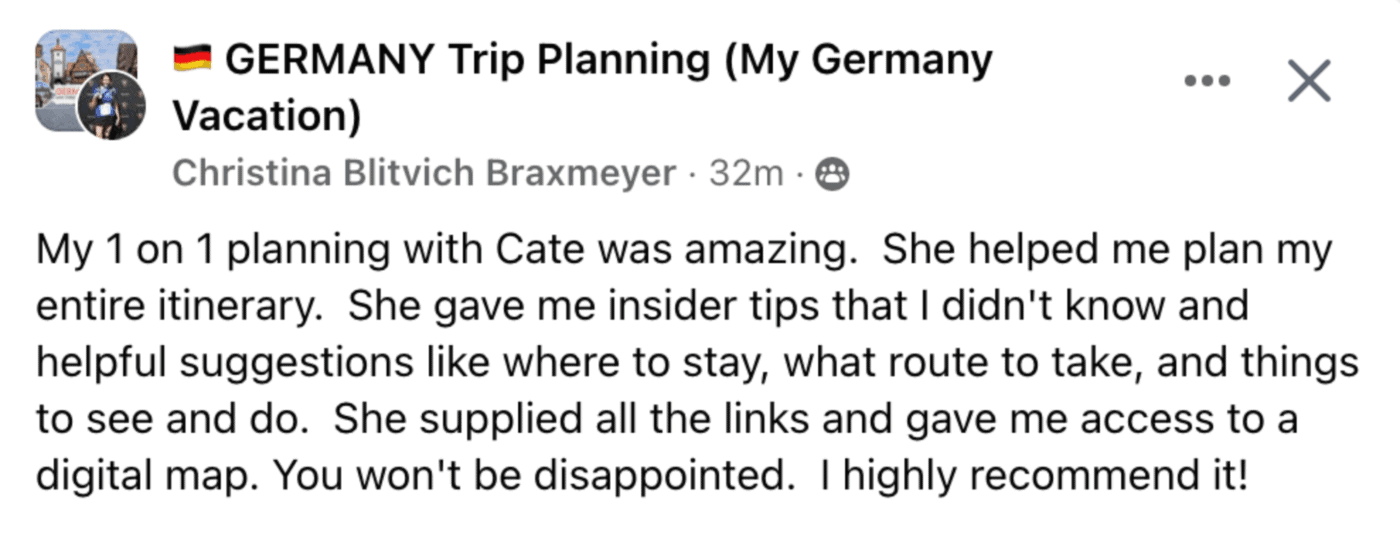
What’s Not Included?
Since we’re not travel agents, we cannot book anything on your behalf. But we can recommend the best booking sites for your trip, show you where and how to buy German train tickets, rail passes, etc. If you book a custom itinerary, we do the research for you and give you booking links right in your itinerary!
Terms & Conditions
- Payment in full is required before your consult or itinerary review.
- Full consult: if you need to reschedule your Zoom/phone consult, please let me know at least 24 hours in advance.
- If you do not show up to your live consult you are not entitled to reschedule or a refund.
- Video review: if you do not email/share your itinerary with me so I can review it, you are not entitled to reschedule or a refund.
- We do not offer refunds except in the case that I have to cancel your consult due to a personal emergency. If this happens, I will let you know with as much advance notice as possible so you can reschedule, or you can request a refund.


IMAGES
COMMENTS
Triptile is a unique Germany trip planner which was originally designed as a tool for travel experts, and now with its help, you can plan your perfect Germany vacation in as little as several clicks. Either you decide to create the program yourself using the professionally-assembled "building blocks" with top hotels, activities, and ...
Hi, we're Cate and Aaron, and we love helping people plan amazing trips to Germany. While Aaron has visited Germany several times (and is our chief rental car driver!), I lived there for 4+ years, have spent nearly 30 years of my life going back and forth between the US and Germany, and have traveled to all corners of the country.
The total driving time for this itinerary would be about 5 hours 30 minutes with a total distance of approx. 520 km. Of course, this can change depending on the route you are taking and the time of day you are travelling. Commuter traffic could add quite a bit of travel time to your journey. Day 1+2: Berlin.
4 If You Have More Than 10 Days in Germany. 5 Hamburg & Lübeck in Northern Germany. 6 Stuttgart & the Black Forest in Southeastern Germany. 7 Rhine Valley & Cologne in Central Germany. 8 Lake Constance (Bodensee) in Southern Germany. 9 The Romantic Road (Romantische Strasse) in Southern Germany.
With Wanderlog's mobile travel planner on Android and iOS, access and edit your trips wherever you go — even while offline. 4.9 on App Store, 4.7 on Google Play. Keep your places to visit, flight/hotel reservations, and day-by-day itineraries for your trip to Germany in our web and mobile app vacation planner.
Rick's Best Three-Week Germany Trip (by Car and Train) Day 1: Fly into Frankfurt, pick up car, drive to Rhine Valley (sleep in Bacharach) Day 2: Rhine Valley (sleep in Bacharach) Day 3: To Burg Eltz and Mosel Valley, then drive to Baden-Baden (sleep in Baden-Baden) Day 4: Relax and soak in Baden-Baden (sleep in Baden-Baden)
Trip Planner - Germany. Create your perfect trip to Berlin, Germany. Easily plan your trip based on your preferences, budget, and style. Plan your trip with RoutePerfect's AI and optimize it by using RoutePerfect's crowdsourced database, based on proven and enjoyable, well-crafted itineraries of thousands of travelers. Plan your trip.
When planning your trip to Germany, look for local sources from bloggers who LIVE in Germany. We know the ins and outs of Germany WAY better than even the die-hard travel addicts who spend a few months in a place and swear they "know" the local insider info, culture, and off the beaten path locations. ...
Our Germany Travel Planner, video itinerary reviews, one-on-one consults, and custom itinerary services take the stress out of planning the trip of a lifetime. We're Cate and Aaron, two passionate travelers who have been exploring Germany for almost 35 years. Our mission is to help you make the most of your time in beautiful Deutschland.
Travel Planning. We have everything you need to start planning an unforgettable trip to Germany. Find engaging articles, media galleries, itinerary inspiration and travel tips to guide you on your way. Explore towns and cities, activities for all ages, memorable events and can't-miss attractions. What are you waiting for?
Here are some German trip itinerary ideas…. Germany itinerary ideas for a taste of everything: Southern Germany Classic: Munich, the Allgäu (for Castles!), Garmisch Partenkirchen, Berchtesgaden National Park, Stuttgart & Area, Black Forest. Eastern Germany Classic: Berlin, Dresden, Saxon Switzerland.
Day 4: Blaubeuren & Munich. Today, you'll drive all the way to Munich. Instead of going the shortest route or following Germany's Romantic Road, though, take the highway A7 south towards Ulm and stop in Blaubeuren. Blaubeuren is famous for the Blautopf, an impossibly blue pond.
Day 4-5: Rothenburg Ob Der Tauber. Rothenburg ob der Tauber. Rothenburg ob der Tauber is a fair train journey from Dresden (about 7 hours), so you might need to leave it off your itinerary if you're using the train - or plan to add an extra day for the journey. If you're driving, it will take about 4 hours 30 minutes.
Germany is a curious mix of beauty, authenticity, history, and grittiness that's impossible to explain in a few short paragraphs. When planning a trip to Germany on a time crunch, I'd always recommend ratcheting your travel plans down to a smaller geographic area. Sure, Germany isn't massive, but it isn't small, either.
Cologne (Köln), Germany. The magnificent Cologne Cathedral (Kölner Dom) welcomes you when you arrive in Cologne - it lies on the doorstep of the main train station. Reach the top of the South Tower's spiral staircase and be rewarded with a sweeping view over the river Rhine. The nearby Hohenzollern Bridge is covered with love padlocks.
10 day Germany itinerary - a comprehensive sightseeing plan Germany, known for its rich history, vibrant culture, and stunning landscapes, offers an unforgettable travel experience. This 10-day itinerary takes you on a captivating journey through some of Germany's most enchanting cities and towns, starting with Munich and ending in Hamburg.
Deutsches Museum - Museum of science and technology. Nymphenburg Palace. Munich Residenz - Palace complex. Dachau Concentration Camp (day trip) - Dachau was one of Nazi Germany's first concentration camps. Neuschwanstein Castle (day trip) Zugspitze (day trip) - Germany's highest mountain.
Day 13 of this two week road trip itinerary takes you from Koblenz, on the Rhine river, north towards Kass el. This is the biggest city in the Hesse region of Germany, known for its beautiful parks and the "100 day museum" event which is held every year. Kassel is around 2 hours and 45 minutes drive from Koblenz.
2 WEEKS IN GERMANY ITINERARY. I actually planned a month trip in Europe, 14 days of that was spent in Germany and the other 2 weeks were in Portugal - I thought it was a perfect country combination since Germany offers history and awesome cities, while Portugal is great for food and hiking.. This article has three 2-weels in Germany itineraries, and plenty of travel plans depending on your ...
The German Fairy Tale Road. Frankfurt - Steinau - Marburg - Kassel - Gottingen - Hamelin - Bremen. Distance 660km. Duration 7 days. Drive Time 10 hours. This central to north Germany road trip from Frankfurt does not technically start in the city, but Frankfurt is the perfect place to fly into and pick up a rental car.
Berlin Zoo. The oldest Zoo in Germany, Berlin Zoo is known for being home to a large variety of species. This is a great spot for kids to spend hours admiring the Aquarium Berlin, running around the playgrounds, or playing in the petting zoo. It's right in Tiergarten park so you can see both at the same time.
Plan on the go with our free travel app. With Wanderlog's mobile travel planner on Android and iOS, access and edit your trips wherever you go — even while offline. Keep your places to visit, flight/hotel reservations, and day-by-day itineraries for your trip to Berlin in our web and mobile app vacation planner.
We are group of 8 seniors planning for a June trip to Germany and then Switzerland. Our initial plan is 3 nights/4 days in Germany. Following are the planned overnight stay. 1) Rüdesheim or Bingen. 2) Heidgelberg. 3) Baden-Baden. We will be flying into Frankfurt early in the morning around 7am. We will pick up rental car at the airport.
April 16, 2024. 阅读简体中文版 閱讀繁體中文版. Chancellor Olaf Scholz of Germany tried to strike a delicate balance on a trip to China this week, promoting business ties with his ...
BONUS: immediate access to our digital Germany Travel Planner ($97 value) to use before & after your consult. Space is limited! Price: $297. Click here to book now! "Cate offered terrific suggestions, researched with us in real time, and helped us develop a plan we are super excited about. Thank you, Cate!".
German Chancellor Olaf Scholz pressed his case on Monday for an open and fair European market for Chinese cars but warned against dumping, overproduction and intellectual property infringements as ...